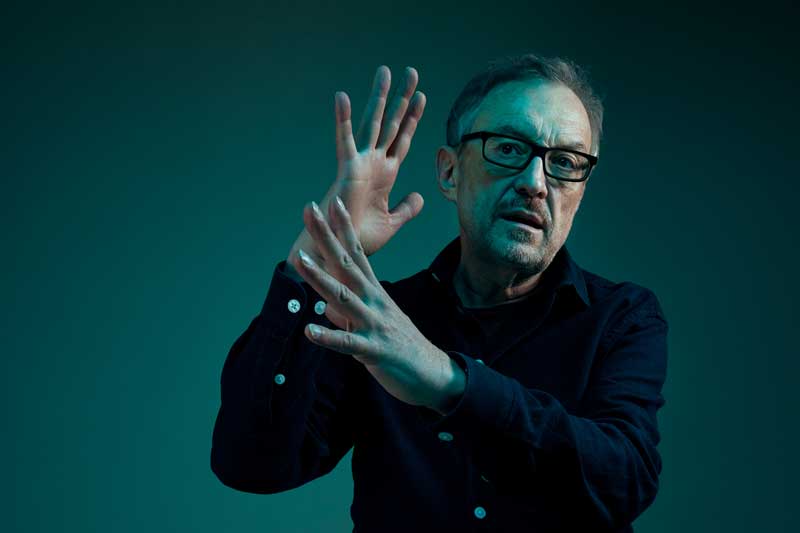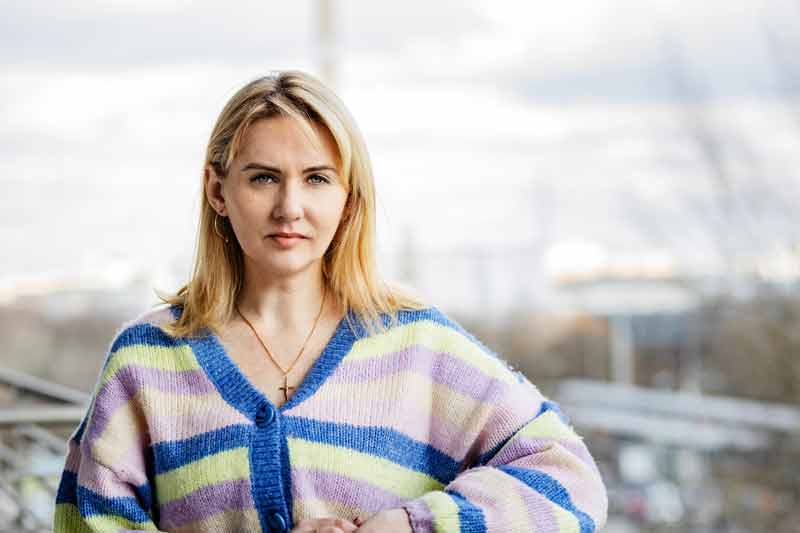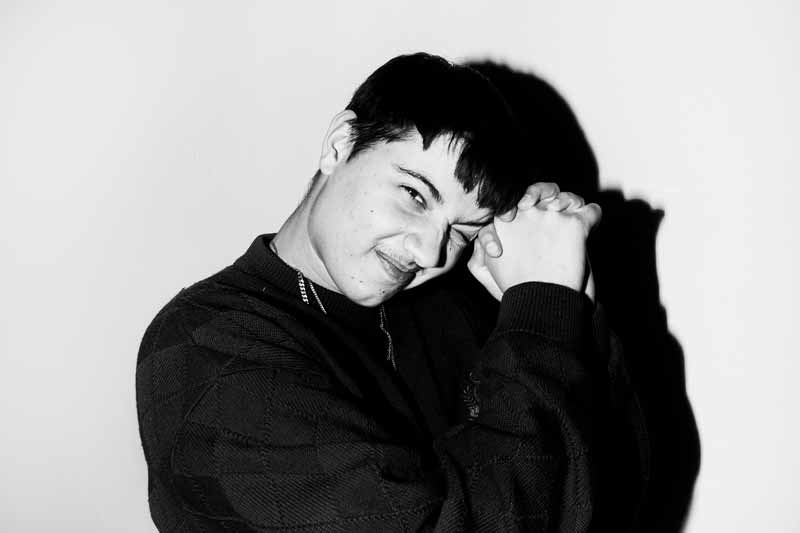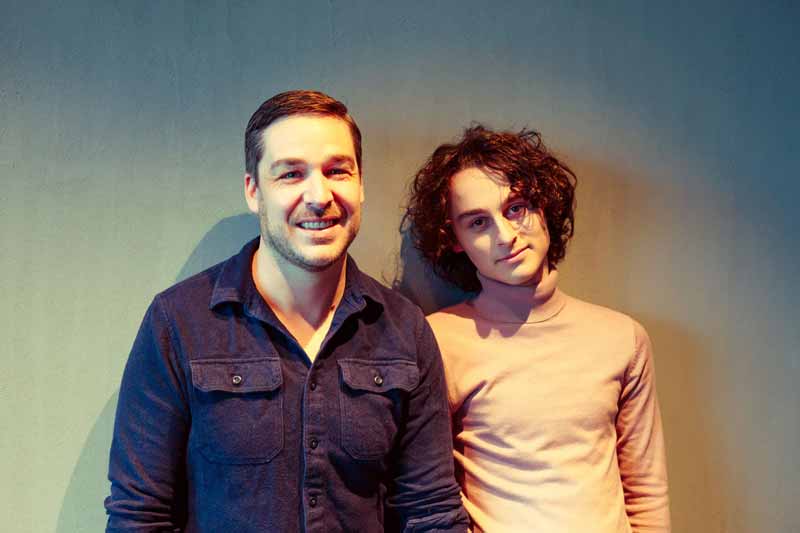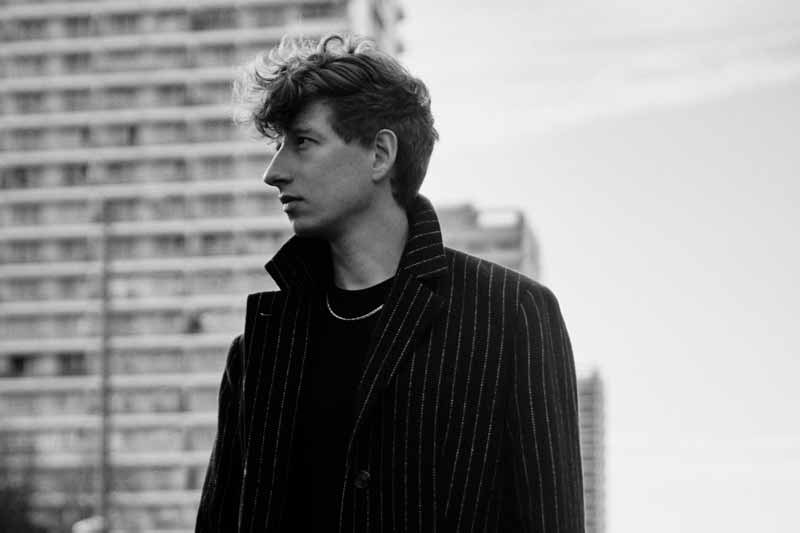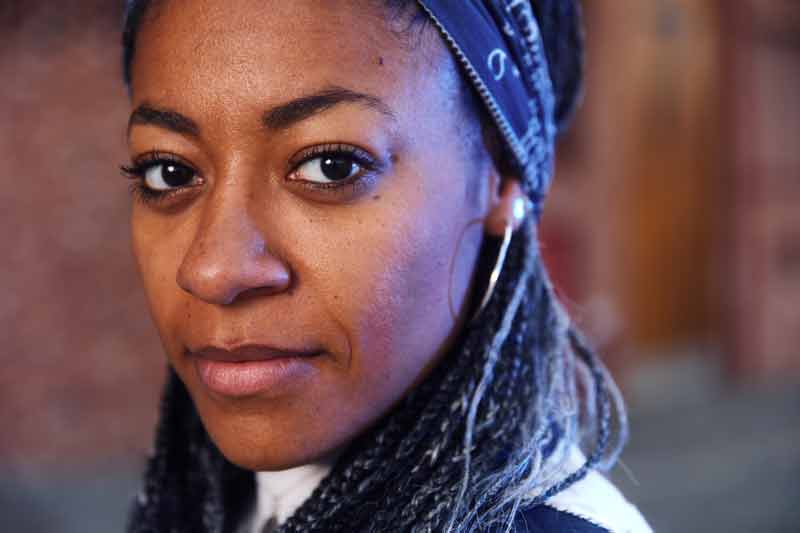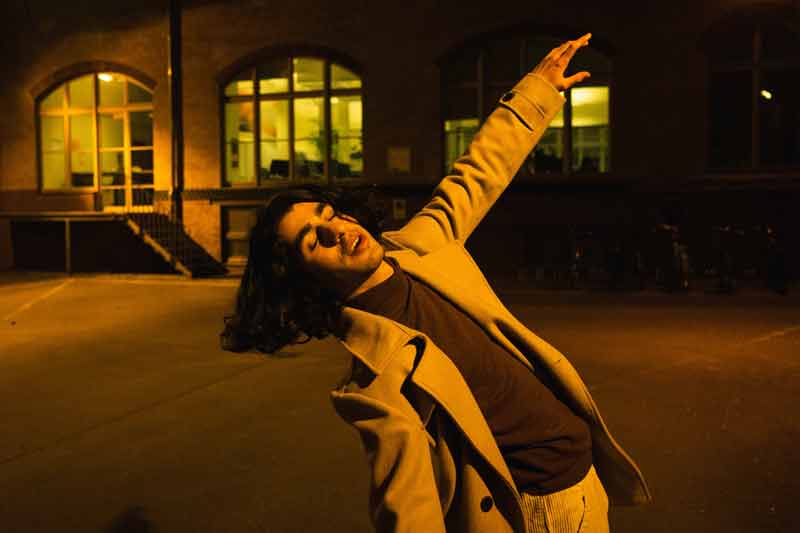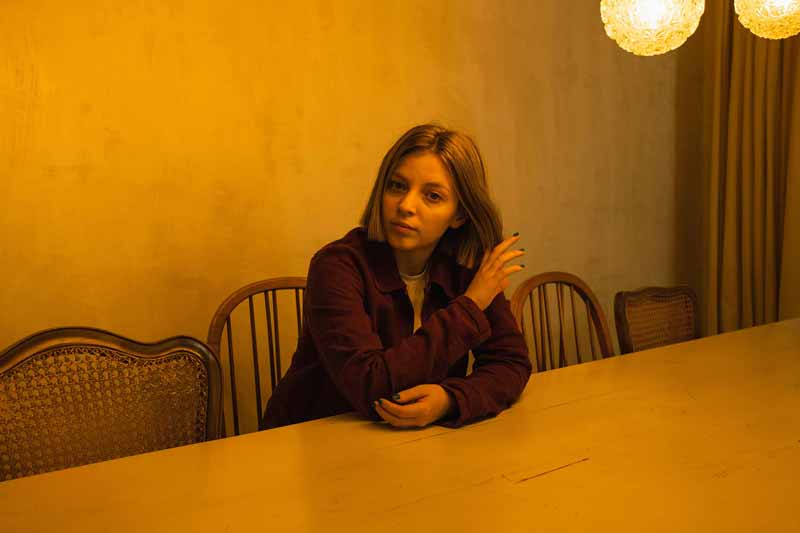Josef Hader
Interview — Josef Hader
»Bei alten weißen Männern gibt’s oft kein Happy End«
Ein alter weißer Mann, der im Suff das Leben und die Welt bejammert: Mit »Hader On Ice« ist der österreichische Kabarettist Josef Hader seit Anfang des Jahres wieder mit einem eigenen Bühnenprogramm unterwegs. Im Interview erklärt er, warum ihn graue Herren nerven, was Jörg Haider posthum im Teleshop zu suchen hat und wieso Europa ein Konstrukt ist, zu dem man keine rein enthusiastische Beziehung haben kann.
26. März 2022 — Interview: Jonas Meyer, Fotografie: Maximilian König
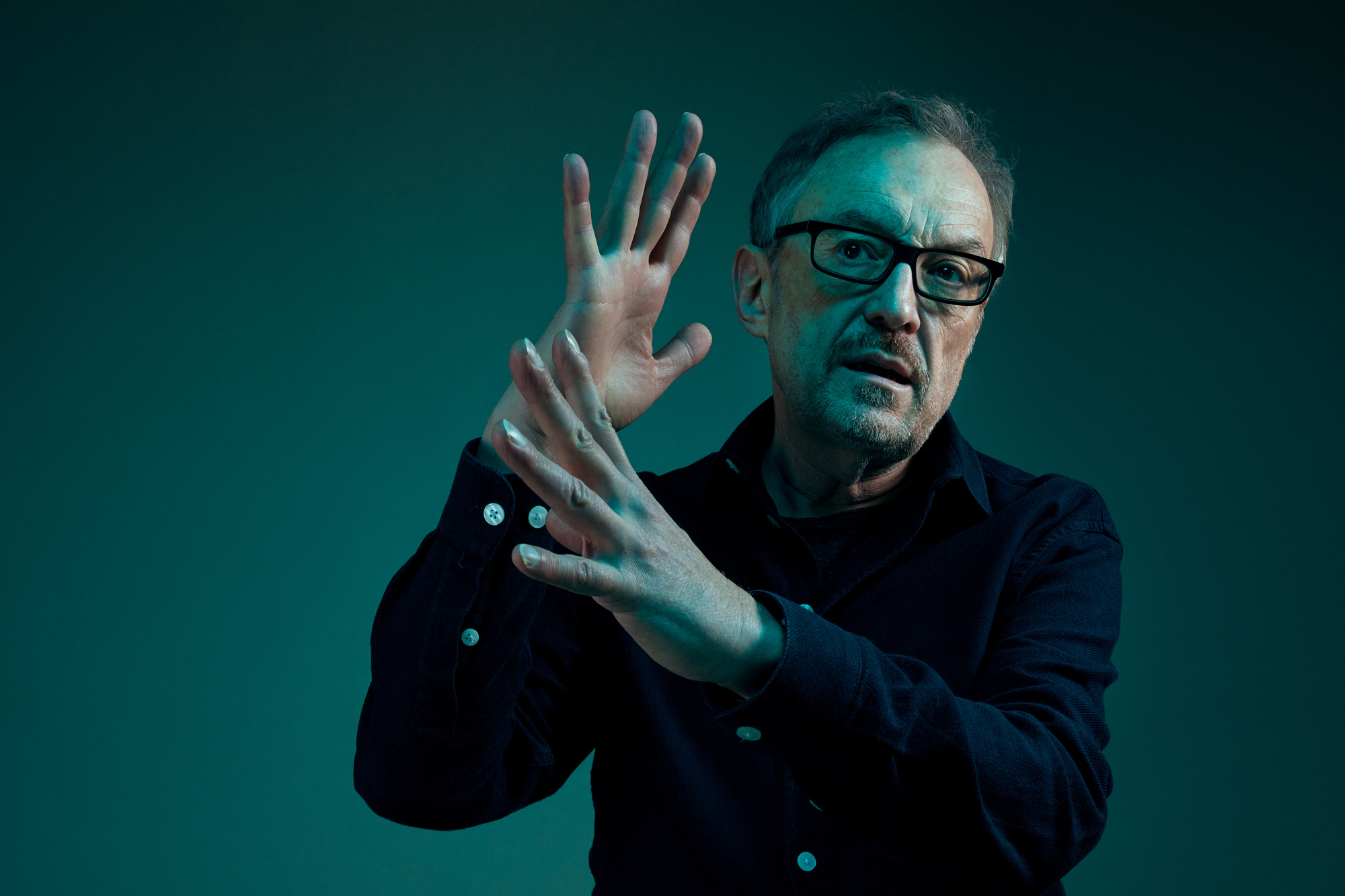
Ein bisschen Alkohol, sagt man, lockert die Zunge. Die Gedanken fließen, die Stimmung steigt, und man kann endlich sagen, was man schon immer sagen wollte. Die Konsequenzen: völlig egal. Jetzt red‘ ich! Und nach mir die Sintflut. Doch kaum setzt die Ernüchterung ein, wird vielen klar: Si tacuisses – wenn du doch geschwiegen hättest.
Den älteren Herrn, den der österreichische Kabarettist Josef Hader in seinem neuen Programm „Hader On Ice“ spielt, wird diese Erkenntnis so schnell nicht ereilen. Haders Protagonist, der mit weit aufgeknöpftem Hemd und gelb getönter Brille seiner Jugend nachzutrauern scheint, beginnt die Show bereits beschwipst, geht noch angeheiterter in die Pause und beendet den Abend mit ordentlich Promille im Blut. Der beste und wahrscheinlich einzige Freund an seiner Seite ist dabei ein edler Rum, nachhaltig erzeugt und mit dem Segelboot nach Europa verschifft. Man muss sich ja was gönnen.
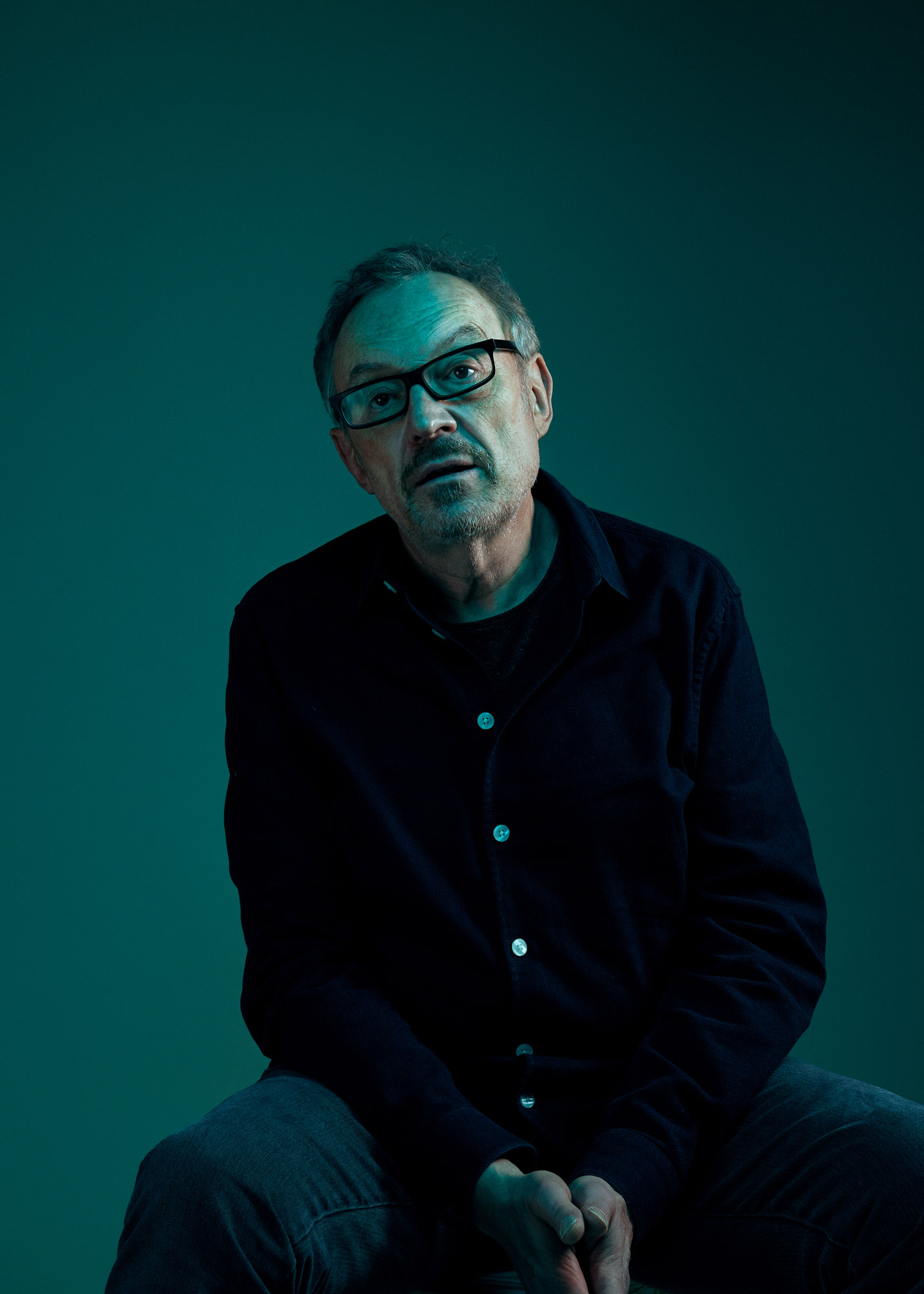
Der Herr, so merkt man schnell, hat Redebedarf. Und zwar großen. Mit seinen Ausführungen, die der zwei Stunden lang über das Publikum ergießt, streift er inhaltlich so ziemlich alles, an dem man sich heutzutage stoßen kann – zumindest, wenn man als „alter weißer Mann“, wie Josef Hader gerne sagt, die Welt betrachtet. Und einfach ignoriert, was man nicht begreifen will.
Damit ist diese Figur so ziemlich das Gegenteil ihres Erschaffers. Hader, Jahrgang 1962, beobachtet seit vielen Jahrzehnten akribisch die Gesellschaft und genießt es, deren Eigenarten, Skurrilitäten und Schrulligkeiten zu sezieren – mal als Schauspieler, mal als Regisseur, mal als Kabarettist. Mit „Hader On Ice“ hat er nach etlichen Jahren wieder ein eigenes Bühnenprogramm aufgelegt, mit dem er aktuell auf Tour ist – und das ihm prompt den Deutschen und Österreichischen Kabarettpreis 2022 eingebracht hat.
Am Morgen nach seinem Auftritt im Berliner „Babylon“ und wenige Tage vor seinem 60. Geburtstag haben wir ihn zum Gespräch getroffen.
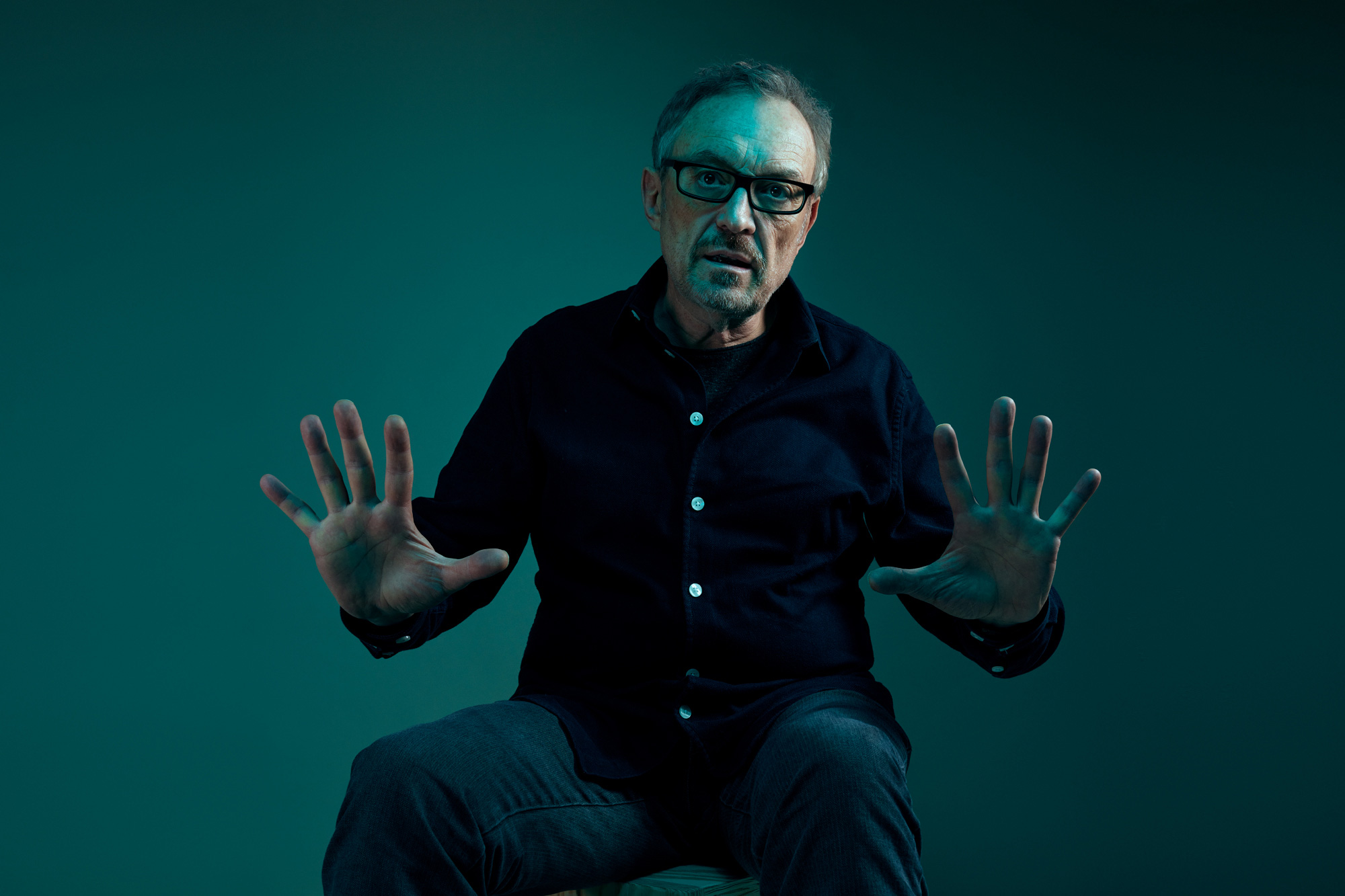
»Jemand wie Strache inspiriert mich nicht.«
MYP Magazine:
Herr Hader, wir haben gestern Abend in Ihrer Show ein neues Wort gelernt: Reparaturseidl. Klären Sie uns auf, was ist das?
Josef Hader:
In Österreich meint man mit Seidl ein kleines Bier, etwa 0,3 Liter. Und ein Reparaturseidl ist ein Bier, das man an einem verkaterten Morgen zu sich nimmt. In Deutschland würde man Konterbier sagen.
MYP Magazine:
Seit 2019 kennen wir noch eine weitere österreichische Redewendung: „a besoffene G’schicht“. Mit diesen Worten hatte Hans-Christian Strache versucht, seine Ausfälle im legendären Ibiza-Video zu entschuldigen. Hat Sie das zu Ihrem neuen Programm inspiriert?
Josef Hader:
Nein, jemand wie Strache inspiriert mich nicht. Ich habe mit dem Schreiben des Programms begonnen, als gerade die Ära Trump auf dem Höhepunkt war. Ich hatte das Gefühl, dass man gegen so jemanden mit moralischem Kabarett nichts ausrichten kann, daher habe ich so eine Person wie Trump einfach auf die Bühne gestellt – aber als mich selbst: als einen Josef Hader, der offenbar eine schlimme Entwicklung genommen hat.
Eine andere Inspiration war Dean Martin. Der war auch ein alter weißer Mann, aber ziemlich charmant dabei. Und das wollte ich natürlich auch sein, sonst rennen mir ja die Leute aus der Vorstellung. Dean Martin war einer der letzten, die auf der Bühne das gute alte Stilmittel des drunken act eingesetzt haben. Dabei geht es darum, dem Publikum eine leichte Betrunkenheit vorzutäuschen und damit den Spielraum zu erweitern: Man kann Dinge sagen, die sich sonst eher verbieten würden.
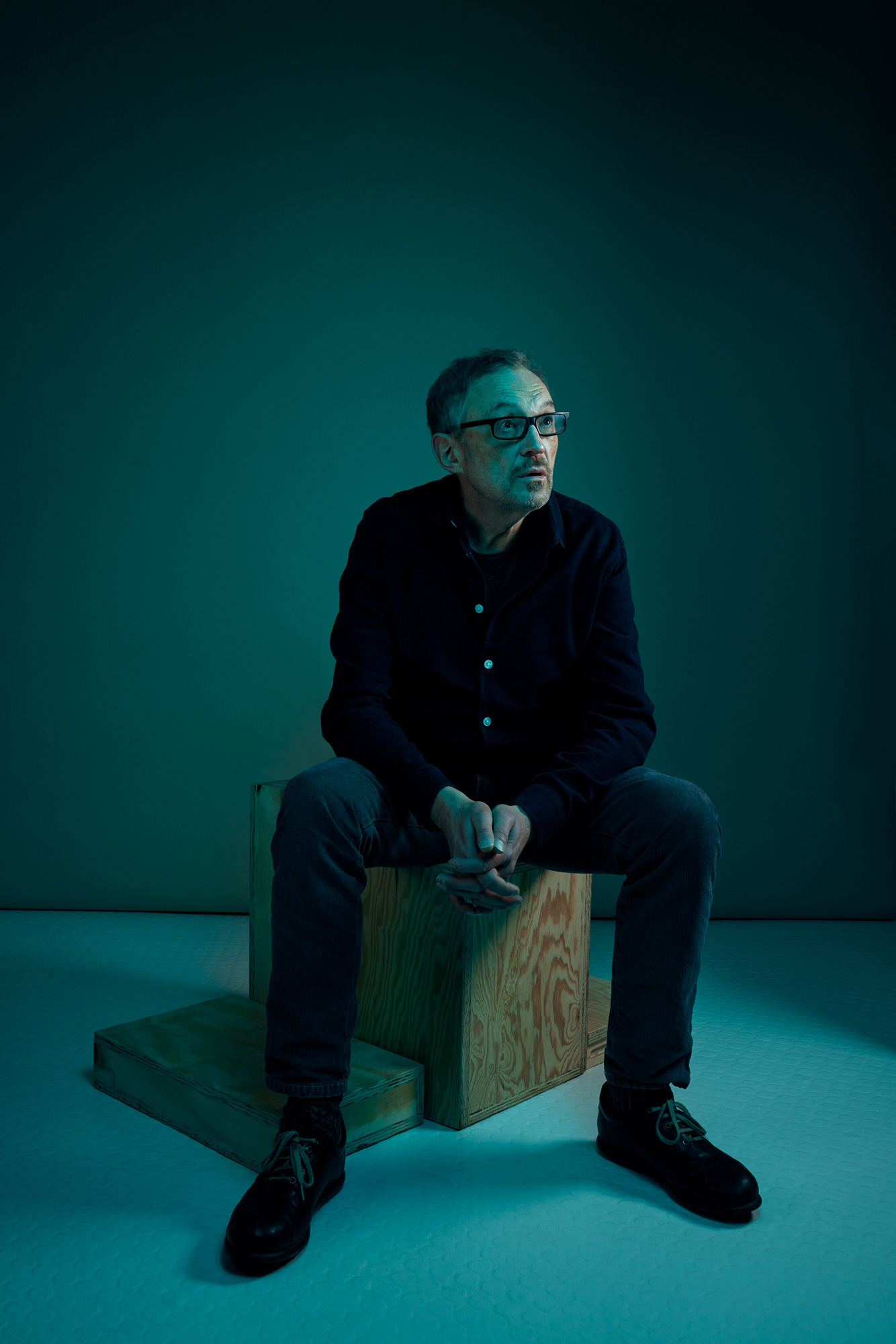
»Einem Betrunkenen verzeiht man bestimmte Grenzverletzungen.«
MYP Magazine:
Sie spielen einen beschwipsten Herrn Ende 50. Glaubt man einem alten Sprichwort, sagen Kinder und Betrunkene immer die Wahrheit.
Josef Hader:
Vielleicht kann man die bittere Wahrheit tatsächlich leichter nehmen, wenn sie von einem Kind oder einem Betrunkenen ausgesprochen wird. Zumindest wird in beiden Fällen das Gesagte eher toleriert. Das ist auch der Gedanke hinter dem drunken act. Entstanden ist diese Form der Comedy um 1900 in den USA, inmitten einer äußerst regressiven Gesellschaft, in der man auf der Bühne noch bis in die 1950er Jahre nicht alles sagen konnte, was man sagen wollte. Wichtig beim drunken act ist, nie wirklich betrunken zu sein, weil man die Leichtigkeit beherrschen muss. Dean Martin war da ein Großmeister. Leider hat es später mit ihm ein schlimmes Ende genommen, durch Rauchen und Trinken – wie bei vielen alten weißen Männern.
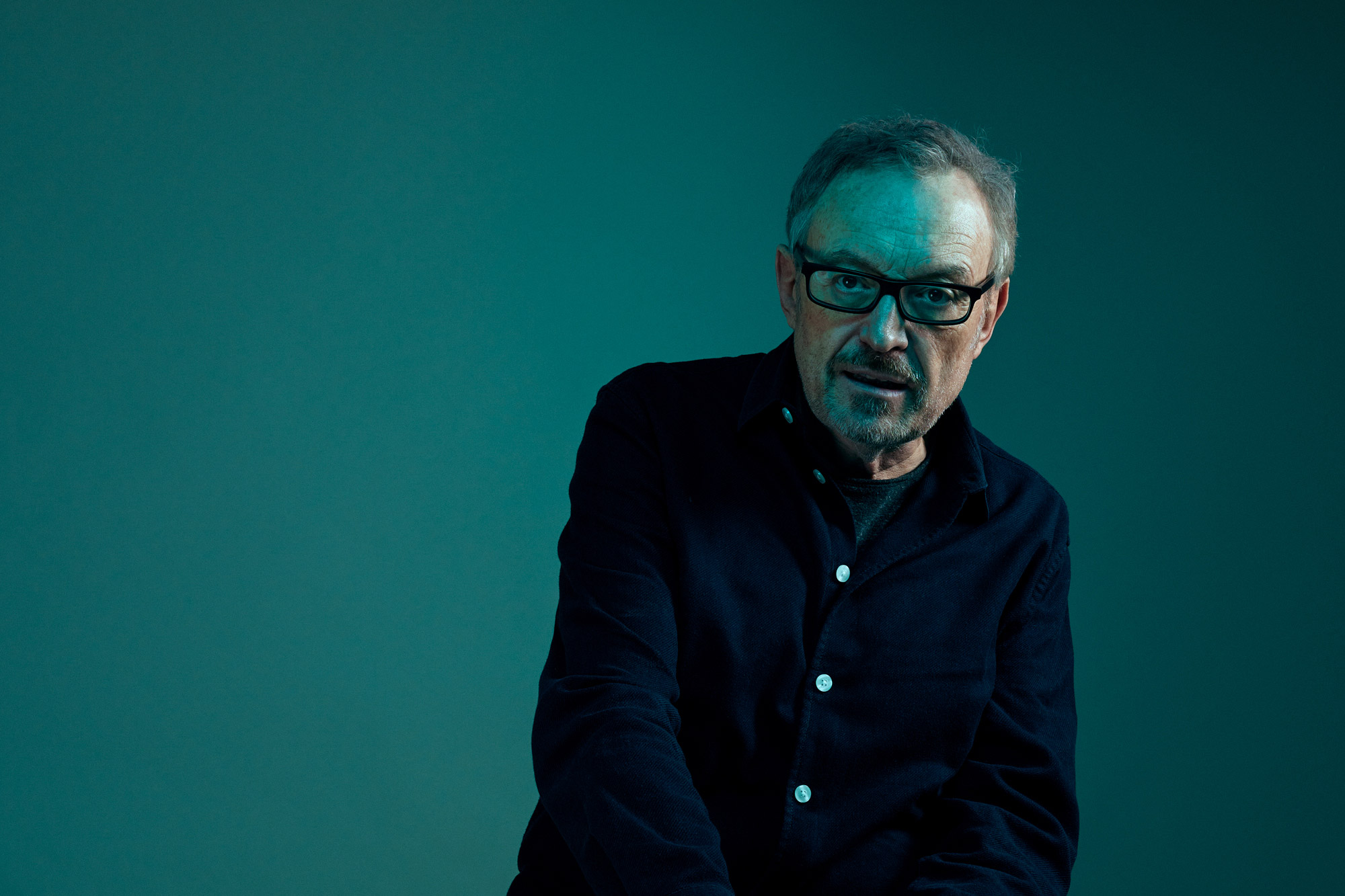
»Alkohol ist kein guter Freund, wenn es einem richtig schlecht geht.«
MYP Magazine:
Ihr Protagonist versteht die Welt und unsere Zeit nicht mehr. Also greift er zur Flasche. Sind manche Zustände nur noch im Suff zu ertragen? Man denke nur an die DDR, die in den Jahren vor dem Mauerfall den höchsten Spirituosenverbrauch der Welt hatte.
Josef Hader:
Hm, ich trinke jetzt erst mal einen Kaffee. Das ist eine so schwierige Frage, da muss ich mir kurz eine Auszeit nehmen.
Josef Hader lacht, steht auf und bedient sich an der Kaffeemaschine. Dann kommt er zurück.
Ich denke, dass Alkohol kein guter Freund ist, wenn es einem richtig schlecht geht. Aber für alle Zustände der Wehleidigkeit und des Jammerns auf hohem Niveau ist er durchaus ein guter Begleiter. Ich meine damit Momente, in denen das Leid nicht existenziell ist und man sozusagen genussvoll leidet. Folgt man dieser Logik, war es damals in der DDR gar nicht so schlimm. Manche dort behaupten ja, es wäre heute schlimmer. (grinst)
MYP Magazine:
Ihre Bühnenfigur hat auch mit der jungen Generation so ihre Probleme. Aus Studien der letzten Jahre wissen wir, dass Jugendliche immer weniger Alkohol konsumieren. Ist das vielleicht der wahre Grund, warum sich Jung und Alt nicht mehr verstehen – weil sie nicht mehr auf dieselben Rauschmittel zurückgreifen?
Josef Hader:
Jung und Alt haben sich noch nie verstanden, das wäre auch ein geradezu seltsamer und absurder Zustand. Die Jungen versuchen immer, sich von den Älteren abzuheben. Das heißt für unsere Zeit: Wenn die letzte Generation so eine richtige Säufergeneration war, bleibt für die Jungen als einzige Distanzierungsmethode, wesentlich weniger zu trinken.
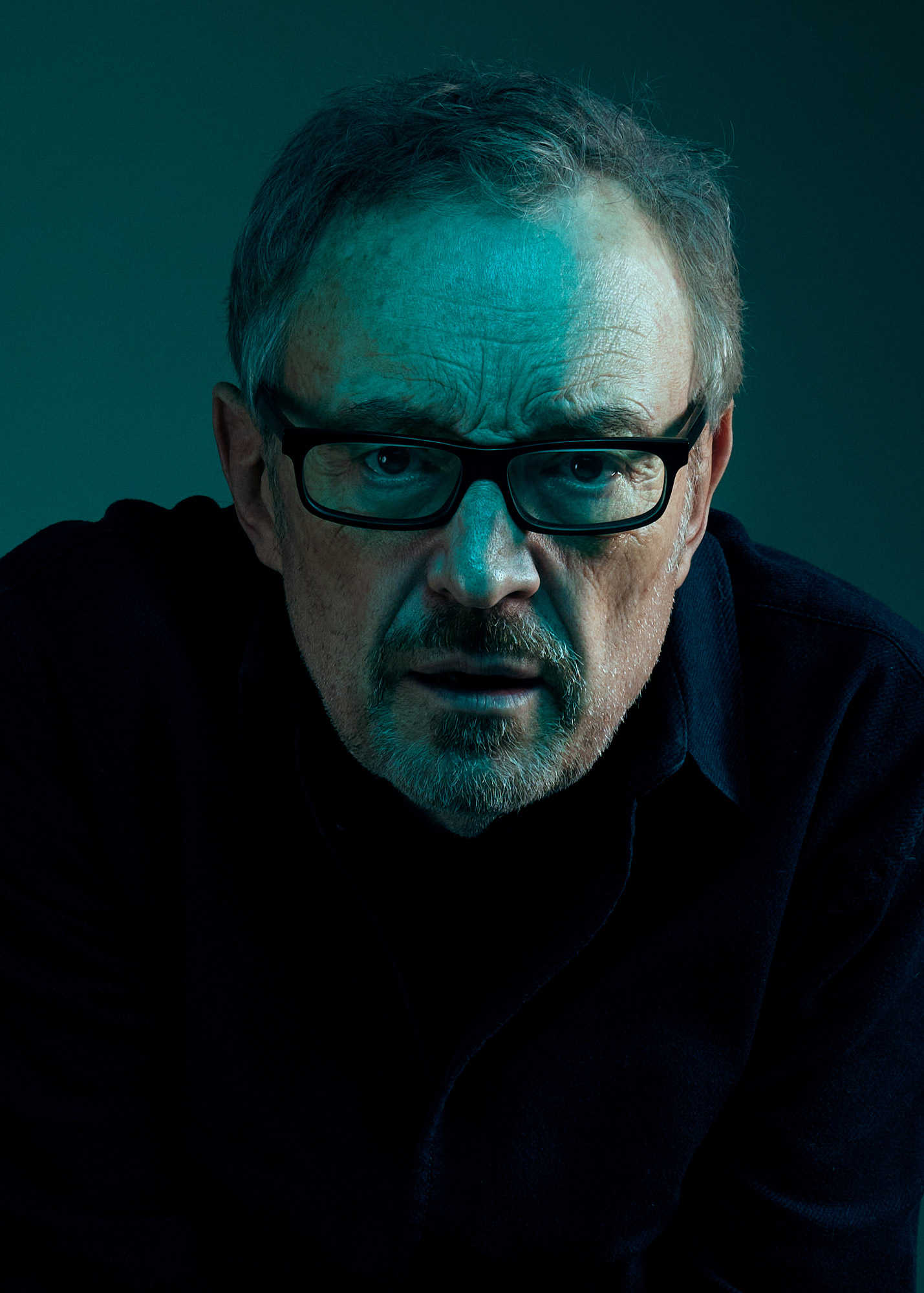
»Das Testosteron lässt nach und die Angst nimmt zu.«
MYP Magazine:
Im Film „Nevrland“ aus dem Jahr 2019 spielen Sie den Vater eines unter Angststörungen leidenden Teenagers. Der Vater ist absolut unfähig, eine gewisse Empathie für die Gefühlslage seines Sohnes zu entwickeln. Sehen Sie dieses Problem auch in der Realität? Gibt es ein emotionales Gap zwischen den Generationen?
Josef Hader:
Ja, aber auch das war schon immer so. Jede Generation versucht doch, nicht die Fehler zu wiederholen, die sie von der vorangegangenen erlitten hat. Aber dafür macht sie wieder eigene Fehler. Kinder, die nicht in der Lage sind, sich irgendwann mal von ihren Eltern zu distanzieren, werden keine glücklichen Menschen. Die alte Generation muss das aushalten und soll nicht so rumjammern.
Überhaupt dieses Rumjammern! Etwa darüber, dass man nicht mehr Zigeunersauce sagen darf. Das ist so seltsam und weltfremd. Gerade als älterer Mensch – ich selbst werde bald 60 – hat man doch einen gewissen Überblick und weiß, dass sich Sprache ständig ändert und das etwas völlig Natürliches ist. Man weiß doch, dass man selbst damals Dinge anders gesagt hat als die Elterngeneration und die das scheiße fand.
Ich frage mich immer, warum dieselben Leute, die auch mal jung waren und gewusst haben, wie alte Leute ticken, heute wollen, dass die Welt so bleibt, wie sie ist. Warum sie dieses wertvolle Wissen aus der Jugend nicht konserviert haben, um es jetzt im Alter nutzbar zu machen und zu sagen: So ein Trottel möcht‘ ich nicht werden. Es passiert leider nicht. Vielleicht hat das hormonelle Gründe. Das Testosteron lässt nach und die Angst nimmt zu – vor der Welt und vor der Zukunft. Das ist eh eine interessante Sache: dass die Leute, die am wenigsten Zukunft haben, nämlich die Alten, am meisten Angst vor ihr haben. Das ist in meinen Augen nur mit Testosteronmangel erklärbar.
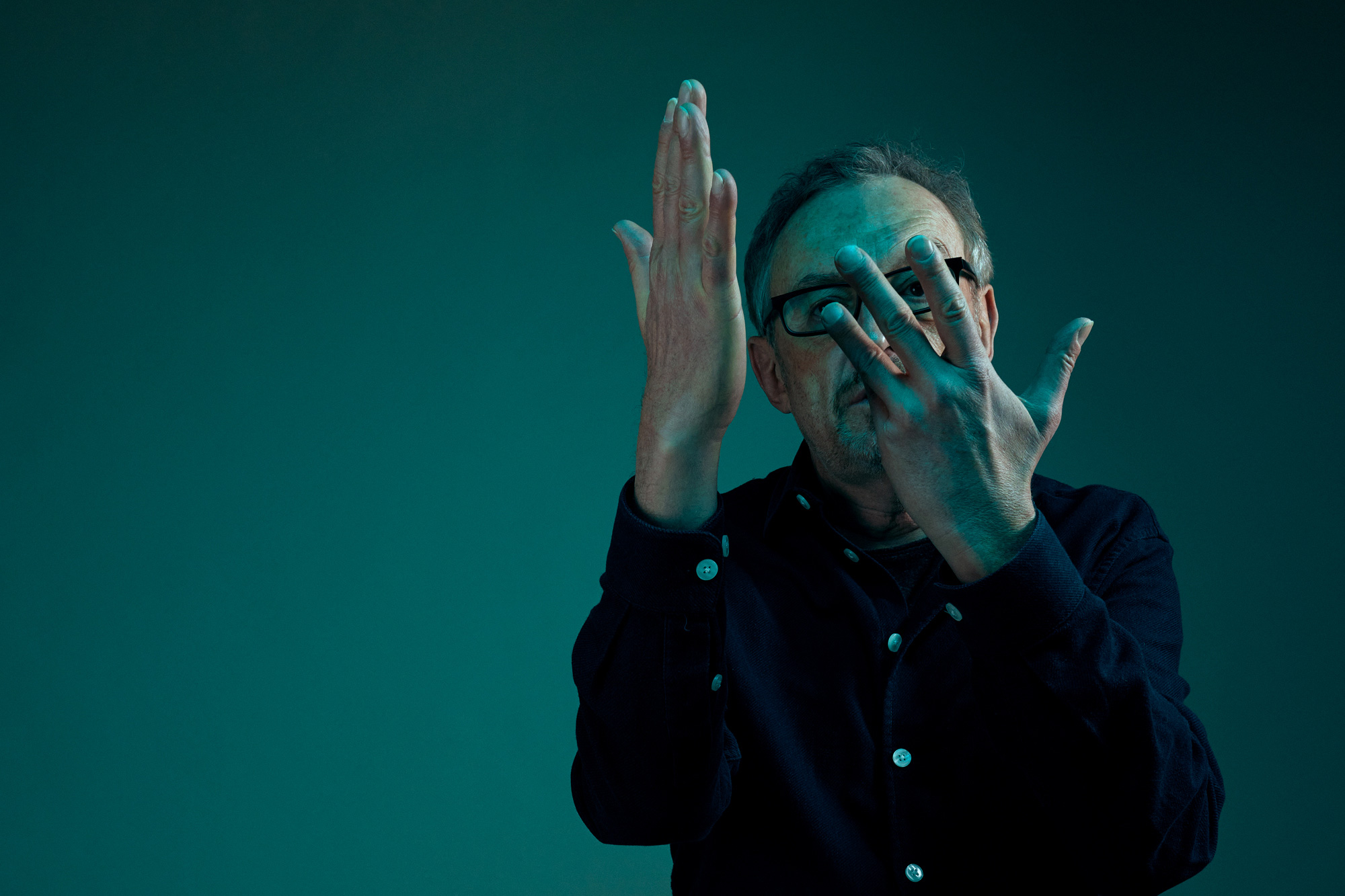
»Jeder, der einen Beruf ergreift, in dem er allein auf der Bühne steht, hat einen kleinen Sozialdefekt.«
MYP Magazine:
In Ihrem Film „Wilde Maus“, in dem Sie die Rolle des arbeitslosen Musikkritikers Georg spielen, gibt es eine Szene, in der Sie zuhause auf der Couch sitzen und sagen: „Seit ich auf der Welt bin, sind andere Menschen für mich wie Außerirdische. Ich weiß nicht, wie sie funktionieren. Ich fühle mich wie eine Insel, wo rundherum Wasser ist, und keiner kann mir helfen.“ Wieviel Ihrer eigenen Persönlichkeit steckt in Georgs Worten?
Josef Hader:
Generell hat jeder, der einen Beruf ergreift, in dem er allein auf der Bühne steht und mit dem Publikum redet, einen kleinen Sozialdefekt, gepaart mit ordentlich Narzissmus. Da bin ich keine Ausnahme.
MYP Magazine:
Haben Sie eine Vermutung, wie es bei Ihnen zu diesem Sozialdefekt kam?
Josef Hader:
Ich bin als Kind auf dem Bauernhof meiner Großeltern aufgewachsen. In der Nachbarschaft gab es keine anderen Kinder. Und so etwas wie einen Kindergarten hatte man damals auch noch nicht. Ich hatte also bis zu meinem sechsten Lebensjahr kaum Kontakt zu Gleichaltrigen – bis dann der Schock der Grundschule über mich hereinbrach. In den ersten Jahren dort hatte ich tatsächlich das Gefühl, um mich herum seien lauter Außerirdische.
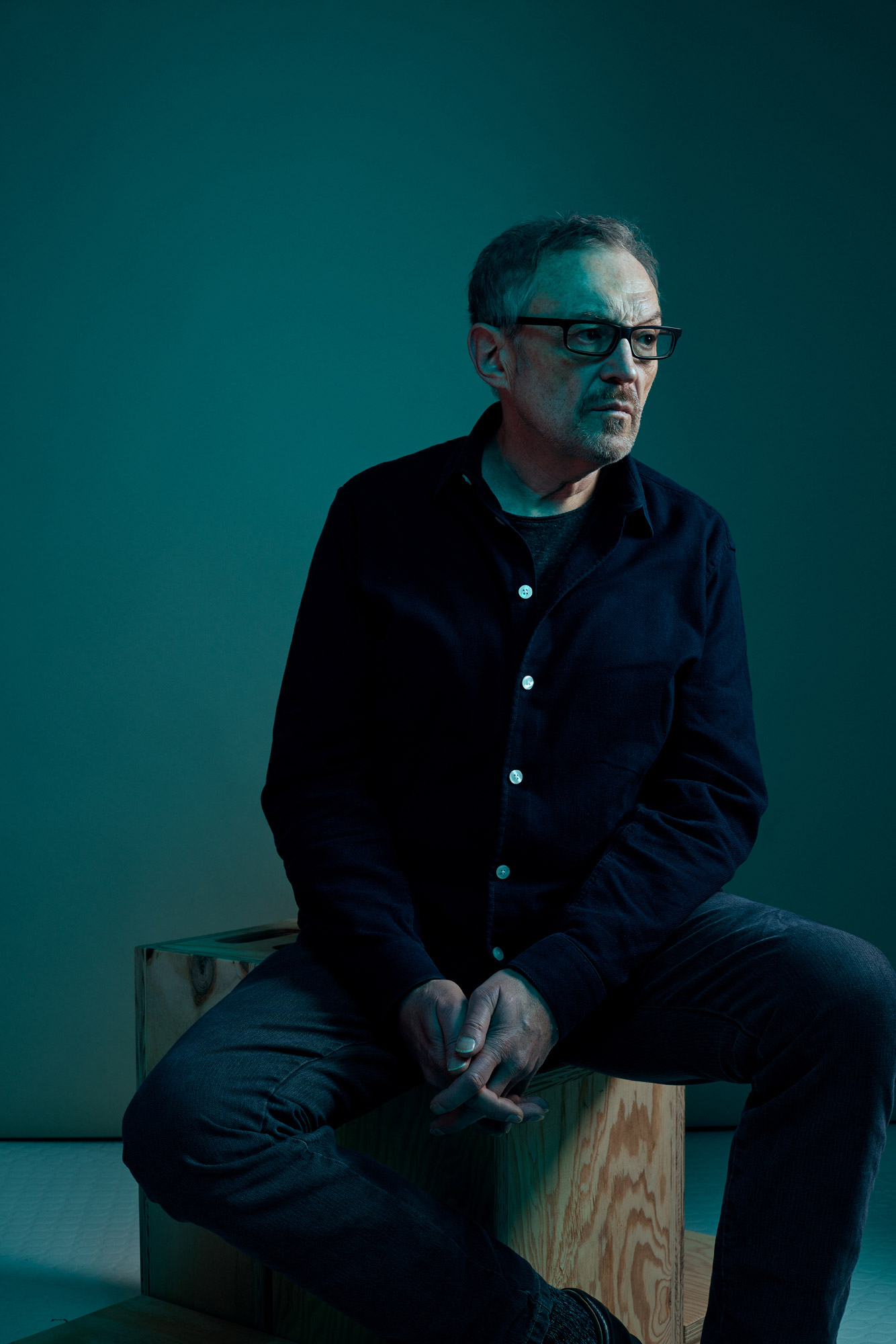
»Ich mag Städte, in denen das Fortschrittstempo nicht ganz so hoch ist.«
MYP Magazine:
Sie haben Ihre Heimatstadt Wien mal als einen Ort bezeichnet, an dem sich so wenig tue und von dem so wenig Aufbruch in irgendeine Richtung ausgehe, dass man weder ablehnen noch zustimmen könne. Warum kehren Sie der Stadt nicht den Rücken? Oder steigen zumindest öfter in den Nachtzug nach Rom, wie Sie dem Tagesspiegel verraten haben?
Josef Hader:
Naja, auch in Rom tut sich nicht viel, zumindest nicht, wenn man New York oder Berlin als Maßstab nimmt. Aber das ist auch ok so. Ich mag Städte, in denen das Fortschrittstempo nicht ganz so hoch ist. Städte, in denen man nicht ständig Angst haben muss, dass der eigene Bezirk gentrifiziert wird, die Mieten um das Fünffache steigen und alle alten Geschäfte durch irgendwelche Boutiquen und Nachtbars ersetzt werden. Für mich ist Wien wie ein stilles, tiefes Gewässer, in dem seltsame Wesen mit Tentakeln leben, die anderswo von der Strömung abgerissen werden würden. Berlin dagegen ist wie ein schneller, flacher Bach, in dem man stromlinienförmig gestylt sein muss, um sich zu halten.
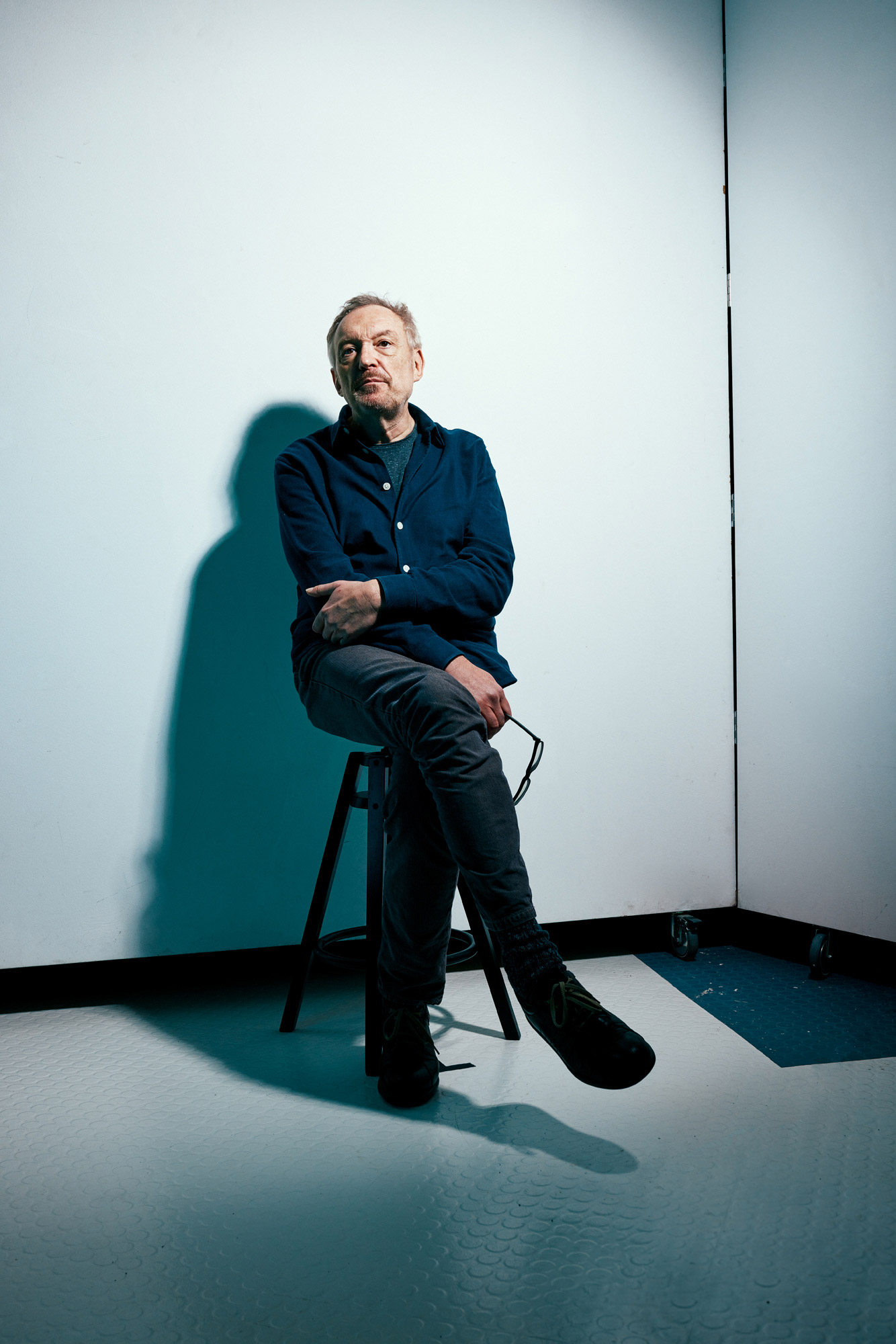
»Es gibt nichts Internationaleres als Provinz.«
MYP Magazine:
In Ihrem aktuellen Programm geht es neben Wien auch immer wieder um das Weinviertel. Diese eher landwirtschaftlich geprägte Region im äußersten Nordosten Österreichs wird von Ihrem Protagonisten als ausgesprochen provinziell dargestellt. Darauf könnte man mit einem Zitat antworten, das Manfred Rommel zugeschrieben wird: „Provinz ist kein Ort, sondern eine Geisteshaltung.“
Josef Hader:
Der Kabarettist Sigi Zimmerschied hat schon 20 Jahre zuvor gesagt, dass Provinz kein geografischer Begriff sei. Und das stimmt auch. Mein Protagonist spielt eher darauf an, dass es auf dem Land andere Regeln und Gewohnheiten gibt als in der Großstadt. Und das gilt nicht nur für Österreich. Wenn ich beispielsweise in deutschen oder italienischen Dörfern unterwegs bin, merke ich immer wieder, dass es auf dem Land stets dieselben Regeln gibt: wie man sich verhält, wie man grüßt, wie man miteinander umgeht. Es gibt nichts Internationaleres als Provinz.
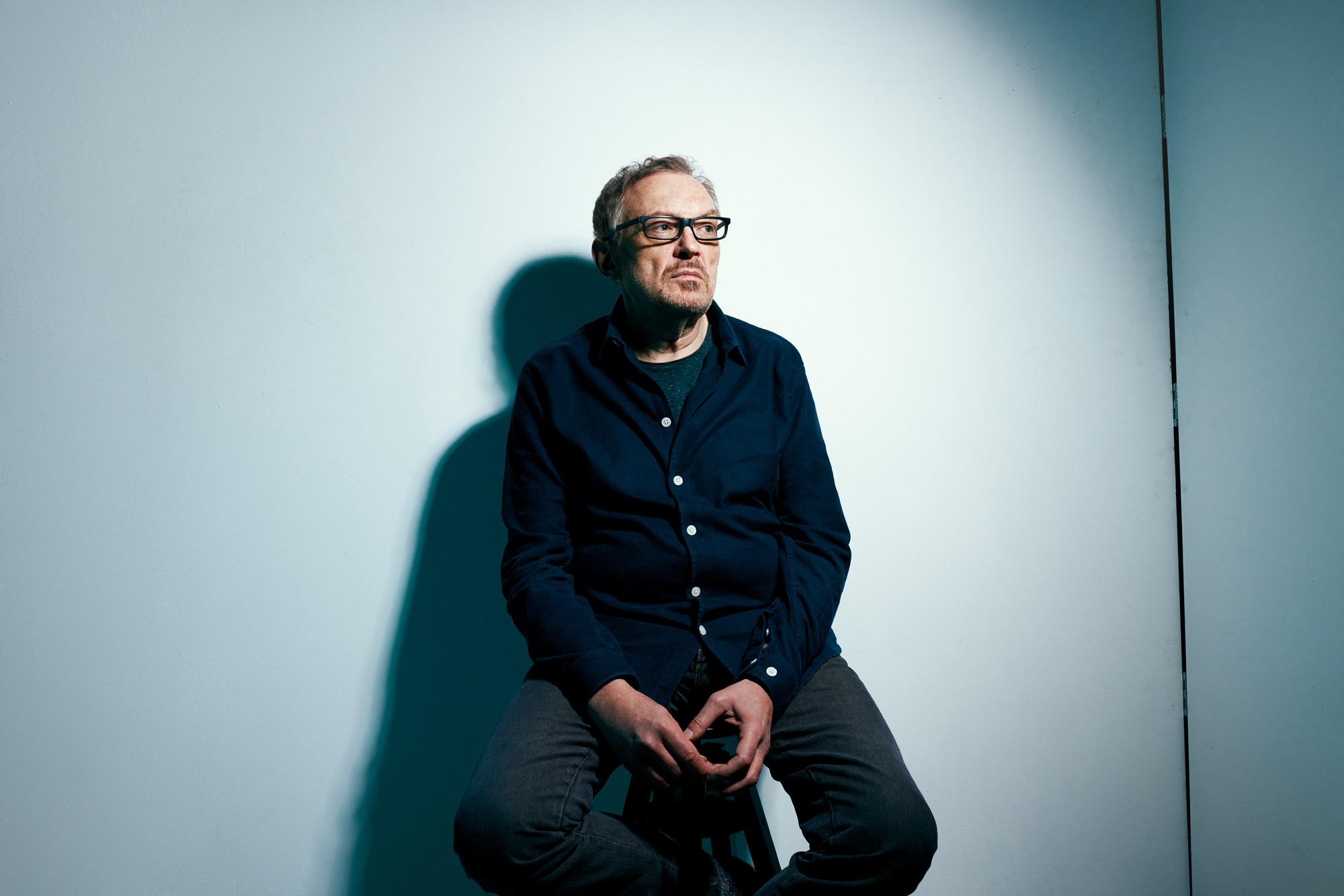
»Durch die 68er-Bewegung konnte das, was wir heute liberale Demokratie nennen, überhaupt erst entstehen.«
MYP Magazine:
Sie beobachten unsere Gesellschaft seit vielen Jahrzehnten sehr genau. Haben Sie den Eindruck, dass wir eher provinzieller statt progressiver geworden sind in unserer Weltanschauung und Moral?
Josef Hader:
Als Küchenhistoriker könnte ich die Theorie aufstellen, dass das Pendel kontinuierlich hin- und herschwingt, weil sich aufeinanderfolgende Generationen immer aneinander reiben. So folgten beispielsweise auf die dunkle Nazizeit und die piefigen Nachkriegsjahre der Rock’n’Roll und schließlich die 68er-Bewegung, durch die das, was wir heute liberale Demokratie nennen, überhaupt erst entstehen konnte. Und aktuell gibt es dazu wieder eine entsprechende Gegenbewegung, die glaubt, dass liberale Demokratie scheiße ist. Ich hoffe, dass diese Leute in der Minderheit bleiben.
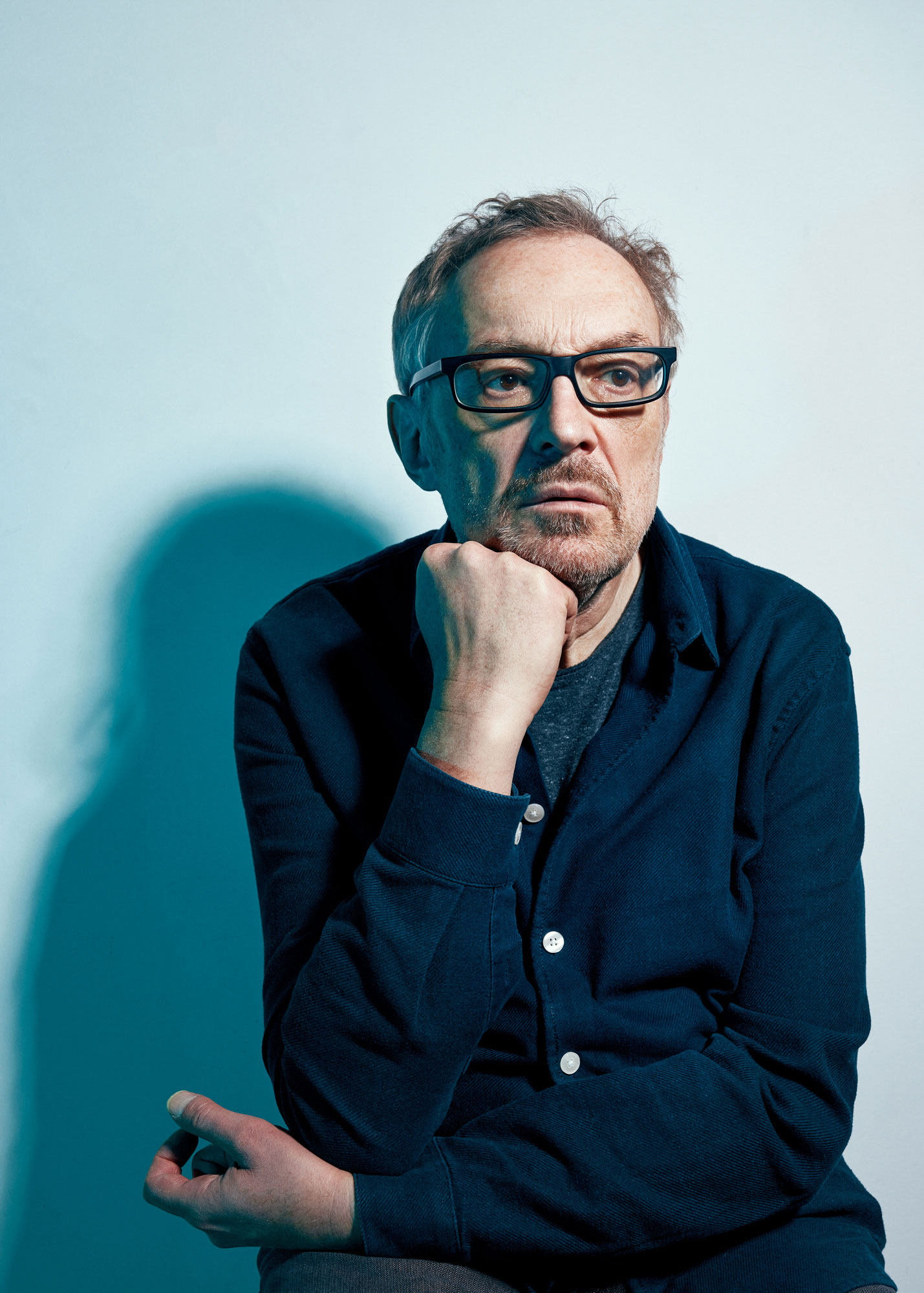
»Österreich ist schon ein besonders abgründiges Land – das sage ich auch mit einem gewissen Stolz.«
MYP Magazine:
In vielen Interviews mit Ihnen hat man den Eindruck, Sie müssten uns Deutschen ständig die Politik Österreichs erklären, insbesondere wenn das Pendel mal wieder nach rechts schwingt.
Josef Hader:
Das liegt an den Fragen. Ich werde da oft als Ethnologe verwendet, dagegen kann man nichts machen.
MYP Magazine:
Wäre es nicht an der Zeit, sich mit dem Problem rechten Gedankenguts auf gesamteuropäischer Ebene auseinanderzusetzen, statt sich nur an den Skurrilitäten Österreichs abzuarbeiten?
Josef Hader:
Satire funktioniert nur, wenn sie nahe am Menschen bleibt, also beschäftige ich mich mit den Österreichern, die kenne ich am besten. Dass menschliche Schwächen keine nationalen Eigenheiten sind, ist ja eh klar. Aber es gibt auch Unterschiede, jedes europäische Land hat seine ganz eigene Geschichte. So hat beispielsweise Österreich seine Nazi-Vergangenheit kaum aufgearbeitet, während das in Deutschland sehr ausführlich passiert ist. Österreich ist schon ein besonders abgründiges Land – das sage ich auch mit einem gewissen Stolz. Dadurch haben wir immer so interessante Künstler gehabt. Und eine Form von Kabarett, die sich nicht an Politikern abarbeitet, sondern am Menschen an sich – so böse, wie das in einer Unterhaltungsform möglich ist.
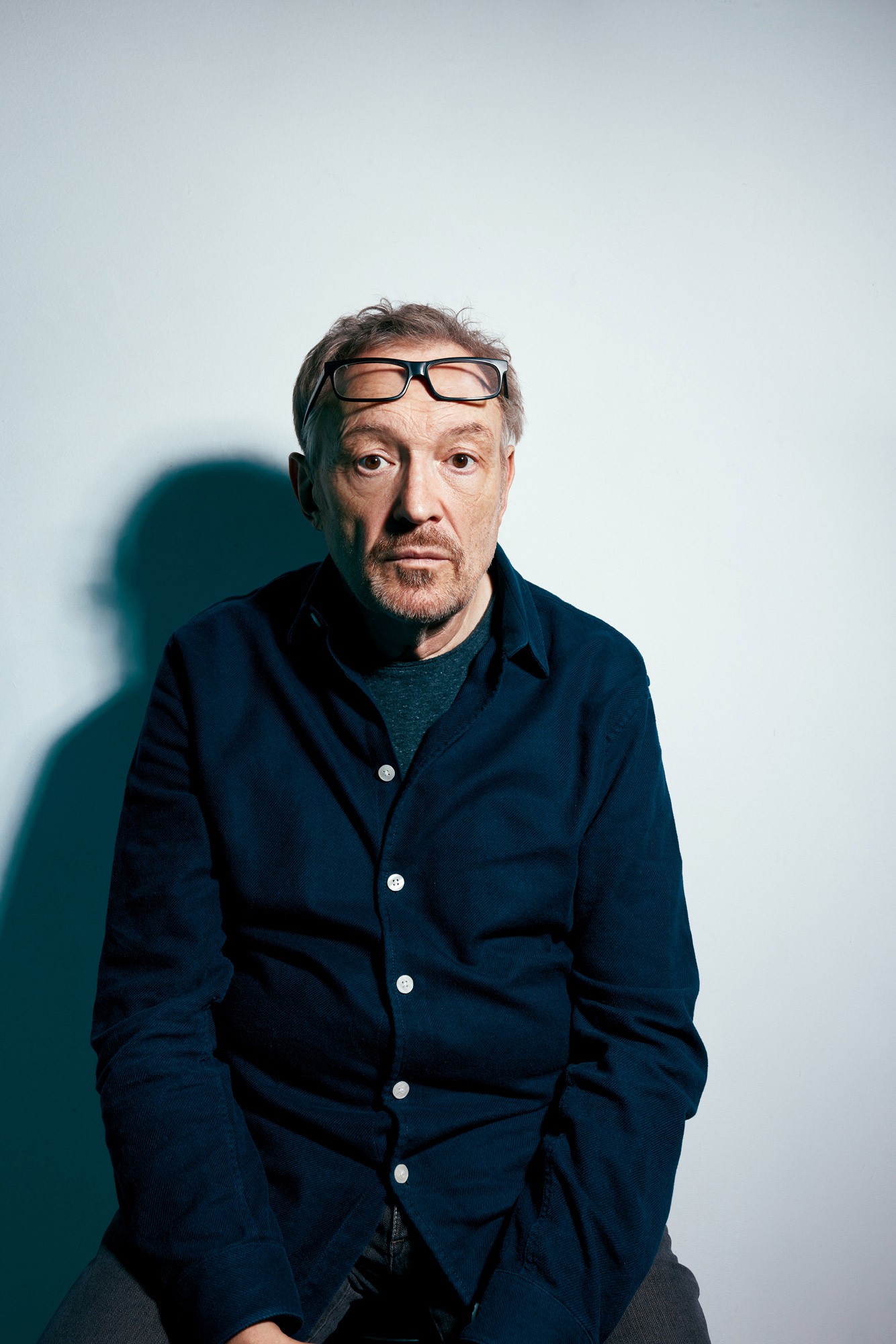
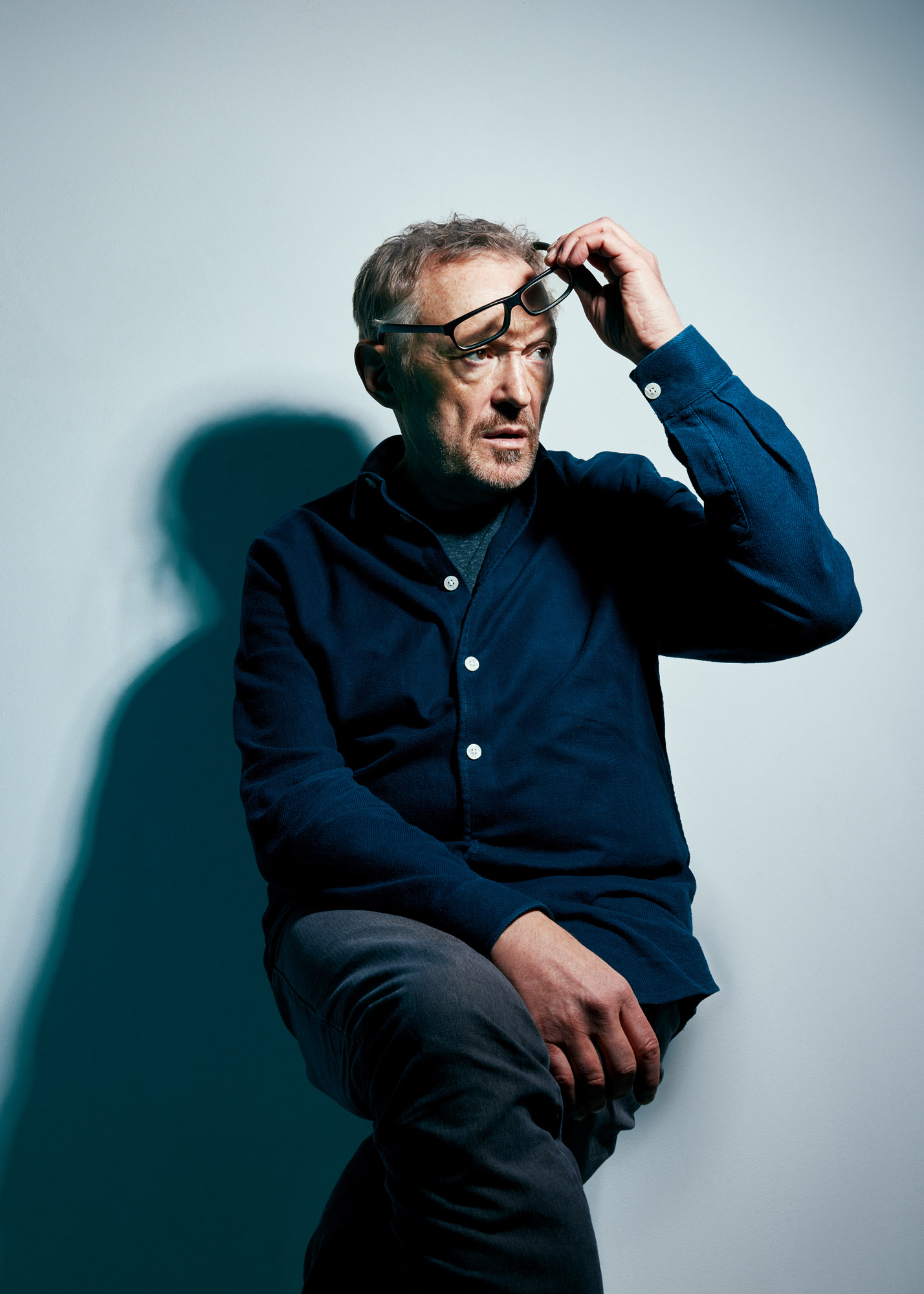
»Jörg Haider konnte auf äußerst charmante Weise richtig böse Botschaften verkaufen. Da reichen die Nachfolger nicht heran.«
MYP Magazine:
Gestatten Sie uns dennoch eine Frage zu Jörg Haider, dem ehemaligen FPÖ-Vorsitzenden und Kärntner Landeshauptmann, der 2008 tödlich verunglückt ist. Im Januar 2009 wurde über einen deutschsprachigen Teleshopping-Kanal eine CD-Kollektion mit österreichischen Volksliedern verkauft, gesungen von Haider höchstpersönlich. Angepriesen wurde dort „die weltexklusive Dr.-Jörg-Haider-in-memoriam-Collection, ein Highlight für alle Haider-Fans und Liebhaber der österreichischen Volkskultur“, moderiert vom ehemaligen RTL-Mann Walter Freiwald. Wenn es Rechtspopulisten in das Programm von Teleshopping-Sendern schaffen, ist das der Anfang vom Ende des Kapitalismus?
Josef Hader:
Nein, es ist absolut typisch für den Kapitalismus, wenn so etwas zu Geld gemacht wird. Es würde mich interessieren, welche Lieder das sind. Jörg Haider hat sehr gerne diese langsamen, melancholischen Kärntner-Lieder gesungen – er war ein sentimentaler Mensch. Der Mann konnte auf äußerst charmante Weise richtig böse Botschaften verkaufen. Da reichen die Nachfolger nicht heran, muss man sagen.
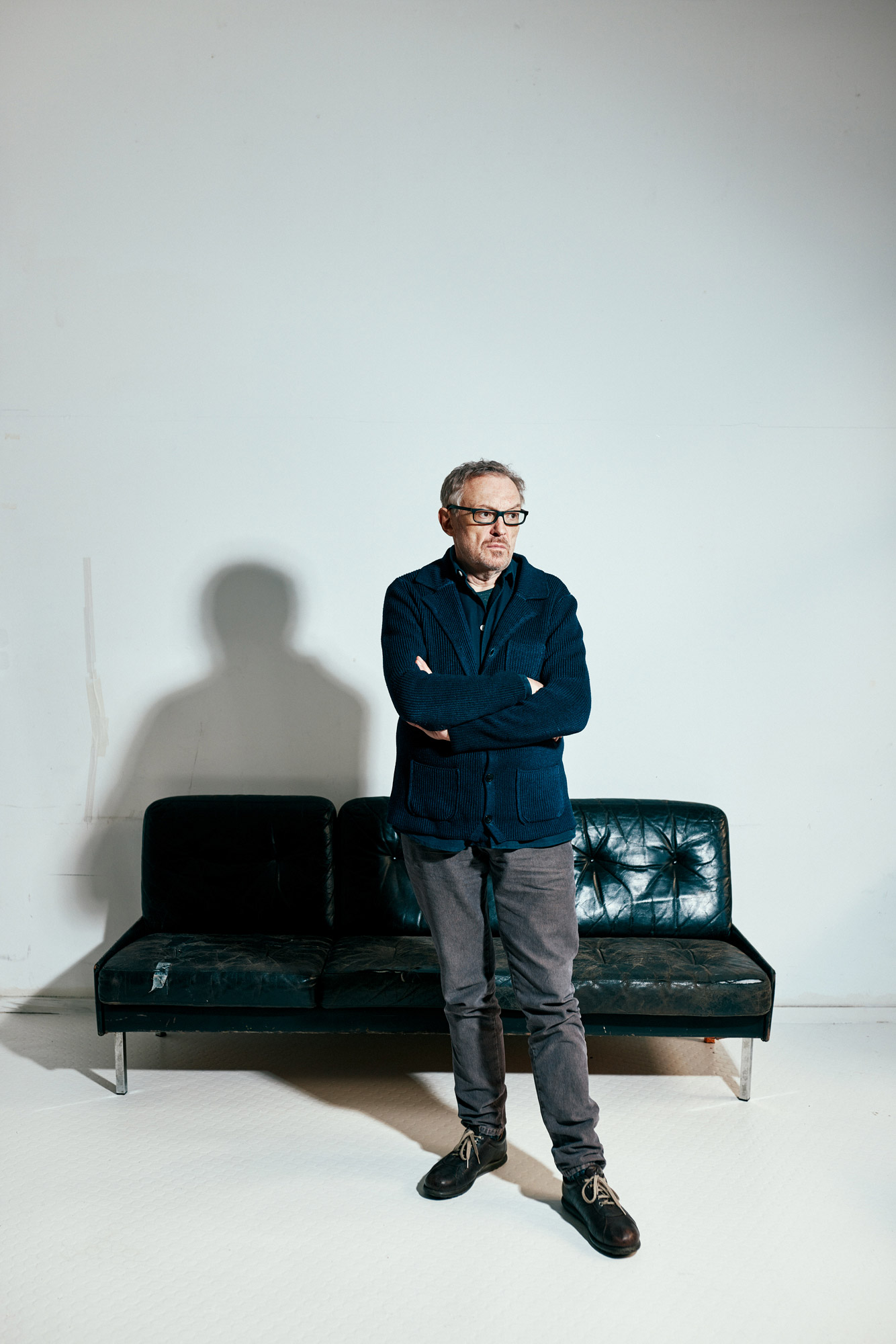
»Europa ist ein Konstrukt, zu dem man keine rein enthusiastische Beziehung haben kann.«
MYP Magazine:
Im Jahr 2016 haben Sie im Film „Vor der Morgenröte“ den jüdischen Autor Stefan Zweig gespielt, der 1934 vor den Nazis ins Ausland geflohen ist. An einer Stelle sagt Zweig: „Ich glaube an ein freies Europa. Ich glaube, dass Grenzen und Pässe eines Tages der Vergangenheit angehören.“ In Ihrem aktuellen Programm geht es unter anderem um ertrinkende Menschen im Mittelmeer sowie rechte Arme, die überall wieder nach oben zucken. Denken Sie bei diesen Bildern, die ein Symptom für den Zustand Europas im Jahr 2022 sind, oft an Stefan Zweig zurück?
Josef Hader:
Wie Stefan Zweig mag auch ich die Idee von Europa wahnsinnig gern. Ich mag es, dass all diese Länder, die früher aufeinander geschossen haben, heute etwas gemeinsam wollen und bestimmte Werte teilen. Das ist ein großer zivilisatorischer Fortschritt. Aber gleichzeitig ist es auch ein großer Schmerz, wie verlogen die Sache eigentlich ist. Wie in fulminanten Sonntagsreden betont wird, dass Europa nicht nur eine Wirtschaftsgemeinschaft, sondern auch eine Wertegemeinschaft sei. Am Ende werden diese Reden aber nur dafür benutzt, um den ganz argen Ausreißern eine Moralpredigt zu halten. Und meistens betrifft das osteuropäische Staaten wie Ungarn oder Polen.
Dabei sind wir Westeuropäer auch nicht in der Lage, diese Werte mit Leben zu füllen. Wir schotten uns ab und haben keine Strategie, wie man mit Menschen auf der Flucht umgeht und welche Möglichkeiten man all jenen bietet, die wirklich verfolgt sind. Es gibt kein gemeinsames, funktionierendes System, das kann es nur geben, wenn alle Länder solidarisch sind. Sind sie aber nicht. Das macht Europa zu einem Konstrukt, zu dem man keine rein enthusiastische Beziehung haben kann.
»Mich haben diese älteren grauen Herren so genervt, die das Ende der Welt heraufbeschworen haben.«
MYP Magazine:
Es gibt hier in Berlin einen Künstler namens Eike König, der mal in einer Ausstellung den Werdegang der Menschheit knapp zusammengefasst hat: „Das Feuer das Auto das Internet das Ende.“ Schauen Sie persönlich etwas optimistischer in die Zukunft?
Josef Hader:
1963, da war ich gerade ein Jahr alt, wäre es beinahe zu einem Atomkrieg gekommen. Die gesamte Menschheit stand kurz davor, sich selbst per Knopfdruck auszulöschen – und da war das Internet noch gar nicht erfunden. Die atomare Gefahr war für mich in den 1970ern und 1980ern allgegenwärtig. Trotzdem hat mich die ständige Bedrohung nicht daran gehindert, meine Zukunft gestalten zu wollen. Auch, weil mich diese älteren grauen Herren so genervt haben, die das Ende der Welt heraufbeschworen haben. Es ist mir daher sehr unsympathisch, irgendeine Zukunftsangst zu verbreiten – obwohl wir Menschen gerade alles dafür tun, den Planeten absolut unbewohnbar zu machen, und überall staatliche Strukturen zusammenbrechen. Diese Kombination könnte sich möglicherweise als die größte Gefahr herausstellen, die noch auf uns wartet.
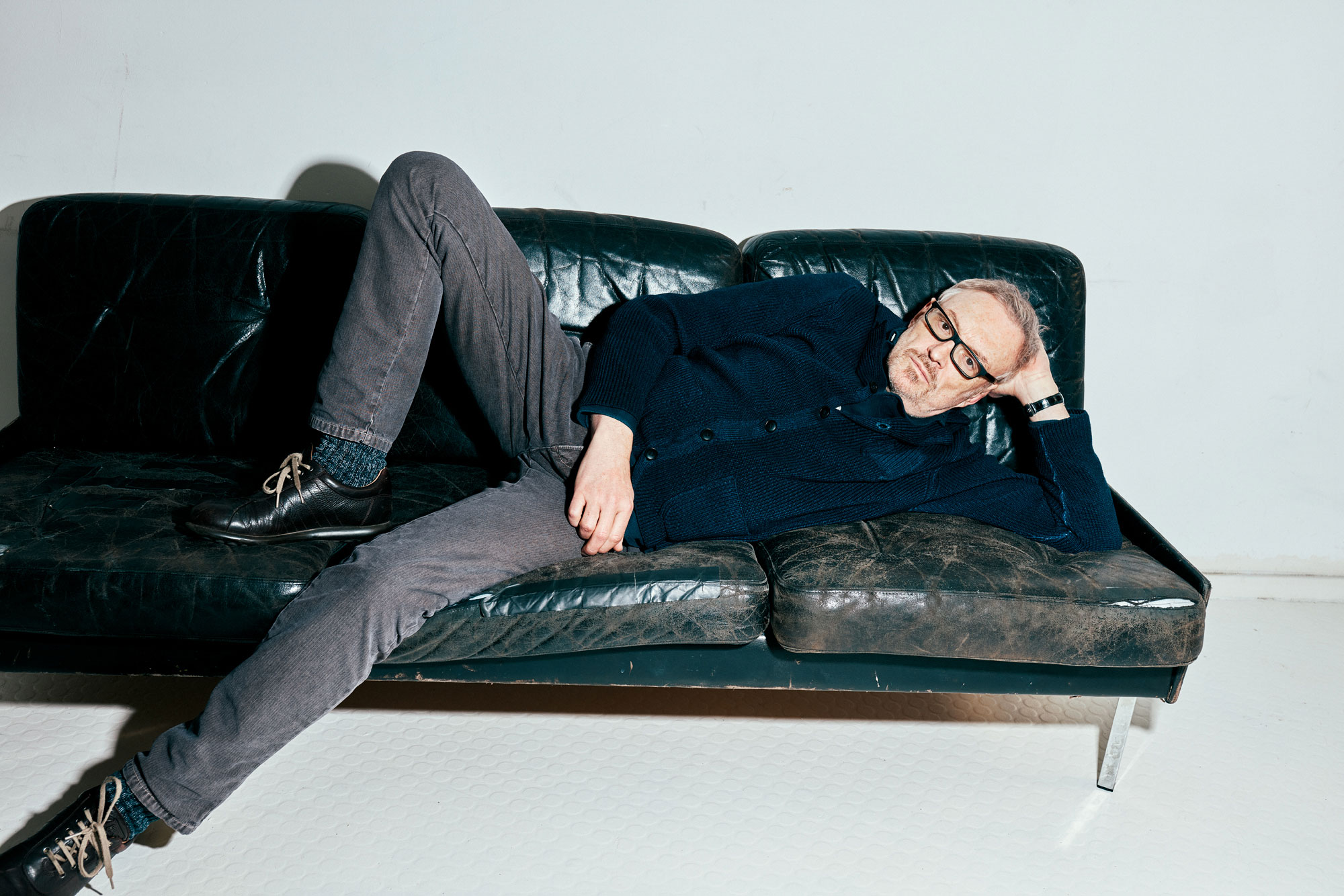
»Ich weiß nicht, welchen Blödsinn ich noch mache.«
MYP Magazine:
Im Jahr 2009 wurden Sie in einem Interview gefragt, wie Sie auf Ihr bisheriges Leben blicken. Sie sagten, dass Sie nicht zufrieden damit seien, wie sie gealtert seien. Sie seien schlecht mit der Zeit umgegangen, hätten die falschen Sachen gemacht, hätten mehr schreiben und sich neu entdecken sollen…
Josef Hader:
Das klingt nach einer Midlife-Crisis.
MYP Magazine:
Sehen sie das heute, 13 Jahre später, anders?
Josef Hader:
Ja, ich glaube, aus dieser Krise bin ich draußen. Möglicherweise bin ich heute eine kleine Spur zufriedener mit dem Leben. Aber das kann sich jederzeit ändern. (grinst) Ich weiß ja nicht, welchen Blödsinn ich noch mache.
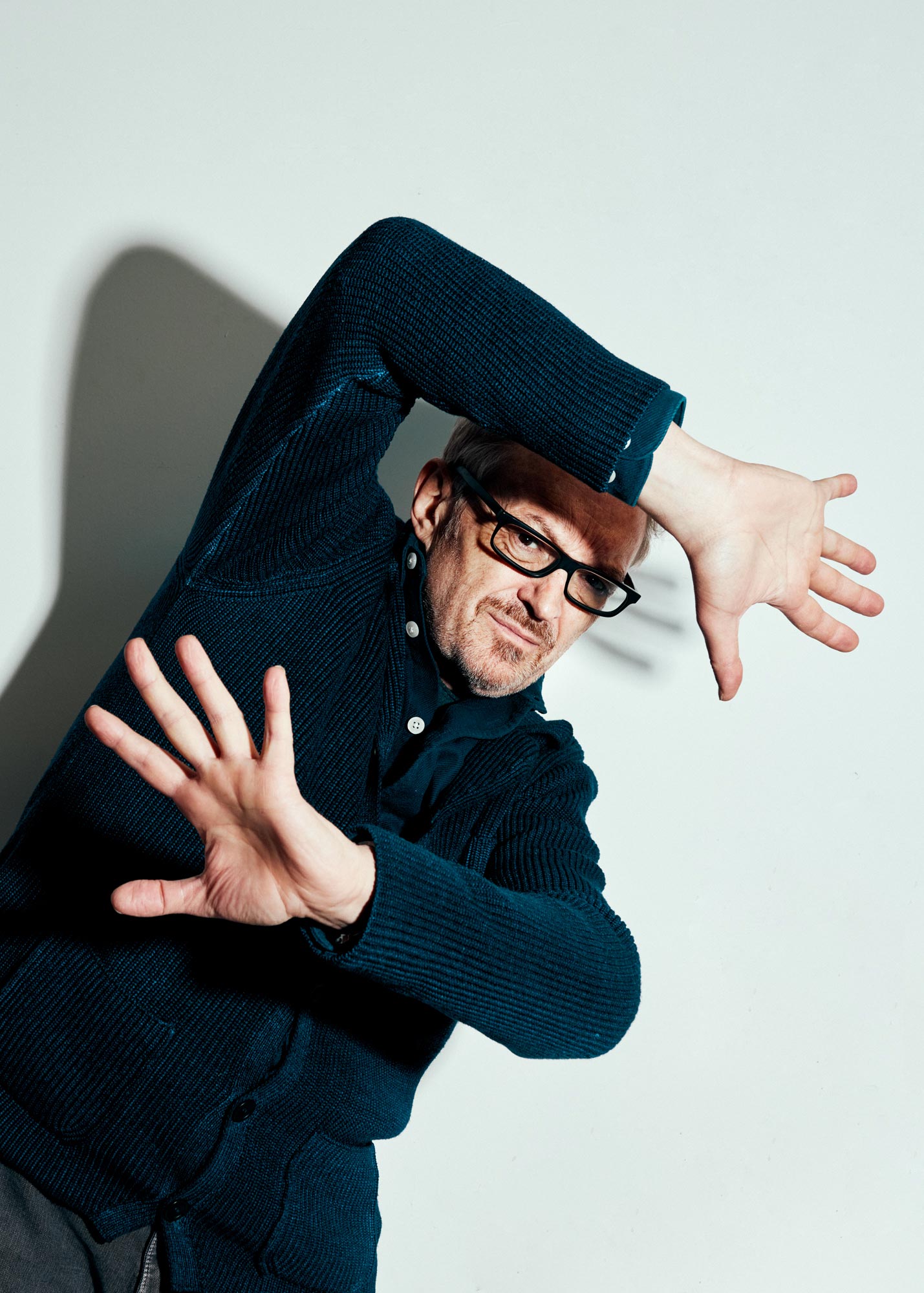
»An meinem Geburtstag könnte ich ein bisschen auf dem Heuboden mithelfen.«
MYP Magazine:
In „Vor der Morgenröte“ sagt Ihre Figur Stefan Zweig zu einem Begleiter: „Wissen Sie, was Tolstoi sagt? Jeder Mann mit 60 soll sich im Dickicht verkriechen wie die alten Tiere.“ Nun werden Sie selbst bald 60 Jahre alt. Was haben Sie vor? Verkriechen Sie sich im Dickicht oder steigen Sie in den Nachtzug nach Rom?
Josef Hader:
Ich schätze Tolstoi sehr und stimme ihm da gerne zu. Ich werde mich an meinem Geburtstag tatsächlich ins Dickicht verkriechen wie ein altes Tier. Und die angenehmere Version des Dickichts ist für mich der Nachtzug nach Rom. Das ist auf jeden Fall eine Option. Ich könnte aber auch Urlaub im Waldviertel machen, auf dem Bauernhof meines Bruders. Da könnte ich dann ein bisschen auf dem Heuboden mithelfen. Das ist auch ein Dickicht.
MYP Magazine:
Auf Zweigs Bemerkung antwortet der Begleiter: „Aber Tolstoi ist doch über 80 geworden!“ Und Zweig entgegnet: „Vielleicht hat er sich im Dickicht wohlgefühlt.“
Josef Hader:
Tolstoi ist ein schlechtes Beispiel. Der hat am Schluss sehr unter seiner Frau gelitten – und sie unter ihm. Der Lebensausklang war kein Happy End, wie meistens bei diesen alten weißen Männern. Ich fürchte, ich werde da keine Ausnahme sein.
#josefhader #haderonice #mypmagazine
Mehr von und über Josef Hader:
Interview & Text: Jonas Meyer
Fotografie: Maximilian König
Assistenz: Stefan Hobmaier
Geflüchtete am Berliner Hauptbahnhof
Reportage — Geflüchtete am Berliner Hauptbahnhof
»Jeden Tag hoffe ich, dass der Krieg aufhört«
So sieht Flucht vor dem Krieg innerhalb Europas aus: Chefredakteurin Katharina Weiß und Fotografin Frederike van der Straeten haben am späten Abend des 15. März den Alltag am Berliner Hauptbahnhof beobachtet. Dort sind sie mit Menschen ins Gespräch gekommen, die der russische Angriffskrieg aus der Ukraine getrieben hat. Und mit Menschen, die vor Ort sind, um zu helfen.
18. März 2022 — Text: Katharina Weiß, Fotografie: Frederike van der Straeten
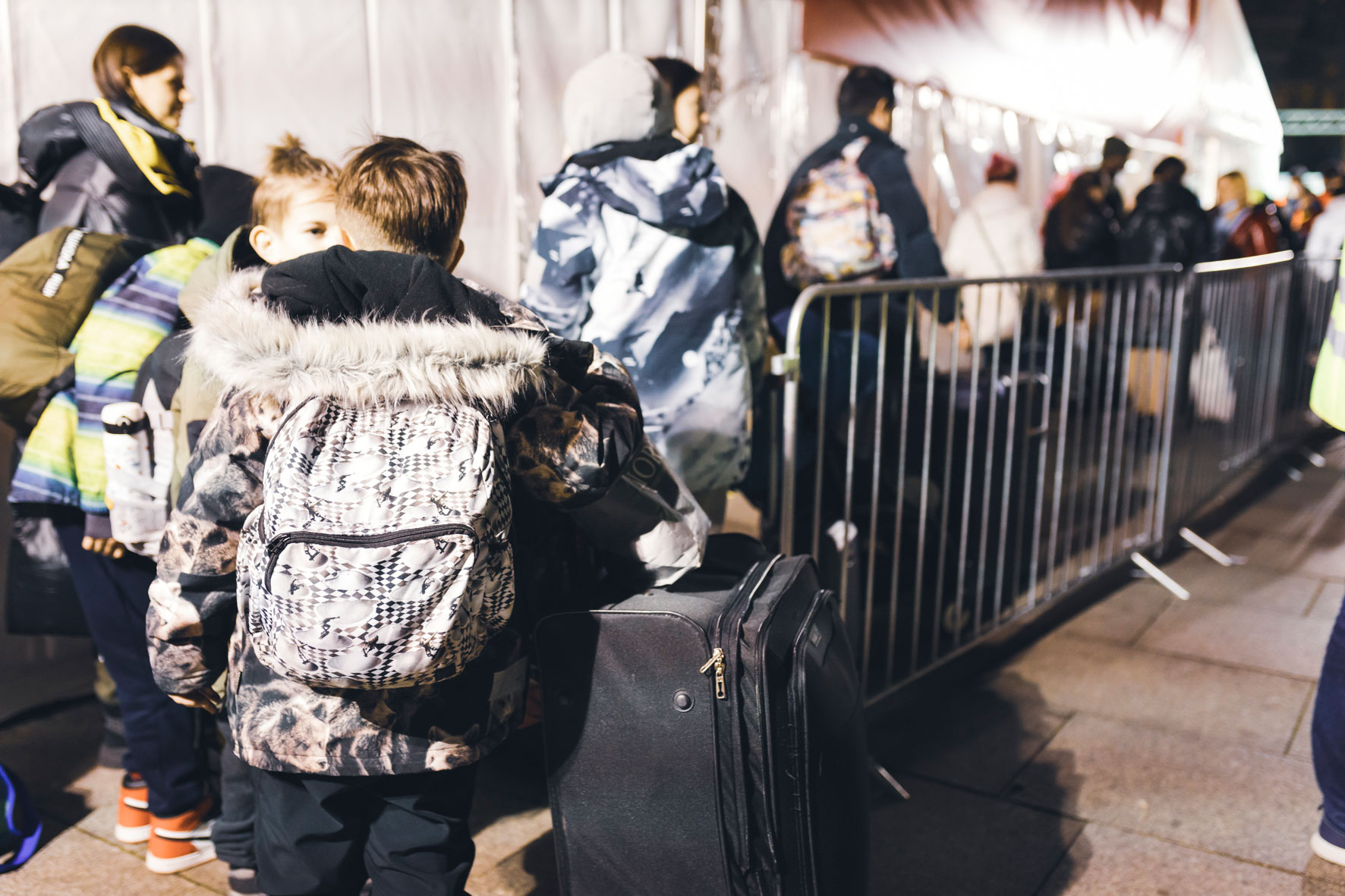
Helfer*innen, deren Wangen vor Solidarität und dem Gefühl glühen, die Situation für Geflüchtete ein kleines bisschen erträglicher zu machen. Pop-up-Infostände, die speziell für BPoc, LGBTIQ* und andere diskriminierte Menschengruppen da sein wollen, aber von behördlichen Strukturen eher vernachlässigt werden. Und Kuscheltierberge für geflüchtete Kinder, denen in den letzten Tagen ein großes Stück ihrer Kindheit genommen wurde. Das ist aktuell die Situation am Berliner Hauptbahnhof.
Dazu kommen Wärmedecken-Lieferungen, die wegen Brandschutzbestimmungen nicht angenommen werden dürfen. Durchsagen, die nach vermissten Minderjährigen suchen – dieses Mal ist es ein Mädchen, das anscheinend Irina heißt. Und der ständige Mangel an Sandwiches, Wasserflaschen oder Hygieneartikeln.

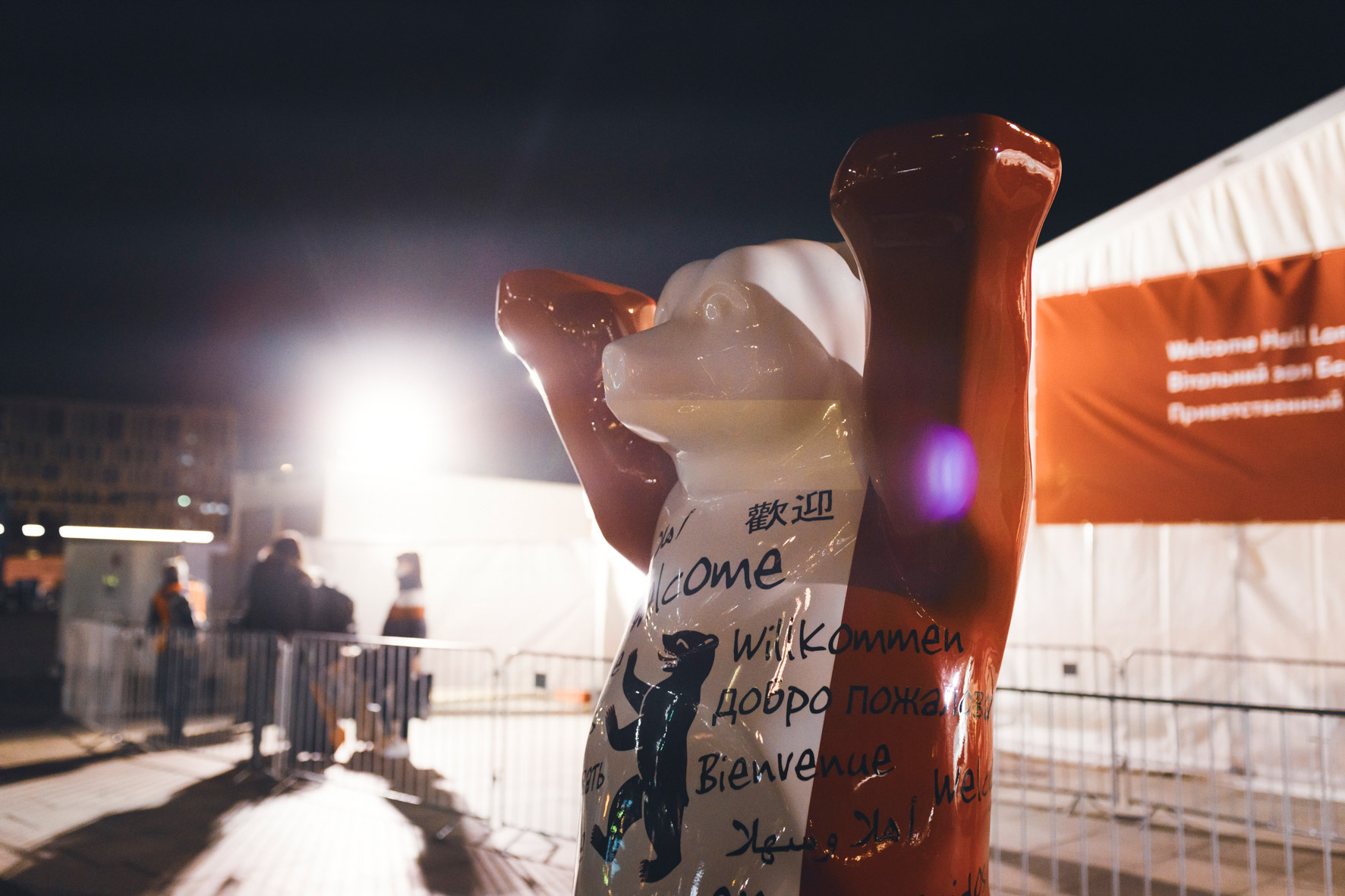
»Die Regierende Bürgermeisterin hätte sich für eine Nachtschicht am Hauptbahnhof eintragen können.«
Während Franziska Giffey am 14. März im Kraftwerk Berlin die Fashion Week eröffnete, stand Studentin Marina Laschke (26) vier S-Bahn-Stationen weiter vor dem Hauptbahnhof, um den aus der Ukraine geflüchteten Menschen Transporte zu vermitteln. In einer Pause sah sie auf Instagram, wie die Regierende Bürgermeisterin die Fragen einer Fashion-Influencerin beantwortete. „Das waren Fragen wie Was würden Sie Putin gerne sagen? oder so“, erinnert sich Marina. „An sich ja ok, auch die Designer haben ihre Presse verdient. Aber die Bürgermeisterin hätte ja zuerst dort Champagner trinken und sich im Anschluss für eine Nachtschicht am Hauptbahnhof eintragen können. Aber hier ist es vermutlich nicht so glamourös. Dafür…“, sie sucht nach Worten, „fühlt es sich hier bedeutend an.“
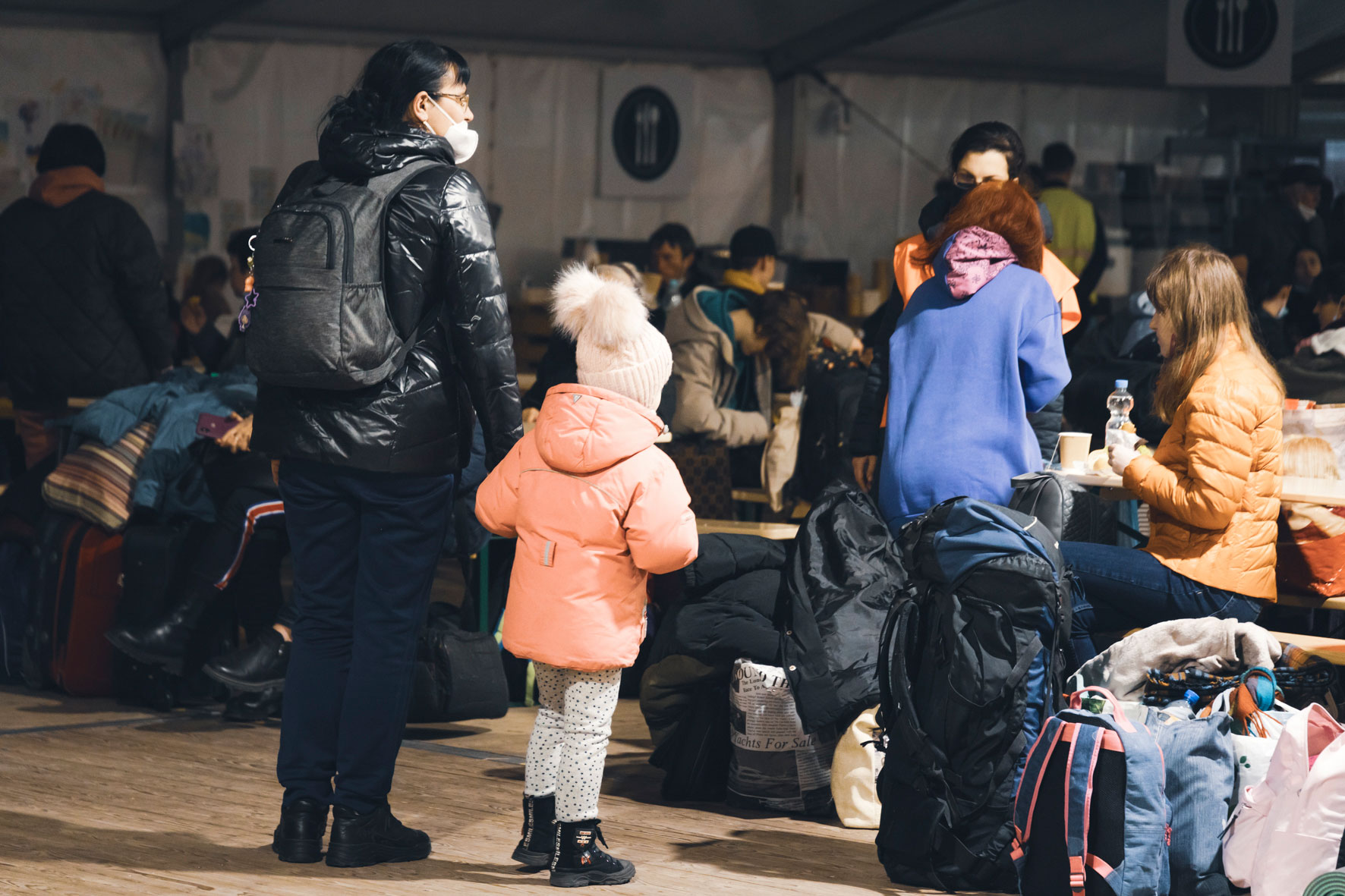

»Jeden Tag hoffe ich, dass der Krieg aufhört.«
Wer mit den Ankommenden, vor allem sind es Frauen, ins Gespräch kommt, der versteht sofort, was Marina meint. Aliona Rybak (37) zum Beispiel versucht, sich nach Düsseldorf durchzuschlagen. Als wir sie im Zelt der Berliner Stadtmission treffen, unterhält sie sich gerade mit einem Mädchen, das nur wenig älter ist als ihr Sohn. 17 Jahre ist er alt, deshalb durfte er ausreisen. Im Oktober wird er 18 – ein paar Monate, die vielleicht sein Leben gerettet haben. Sein Vater musste zurückbleiben, um zu kämpfen. „Schon in den Tagen, bevor der Krieg ausbrach, konnte ich schlecht schlafen. Und jetzt spüre ich immerzu diese Angst. Jeden Tag hoffe ich, dass der Krieg aufhört.“ Ihr Mann verfolgt die Nachrichten kaum noch. Sie hingegen liest und liest und liest. Die Informationsflut ändert nichts an ihrem festen Glauben daran, schon bald in ihre Heimat zurückkehren zu können. Eine Wunschvorstellung, die aus der Perspektive vieler Helfer*innen für die meisten dieser Menschen wohl eher nicht so schnell zur Realität werden wird.

Aliona Rybak (37) ist mit ihrem 17-jährigen Sohn aus der Ukraine geflohen. Ihr Ziel: Düsseldorf.
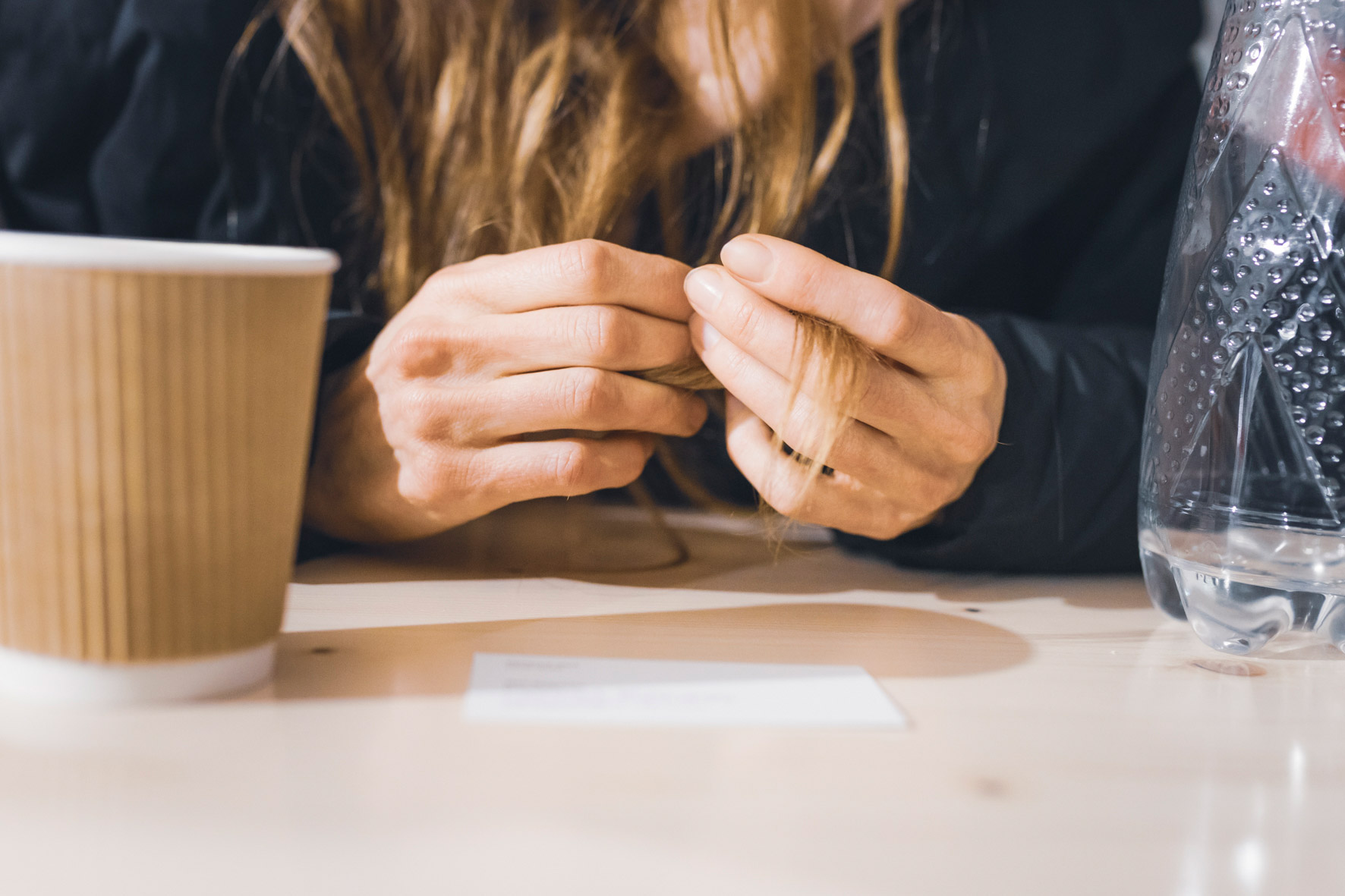
»Mein Herz blutet, ich vermisse meinen Mann so sehr!«
Ein paar Meter weiter lernen wir Marina Usik (41) kennen, die aus verständlichen Gründen nicht fotografiert werden will: Ihr Kajal ist leicht verwischt – von der Erschöpfung, vielleicht auch von den Tränen. Neben ihr sitzt eine fahle, ältere Dame. Mit eingefallenen Wangen und müdem Blick hört sie ihrer Tochter beim Reden zu: „Mein Herz blutet, ich vermisse meinen Mann so sehr. Ich bin mir meiner Mutter und meiner Tochter hier und warte ungeduldig auf den Frieden.“ Wie die meisten Ankommenden bedankt sie sich für die Hilfe. Volontäre hätten ihr gestern ein Hotelzimmer organisiert, sagt Marina, nun wartet sie auf ihre Weiterreise nach Frankreich.
Immer wieder betont sie, wie sehr sie sich Frieden wünscht. Angesichts der Nachrichtenlage fällt es einem schwer, danach zu fragen, für wie realistisch sie diese Entwicklung hält. Wäre der Krieg nicht über sie hereingebrochen, hätte sie in diesen Tagen eine Feier für ihre Tochter ausgerichtet, die nach Abschluss der 9. Klasse auf eine weiterführende Schule gekommen wäre. „Und ich hatte auch geplant, Urlaub zu machen und zu verreisen“, lässt sie uns wissen. Dann blickt sie sich im Zelt der Stadtmission um und sagt zynisch: „Aber nicht auf diese Weise.“
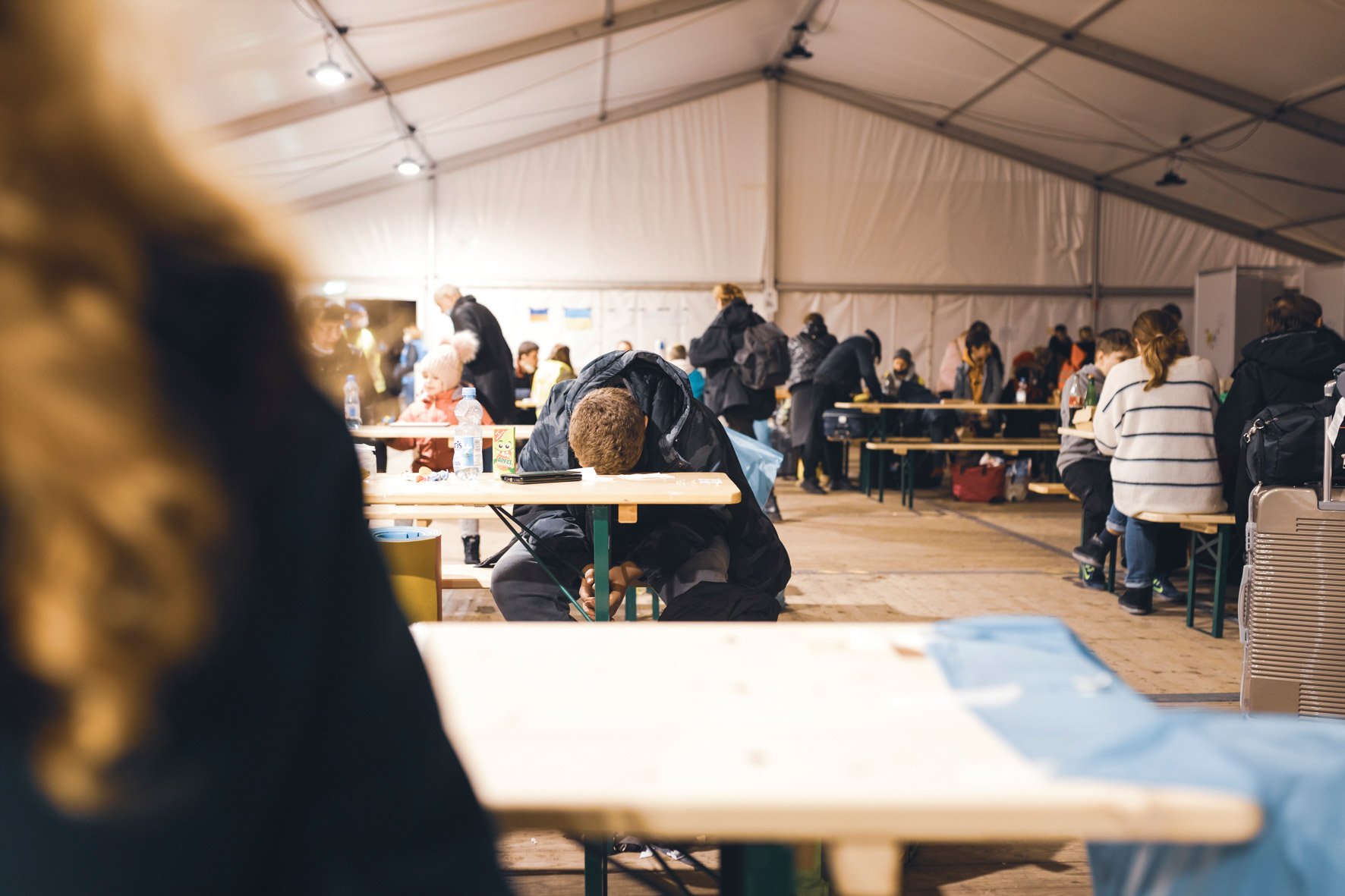
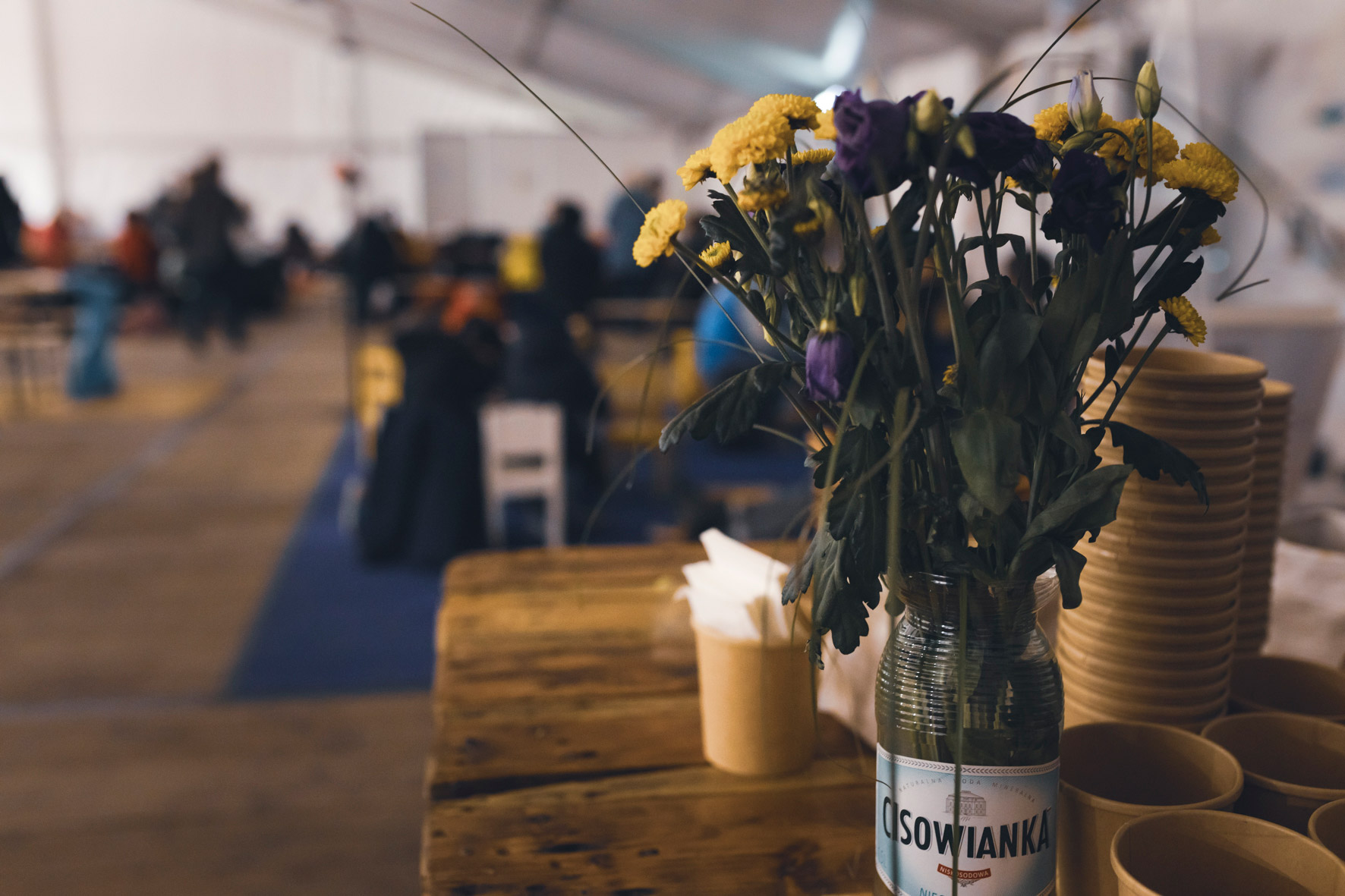
Einer, der seit wenigen Tagen Verantwortung an zentraler Stelle übernimmt, ist Robert Michaelis (41). Als Schichtleiter koordiniert er unter anderem die ankommenden Gruppen von Geflüchteten, die Arbeit der vielen Freiwilligen sowie all die Sach- und Lebensmittelspenden, die täglich am Hauptbahnhof abgegeben werden. Darüber hinaus ist er dafür verantwortlich, die vor dem Zelt stehenden Journalist*innen in Empfang zu nehmen und sie inhaltlich in die Lage vor Ort einzuführen. Das britische Fernsehen war heute schon zu Besuch. Wie die Deutschen mit der Geflüchteten-Situation umgehen, interessiere mittlerweile viele ausländische Medien, sagt Robert.

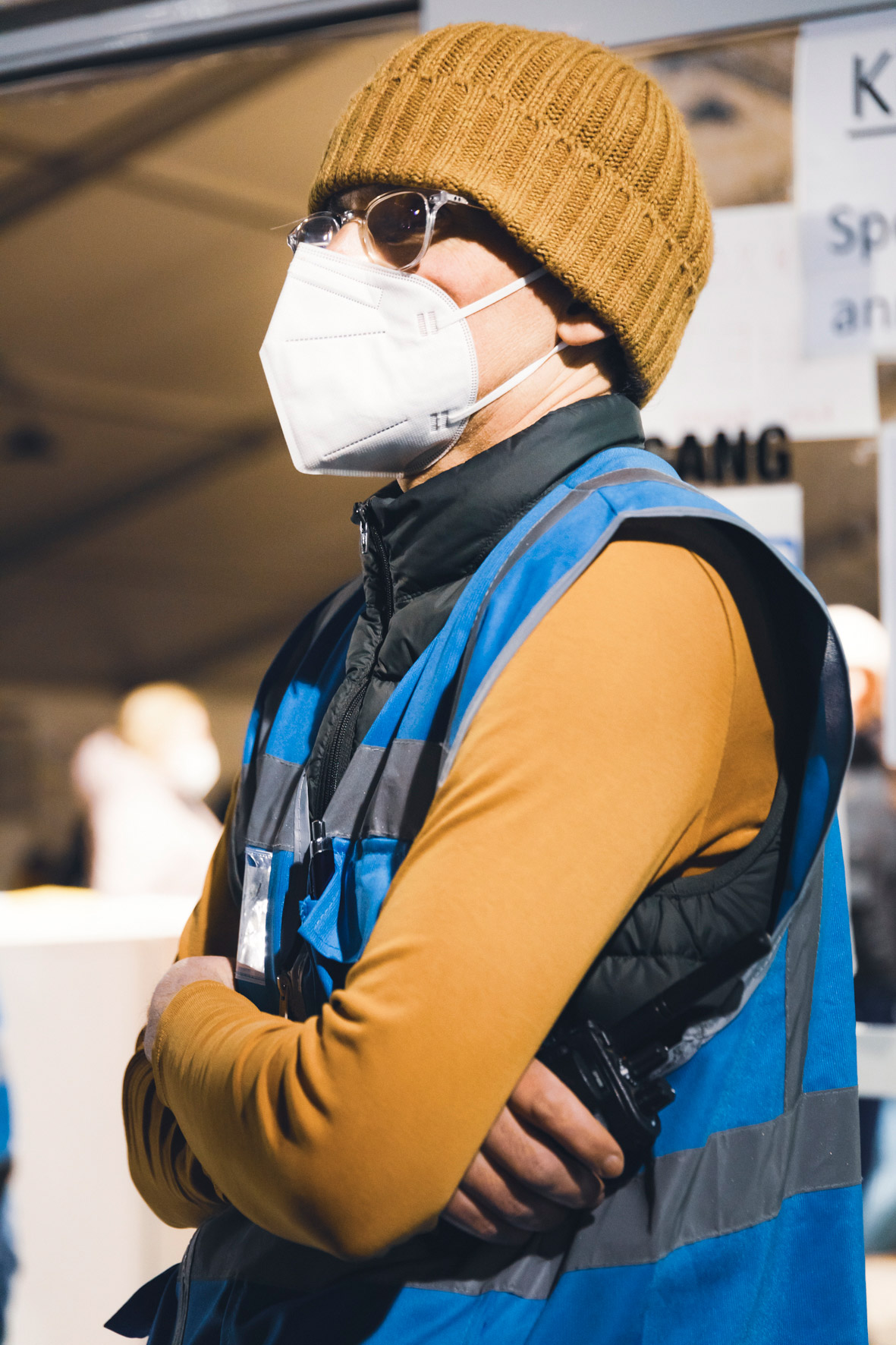
»Wir versuchen, die Menschen individuell abzuholen.«
Auch wenn die Herausforderungen nicht weniger würden, sei er stolz auf die vielen Ehrenamtlichen, lässt uns Helfer Robert wissen. „Wir versuchen, die Menschen individuell abzuholen.“ Aktuell gäbe es aber noch Probleme mit der Weiterverteilung. „Es mangelt vor allem an Übernachtungsplätzen. Viele wollen gar nicht dauerhaft in Berlin bleiben, benötigen aber bis zur Weiterreise eine Unterkunft. Wir mussten jetzt schon mehrmals Menschen für eine Nacht in die Messe zur Übernachtung bringen. Dort haben sie keine Duschen“, sagt Robert, während wenige hundert Meter entfernt im Untergeschoss gerade drei Aufenthaltszüge geparkt sind, in denen weitere Reisende versorgt werden.
„Zum Glück können wir mittlerweile auch mit Hotels wie dem Estrel oder dem Sheraton kooperieren“, fügt er an. Dennoch benötige die humanitäre Lage vor Ort weiterhin jede Menge Engagement von Privatpersonen. Dabei könne sich jede Person individuell und dem eigenen Zeitplan entsprechend einbringen. Viele Ehrenamtliche, mit denen wir an diesem Tag sprechen, sind selbst zum allerersten Mal dabei.
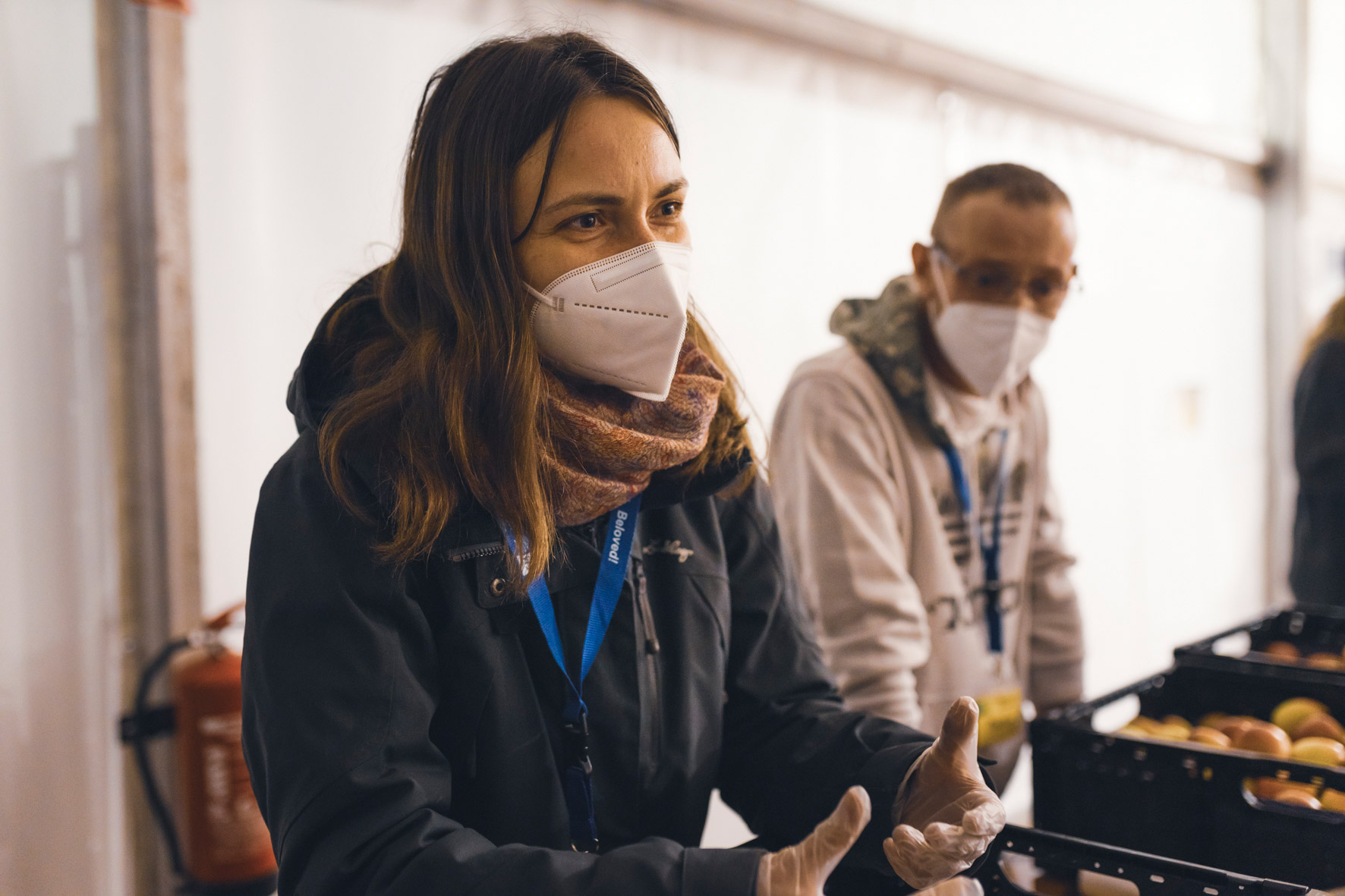
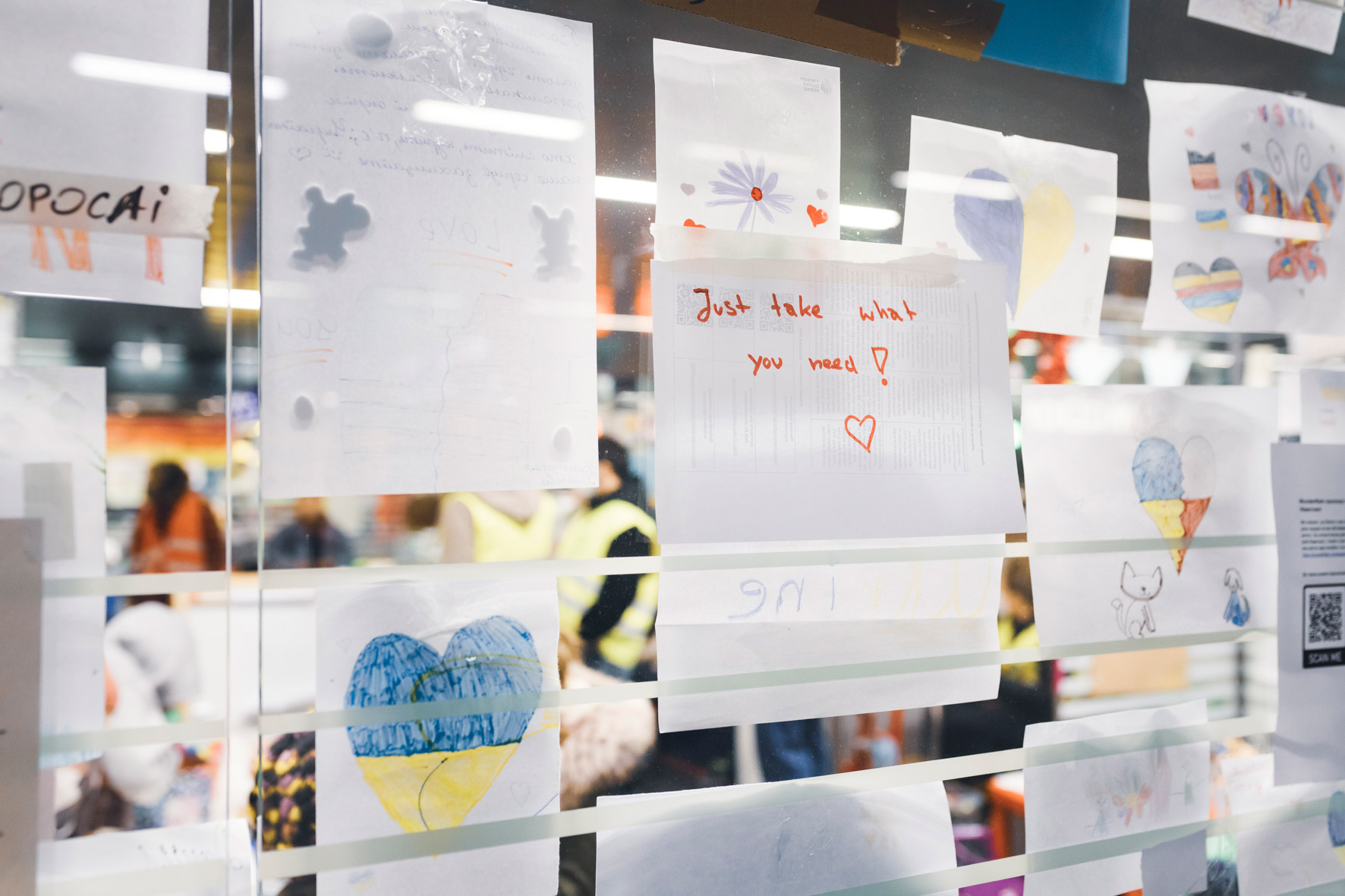
Allmählich ordnet sich auch das strukturlose Chaos, mit dem die Ersthelfer*innen zu Beginn der ersten Geflüchteten-Züge noch klarkommen mussten. Das liegt insbesondere an der verstärkten Präsenz diverser Institutionen: Dutzende Bahner*innen, BVG-Sicherheitsleute und Vereine sind zusammen mit vielen Partnern rund um die Uhr im Einsatz, um die ankommenden Ukrainer*innen zu unterstützen.
Durch diese verstärkte Präsenz wird allerdings auch der Zugang für Berichterstatter*innen in gewisser Weise eingeschränkt. Für die Presse ist es vor Ort nicht mehr ohne Weiteres möglich, sich in allen Bereichen frei zu bewegen, wie es noch vor wenigen Tagen der Fall war. Dabei liegt es im Interesse der Öffentlichkeit, genau zu beobachten, wie die involvierten Institutionen mit so vulnerablen Gruppen wie Frauen und Kindern umgehen.
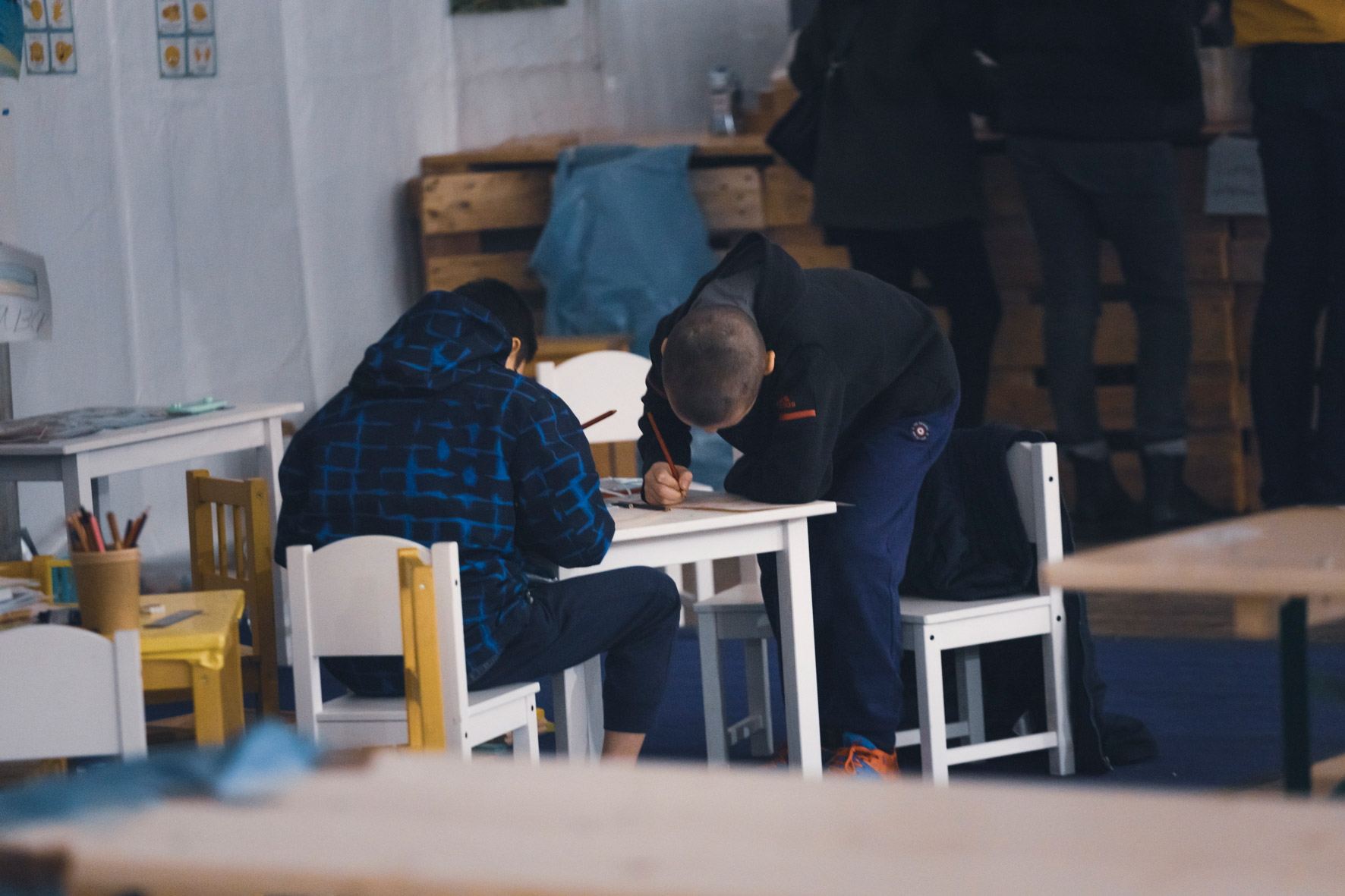

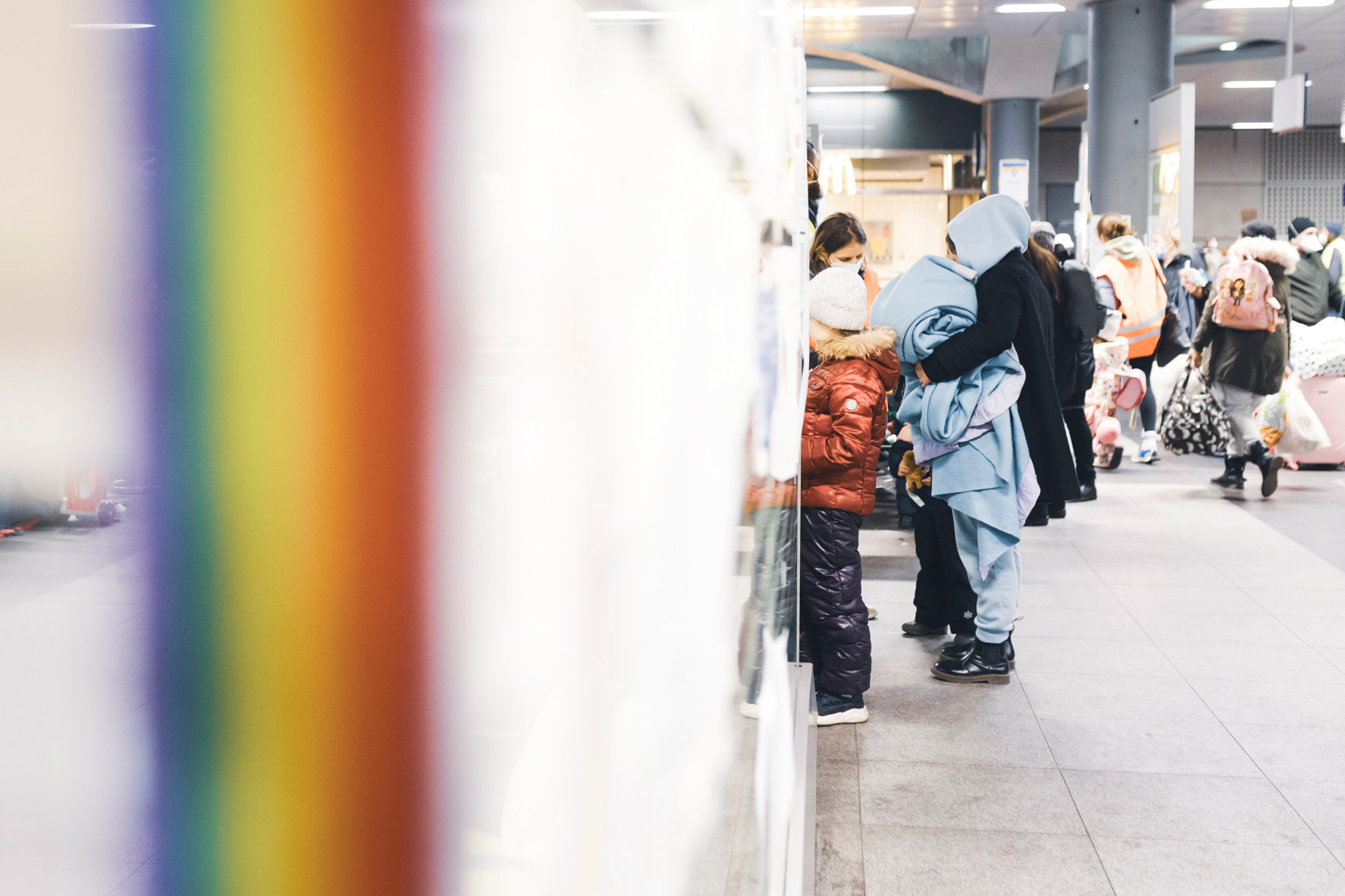
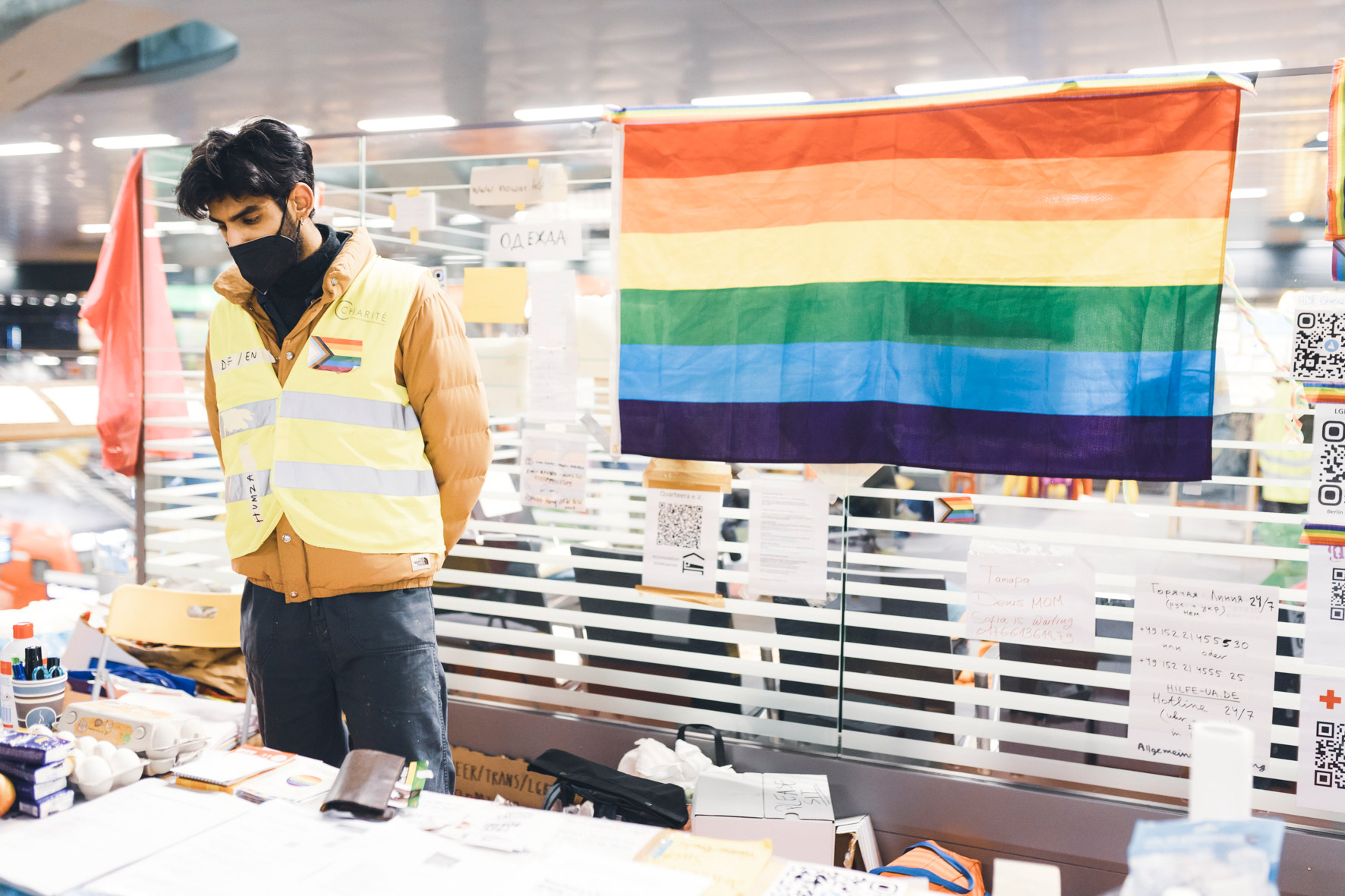
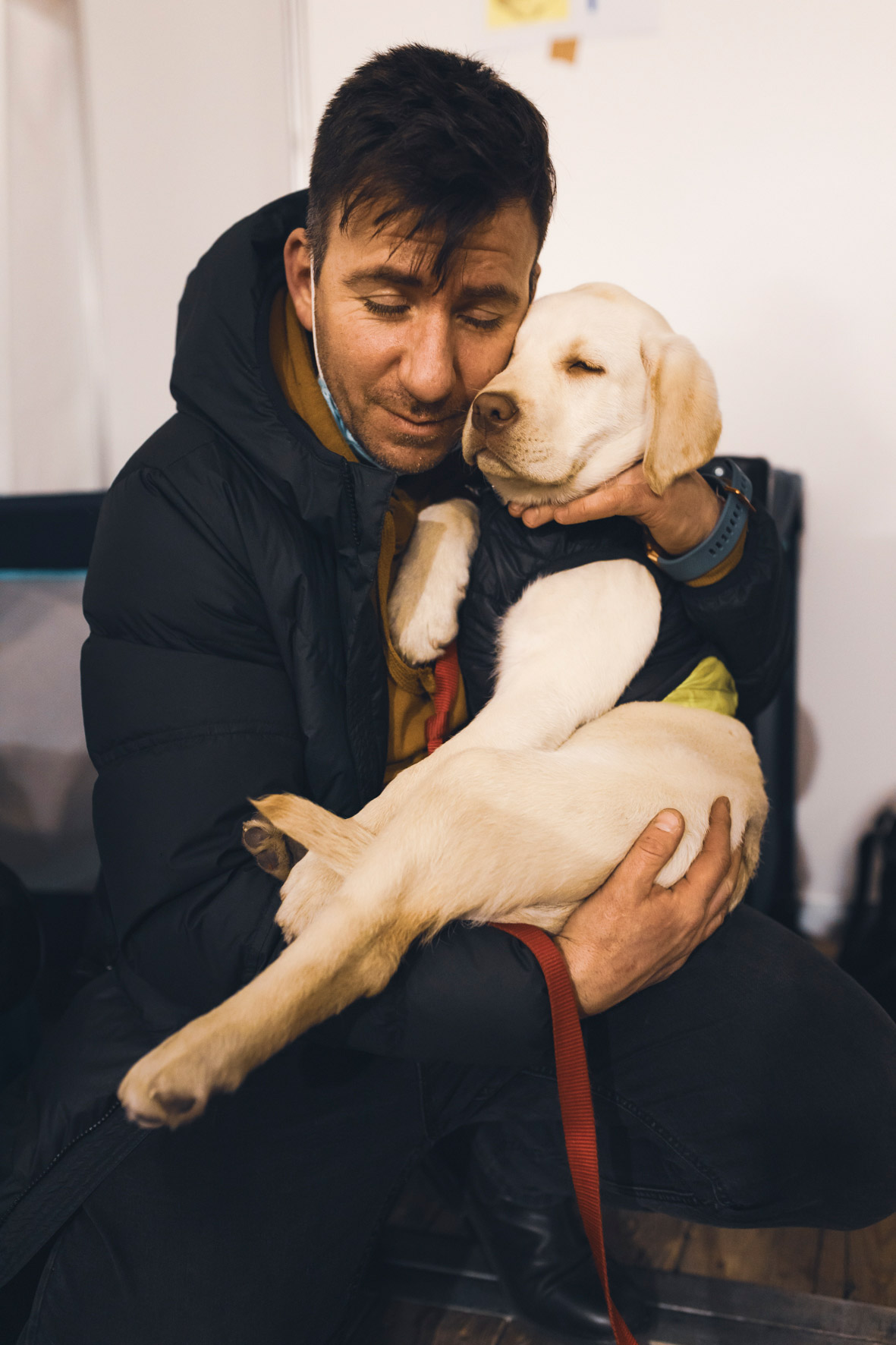
Spendenkonto der Berliner Stadtmission:
IBAN: DE63 1002 0500 0003 1555 00
BIC: BFSWDE33BER
Bank für Sozialwirtschaft
Ansprechpartnerin für Geldspenden:
Ute Rastert
Telefon (030) 690 33-405
urastert@berliner-stadtmission.de
Mehr von und über die Berliner Stadtmission:
berliner-stadtmission.de
facebook.com/berlinerstadtmission
instagram.com/berliner_stadtmission
Interview & Text: Katharina Weiß
Fotografie: Frederike van der Straeten
Familie Hulievych
Reportage — Familie Hulievych
»Mama, der Krieg ist hier!«
Auf der Flucht vor dem Krieg in der Ukraine mussten Inna Hulievych und ihre Tochter Sofia nicht nur ihre Wohnung zurücklassen, sondern auch den 20-jährigen Sohn Vlad. Untergekommen sind sie vorerst bei Daniel Heinz, dem ehemaligen Tutor des Sohnes aus Studienzeiten. Zusammen mit seiner guten Freundin Ilona Naydyonova hat er Mutter und Tochter in der Slowakei abgeholt und nach Berlin gebracht. Vor wenigen Tagen haben wir alle vier zu einem Gespräch in Daniels Wohnung getroffen.
11. März 2022 — Text: Katharina Weiß, Fotografie: Frederike van der Straeten
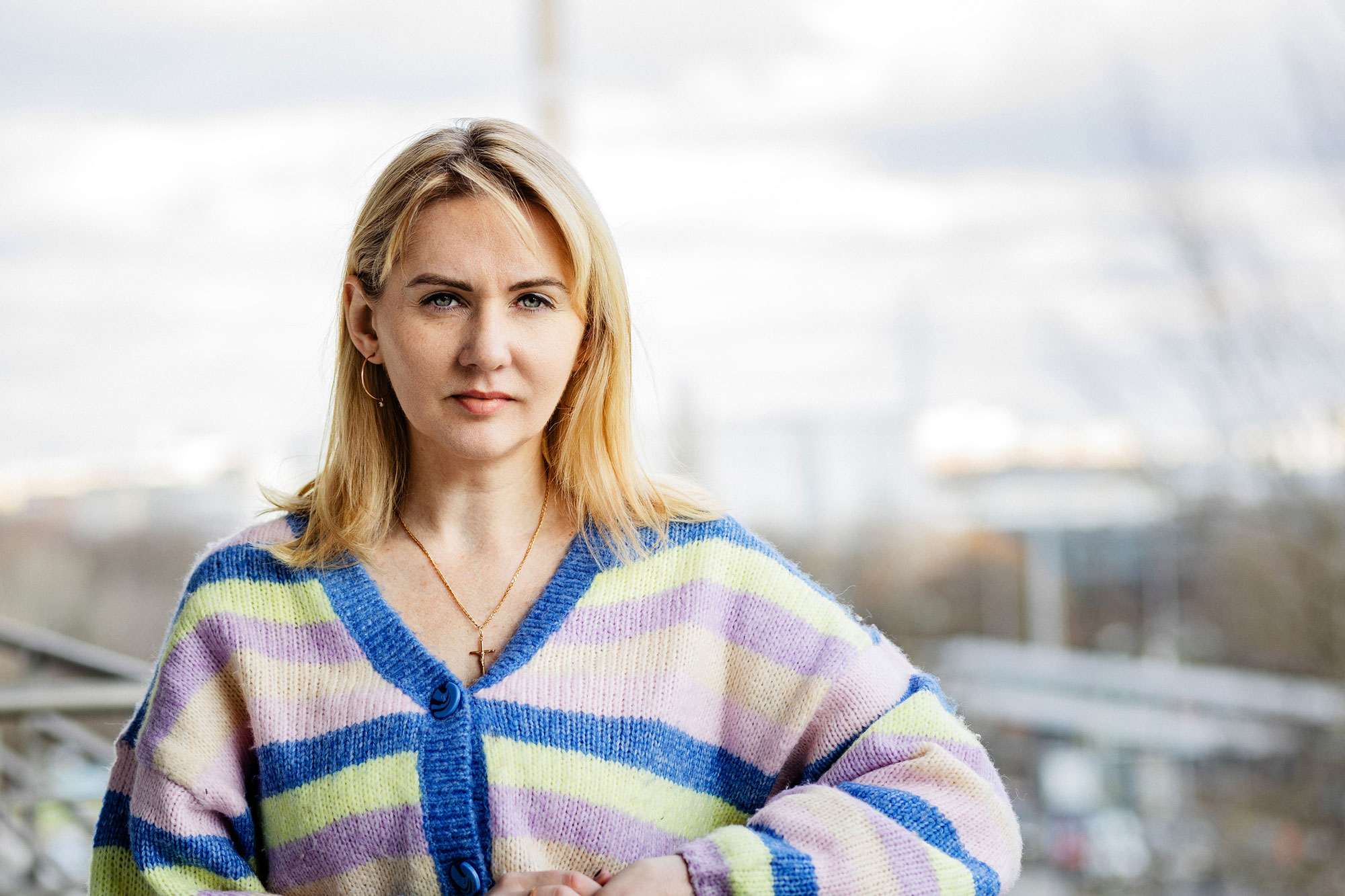
Inna Hulievych (40) ist mit ihrer Tochter Sofia (13) aus Kiew nach Berlin geflohen.
Für die Woche, in der Wladimir Putins Truppen in die Ukraine einmarschierten, hatte Familie Hulievych aus dem Zentrum Kiews eigentlich andere Pläne. Anstatt mit notdürftig gepackten Rucksäcken und Koffern die Flucht aus der ukrainischen Hauptstadt anzutreten, hatte sich die 13-Jährige Sofia auf eine ruhige Woche mit coronabedingtem Online-Unterricht eingestellt. Student Vlad, 20 Jahre alt, schrieb zum Zeitpunkt, als die ersten Bomben fielen, gerade an seiner Bachelorarbeit. Sein Thema: deutsche Erinnerungskultur mit Schwerpunkt Sowjetunion. Der Abgabetermin stand kurz bevor. Und Inna, die 40-jährige Mutter der beiden, hatte sich mit ihren Kolleginnen aus der Zahnarztpraxis zum frühmorgendlichen Sport verabredet. Ein Ritual unter Freundinnen, die einmal pro Woche zuerst ins Fitnessstudio, dann zum Kaffeeklatsch und anschließend gemeinsam zur Arbeit gingen.

Untergekommen sind Inna und Sofia in der Wohnung eines Freundes in Berlin-Friedrichsfelde.
»Wir müssen sofort hier raus.«
In den Stunden, bevor der Alltag dieser drei Menschen in sich zusammenfiel und ihr an Freude und Freundschaft reiches Leben plötzlich ein anderes war, scheiterte ein Versuch des ukrainischen Staatspräsidenten Wolodymyr Selenskyj, den russischen Präsidenten telefonisch zu erreichen. Noch während der UN-Sicherheitsrat tagte, hielt Putin seine Rechtfertigungsrede. In dieser erklärte er unter anderem die „Entnazifizierung“ des „faschistischen, neonazistischen Regimes“ des jüdischen Wolodymyr Selenskyj zum Kriegsziel, der im Jahr 2019 demokratisch gewählt worden war.
Ab dem frühen Morgen, gegen fünf Uhr ukrainischer Zeit, waren die ersten Explosionen zu hören. Und das – zur Überraschung der Ukrainer*innen und der Weltbevölkerung – nicht nur im Donbas, sondern auch bei Odessa, Charkiw oder Kiew. Um sechs Uhr wurde Inna Hulievych von ihrem Sohn geweckt: „Mama, der Krieg ist hier!“, rief Vlad. „Wir müssen sofort hier raus.“

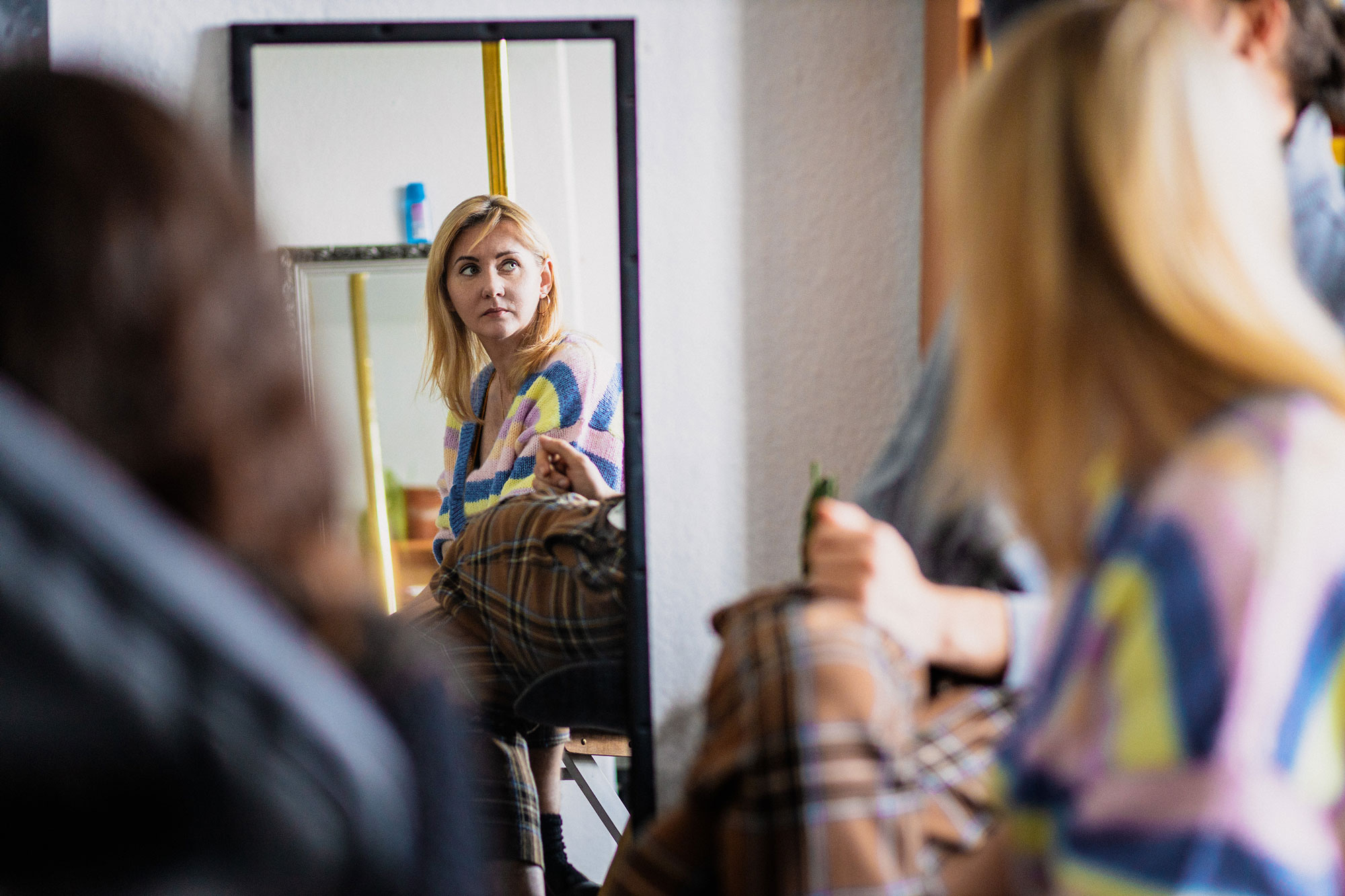
»Ich habe zuerst den Abwasch gemacht.«
Halb verschlafen und eher ungläubig trat Inna auf ihren Balkon. In der Ferne sah sie den Funkenflug und hörte das Dröhnen der Bomben. Während ihre Kinder sofort mit dem Packen begannen, dachte sie im ersten Moment an das schmutzige Geschirr, das sich vom Abend vorher noch in der Küche stapelte: „Ich habe zuerst den Abwasch gemacht. Mein Kopf war irgendwie leer – ich konnte das alles kaum begreifen.“
Danach eilte Inna zu einer nahgelegenen Bank, vor der sich bereits eine lange Schlange an Menschen gebildet hatte. Alle wollten so schnell wie möglich an Bargeld kommen. Doch wie etliche andere Leute wartete sie umsonst, denn die meisten Automaten gaben kein Geld mehr aus. Also hastete Inna wieder nachhause.
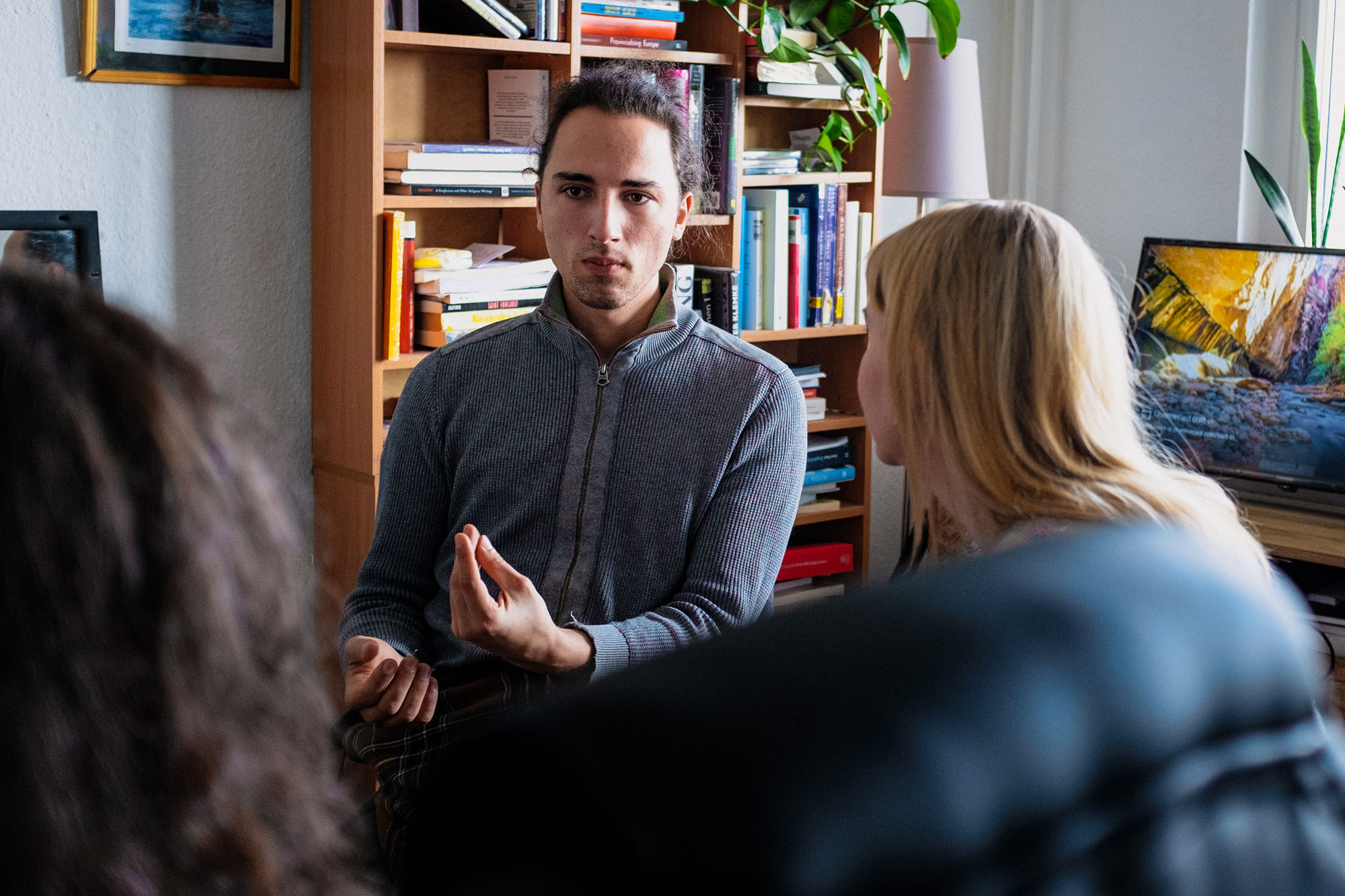
Daniel Heinz (25) hat Mutter und Tochter in der Slowakei abgeholt.
»In so einem Moment denkt man weder an den Schmuck noch an irgendwelche Wertsachen.«
„Ich wurde schon ein paar Mal gefragt, an welche Dinge ich sofort gedacht habe, als klar wurde, dass wir fliehen müssen“, berichtet sie. „Doch wie viele andere, mit denen ich auf der Flucht darüber gesprochen habe, denkt man in so einem Moment weder an den Schmuck noch an irgendwelche Wertsachen oder die Lieblingsklamotten. Man wirft einfach irgendwelche Sachen in die Koffer.“
Der Plan der kleinen Familie war, zunächst zu einer Verwandten im Westen der Ukraine zu fliehen. Sie kontaktierten Freunde aus Browary, einer Vorstadt im Osten Kiews, da diese im Gegensatz zu den Hulievychs ein Auto besitzen und ohnehin in die Innenstadt fahren wollten. Aus Browary braucht man an einem geschäftigen Tag um die 45 Minuten bis zum Stadtzentrum. Doch auf den Straßen herrschten Massenstaus, alles wirkte wie ein einziges Chaos. Und so brauchten die Freunde mit dem Auto ganze sechs Stunden, bis sie die Wohnung von Familie Hulievych im Zentrum Kiews erreicht hatten.

Studentin Ilona Naydyonova (24) ist gebürtige Ukrainerin und hilft der Familie unter anderem mit Übersetzungen.
»Neben den PKW rollten massive Panzer über den Beton.«
Mit jeder Menge schwerem Gepäck verfrachteten sich Inna, Sofia und Vlad ins Auto und baten ihre Freunde, sie zur nächsten U-Bahn-Station zu bringen. Doch statt der üblichen zehn Minuten dauerte die Fahrt über anderthalb Stunden. Mit den öffentlichen Verkehrsmitteln fuhren die Drei bis zur Stadtgrenze. Von dort aus liefen sie eine Stunde zu Fuß zu einer Autobahnraststätte. „Neben den PKW rollten massive Panzer über den Beton“, erzählt Inna. Sie schafften es zu einem Teil ihrer Familie in Chmelnyzkyj.
Kurz darauf gab die ukrainische Regierung bekannt, dass alle gesunden Männer zwischen 18 und 60 das Land nicht mehr verlassen dürfen. Eine furchtbare Nachricht für Inna, die sich zum einen um den Vater ihrer Kinder sorgt, von dem sie seit mehreren Jahren getrennt lebt. Noch viel größer ist ihr Kummer, wenn sie an ihren Sohn denkt. Denn auch für Vlad schlossen sich nun alle Fluchttüren. Dabei hatte er bereits Kontakt mit seinem deutschen Freund Daniel Heinz aufgenommen, um eine mögliche Flucht in die Bundesrepublik vorzubereiten.

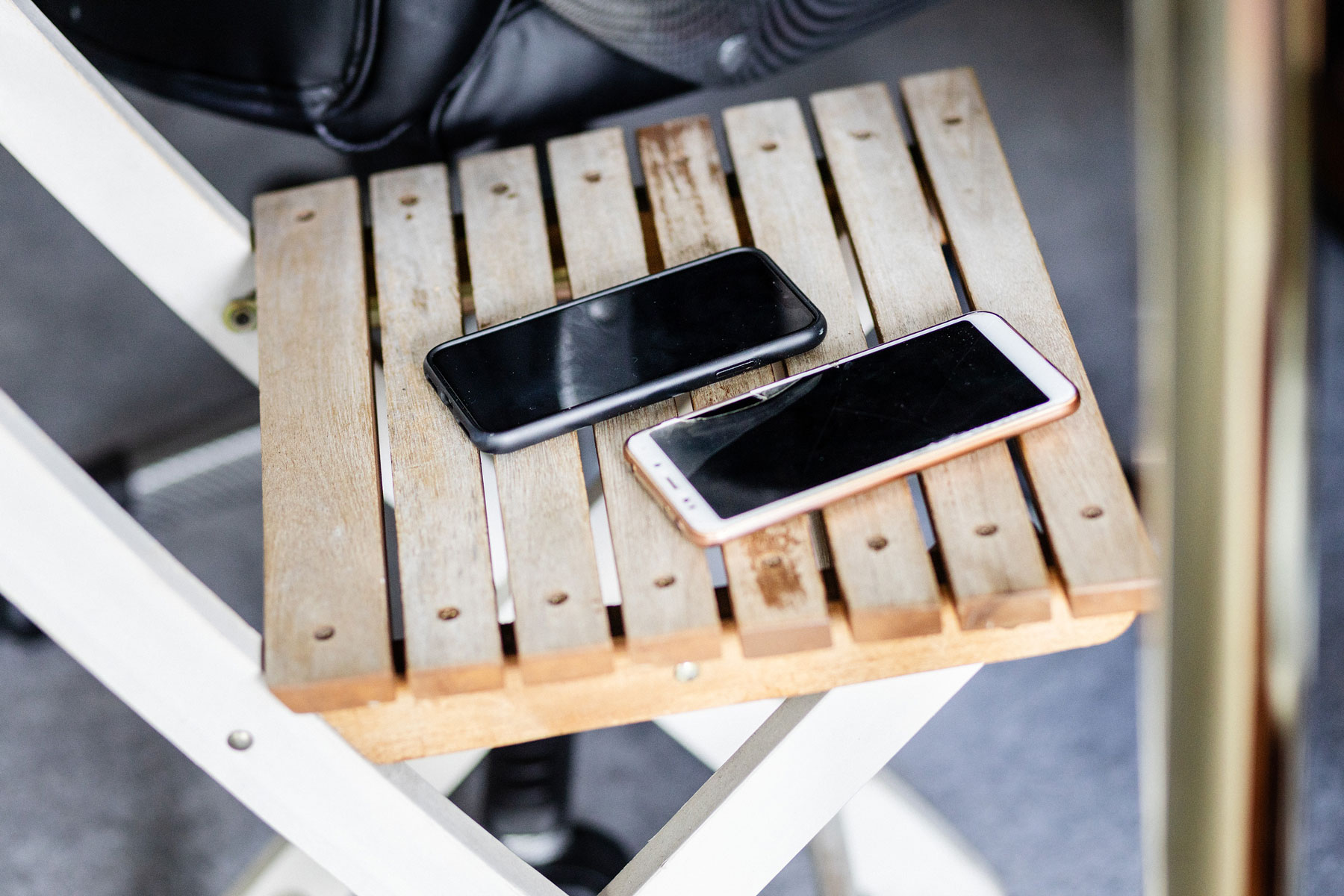
»Es war uns bewusst, dass es das letzte Mal sein könnte, dass wir uns in den Armen liegen.«
Vlad und Daniel hatten sich 2021 beim Studium an der Justus-Liebig-Universität Gießen kennengelernt, der heute 25-jährige Daniel war damals sein Tutor. Er bot sofort an, die dreiköpfige Familie in seiner Wohnung in Berlin-Friedrichsfelde aufzunehmen. Nun drängte Vlad darauf, wenigstens seine Mutter und seine Schwester in Sicherheit zu bringen.
Am Mittwoch, den 2. März, verabschieden sich Inna und Sofia von Vlad. „Es war uns bewusst“, sagt Inna, „dass es das letzte Mal sein könnte, dass wir uns in den Armen liegen – auch wenn man das eigentlich nicht begreifen kann.“
Mit dem Zug fuhren Inna und Sofia von Winnyzja zur Grenzstadt Uschgorod. Von dort aus liefen sie zu Fuß über die Grenze zur Slowakei. „Bereits in diesem Moment durchströmte mich ein Gefühl der Sicherheit: Nun waren wir in einem Land, dass gerade nicht im Krieg war“, erzählt Inna. Zudem warteten auf der andere Seite zwei Engel aus Berlin: Freunde sammelten die beiden Frauen mit ihrem Auto ein und transportierten sie nach Berlin, wo sie von Daniel Heinz und Ilona Naydyonova auf Russisch empfangen wurden.

»Es ist unfassbar, welche Geschichten ein Mensch in 30 Minuten erzählen kann.«
Daniel ist wissenschaftlicher Mitarbeiter an der Fachhochschule Potsdam und darüber hinaus Referent für Antidiskriminierung an der Bildungsstätte Anne Frank. Seine Großeltern sind in der ukrainischen Hafenstadt Odessa geboren und wurden von Stalin nach Sibirien deportiert. In den 1990er Jahren migrierten seine Eltern als Spätaussiedler in die Bundesrepublik. Er hat in Kiew studiert und mehre deutsch-ukrainische Jugendbegegnungen zwischen Berlin und Chernigiv organisiert.
Die Fluchtauswirkungen erlebte Daniel von Anfang an hautnah mit, da er seit Kriegsbeginn ehrenamtlich am Hauptbahnhof arbeitet. „Ich habe dort in den letzten Tagen viel übersetzt, um ankommenden Personen dabei zu helfen, ihre Weiterreise zu planen. Es ist unfassbar, welche Geschichten ein Mensch in 30 Minuten erzählen kann. Das hat mich sehr betroffen gemacht, aber auch in meinem Aktivismus gestärkt.“ Als wir ihn vergangenen Samstag in seiner Berliner Wohnung treffen, betont Daniel, dass es vor Ort am Hauptbahnhof keine behördlichen Strukturen gegeben hätte.
„Alle Arbeitsgruppen und Angebote werden von Privatpersonen und Aktivist*innen der ukrainischen Widerstandsbewegung in der Diaspora organisiert,“ berichtet er und hebt dabei den Verein „Vitsche“ hervor, der sich über Telegram und andere Social-Media-Kanäle abstimmt: „Ich habe gestern einen Aufruf auf Instagram gestartet, wir benötigen mehr Übersetzer für den Bahnhof. Es haben sich über 50 Leute gemeldet, die heute mitgeholfen haben. Aktuell fühlen sich weder die Deutsche Bahn noch die Bundespolizei verantwortlich und sind zudem wenig kooperativ. Nur dank der vielen zivilen Freiwilligen sind wir überhaupt in der Lage, die Ankunft der Menschen aus der Ukraine zu stemmen.“
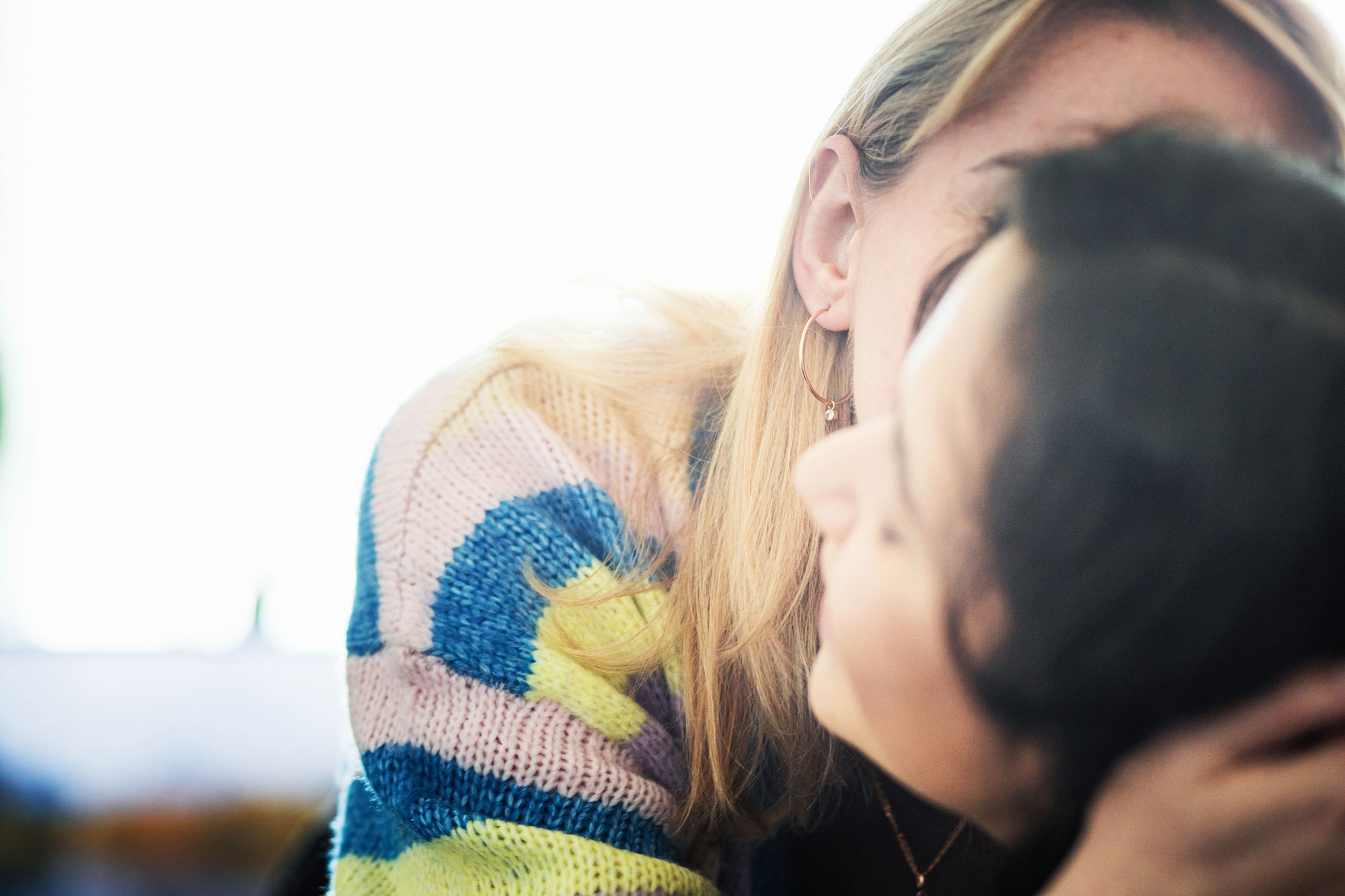
»Meine Cousine sagt mir jeden Tag am Telefon unter Tränen, dass sie einfach nicht mehr kann.«
Während wir unsere Fragen stellen, frühstückt Daniel gerade mit Inna und Sofia. Auch seine Bekannte Ilona Naydyonova ist dabei und gießt den beiden Frauen frischen Orangensaft nach. Ilona studiert in Münster. Als sie in den ersten Tagen des Krieges über die Demos und Hilfsprojekte der ukrainischen Community in Berlin erfuhr, buchte sich die 24-Jährige sofort ein Zugticket nach Berlin.
Sie selbst zog bereits vor 16 Jahren mit ihren Eltern von der Krim nach Deutschland. „Meine Tante und meine Cousine sind immer noch in der Ukraine“, sagt sie mit kämpferischer Mine. „Sie mussten bereits 2014, als die Russen zum ersten Mal in den Donbas einmarschiert sind, nach Kiew fliehen. Die Ukraine war ein armes Land, die Zustände waren prekär. Sie haben so viel verloren, aber nicht aufgegeben. Als sich die Lage etwas beruhigt hat, beschloss meine Tante, in ihre Heimat zurückzukehren und alles wieder aufzubauen. Vor kurzem konnten sie es sich endlich leisten, neue Fenster in ihr kaputtes Haus einzubauen. Ich würde mir so sehr wünschen, dass meine Cousine nach Deutschland kommt, aber sie sagt mir jeden Tag am Telefon unter Tränen, dass sie einfach nicht mehr kann.“
Ilona, die besser Russisch und Ukrainisch spricht als Daniel, übersetzt unsere Interviewfragen und die Antworten von Inna. Sofia, die immer noch geschlaucht wirkt, zieht sich zum Musikhören zurück. Typisch Teenager, könnte man denken. Doch was kann überhaupt noch typisch und normal sein im Leben eines Teenagers, wenn man solche Dinge erlebt hat wie Sofia in den letzten Tagen?
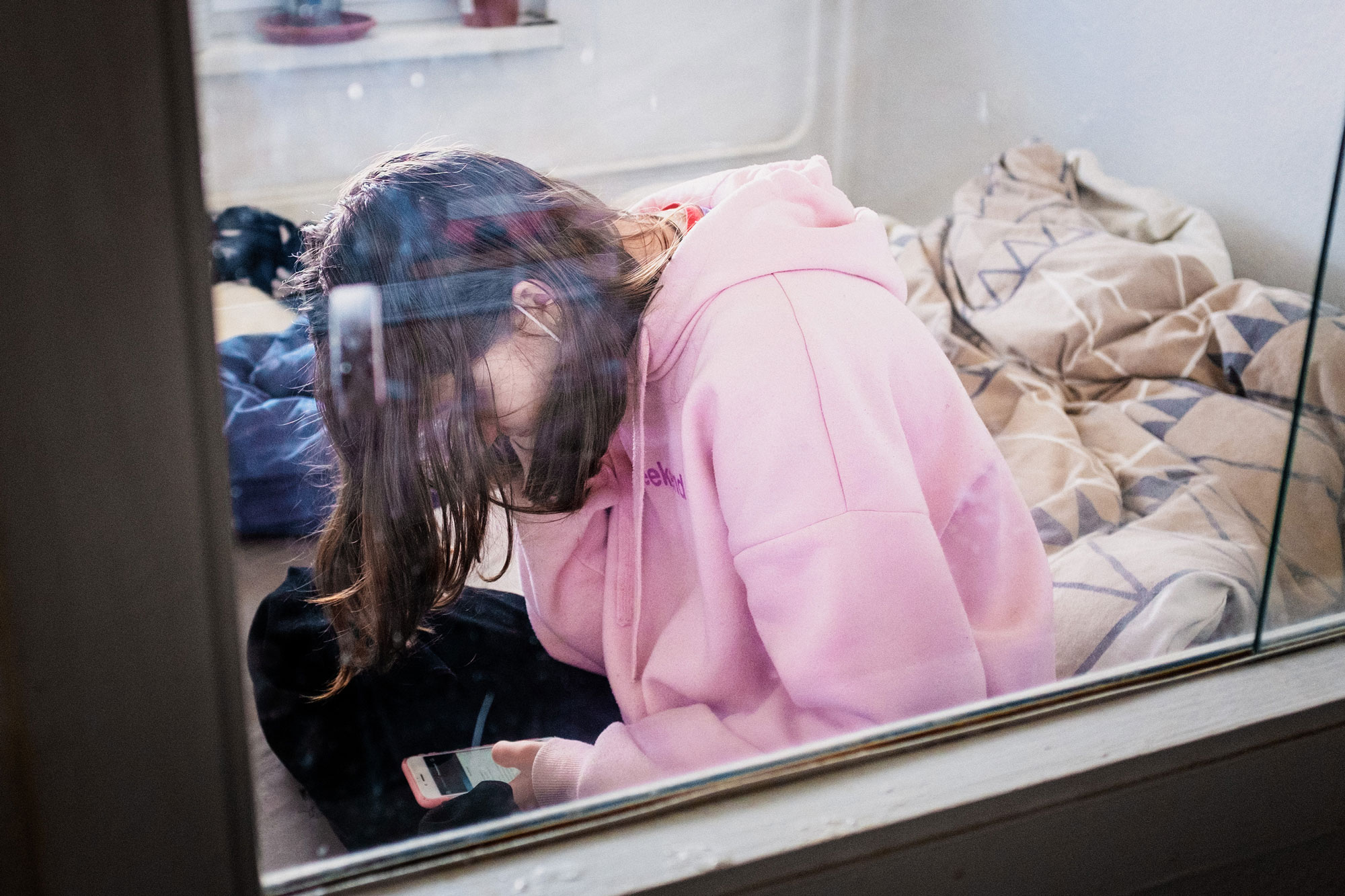
»Ich kann meiner Familie mit gutem Gewissen sagen: Kommt her!«
Der einzige Trost, den die geflüchteten Frauen finden, ist die Herzlichkeit, mit der sich Daniel und Ilona um sie kümmern. Gemeinsam essen, sich beim Nachrichtenschauen die Hände halten, ukrainische Musik hören und sich laut den Frust von der Seele singen – was Daniel und Ilona in den letzten Tagen getan haben, war eine 24-Stunden-Betreuung, um den Schock, in einem fremden Land neu anfangen zu müssen, so gut wie möglich abzufedern.
Ilona weiß, wie es ist, in Deutschland erst mal eine Fremde zu sein. Sie kennt die Diskriminierung und den Rassismus, mit dem osteuropäische Frauen hier konfrontiert werden. „In einer Männergruppe habe ich ein Posting gesehen nach dem Motto: ‚Jetzt kann sich jeder eine günstige ukrainische Schlampe vom Hauptbahnhof mitnehmen.‘ Ekelhaft. Genau wie das Klischee, dass wir alle Alkoholiker wären.“
Dies sagt Ilona nur auf Deutsch und übersetzt es nicht. Warum auch, aktuell hat Inna einen guten Eindruck von den Deutschen. „Die Leute waren unfassbar nett und hilfsbereit.“ Eine Perspektive, die angesichts der überall entstehenden Hilfsprogramme auch von vielen anderen ankommenden Ukrainer*innen geteilt wird. Daniel und Ilona wollen alles dafür tun, dass sich die deutsche Zivilbevölkerung die momentane Stimmung und den Tatendrang bewahren. „Ich kann meiner Familie mit gutem Gewissen sagen: Kommt her, hier ist es definitiv besser als im Donbass. Es gibt hier Menschen, die euch helfen wollen und werden.“
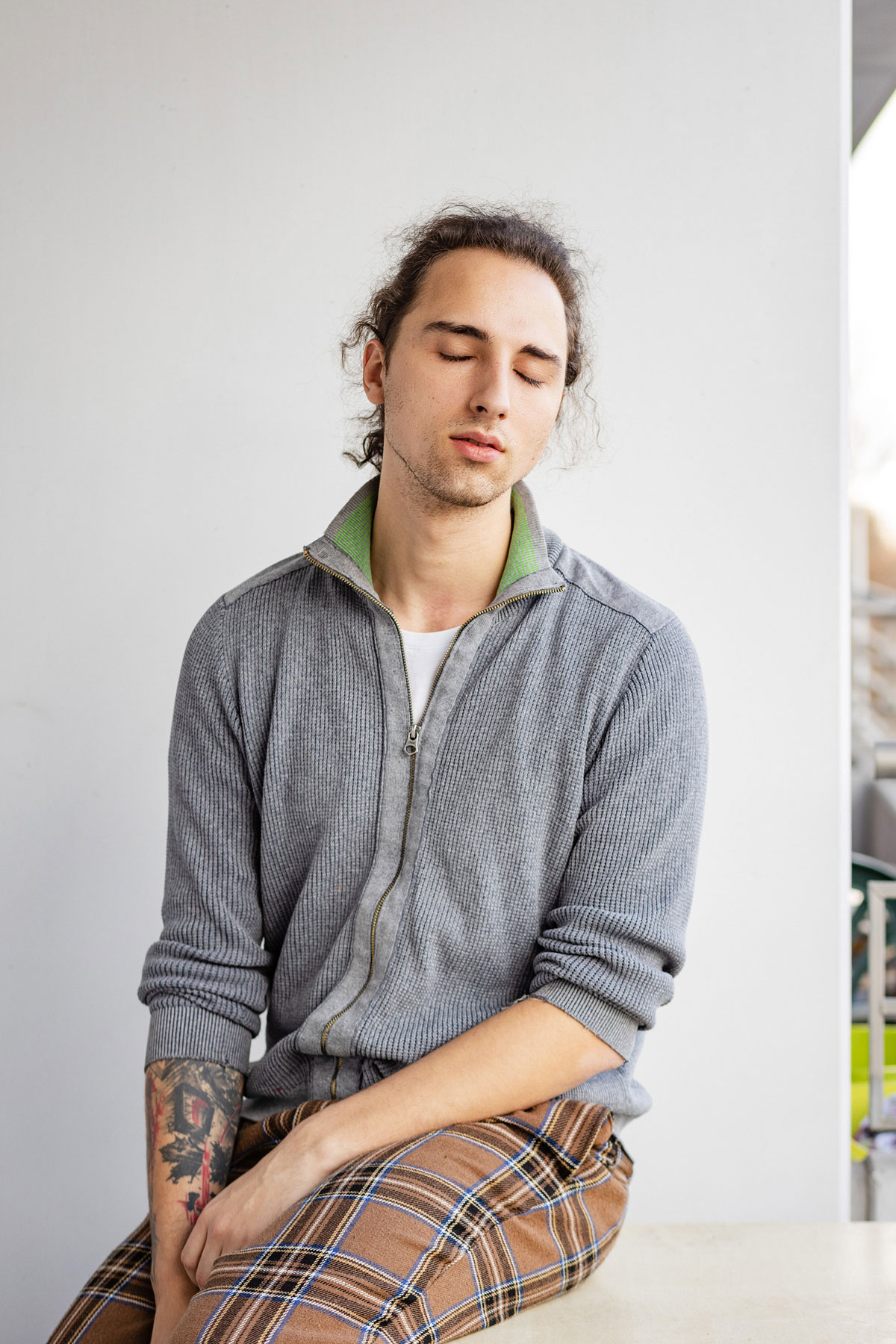
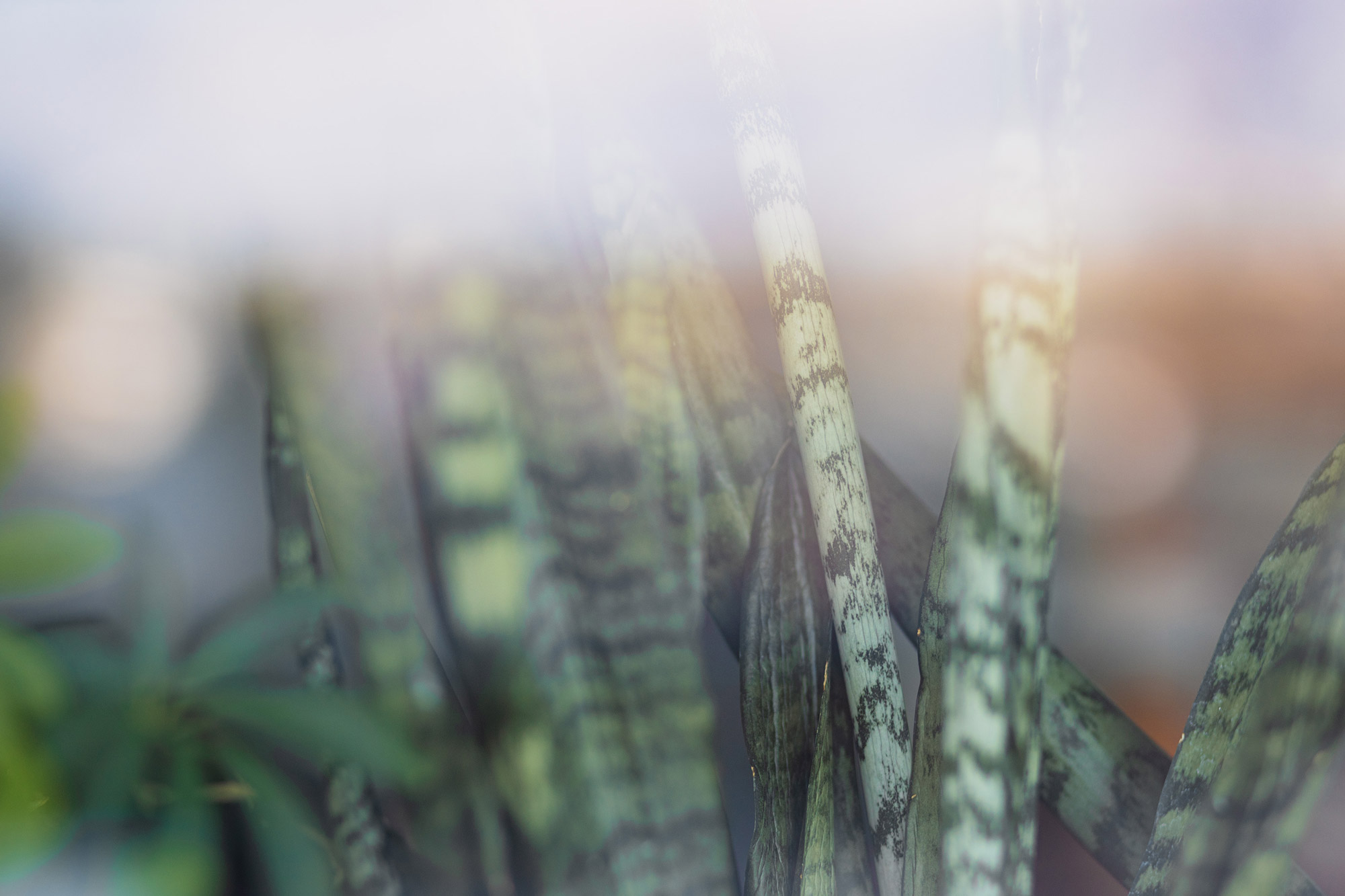
»Viele junge Leute haben noch immer keine Chance, sich einbürgern zu lassen.«
Daniel stimmt dem grundsätzlich zu, versucht aber jetzt schon, die kommenden Problematik mitzudenken: „In Berlin überlegen jetzt viele, zuhause bei sich ukrainischer Geflüchtete aufzunehmen. Das ist erst mal großartig, aber man sollte sich davor überlegen, ob man noch eine andere Person zur Betreuung organisieren kann, die vielleicht ein bisschen Russisch oder Ukrainisch spricht.“
Daniel und Ilona sind sich einig: Viele Geflüchtete werden von den Dokumentenbergen der deutschen Bürokratie im ersten Moment überfordert sein. „Ich bin sehr wütend auf die deutsche Politik,“ sagt Daniel. In der Regel spricht er sehr sanft, wechselt hier aber tatsächlich seine Stimmlage. „Wir haben nicht erst seit letzter Woche Geflüchtete aus der Ukraine in Deutschland. Viele junge Leute, die teilweise sogar noch vor dem Kriegsbeginn 2014 in die Bundesrepublik migriert sind, haben noch immer keine Chance, sich einbürgern zu lassen.“
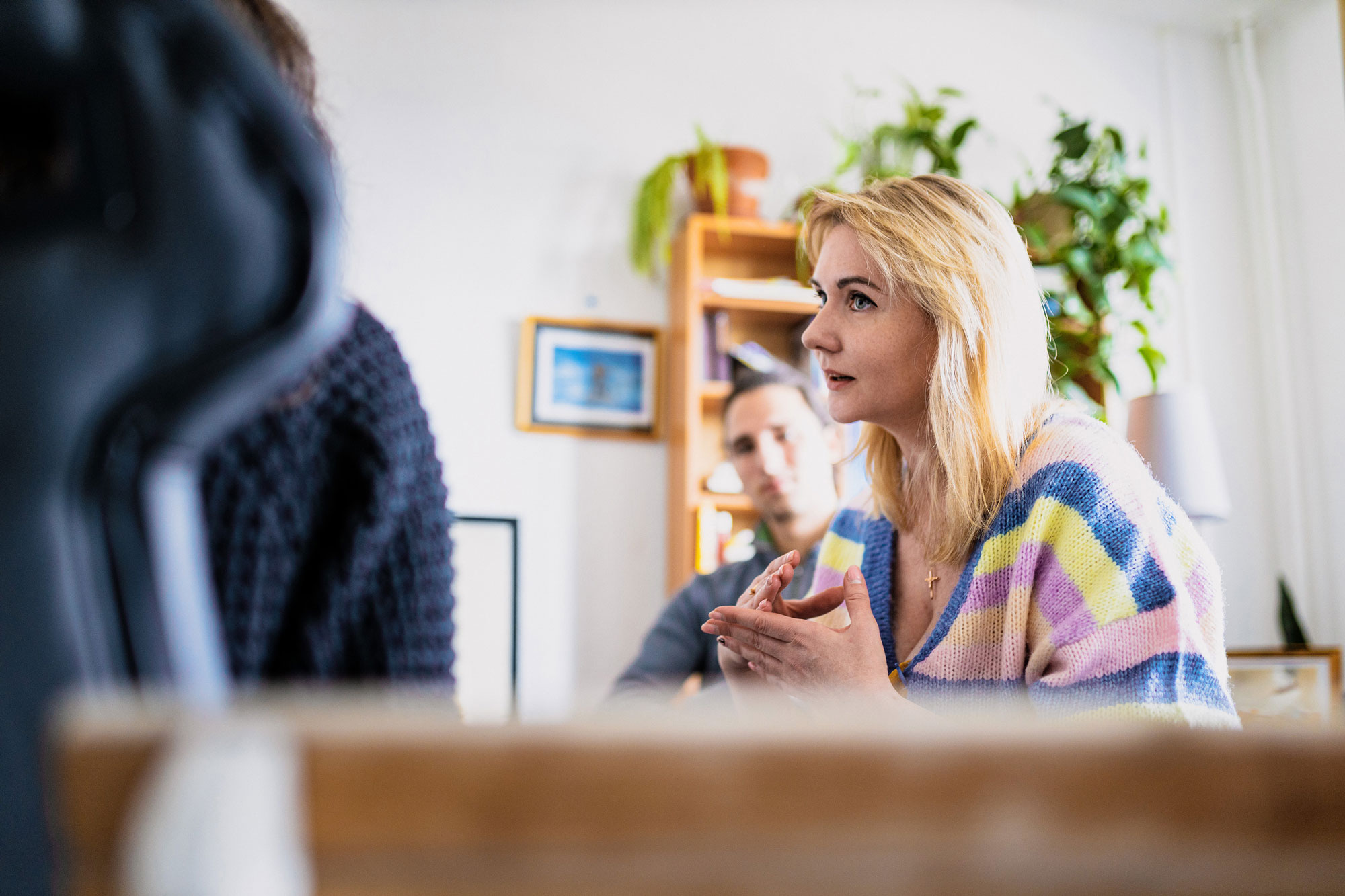
»Wir brauchen jetzt dringend ein unbürokratisches und zugängliches Verfahren für Sozialhilfen.«
Sein Blick auf die Situation wird nicht von der akuten Hilfswelle verklärt. Trotz der immensen Solidarität in der Zivilgesellschaft sähe er auf struktureller und institutioneller Ebene nach wie vor unnötige Hürden für Migrant*innen aus Osteuropa und dem postsowjetischen Raum. „Wir brauchen jetzt dringend ein unbürokratisches und zugängliches Verfahren für Sozialhilfen. Wir können uns nicht darauf verlassen, dass auch nächste Woche noch so viele freiwillige Helfer*innen an Start sein werden. Der Staat muss jetzt handeln.“
Während Daniel erzählt, sucht Inna auf ihrem Handy nach den Aufnahmen aus der Ukraine. Selbst gedrehte Videoclips, die schwere Panzer und hochbewaffnete Soldaten zeigen. Schüsse, die zu hören sind, und ein feuerverfärbter Horizont. Das liegt nun hinter ihr. Aber was liegt vor ihr und ihrer Tochter?
Für die nächsten Schritte in Deutschland werden Mutter und Tochter weiterhin Hilfe brauchen. Entscheidend wäre die Einrichtung von offiziellen Stellen, die ihr die Frage beantworten, wie sie sich finanzieren kann. Wie Deutschkurse zu belegen sind. Und wie ihre Tochter wieder in ein Schulsystem integriert werden kann. Hilfe, die jeder Mensch, der so brutal aus seinem Leben gerissen wird, auch verdient.
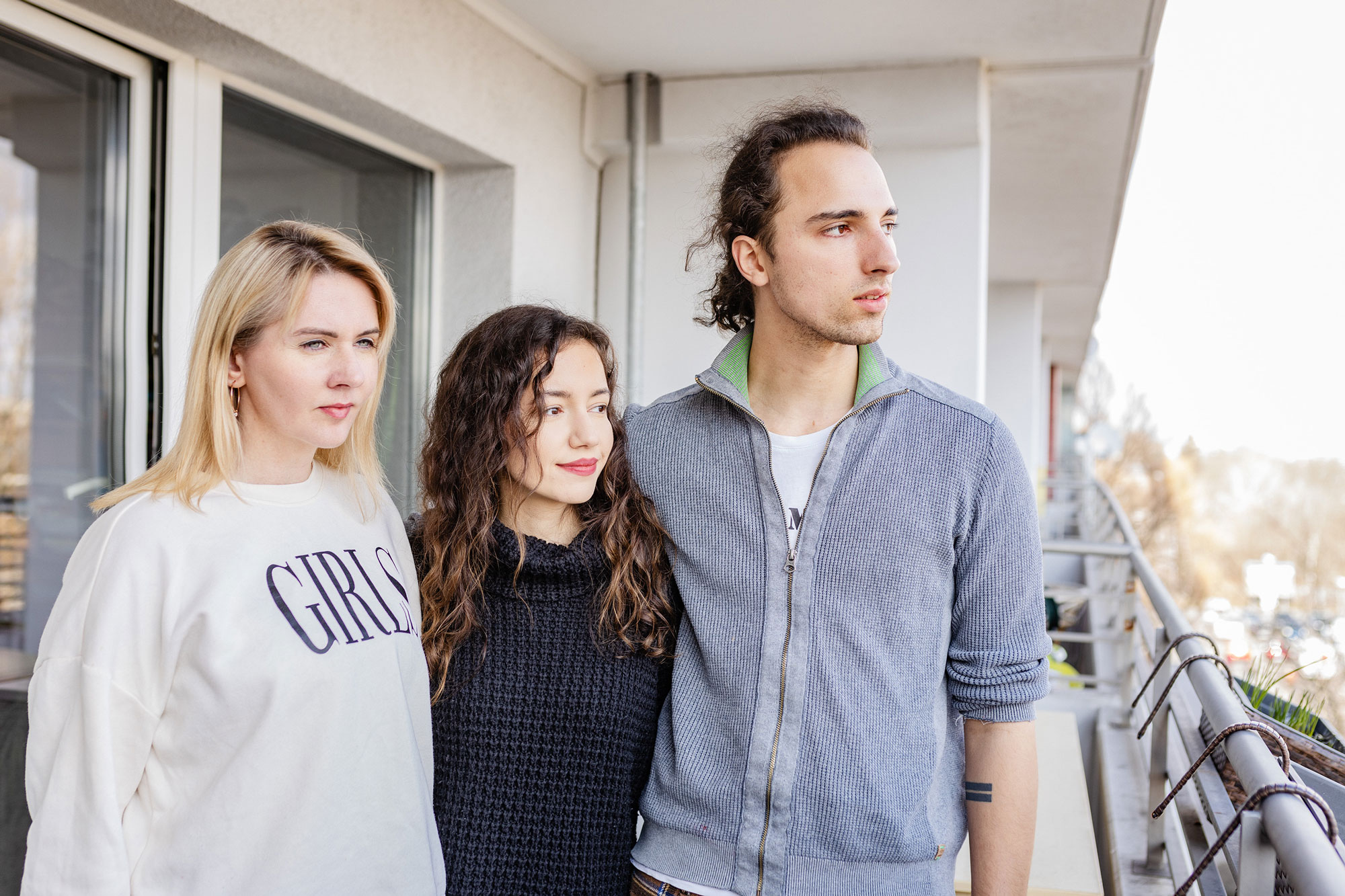
Hinweis der Redaktion: In einer früheren Version dieses Artikels haben wir das Alter des Sohnes mit 23 Jahren angegeben. Korrekt ist allerdings, dass Vlad 20 Jahre alt ist. Wir bitten diesen Fehler zu entschuldigen.
Wenn Ihr der Familie Hulievych helfen wollt, könnt Ihr das direkt über die Aktionsseite auf Gofundme tun:
Mehr von und über den Verein Vitsche:
Interview & Text: Katharina Weiß
Fotografie: Frederike van der Straeten
Mavi Phoenix
Interview — Mavi Phoenix
Songs aus einem neuen Leben
Mit seinem zweiten Studioalbum »Marlon« präsentiert Mavi Phoenix eine Platte, die rotzig ist und verträumt, energiegeladen und melancholisch. Die insgesamt 15 Songs streifen immer wieder die Musikgeschichte der letzten Jahrzehnte, haben nicht selten Ohrwurm-Potenzial und sind inhaltlich das Intimste, was Mavi Phoenix bisher zu erzählen hatte. Ein Gespräch über das ewige Thema Liebe, den großen Falco und das Gefühl, nicht genug zu sein für diese Welt.
1. März 2022 — Interview: Jonas Meyer, Fotografie: Maximilian König
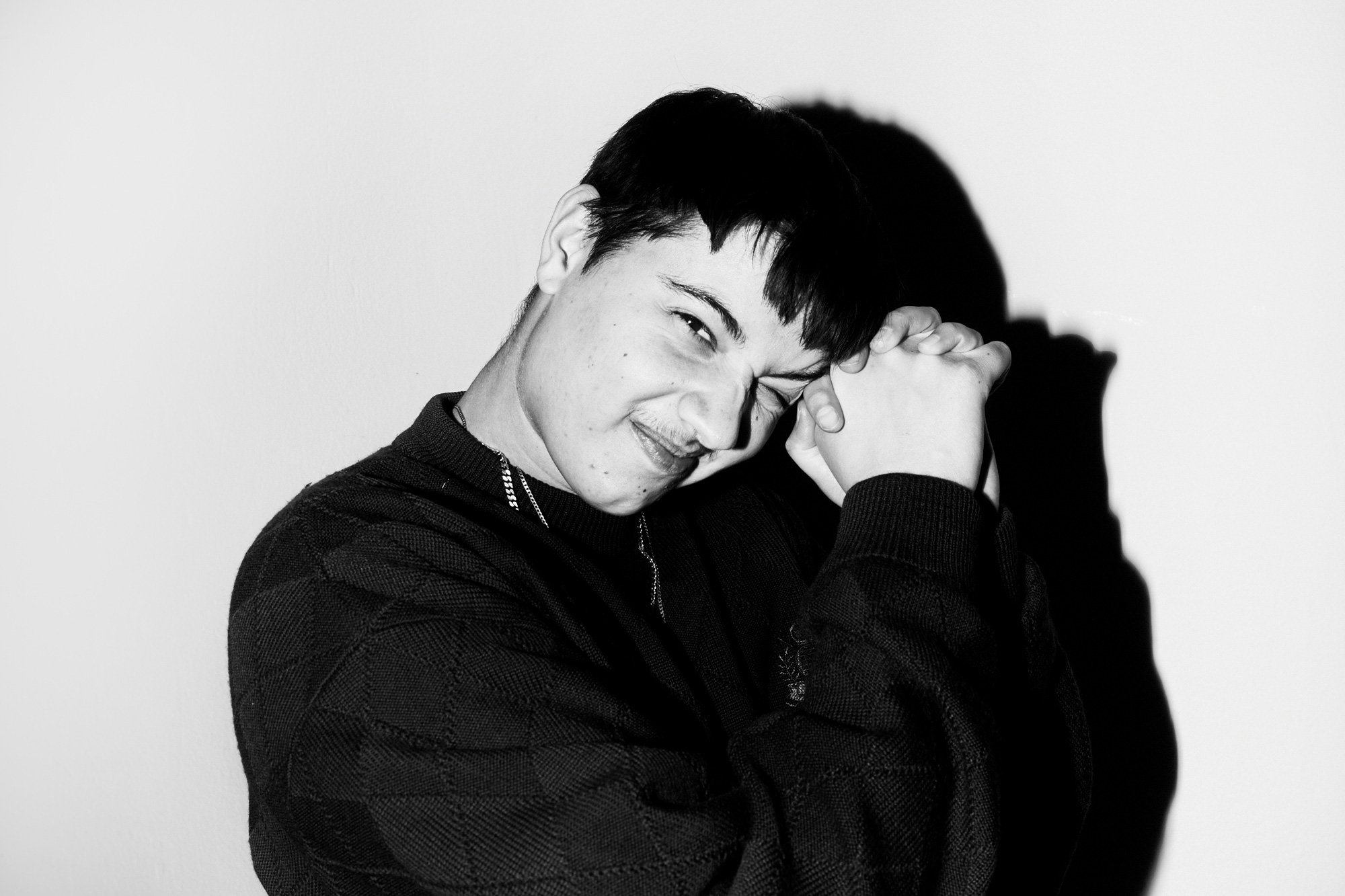
Als Jan Böhmermann am 7. Mai 2021 in seinem „ZDF Magazin Royale“ den musikalischen Gast des Abends ankündigte, folgte für das Publikum das, was es seit Jahren gewohnt ist: gute Musik in den Schlussminuten, mal präsentiert von einem Newcomer, mal von einer nationalen oder internationalen Größe, und in der Regel unterstützt vom Rundfunktanzorchester Ehrenfeld.
Doch für Mavi Phoenix, den Act des Abends, war die Performance seines Songs „Nothing Good“ alles andere als Routine. Nicht, dass er vorher nicht auf einer Bühne gestanden hätte. Ganz im Gegenteil: Der 1995 in Linz geborene Künstler macht seit fast einer Dekade Musik. Und sogar in Böhmermanns Show hatte er bereits gespielt, 2018 war das. Doch da stand Mavi Phoenix auf jener Bühne noch als Frau. Und nun, am Abend des 7. Mai 2021, als Mann.
Es war sein erster öffentlicher Auftritt nach der Transition. Mitte 2020 hatte sich Marlon Nader, wie Mavi Phoenix heute mit bürgerlichem Namen heißt, ins Private zurückgezogen, um sich erstens seiner körperlichen und mentalen Veränderung zu widmen und sich zweitens damit zu beschäftigen, welchen Einfluss diese Transition auf seine Musik haben würde.
Die Songs, die seitdem entstanden sind, hat Mavi Phoenix nun auf einem Album zusammengefasst. Die Platte mit dem Titel „Marlon“ ist eine Kollektion eindrücklicher Tracks, die allesamt von der Gitarre aus entwickelt wurden und sich emotional zwischen rotzig-energiegeladen und melancholisch-verträumt bewegen – und das nicht selten mit Ohrwurm-Potenzial. Das Besondere an den insgesamt 15 Songs ist, dass man darin immer wieder beiläufig auf Stilelemente stößt, die man aus den letzten drei bis vier Jahrzehnten Musikgeschichte kennt. Das löst interessante Erinnerungseffekte aus – zumindest bei jenen Menschen, die diese Zeit bewusst erlebt haben.
Inhaltlich hat sich Mavi Phoenix mit seinem neuen Album ganz und gar den Themen Liebe, Sex und Beziehung verschrieben. Damit öffnet sich der trans Mann in intimer Art und Weise allen, die ihm zuhören – und bereichert gleichzeitig die Musikwelt mit einer Perspektive, bei der es höchste Zeit ist, sie zu erzählen.
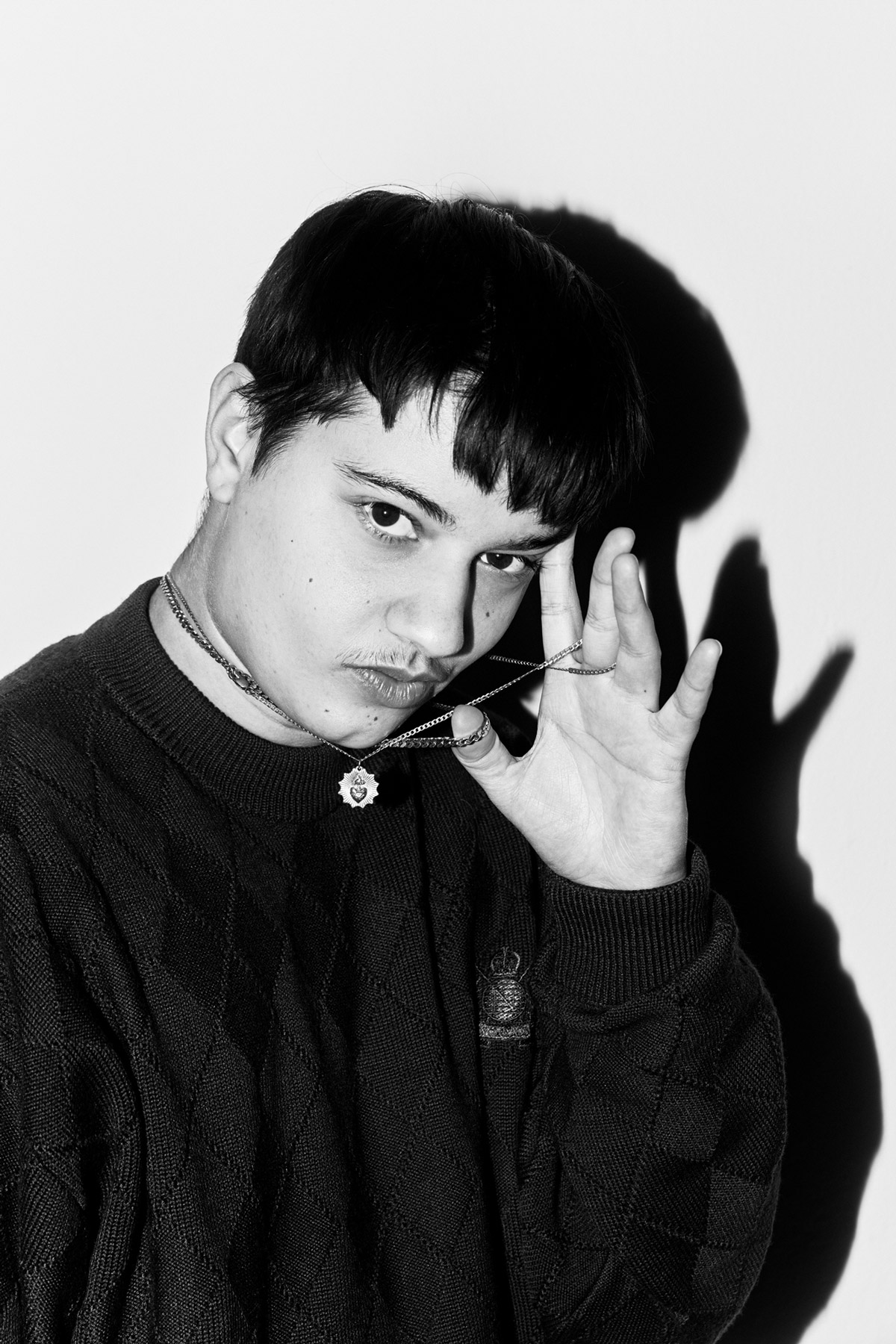
MYP Magazine:
Vor knapp zwei Jahren hast Du dich aus der Öffentlichkeit zurückgezogen, um Dich deiner Transition zu widmen und Dich gleichzeitig auch musikalisch zu verändern. Braucht es für so eine „doppelte Transition“ auch einen doppelten Kraftaufwand?
Mavi Phoenix:
In meinem Fall haben es mir die körperlichen und psychischen Veränderungen eher erleichtert, mich auch künstlerisch neu zu erfinden – etwas anderes blieb mir auch gar nicht übrig. Aufgrund der Hormone war meine Stimme plötzlich eine komplett andere und ich musste schauen, wie ich damit umgehe. Musikalisch haben sich dadurch einige Türen verschlossen, aber dafür auch viele neue aufgetan. So gingen am Ende beide Transitionsprozesse Hand in Hand und haben sich sogar gegenseitig befruchtet.
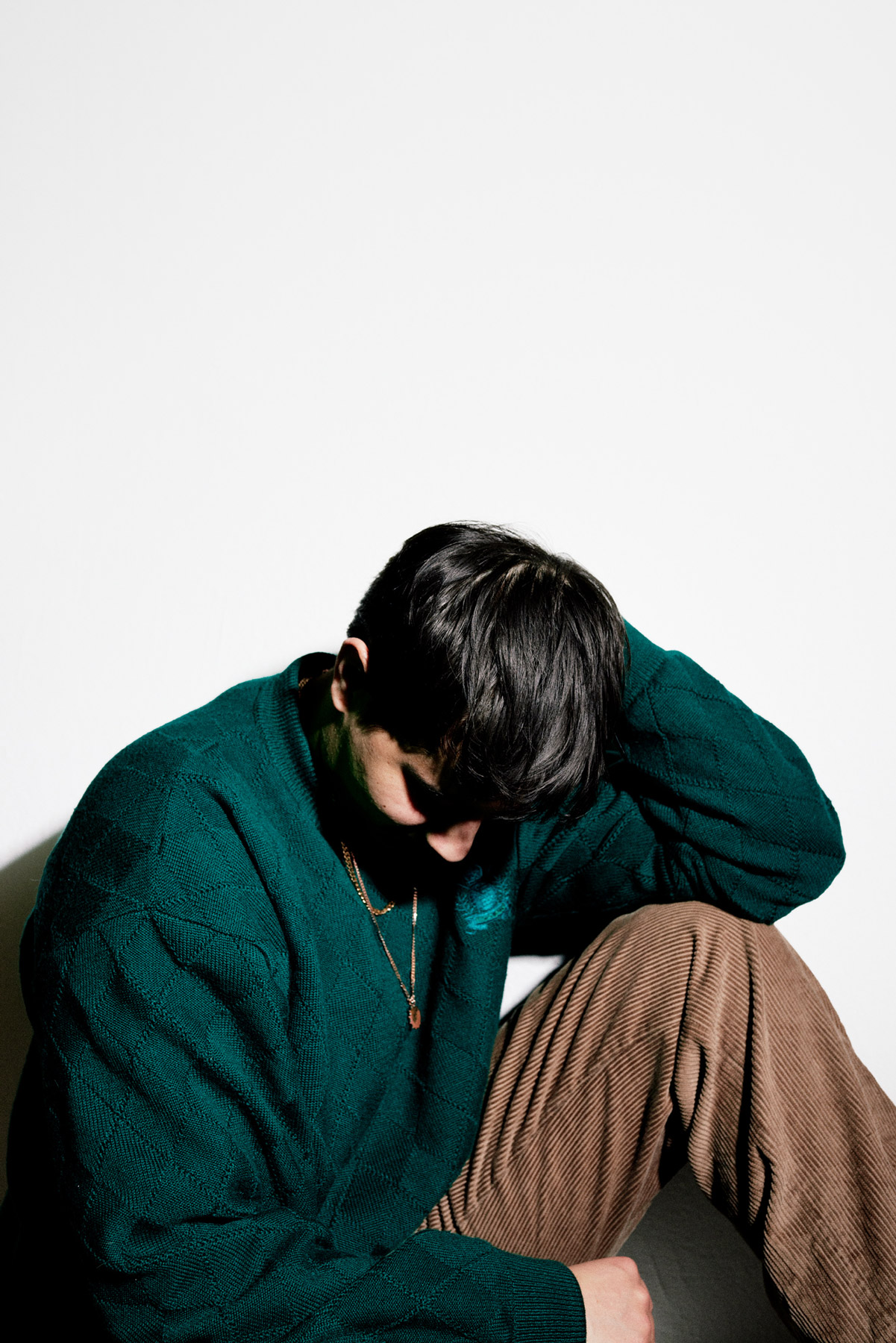
»Einer Frau hat man es wohl nicht zugetraut, dass sie selbst auch Songs schreibt und produziert.«
MYP Magazine:
Hattest Du in dieser Zeit ein konkretes musikalisches Ziel vor Augen, das Du unbedingt erreichen wolltest?
Mavi Phoenix:
Naja, in erster Linie wollte ich der Welt mal zeigen, dass ich ein ernsthafter Musiker bin. Vor meiner Transition sind die Leute nie wirklich darauf eingegangen, dass ich selbst auch Songs schreibe und produziere – das hat man einer Frau wohl nicht zugetraut. Sexismus pur, könnte man sagen. Es musste sich also dringend was ändern. Was ich mir dabei allerdings bewahren wollte, ist die Rotzigkeit meiner Musik. Das gehört einfach zu mir und mag ich immer noch sehr.
MYP Magazine:
Der erste Track, den Du 2021 nach Deiner Transition veröffentlicht hast, ist „Grass And The Sun“. Die Melodie des Songs hat absolutes Ohrwurm-Potenzial. Wie bist Du auf dieses eingängige Gitarrenlick gekommen, das den Song so charakteristisch macht?
Mavi Phoenix:
Zu dem Zeitpunkt, als der Song entstanden ist, war ich alles andere als ein guter Gitarrist. Trotzdem hatte ich immer wieder dieses Instrument in der Hand und wollte ausprobieren, was zu diesem Pad passte, das es bereits gab. So ist am Ende die Melodie entstanden – durch bloßes Herumspielen.
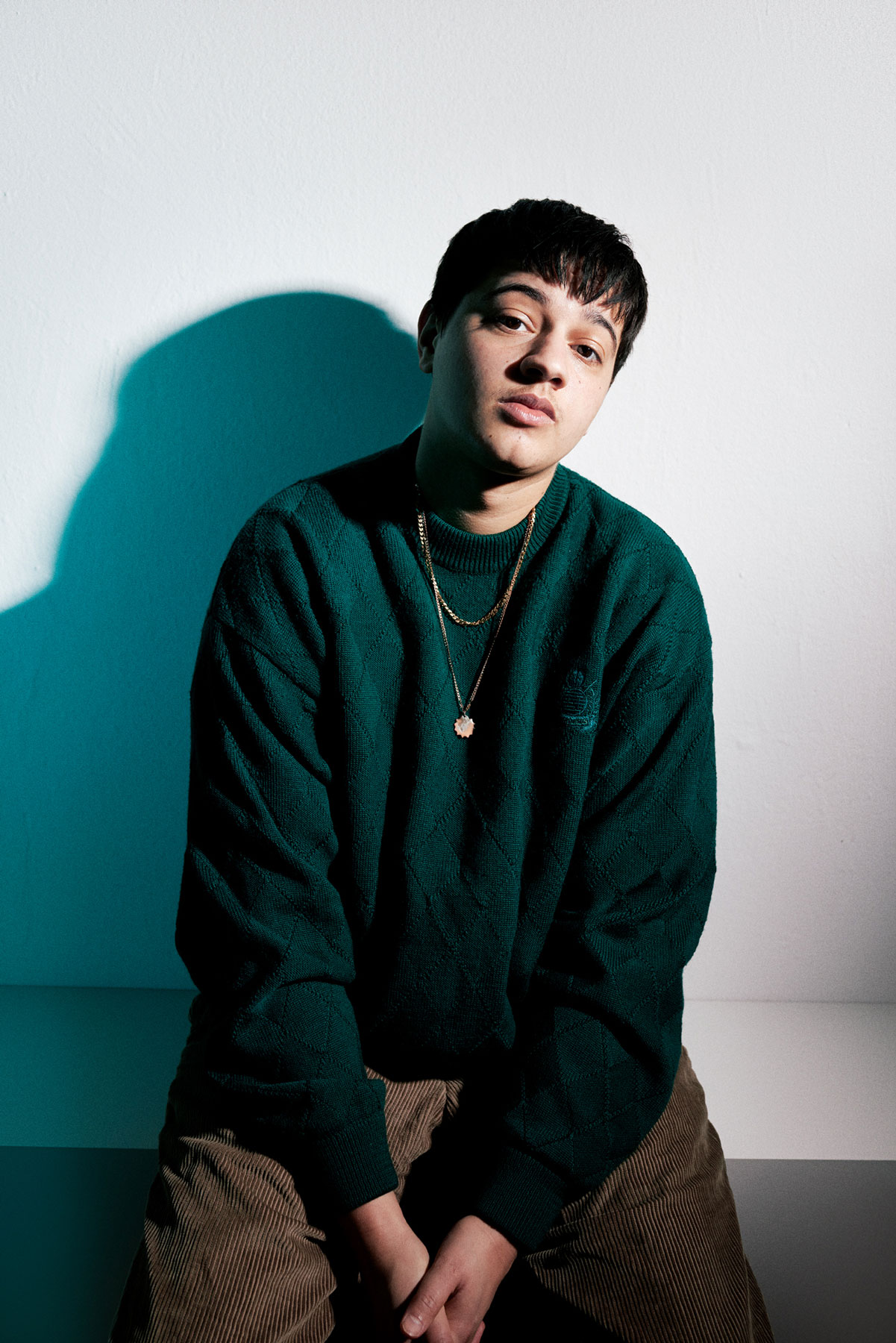
»Bei meiner Musik war es schon immer Fluch und Segen zugleich, dass man sie nicht einordnen kann.«
MYP Magazine:
Wenn man Dein neues Album „Marlon“ durchhört, entdeckt man immer wieder stilistische Elemente aus den letzten drei bis vier Jahrzehnten Musikgeschichte. Mal fühlt man sich an Crowded House oder Cigarettes After Sex erinnert, mal hat man das Gefühl, Du hättest dich von Mura Masa oder Tyler, The Creator inspirieren gelassen. Zusammengenommen erzeugt das eine große musikalische, aber auch emotionale Spannweite. Warum war es Dir wichtig, so viele Elemente aus unterschiedlichen Epochen miteinander zu verknüpfen?
Mavi Phoenix:
Ganz einfach: weil ich es gar nicht anders kann. Bei meiner Musik war es schon immer Fluch und Segen zugleich, dass man sie nicht einordnen kann. Fluch deshalb, weil man bei der Konzeption einer Platte immer das Ziel haben sollte, dass sich die Zusammenstellung der Songs nach einem echten Album anfühlt – und nicht nach einer zerfahrenen Ansammlung von Einzeltracks. Und in Zeiten von Spotify und seinen Algorithmen ist es ohnehin nicht das Schlechteste, wenn man sich als Musiker halbwegs einer bestimmten Richtung zuordnen lässt.
Auf der anderen Seite ist es für mich ein großer Segen, so viele stilistische Elemente miteinander vereinen zu können. Damit entspricht meine Musik eins zu eins meinem Wesen. Dass sich das im Laufe der Jahre so entwickelt hat, liegt wahrscheinlich daran, dass ich selbst ein riesiger Musikfan bin und alles aufsauge, was ich gut finde – und das kann wirklich vieles sein. Mein langjähriger Produzent Alex The Flipper, der auch einer meiner engsten Freunde ist, tickt da ganz genauso. Das neue Album kann man daher als ein Spiegelbild unserer gemeinsamen musikalischen Philosophie begreifen. Und ganz ehrlich: Ich glaube, dass es trotzdem super stimmig geworden ist.
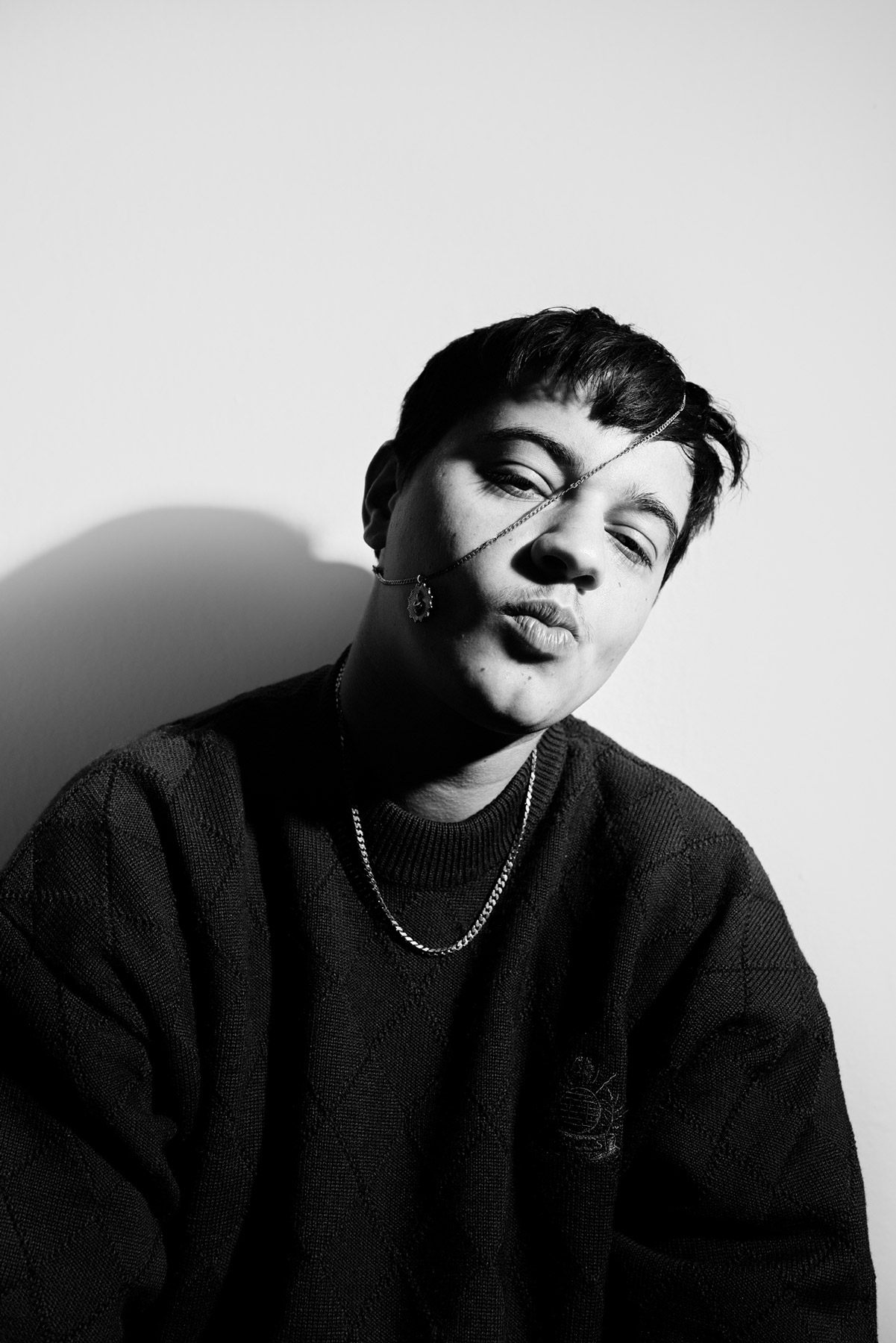
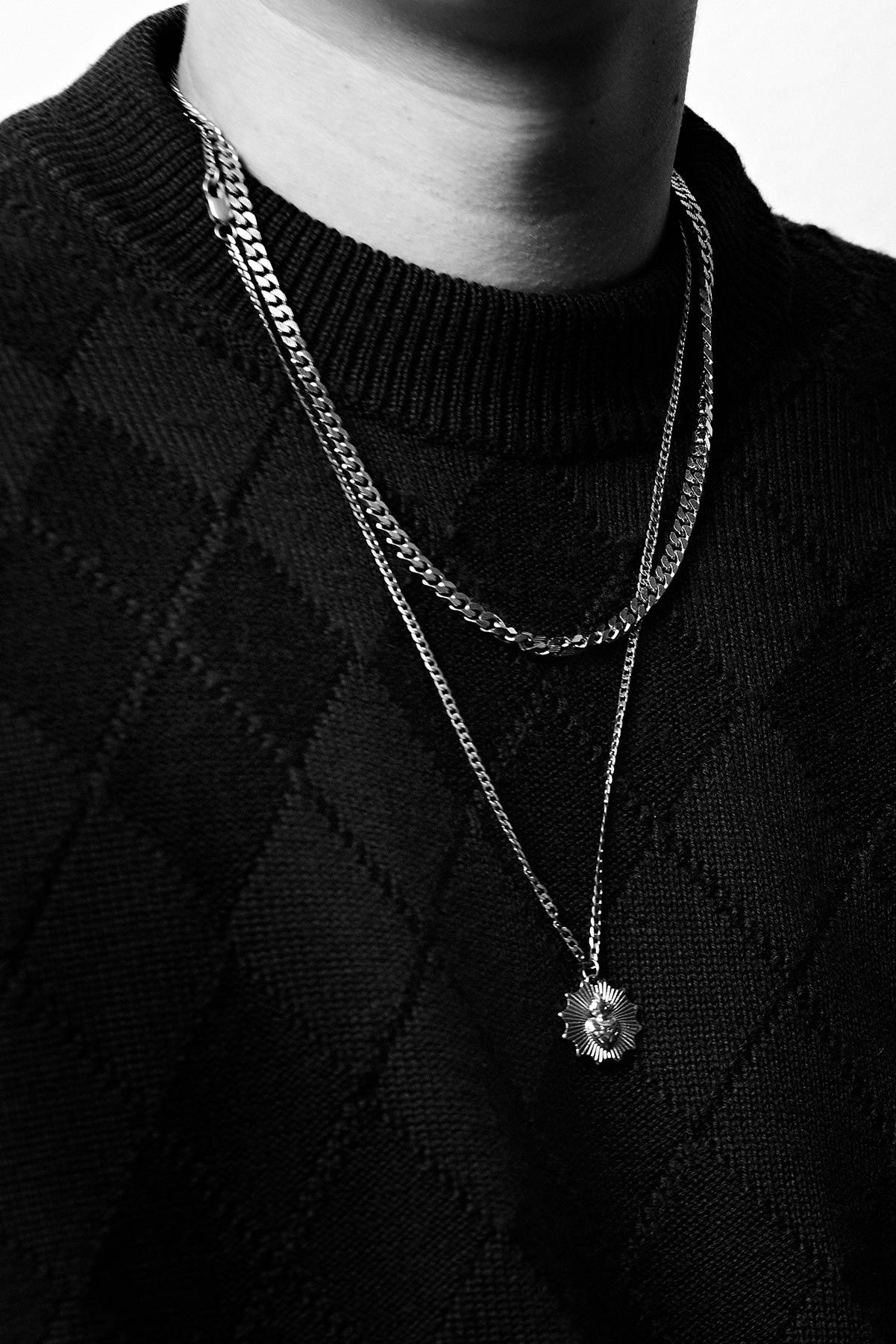
»Mit dem Thema Liebe wollte ich mich musikalisch nie befassen. Aber jetzt auf einmal schreibe ich fast nur noch über Sex!«
MYP Magazine:
Auf dem Album geht es hauptsächlich um die Themen Liebe, Sex und Beziehung. Das ist für Musiker*innen erst mal nichts Neues. Neu ist aber, dass die Songs aus der Perspektive eines heterosexuellen trans Mannes geschrieben sind. Hast Du das Gefühl, dass Du damit einen Schleier lüftest, der über der Musikbranche lag, insbesondere über dem Genre, in dem Du dich bewegst?
Mavi Phoenix:
Ich weiß es nicht. Ich weiß nur, dass das Thema Liebe eigentlich immer eines war, mit dem ich mich musikalisch nie befassen wollte – weil das so gut wie jeder macht. Aber durch die Transition hat sich in meinem Leben so viel verändert und Themen wie Liebe, Sex oder Beziehung wurden plötzlich so präsent, dass ich den Drang hatte, all das auch in meiner Musik zu verarbeiten. Und das konnte nur gelingen, weil ich mich mittlerweile absolut frei fühle und fein mit mir bin.
Interessanterweise hat mein Produzent Alex früher immer gesagt: „Mavi Phoenix ist komplett asexuell.“ Aber jetzt auf einmal schreibe ich fast nur noch über Sex! Erst durch die Transition konnte ich darüber wirklich frei nachdenken, erst durch die Transition konnte ich diese spezifischen Gefühle überhaupt nachempfinden. Auch wenn diese Thematik uralt ist, hoffe ich, dass sich die Songs trotzdem fresh genug anhören, (lächelt)
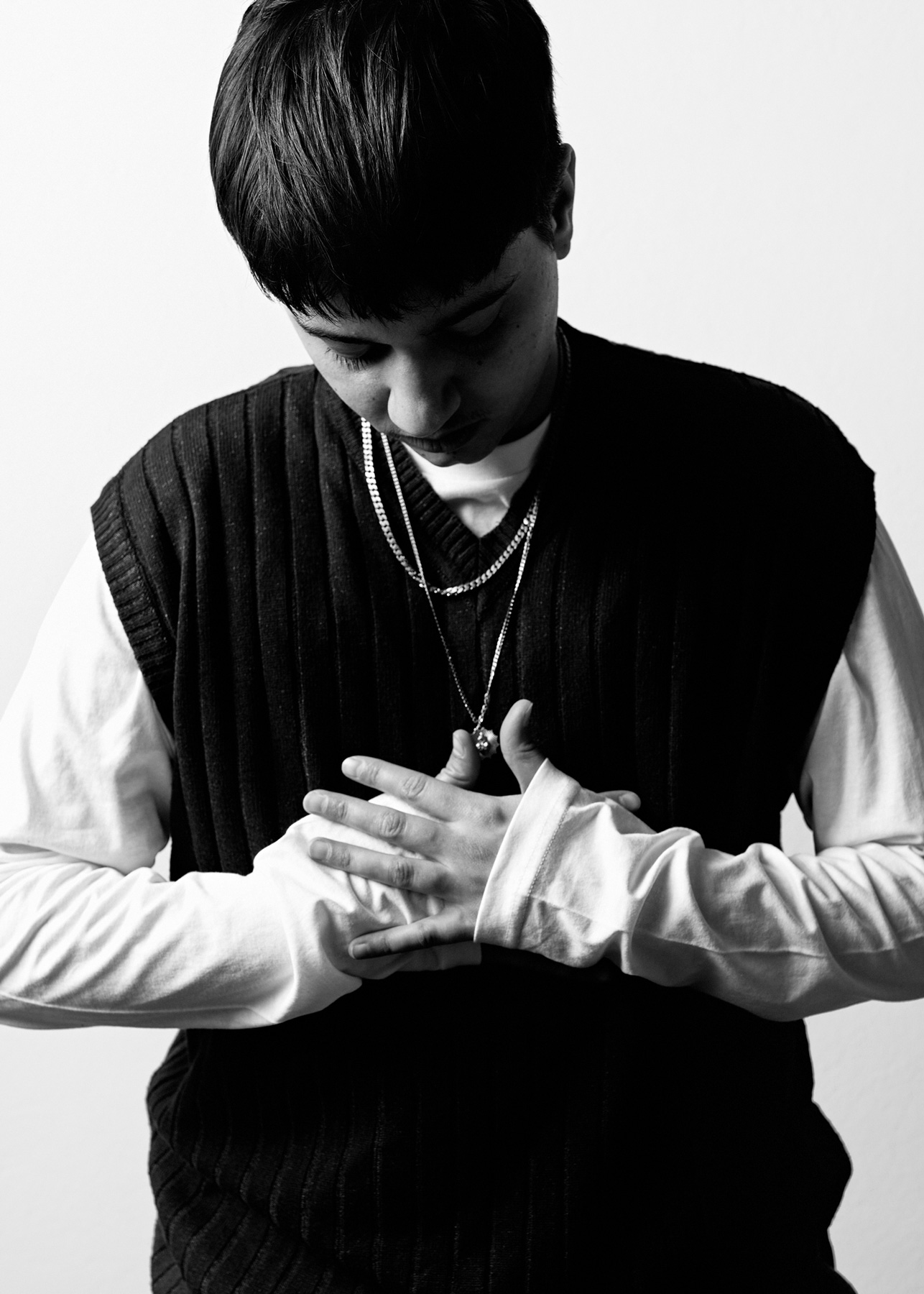
»Für mich sind Leute, die sich heute mit 15, 16 Jahren outen, die wirklichen role models.«
MYP Magazine:
In den letzten Jahren haben sich immer mehr queere Künstler*innen im Musikbusiness sichtbar gemacht, national wie international. Menschen wie Lil Nas X oder Tyler, The Creator ist es sogar gelungen, die archaisch geprägte Rapszene aufzubrechen. Würdest Du von Dir sagen, dass Du ebenfalls ein Wegbereiter bist, vielleicht sogar ein Vorbild?
Mavi Phoenix:
Ich merke immer wieder, dass viele meiner Fans und Follower dieselben Themen haben wie ich. Und da ich als Künstler diese Themen in die Öffentlichkeit tragen kann, habe ich auch ein bisschen das Gefühl, ein role model zu sein. Was soll ich auch anderes machen, diese Rolle wurde mir ja geradezu auferlegt. Das war auch vor der Transition schon so: Da galt ich für viele als Wegbereiterin, weil ich ein weiblicher Rapper war. Aber damit habe ich mich überhaupt nicht wohlgehfühlt. In der Rolle, die mir mittlerweile zugeschrieben wird, gehe ich dagegen wesentlich mehr auf. Das ist jetzt tatsächlich mein Thema.
Übrigens: Für mich persönlich sind Leute, die sich heute mit 15, 16 Jahren outen, die wirklichen role models. Ich finde das in dem Alter absolut bemerkenswert. Hätte ich selbst damals schon YouTube oder Instagram gehabt, wäre ich vielleicht viel früher darauf gekommen, dass ich trans bin – und hätte mich schon mit 14 geoutet statt mit 24.
MYP Magazine:
Hast Du Sorge, dass Deine Musik durch dieses Thema in den Hintergrund rückt?
Mavi Phoenix:
Das ist tatsächlich ein schwieriger Spagat für mich. Auf der einen Seite möchte ich öffentlich darüber sprechen, trans zu sein. Auf der anderen Seite möchte ich aber auch nicht darauf reduziert werden, sondern einfach meine Musik in die Welt tragen. Am Ende hat man es eh selbst in der Hand, wieviel man darüber spricht und postet.
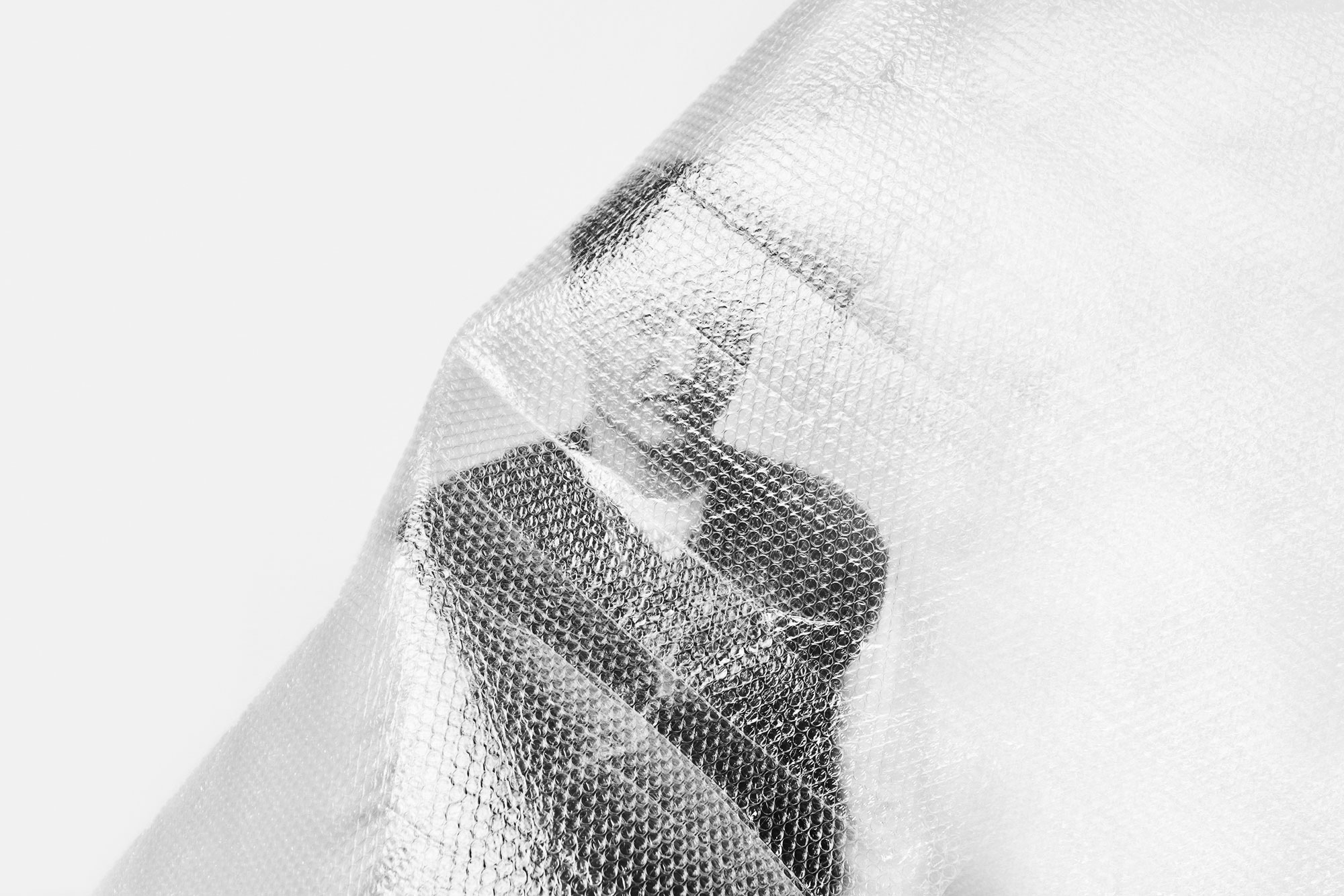
»Ich hatte mein ganzes Leben lang das Gefühl, nicht genug zu sein.«
MYP Magazine:
In Deinem Song „Nothing Good“ gibt es die bemerkenswerte Zeile: „Nothing is ever right with you / nothing is ever good with you”. Was macht es mit einer Person, wenn sie immer wieder das Gefühl hat, mit ihr sei nichts richtig, mit ihr sei nichts gut?
Mavi Phoenix:
Damals, als ich diese Zeilen geschrieben habe, hatte ich eine bestimmte Person vor Augen. Und heute frage ich mich, wie ich es mir überhaupt anmaßen konnte, solche Worte einem anderen Menschen in den Mund zu legen. Mittlerweile bin ich mir sicher, dass ich die Passage unterbewusst an mich selbst gerichtet habe, denn ich hatte mein ganzes Leben lang das Gefühl, nicht genug zu sein. Alles fühlte sich so an, als würde es nicht zusammenpassen. Und, als müsse ich dringend irgendetwas tun, um glücklich zu werden.
MYP Magazine:
Auch bei den anderen Songtexten weiß man nie so richtig, ob Du gerade Dich selbst, die Zuhörer*innen oder eine dritte Person meinst. Was reizt Dich so an diesem feinen Spiel mit Sprache?
Mavi Phoenix:
Ich würde das gar nicht als Spiel bezeichnen. Wenn ich heute einen Songtext schreibe, weiß ich eigentlich nie, wen ich da gerade im Kopf habe. Zwar ist das neue Album inhaltlich sehr nah an mir dran – vielleicht sogar näher, als viele vermuten – und verfügt über eine klare, direkte Sprache. Aber gleichzeitig stellt sich beim Hören auch dieses Gefühl ein, dass man nie wirklich weiß, wer gerade gemeint ist. Diesen Effekt mag ich sehr.
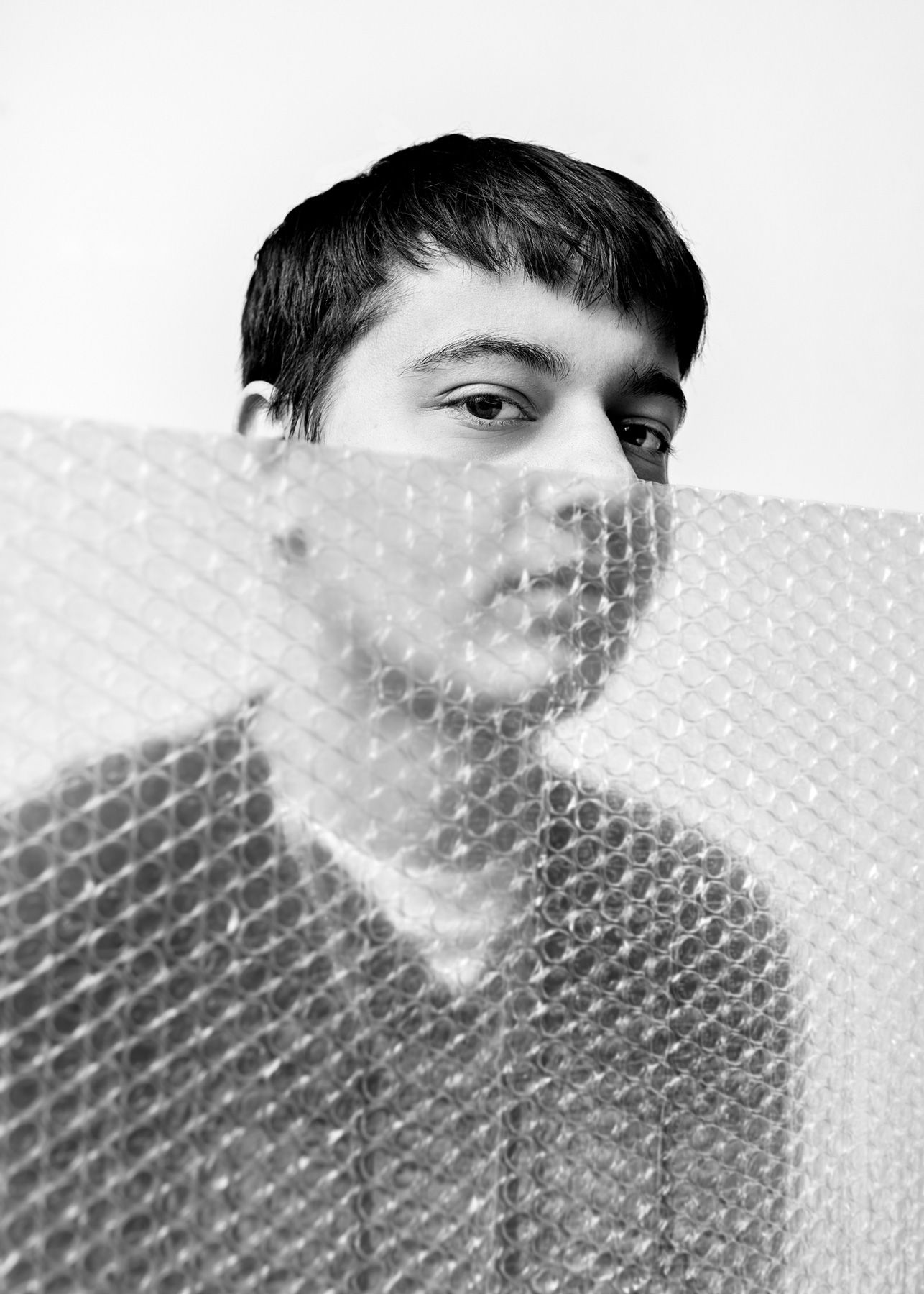
»Mit Falco fühle ich mich auf eine seltsame Art verbunden.«
MYP Magazine:
Apropos Songtext: In „So happy I’m useless“ gibt es die Zeile „Everything right / Mister Kommissar“. Man kann gar nicht anders, als diese Stelle als einen kleinen Gruß an den legendären Falco zu verstehen. Welchen Bezug hast Du zu dem 1998 verstorbenen Künstler, der bis heute als einer der kreativsten und erfolgreichsten deutschsprachigen Musiker gilt?
Mavi Phoenix:
Mit Falco fühle ich mich auf eine seltsame Art verbunden – wahrscheinlich, weil auch er ein sehr unsicherer Mensch war und vieles von dem zu kaschieren versucht hat, was wirklich in ihm vorgegangen ist. Ich vermute, dass Johann Hölzel, wie er mit bürgerlichem Namen hieß, immer das Gefühl hatte, selbst nicht gut genug zu sein. Nicht auszureichen. Nicht prickelnd oder cool zu wirken. Und so hat er mit Falco eine Kunstfigur erschaffen, die all das vermochte. Davon abgesehen ist es für uns Österreicher ohnehin crazy, weil Falco bis heute der Einzige ist, der weltweit was gerissen hat.
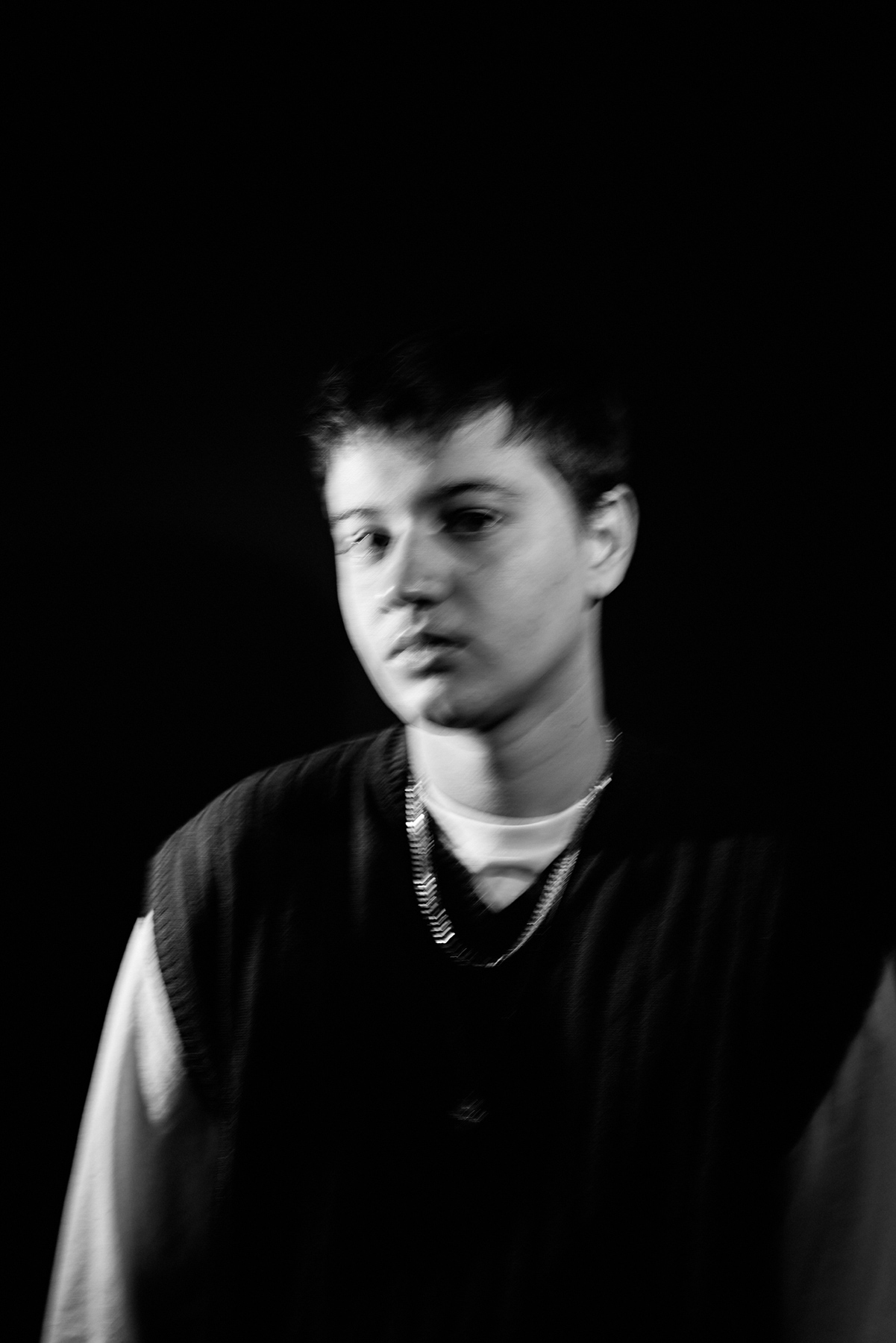
»Das einzig Wichtige ist, dass ich hungrig bleibe.«
MYP Magazine:
Neben Falco scheinen auch River Phoenix und Drake eine besondere Bedeutung für Dich zu haben.
Mavi Phoenix:
Absolut! River Phoenix hat mich zu meinem Künstlernamen inspiriert. Er war einfach ein cooler Typ, das hat mir imponiert. Ich wünschte, ich selbst wäre so cool. Auf ihn gestoßen bin ich durch meinen Vater, der immer viel von ihm erzählt hat. Leider ist River Phoenix sehr jung verstorben, eine wirklich tragische Geschichte. Aber mit „Stand By Me“ hat er sich eh unsterblich gemacht.
Und was Drake angeht, ist er wahrscheinlich der Künstler, dessen Musik ich in den letzten zehn Jahren am meisten gehört habe. Mittlerweile habe ich zwar ein paar Hemmungen, das zuzugeben, weil er als Person ein wenig cringy geworden ist, aber seine Songs mag ich nach wie vor sehr.
MYP Magazine:
Blicken wir in Deine musikalische Zukunft: Was kommt nach „Marlon“?
Mavi Phoenix:
Dieses Album habe ich weitgehend von der Gitarre aus entwickelt, das war nach dem letzten Album absolut neu für mich. Aber jetzt habe ich voll Lust, wieder etwas komplett anderes zu machen. Ich würde gerne noch Etliches ausprobieren, von dem ich aktuell denke, darin nicht so gut zu sein. Und ich möchte auf jeden Fall mehr rappen. Mal sehen. Das einzig Wichtige ist, dass ich hungrig bleibe und weiter Bock habe, Musik zu machen. Dann kommt am Ende eh irgendwas dabei heraus.
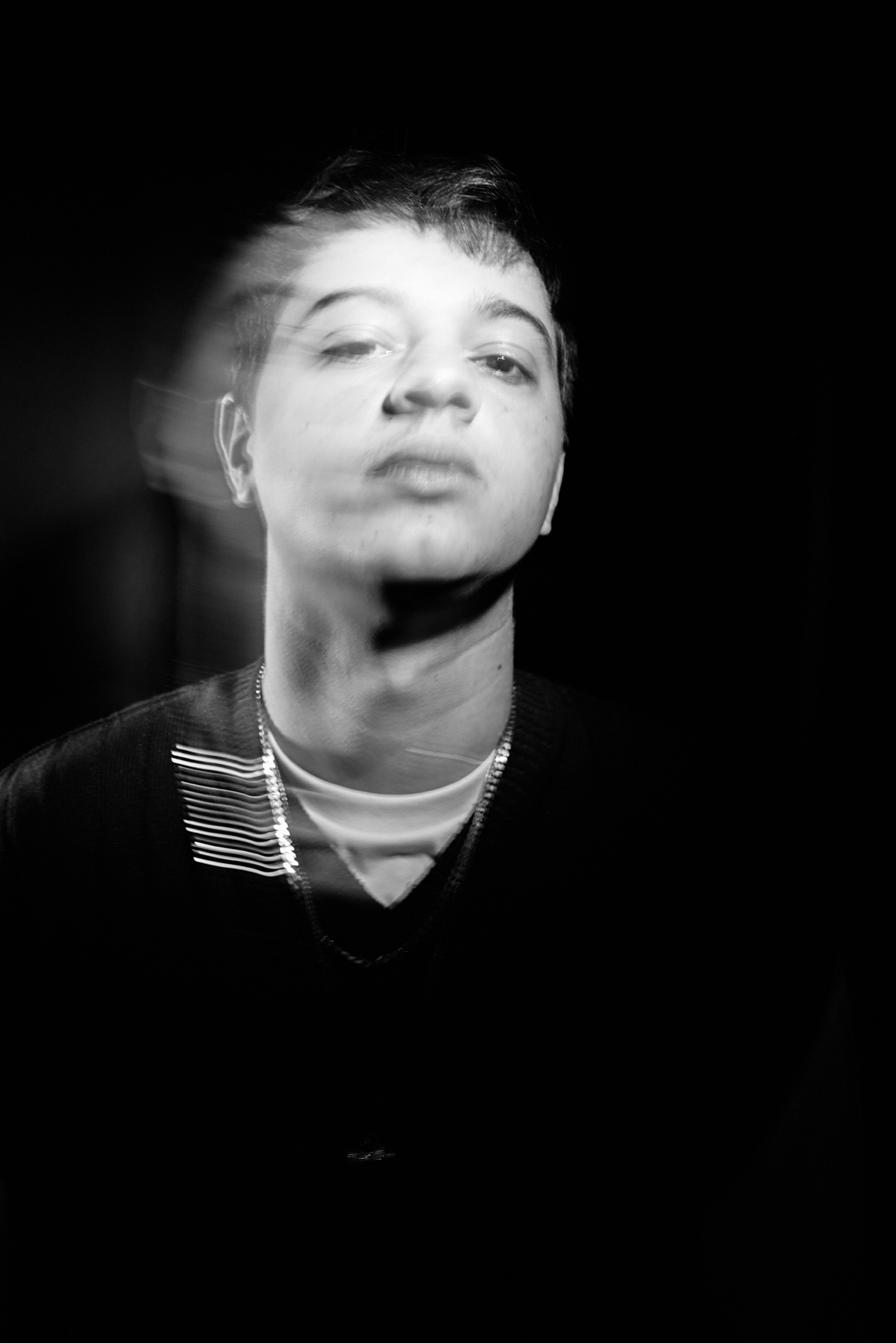
#maviphoenix #marlon #mypmagazine
Mehr von und über Mavi Phoenix:
Fotografie: Maximilian König
Interview: Jonas Meyer
Jamie Sisley & Wyatt Oleff
Interview — Jamie Sisley & Wyatt Oleff
»Caring for a loved one is a rollercoaster«
With »Stay Awake,« Emmy-nominated director Jamie Sisley tells the story of two teenage brothers who must deal with the prescription drug addiction of their mother. The film—which is based on Sisley’s very own childhood experiences—sheds light on the struggles of a middle-class family in small-town America. On the day of the picture’s world premiere at the Berlin International Film Festival, we met the director and one of his main actors, Wyatt Oleff, for an interview and photo shoot.
18. Februar 2022 — Interview & text: Jonas Meyer, Photography: Osman Balkan
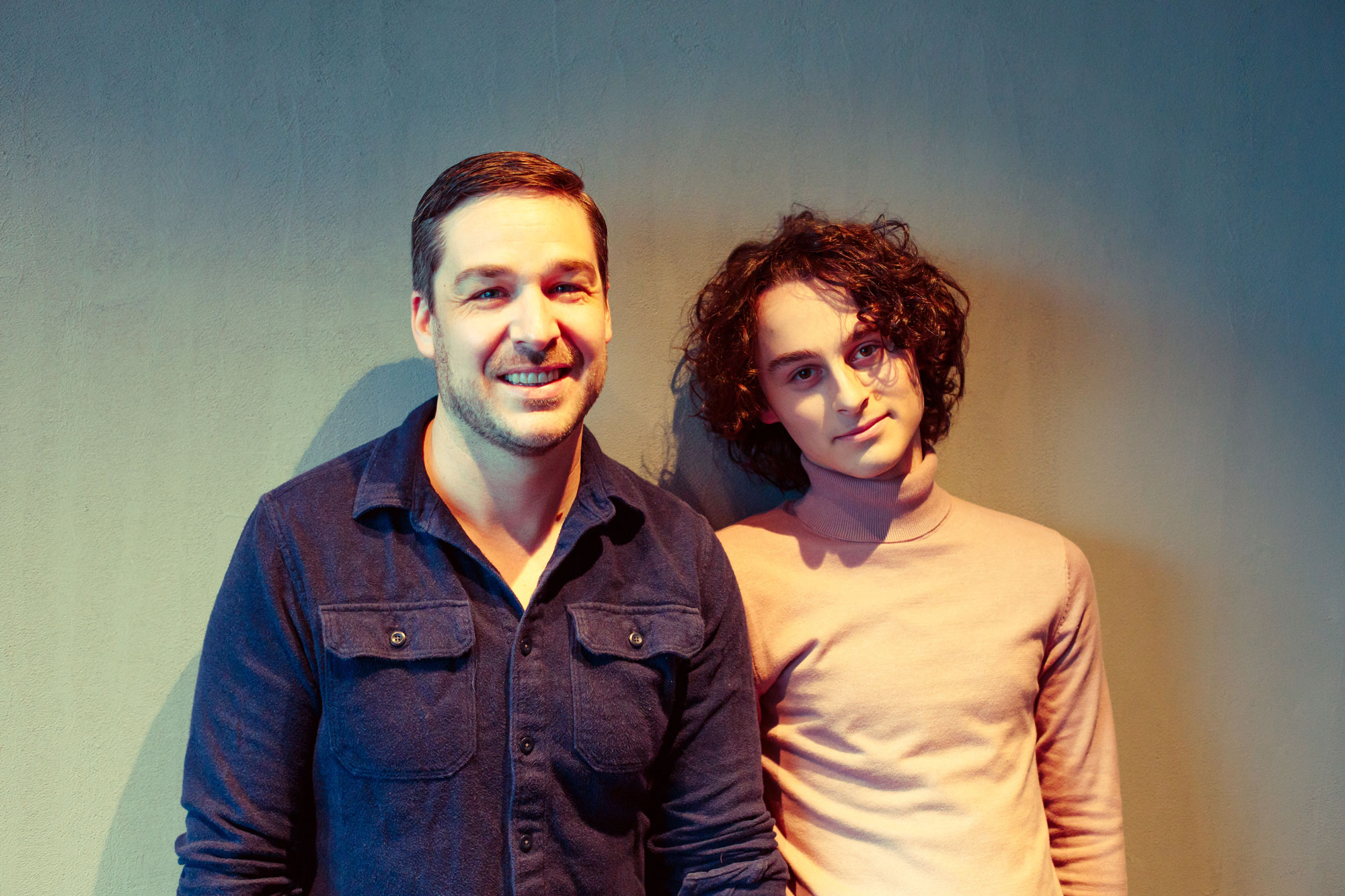
In movies, there is hardly anything more romanticized than the idealized world of 1950s America. Whether in blockbusters or independent films, a cinematic image has settled into our minds in the last decades that—with all the bowling alleys, ice cream parlors, dim neon displays and endless highways—embeds us in a cozy imagination of the good old days in the United States of America.
It is easy to dispel this façade and to recognize that something has been crumbling and shaking the foundations of this country for a long time. Politics, economy, society—the effects of this decay are easy to name for everybody. But there’s still another issue that not that many people are aware of, a crisis that affects millions of people in the U.S. and many more around the world: addiction to prescription drugs and opioids.
Since American doctors in the 1990s started to freely prescribe narcotics even for moderate pain, a veritable mass addiction has developed over the years. This epidemic not only affects economically disadvantaged and marginalized people but also middle-class families, as Emmy-nominated director Jamie Sisley shows in his new picture, Stay Awake.
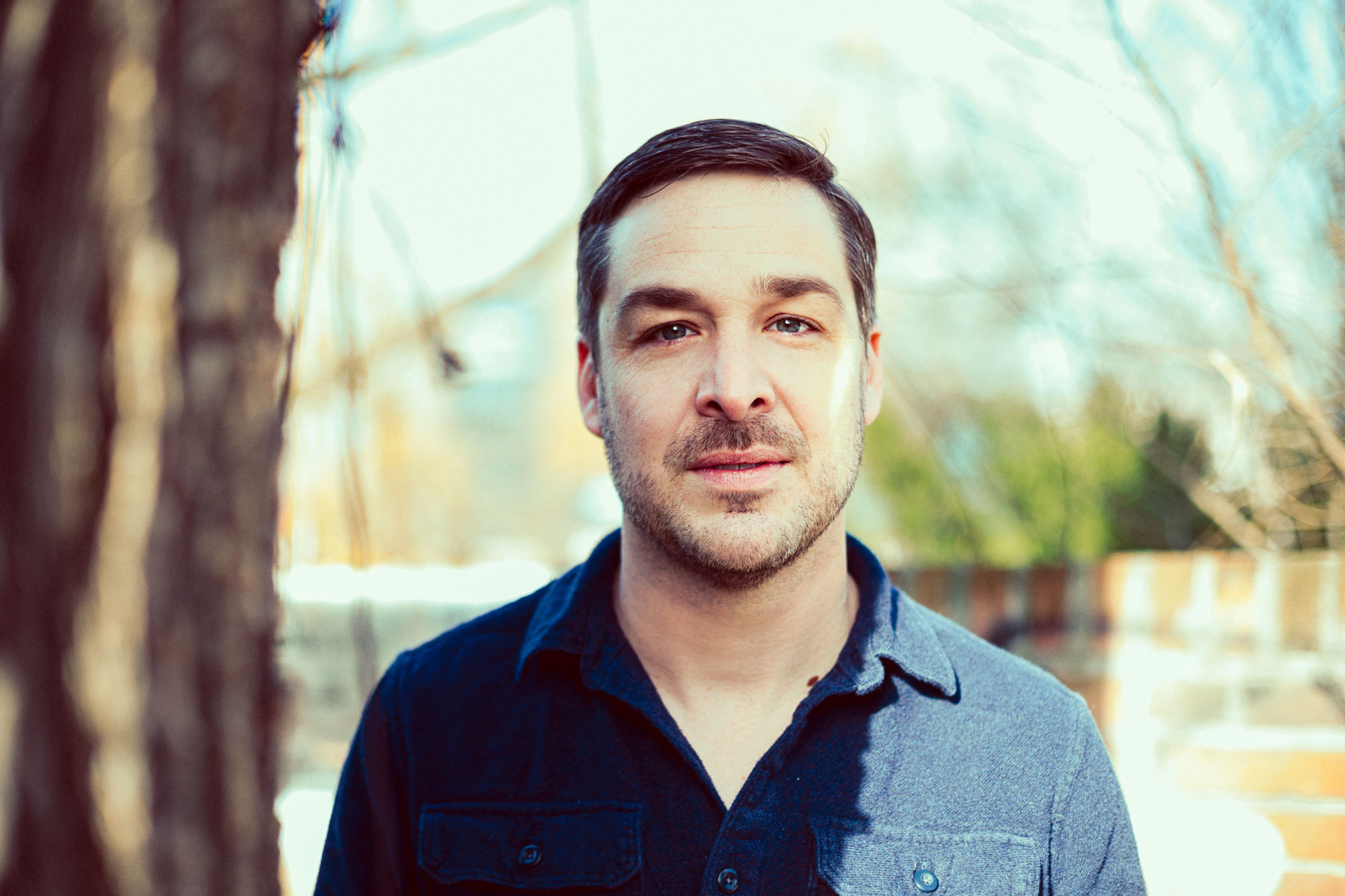
The movie—which premiered on February 12 at the Berlin International Film Festival—tells the story of two teenage boys, Ethan (17) and Derek (19), who live in a small town in Virginia and must deal with the addiction of their mother Michelle, played by Chrissy Metz. While the older brother, played by Fin Argus, stands by his mother and constantly hopes that things will get better, the younger one, played by Wyatt Oleff, has long since realized that nothing will change, and makes a plan to leave town as soon as he graduates from school.
The film shows the constant conflict between delaying one’s own plans and desires to take care of a loved one and striving for personal happiness and release from daily catastrophe. It’s a story that isn’t made up: The script is based on Jamie Sisley’s very own experience growing up with a mother battling with addiction. In the film, this mother figure isn’t drawn as a demon, but as a quiet, loving, and trying woman who keeps relapsing. Thanks to the refined and sensitive portrayals of the three main actors, the audience is drawn into the story of a family in which no one seems to be able to make the right decision.
We met director Jamie Sisley and actor Wyatt Oleff in Berlin for an interview, a couple of hours before Stay Awake was shown to the world for the very first time.
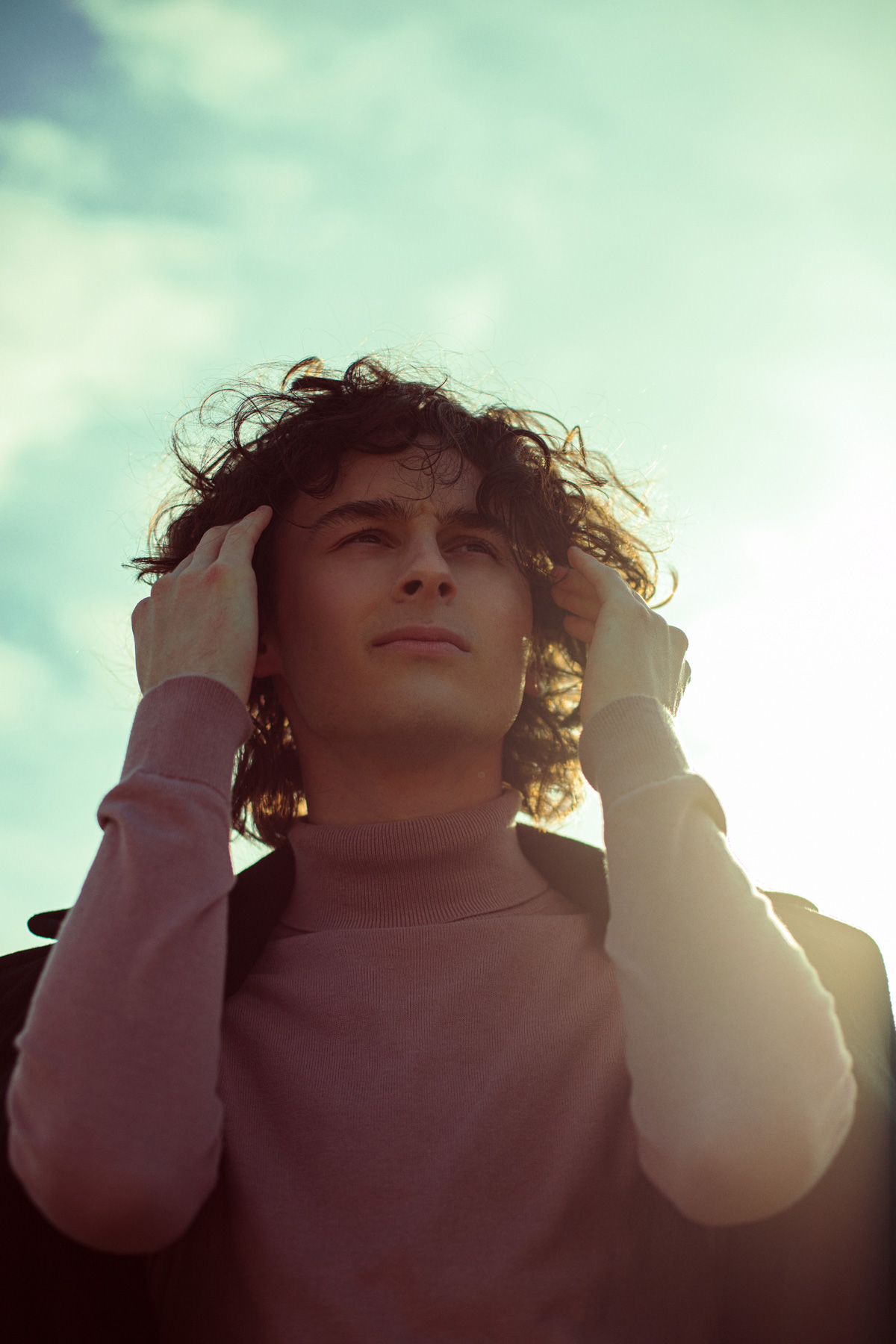
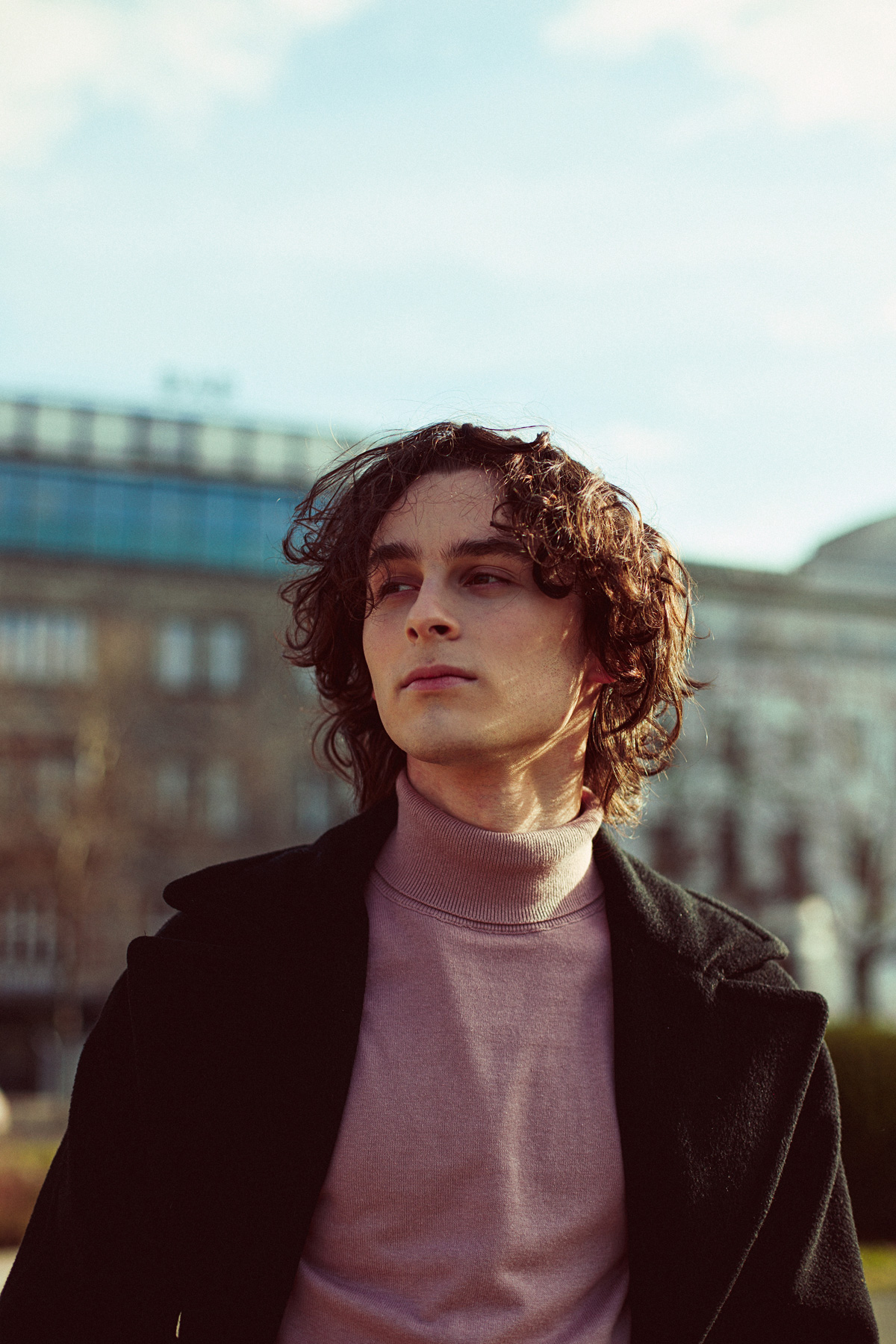
»I feel like I lost some time with my mom because I didn’t really understand the issue.«
MYP Magazine:
Jamie, with Stay Awake you provide a very quiet, sensitive and thoughtful perspective on the topic of prescription drug addiction. Why did you decide to tell the story in this way?
Jamie Sisley:
When I was growing up, my brother and I used to watch a lot of movies. At some point, I personally started to become more and more interested in films about addiction—maybe because I was trying to look for a perspective on our very own situation. Unfortunately, I realized really quickly that almost all of these films were told from the addict’s point of view. But as someone who is a caretaker and a loved one of an addict, I wished to see more about that kind of perspective. So, when I had the chance to make a film about this subject, this part was very important to me. I wanted to look at it through the eyes of the caretaking teenagers we were, dealing with my mom’s addiction every single day. And I can imagine that there are many other people out there that finally feel seen in this story.
Besides that, I always felt that the addicts I saw in movies were shown as characters deserving little empathy. Even worse: They were often villainized or dehumanized. And to be honest, I also thought that way about my mom for a long time. But the older I got, the more I realized that addiction is a disease. I firmly believe that. That’s why I wanted to show the more human aspects of addiction and re-humanize the addict. I’m sure that this sort of film would have helped me when I was growing up. It would have made me understand my mom better. Today I feel like I lost some time with my mom because I didn’t really understand the issue.
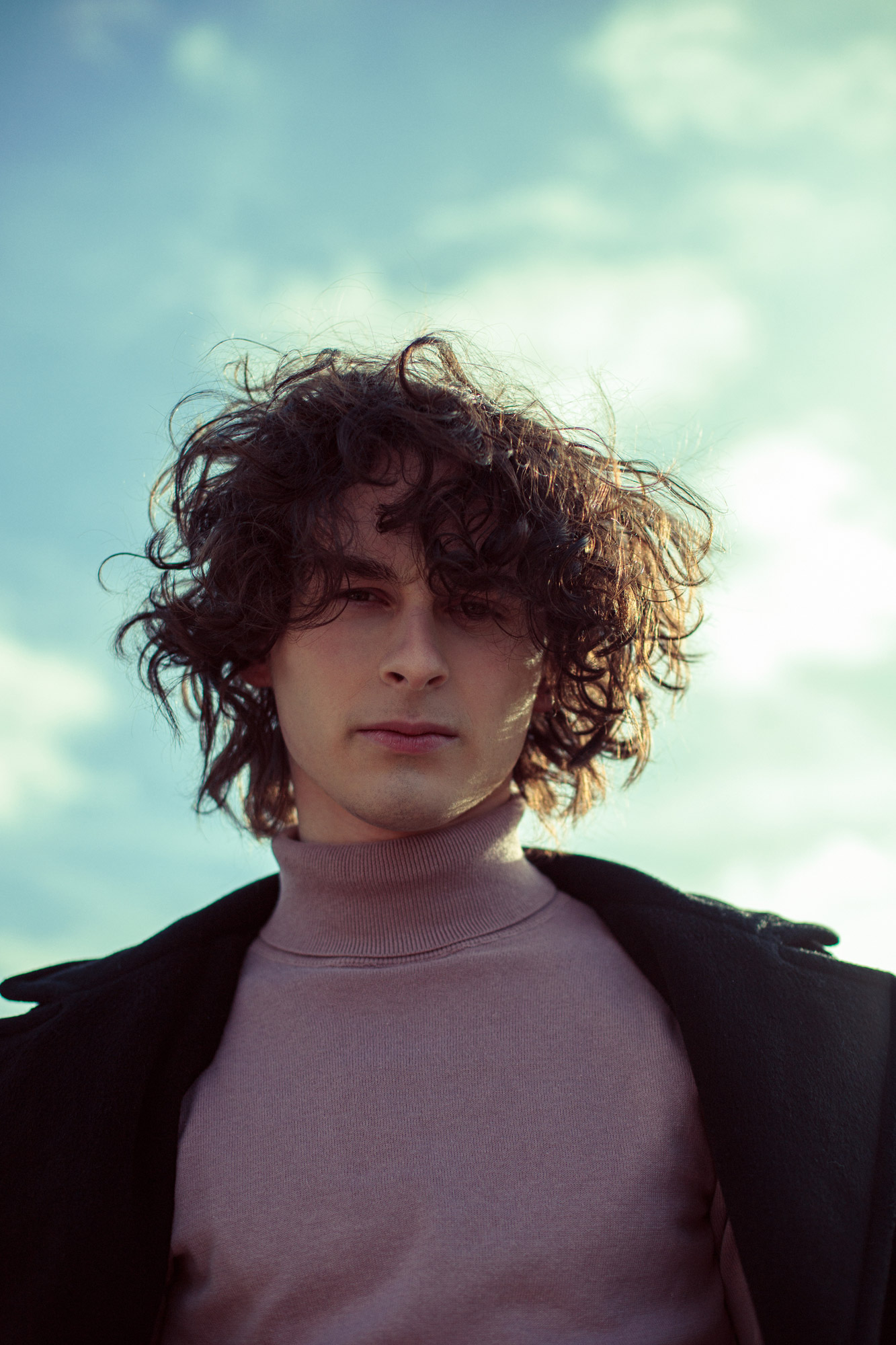
»When I read the script, I became even more aware of my own privileged situation.«
MYP Magazine:
Wyatt, you play the role of Derek’s 17-year-old brother, Ethan, a character that is related to Jamie’s younger brother, Evan. Was it a challenge, or even a burden, to play a role that directly refers to your director’s personal life?
Wyatt:
I don’t know if I really felt a burden, but it was still a lot of pressure for me. I personally grew up in a very lucky and privileged life, I’ve always had both of my parents who are supporting me and doing everything they can. When I read the script, I became even more aware of my own privileged situation, and I wanted to bring in my best abilities to help Jamie’s movie shine. It’s a story that really needs to be told—not only because it’s so personal, but also because it’s incredibly well written. I can’t underscore enough how important it was to me to get this movie right. And I’m grateful to be a part of it.
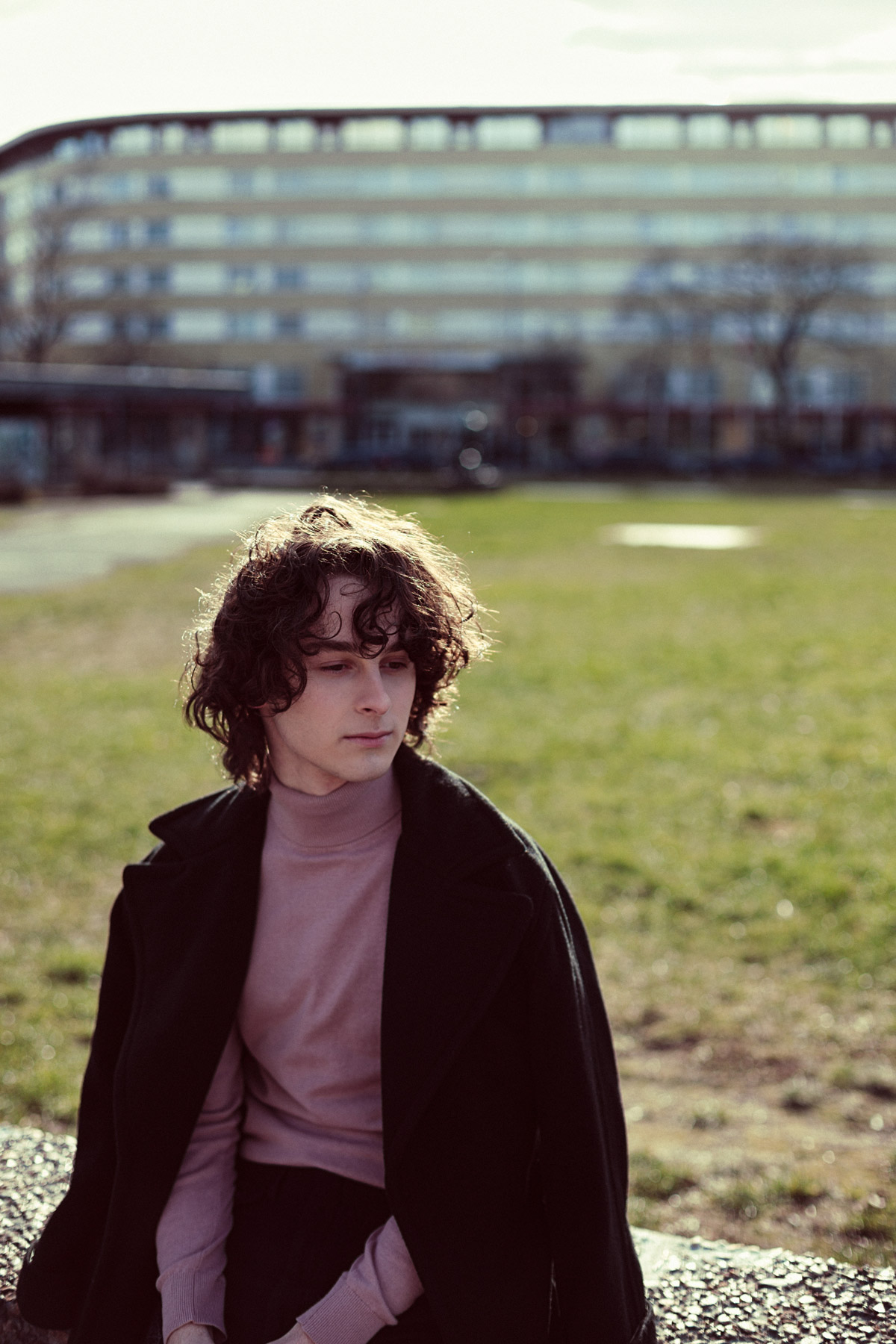
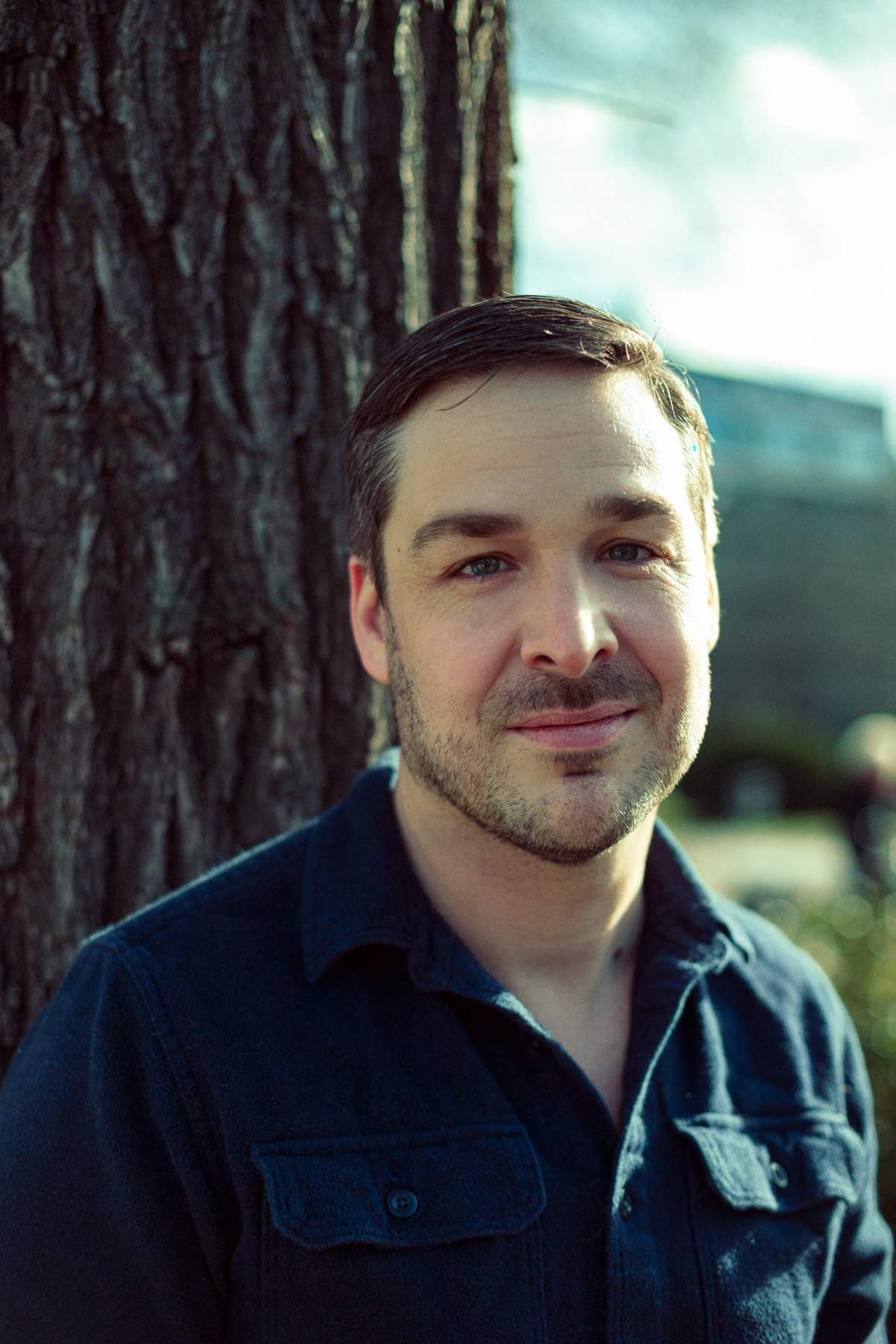
»As a writer and director, you always hope that your story is seen as a blueprint.«
MYP Magazine:
Jamie, how exactly did you introduce your three main actors, Wyatt, Fin, and Chrissy, to the story? What specifically did you want them to understand about their respective roles?
Jamie:
Every actor has generally a different approach how to form their character. Other than the fact that the backgrounds of the three protagonists are based on a lot of the issues I personally dealt with when I was growing up, I hoped that all three of them wouldn’t feel constrained but would embrace their roles—and they did. Wyatt, Fin and Chrissy did such a wonderful job because they took this story very seriously. I really appreciate the amount of thought that was put into each of their characters. As a writer and director, you always hope that your story is seen as a blueprint that, with some great collaborators who come in, gets better and better. And that’s what happened here. Wyatt, Fin and Chrissy added a lot of new texture to the characters in ways that I could have never done.
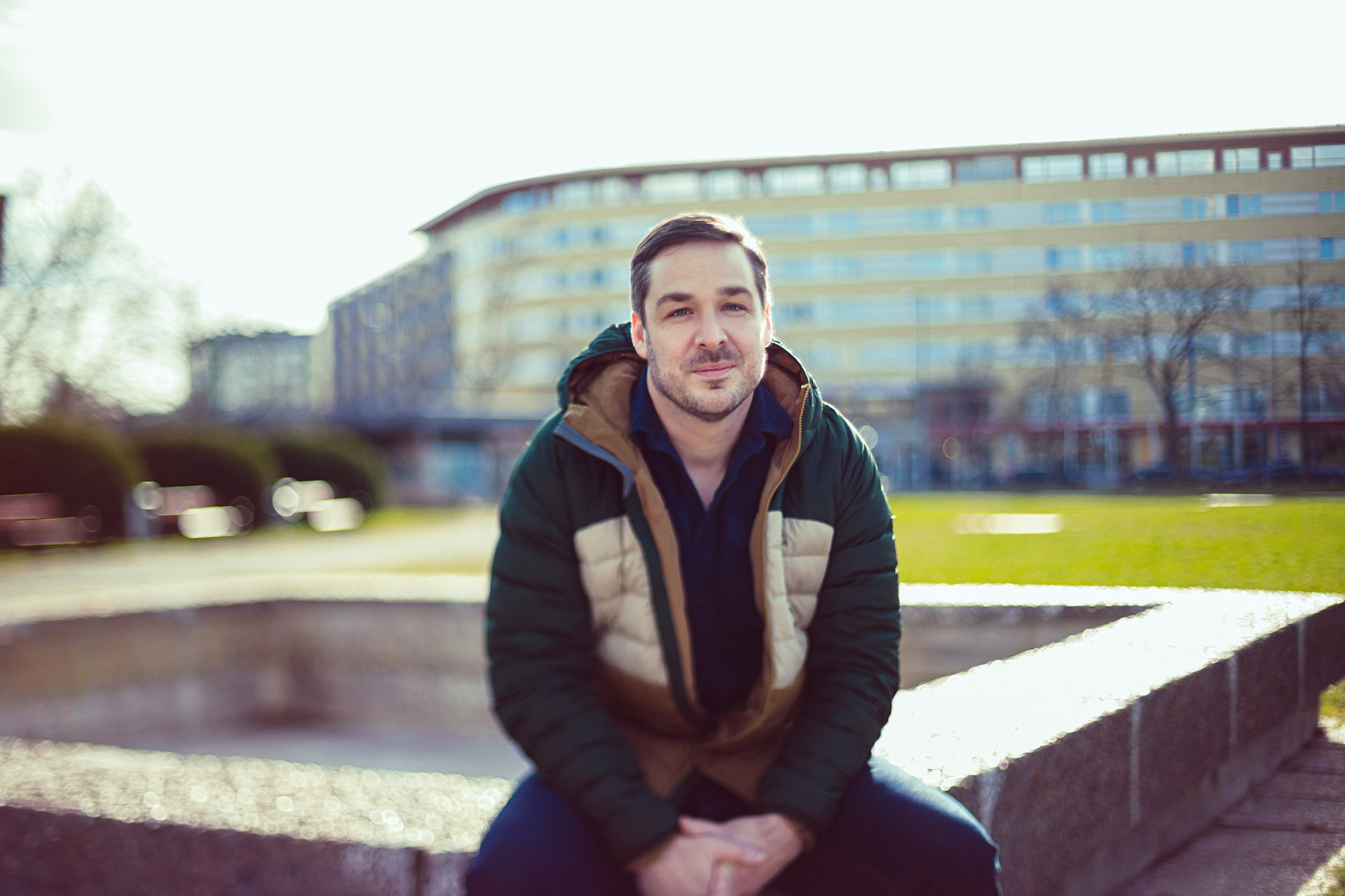
»For that 17-year-old guy, Ethan, there’s a lot of internal struggles.«
MYP Magazine:
Each of these three characters is struggling in their very own, different way. While the older brother, Derek, tries to stay optimistic and doesn’t give up on his mother, Ethan strives for his own happiness and makes plans to leave behind the small town and his mother’s troubles as soon as he graduates high school. At the same time, he seems to be suppressing his feelings and closing himself off. Wyatt, how did you approach this multi-layered character, Ethan? How was it to get to know him when you read the script?
Wyatt:
I was totally interested in this character right from the start! There is a lot to this character and that made it very fun to play. Chrissy, Fin, and I were intensively working with Jamie to define our protagonists and the situation they’re in. We did a lot of rehearsing to really get to know them. When it specifically comes to my character, Jamie and I had a lot of talks about Ethan’s role inside the family, his deep layers, and what actually is going on in his mind. I think, for that 17-year-old guy, there’s a lot of internal struggles. At the same time, all of his extroverted emotions are very flat. He is trying very hard to be the calm and reflected one in this family and to put himself ahead when major decisions must be made. Additionally, his desire to get out of town doesn’t just go for himself, it also extends to his brother a lot. Derek is one who would stay with their mom for the rest of his life, he would devote his own life to her. But Ethan is not about that, he wants to help his brother out of this situation because he loves him. He loves his mom too, of course, but it’s complicated. All of that comes to a climax where Ethan and Derek are trying to be as composed as possible through this horrible situation for each other.
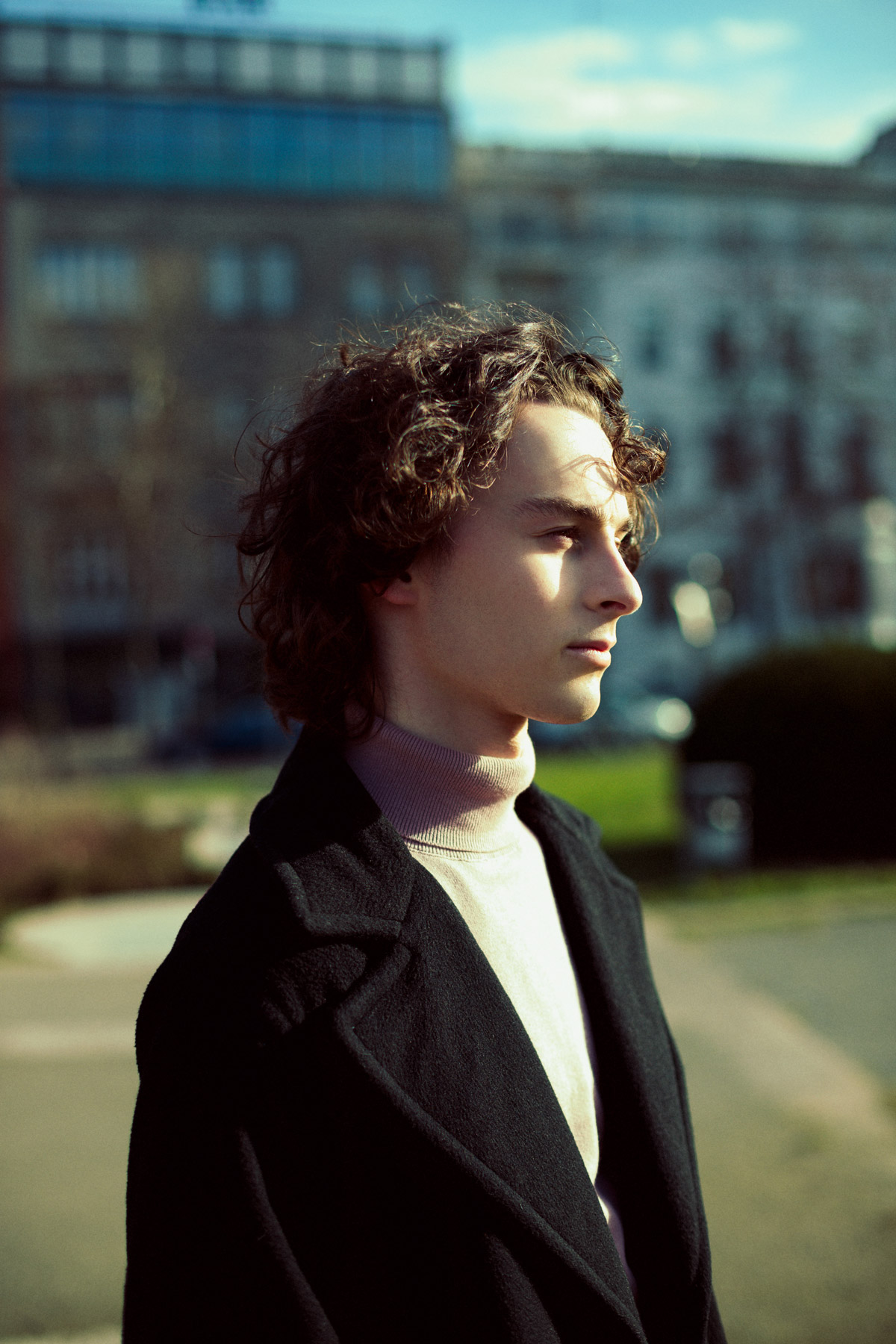
»The relationship with my brother is just a testament to what we struggled through.«
MYP Magazine:
Despite being so different, the two brothers seem bound by an unspoken understanding that becomes particularly evident at the end of the film. Is this bond their only strategy to survive?
Jamie:
Caring for a loved one is a real rollercoaster. Sometimes it’s going well, sometimes it’s not. That requires a lot of patience that has to be included in that rollercoaster ride. In such situations, you’re very lucky when you have a partner, somebody you can really rely on. From my personal experience, I know that many other young people are dealing with the same difficult situations that Derek and Ethan are going through.
As a result, these kids develop certain strategies to just persevere, and trusting and understanding each other blindly is definitely a part of it. I think that’s why my relationship with my brother is one of the strongest I have in my life. It’s just a testament to what we struggled through.
But I also learned that, even in tough situations, good things can come from it—humor, for example. That’s part of life and can be a very genuine way of getting through hard times. I know for sure that sometimes, as bad as it can be, all you can do is laugh. And that was a real point of catharsis for my brother and me.
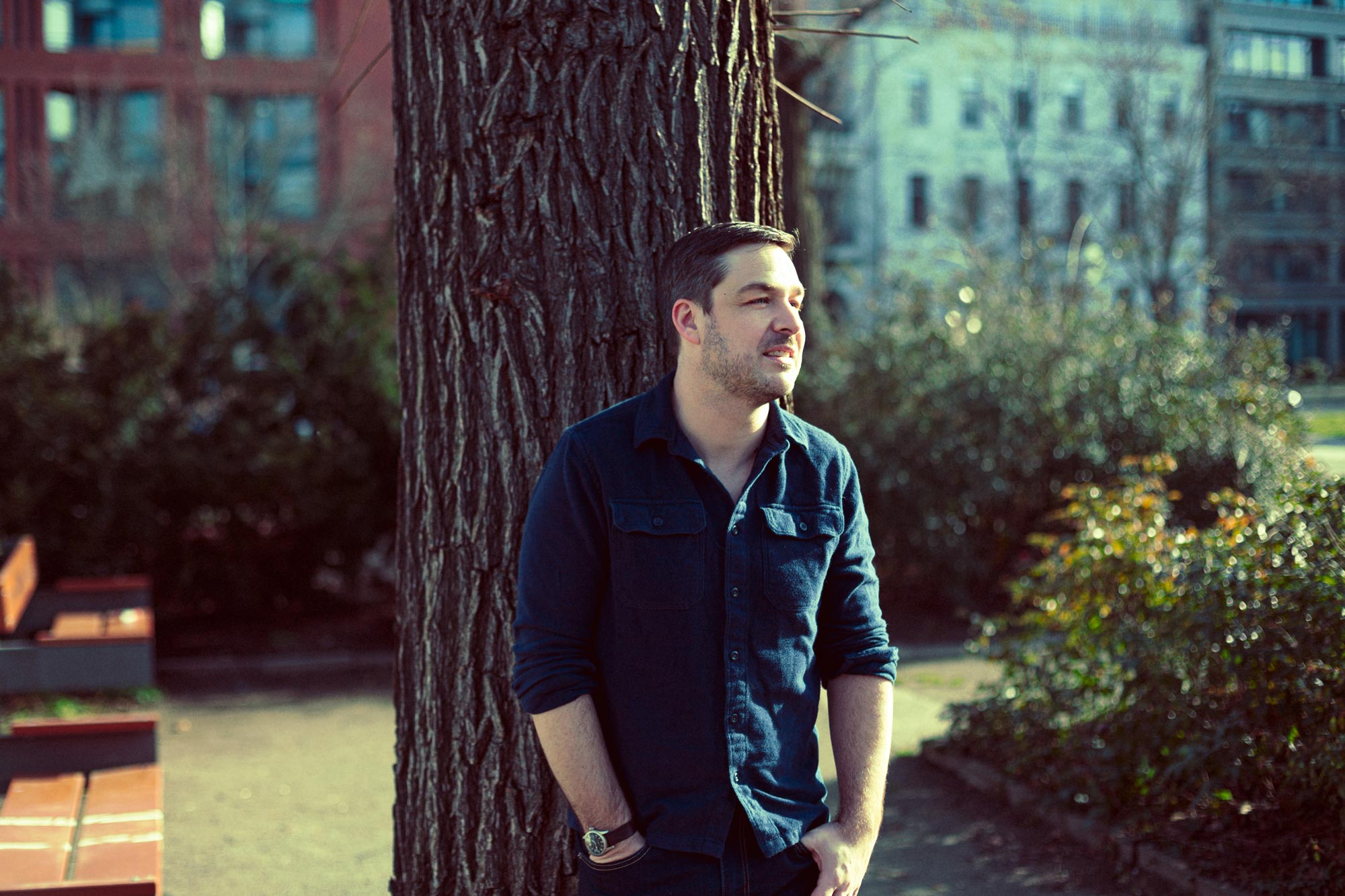
»A lot of people call this crisis a domestic issue. But this is not just an American problem.«
MYP Magazine:
Derek and Ethan are two nice, skilled, and righteous boys. They theoretically have all the prerequisites for a happy and successful life—if there wasn’t the permanent issue of their mom’s addiction that puts their future in danger. In reality, millions of young people are in a similar situation. Many of these kids fail because too much weight is on their shoulders. Their talents, dreams, and the impact they can make are wasted. Why is this immense damage to society not taken seriously?
Jamie:
Because most people just don’t understand how prevalent this issue is. I hope that, after we all get through Covid, mental health is going to be an issue that we all talk about. And I hope that addiction is going to be something that’s actually looked at and scrutinized more than it has been lately. I mean, it’s more than urgent! Right now, there are around 21 million people that suffer from addiction—just in the United States. If you multiply that by two or three because of the loved ones and caretakers involved, you come to a pretty large percentage of the population. By the way: A lot of people call this crisis a domestic issue. But this is not just an American problem. It’s the exact same thing in every other country.
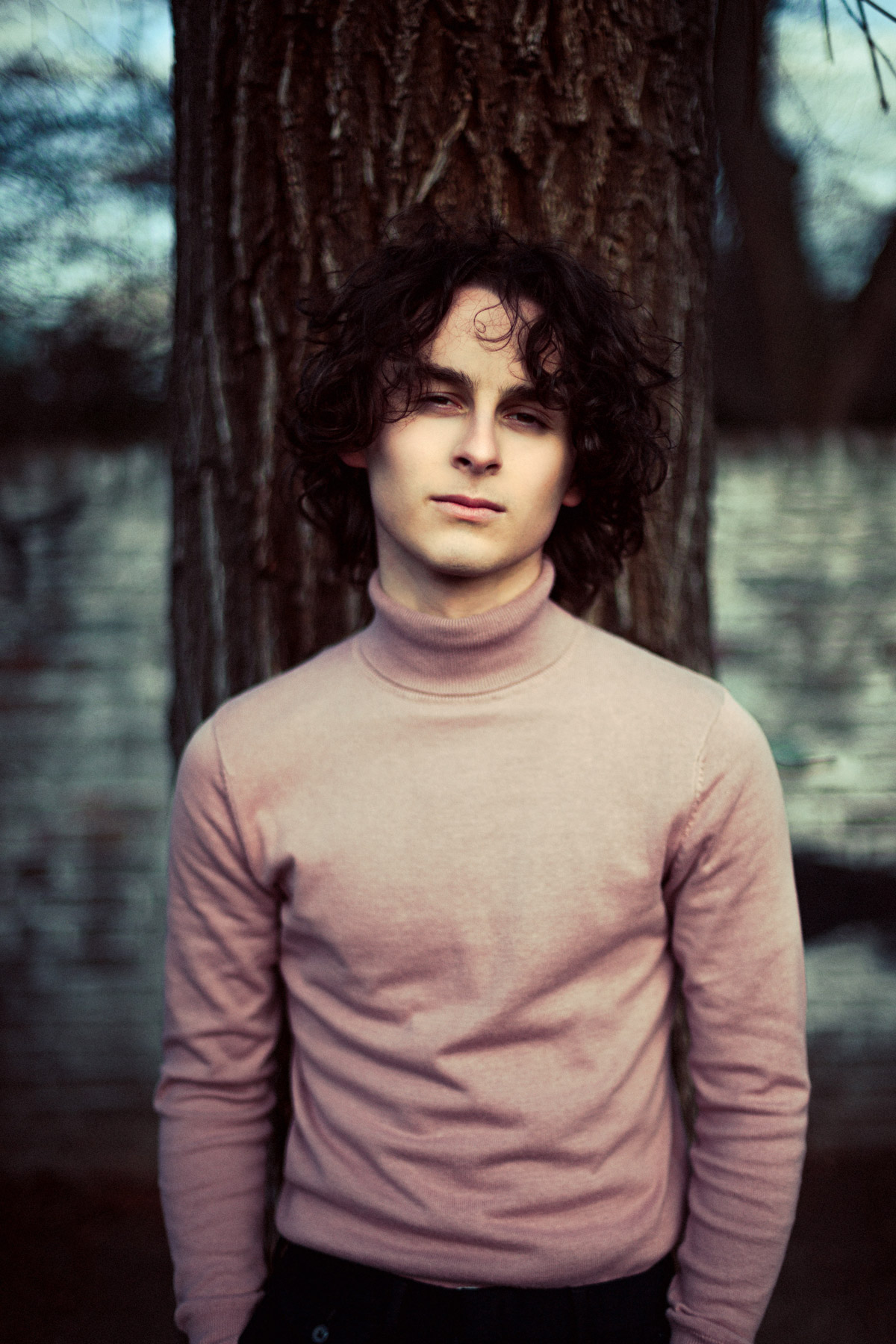
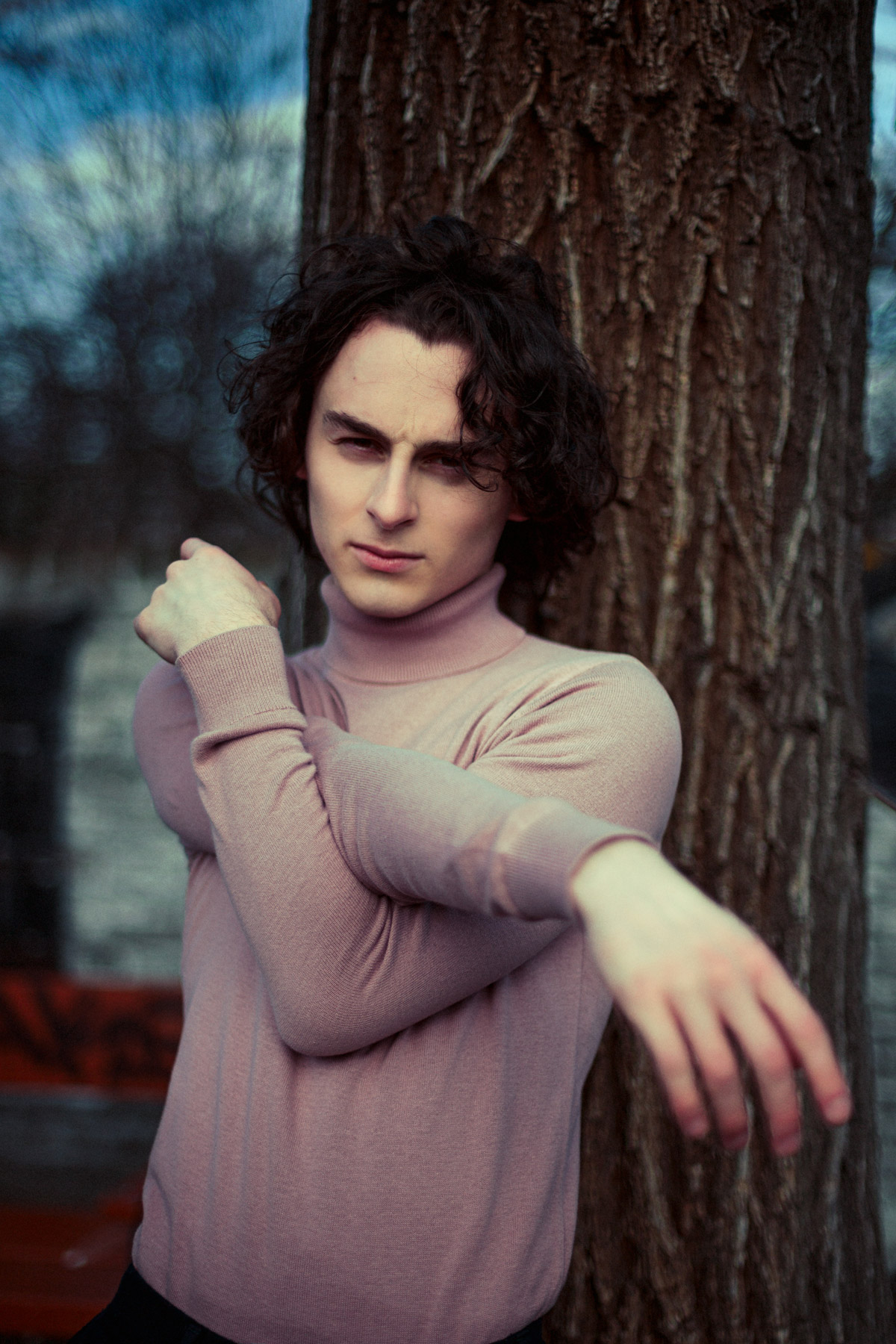
»There has always been an underbelly to this world.«
MYP Magazine:
In Stay Awake the existential crisis of the small family takes place in a visual world that, with its bold pictures and locations, looks like a romanticized ideal of 1950s America. Is this also a reflection of the American society, including its gap between self-image and naked reality?
Jamie:
That indeed describes the current state of the United States very well. I personally love the imagery of Americana, I always have. I love that sort of landscape that the film is placed in, I love locations like the bowling center or bus station, I love the colors and the settings. But I do think there has always been an underbelly to this world. And that’s, right now, the malignant cancer called prescription drug abuse. There are a lot of artists that follow the same approach, composing dreamy Americana with its actual underbelly. Photographer Gregory Crewdson, for example, is pretty good in that. I often thought of that work when I was writing the script. I think it’s an interesting way of looking at a subject that affects a lot of people.
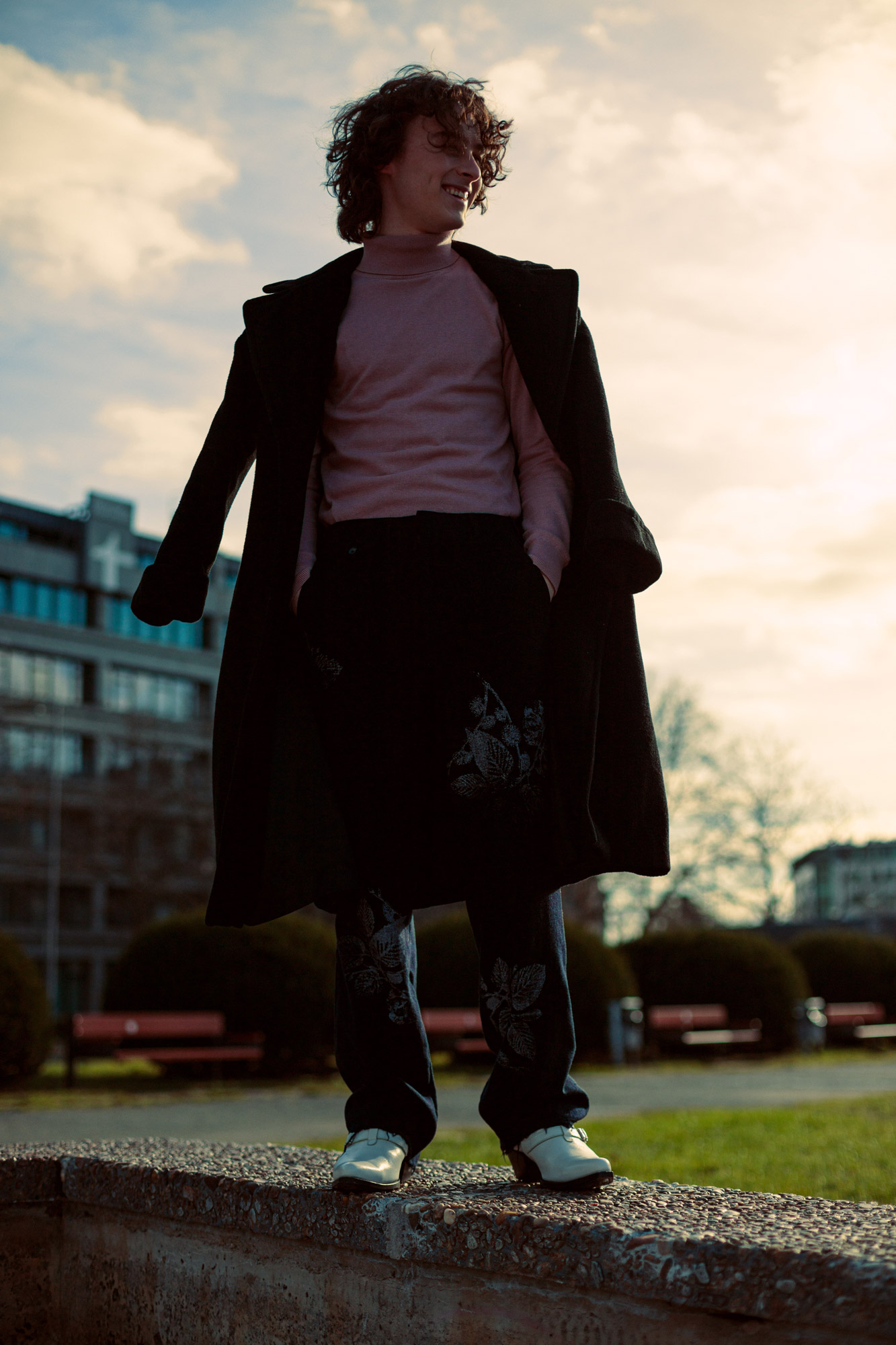
»The power of the story is supported by being actually set in small-town America.«
MYP Magazine:
Wyatt, in the last years you played in a lot of productions that took place in so-called small-town America, such as It, I Am Not Okay with This or now Stay Awake. You yourself are born in Chicago and you grew up in Los Angeles. What fascinates you so much about the countryside?
Wyatt (laughs out loud):
Well, let’s see! I don’t know if I’m necessarily attracted to it just because the story takes place in the countryside. It always happened to be quite a remarkable coincidence, an interesting through line between a lot of projects I have done so far. But with Stay Awake, it was different. When I was reading the script, I felt that the power of the story was supported by being actually set in small-town America because it creates an additional layer of problems: There are fewer options. Everything goes slower. And you’re lost without a car.
By the way, just as a side note (smiles): When I lived in Chicago, that was in the suburbs, not in the city. Growing up there was also kind of a small-town feeling. At places like that, there’s a lot of interesting stories to be told. In L.A., that doesn’t just exist in the same way. I miss that, to be honest.
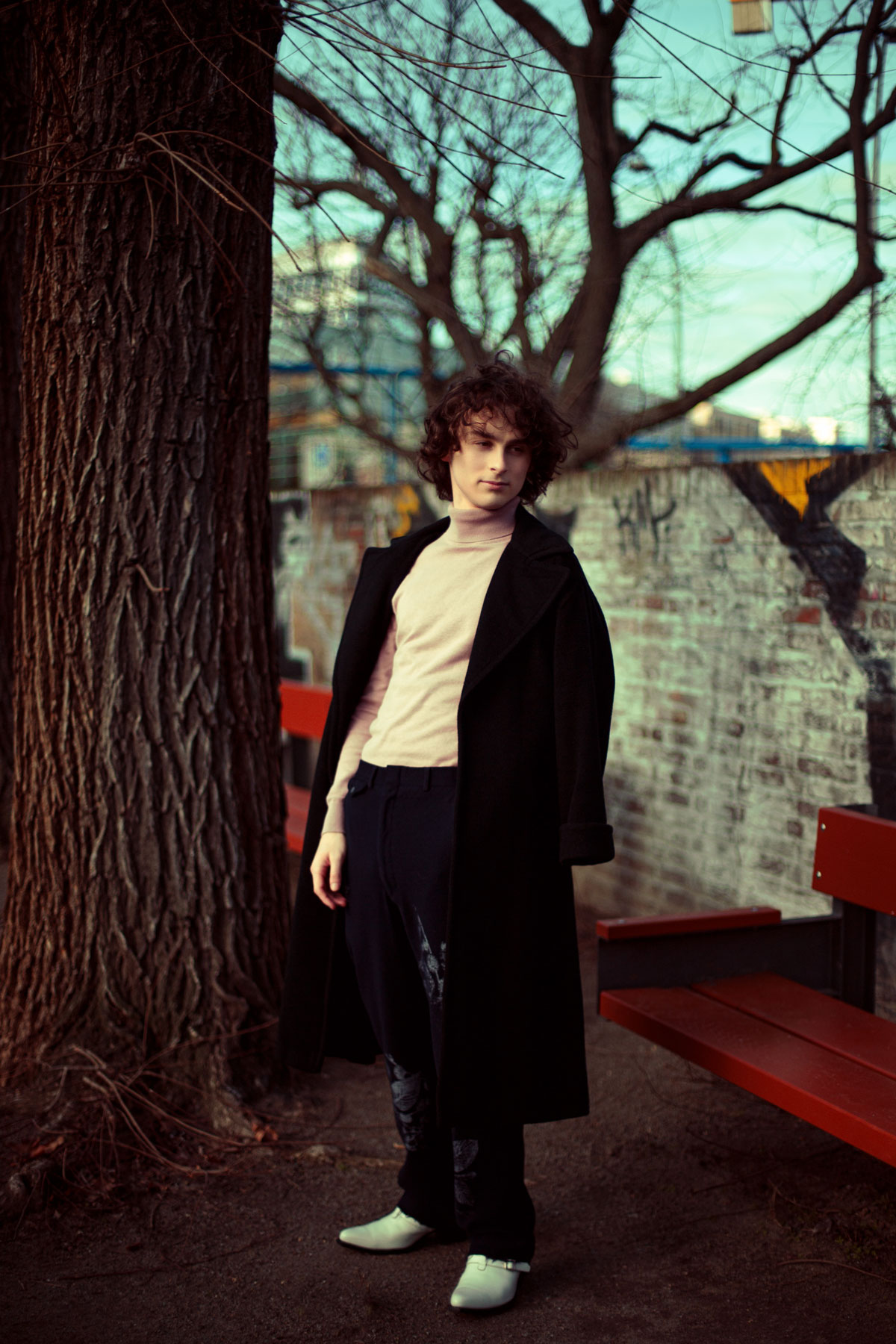
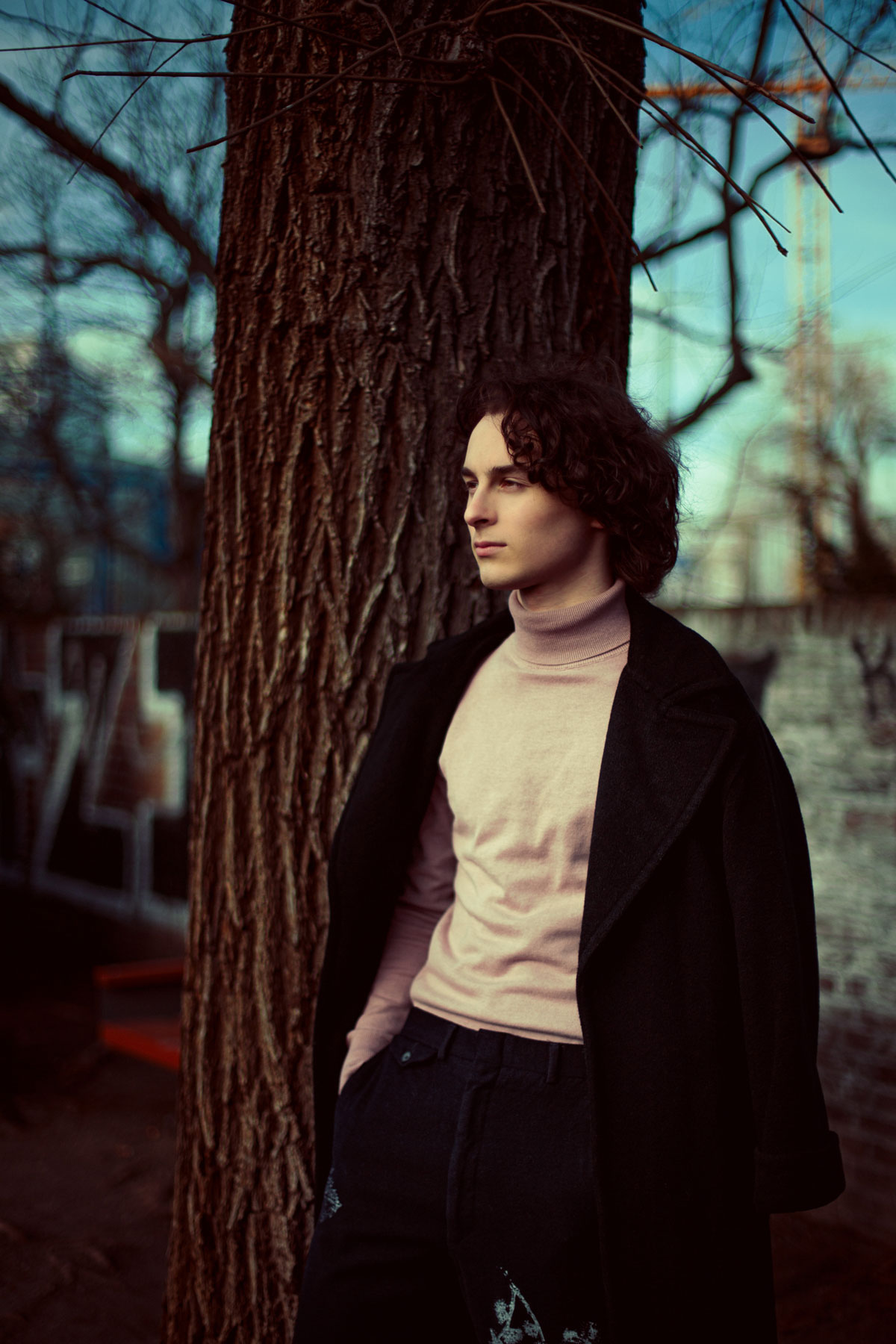
»Wyatt has a gift that helped the film out significantly.«
MYP Magazine:
Now that you guys have worked together on this project, what have you, Wyatt, learned about life from Jamie?
Wyatt:
Jamie is endlessly talented and incredible! I think there is so much to learn from him. He’s been so open and emotional with all the things that happened in his life. That really helped the movie and the story he wanted to tell. And that also helped me to get a new perspective—on life in general and on the subject specifically. I always thought that the prescription drug crisis was a matter of the early 2000s, an issue that happened once and now it’s not that big anymore. But it is. And that also brings attention to a lot of other issues I wasn’t as aware of. But with this movie, we will hopefully be highlighting that and getting more people talking about it.
MYP Magazine:
And what about you, Jamie? What could Wyatt teach you about life that you didn’t know before?
Jamie:
I think I learned how to trust people a little better, that’s the big one. When we started to work together, I was pretty new at writing scripts. And I still am, it’s not that I’ve done that a thousand times before. So, I was guarded about it and hoped that I could bring collaborators that will make my work better. People who trust me and take the whole thing seriously. Wyatt really did that. He was very vulnerable, opened up and allowed me to come in and collaborate with him on his interpretation of the role. We just talked about that side of him yesterday: It’s not something actors are required to do. Wyatt didn’t have to do that. But he did and that’s a gift—a gift that helped the film out significantly. It gave us the ability to really get in there. When I see the result of his beautiful performance, that makes me finally trust the process. And I can’t thank him enough for that.
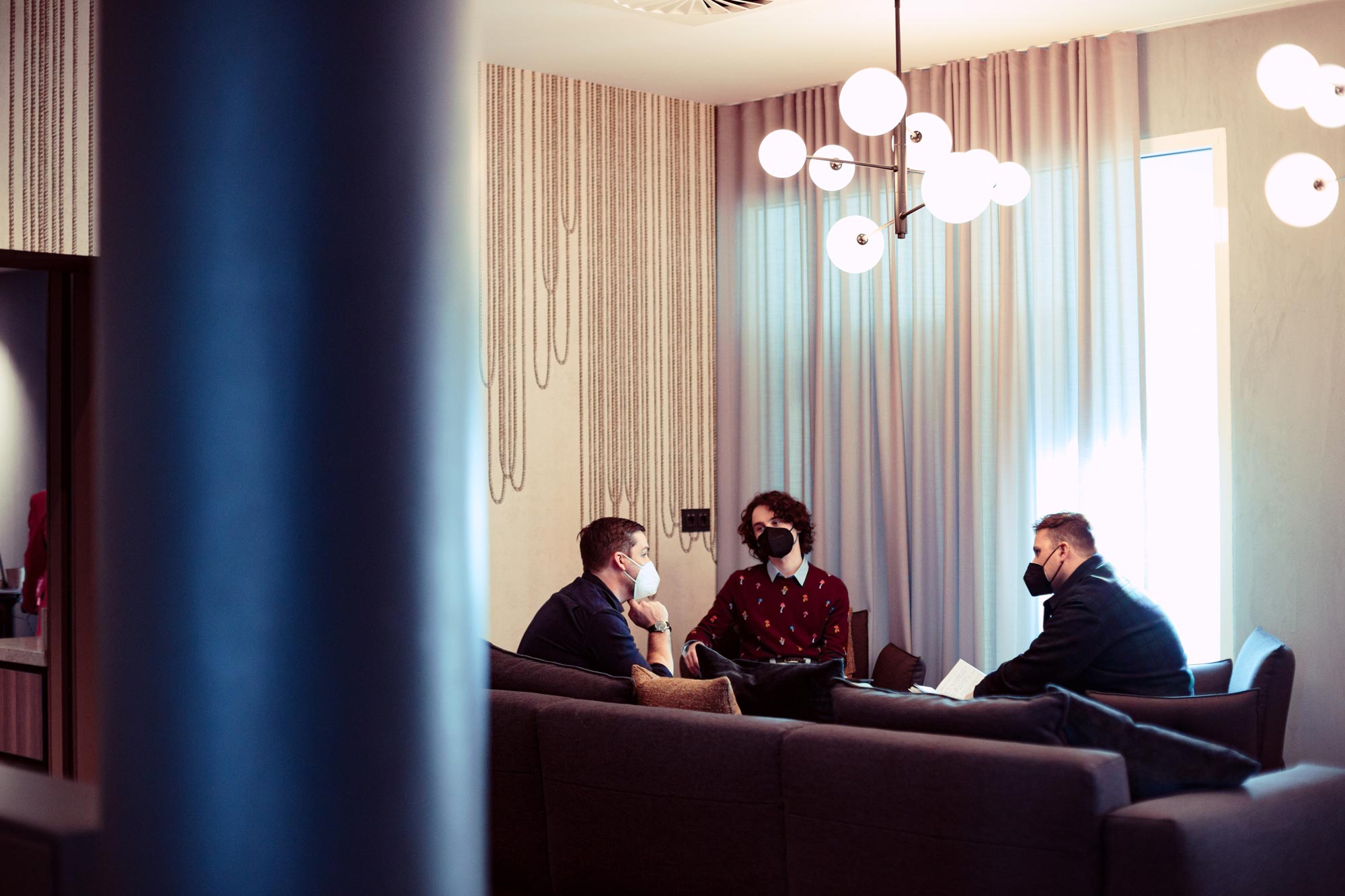
#stayawakefilm #jamiesisley #wyattoleff #mypmagazine
More about Jamie Sisley, Wyatt Oleff, and Stay Awake:
instagram.com/jamie_sisley
instagram.com/wyattoleff
instagram.com/stayawakethefilm
Photography: Osman Balkan
Interview & text: Jonas Meyer
Editing: Benjamin Overton
Byelian
Portrait — Byelian
Antikitsch, tief aus dem Westen
Mit »C’est L’Hiver« hat Julian Kleinert alias Byelian einen der berührendsten Songs des letzten Jahres geschrieben. Dabei war es dem 30-jährigen Multitalent aus dem Ruhrgebiet lange Zeit nicht möglich, sich in seiner Musik überhaupt emotional zu öffnen. Ein Portrait über einen Mann, der Island liebt, für Bon Iver schwärmt und seine Heimat wirklich niemals gegen Hamburg oder Berlin eintauschen würde.
2. Februar 2022 — Text: Jonas Meyer, Fotografie: Maximilian König
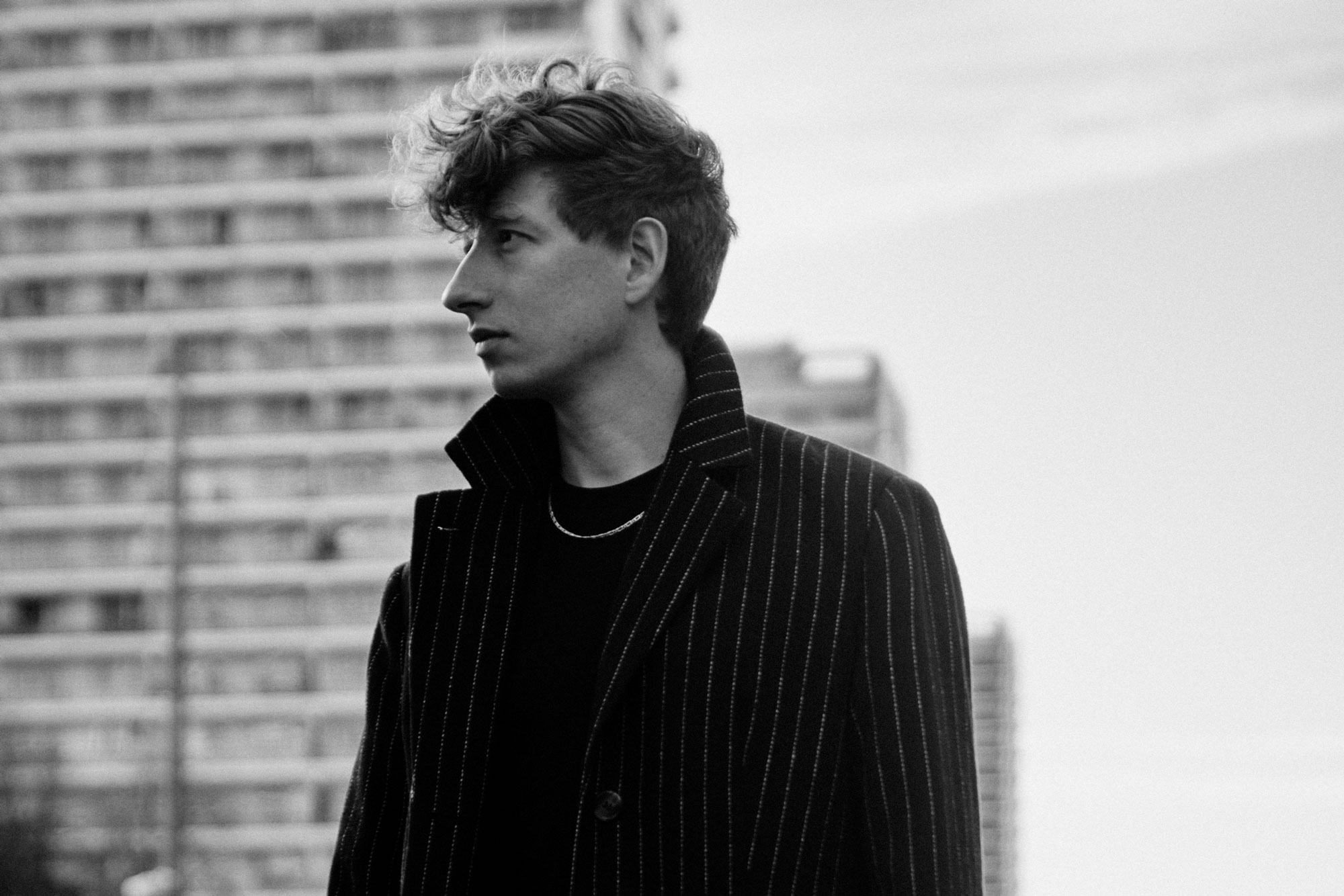
Tief im Westen, wo die Sonne verstaubt, ist es besser, viel besser, als man glaubt. Das jedenfalls singt Herbert Grönemeyer. Und der muss es wissen, schließlich ist Herbert im Ruhrgebiet großgeworden und hat seiner Heimatstadt Bochum nicht nur einen Song, sondern gleich ein ganzes Album gewidmet. 1984 war das. Seitdem zählt Deutschlands beliebtester Musiker zu den wichtigsten Botschaftern jener Gegend, die immer noch gerne unterschätzt wird. Und manchmal sogar belächelt. Bochum sei halt nicht Berlin, heißt es dann. Mülheim nicht München. Und Hattingen nicht Hamburg.
Dabei leben zwischen Rhein, Ruhr und Lippe gut fünf Millionen Menschen – Menschen, die das Herz auf der Zunge tragen und ihre Heimat nicht aufgeben, auch wenn der berühmte Pulsschlag aus Stahl schon lange nicht mehr laut in der Nacht zu hören ist. Bange machen gilt nicht, sagt man hier in schweren Lebenslagen. Und erfindet sich dann einfach neu. Wie etwa im Jahr 2010, als das totgesagte Ruhrgebiet Europäische Kulturhauptstadt wurde. Die Botschaft: Glück auf, wir leben noch. Und wir können was. Man muss nur mal vorbeikommen.

»Das Ruhrgebiet hat eine Relevanz – weil es da Menschen gibt, die die Dinge angehen.«
Einer dieser Menschen, die was können, ist Julian Kleinert. Geboren, aufgewachsen und immer noch wohnhaft ist er in Sprockhövel, einem unaufgeregten Städtchen 20 Kilometer südlich von Bochum. Der 30-Jährige ist so etwas wie ein künstlerisches Multitalent. Knapp zehn Jahre lang war er Frontmann der Gruppe I Am Jerry, aktuell spielt er in der Live-Combo der Künstlerin Amilli und ist, zusammen mit seinen jüngeren Geschwistern Timm und Josephine, Teil der Formation FINE. Daneben hat er mit engen Freunden das Label Mightkillya gegründet, das all die genannten Acts unter einem Dach versammelt und – man ahnt es bereits – diese auch produziert. Ach ja, und Filme dreht man bei Mightkillya auch noch.
Offizieller Sitz des Labels ist die Stadt Hattingen, von Sprockhövel aus sind das zehn Minuten mit dem Auto, zwanzig mit dem Bus. „Wir haben uns bewusst dagegen entschieden, nach Hamburg oder Berlin zu gehen“, erzählt uns Julian an einem grauen Samstagvormittag und erklärt: „Das hat damit zu tun, dass wir unsere Wurzeln nicht verkennen wollen. Es ist uns wichtig zu zeigen, dass das, was wir erschaffen und in die Welt hinaustragen, aus dem Ruhrgebiet kommt.“ Ihm und seinem Team ginge es darum, dass die Leute im Kunst- und Kulturbetrieb den tiefen Westen Deutschlands wieder stärker auf dem Zettel hätten. „Das Ruhrgebiet hat eine Relevanz – weil es da Menschen gibt, die die Dinge angehen.“
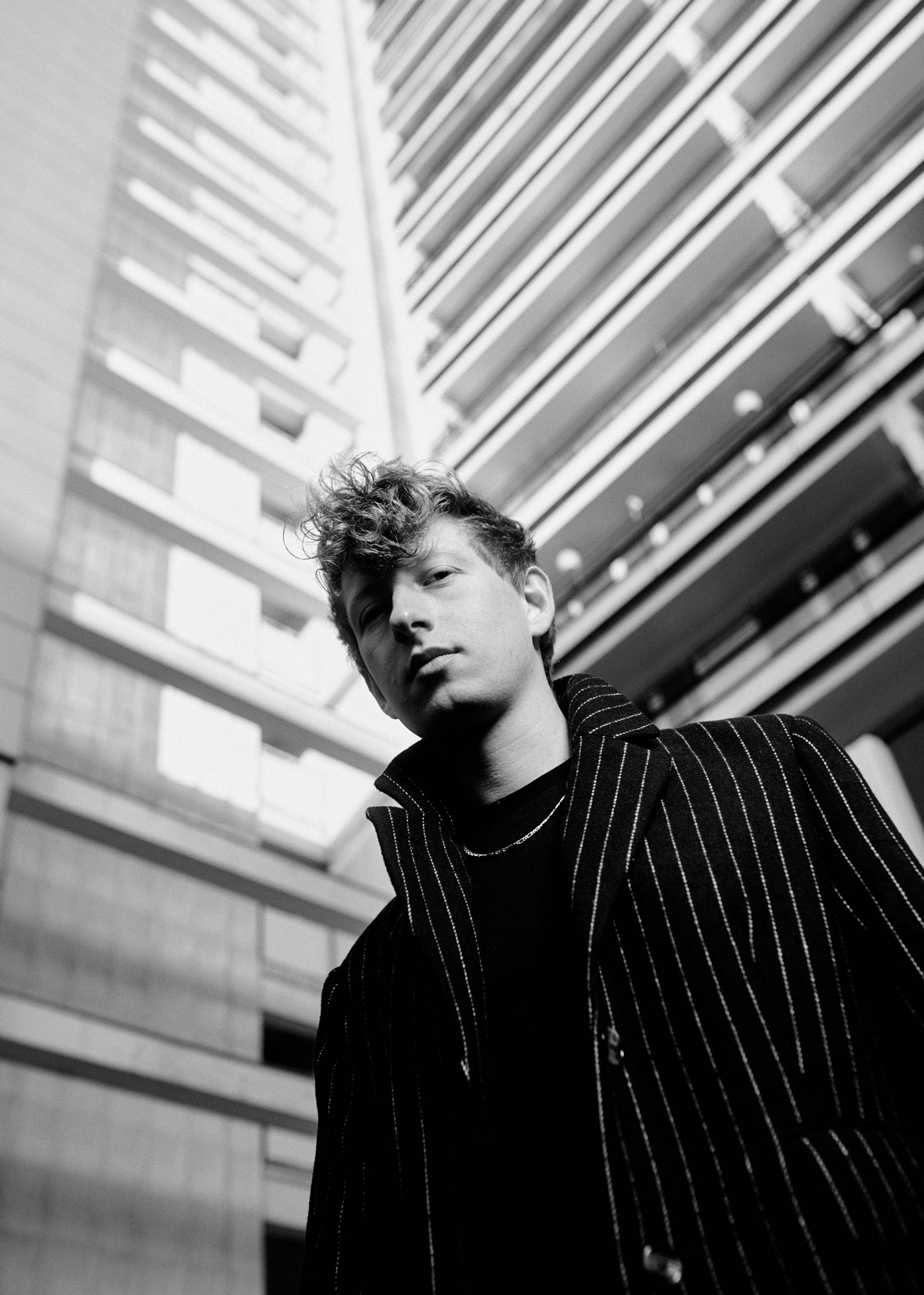
»Ohne den plötzlichen Stillstand wäre ich mit dieser Musik wesentlich später an die Öffentlichkeit gegangen.«
Den Beweis dafür lieferte er vor gut einem Jahr selbst: Als die Pandemie wie Blei über dem ganzen Land lag, nutzte er die Zeit und veröffentlichte am 4. Februar mit „C’est L’hiver“ die erste Single seines Soloprojekts Byelian. „Der plötzliche Stillstand kam wie gerufen“, beschreibt er die Situation Anfang 2021. „Ich konnte mich plötzlich um all die Ideen kümmern, für die ich vorher keine Muse hatte.“ Zwar sei Byelian kein reines Pandemie-Gewächs, betont er, aber ohne den plötzlichen Stillstand sei er mit dieser Musik wohl wesentlich später an die Öffentlichkeit gegangen.
Dass er damit nicht länger gewartet hat, dafür kann man ihm nur danken. Denn „C’est L’Hiver“ ist wahrscheinlich einer der berührendsten Songs, die das letzte Jahr hervorgebracht hat. Eingeleitet wird der Track von einer Pianomelodie, die so eindringlich ist und gleichzeitig so scheu und zurückhaltend wirkt, als wäre sie den „Living Room Songs“ von Ólafur Arnalds entsprungen. Kurz darauf legt sich Julians tiefe, nachdenkliche Gesangsstimme auf das mäandernde Piano und es entsteht eine emotionale Schwere, der man weder entkommen kann noch entkommen will – wer schon mal am Adagietto aus Mahlers Symphonie Nr. 5 hängengeblieben ist, kennt dieses Gefühl.
Doch die anfängliche Melancholie von „C’est L’Hiver“ bleibt kein Dauerzustand. Nach und nach addieren sich diverse elektronische Elemente, das Piano geht in einen treibenden Beat über, alles wird leichter, energetischer, heller und sogar tanzbar. So ist der Song nicht weniger als eine emotionale Achterbahnfahrt, bei der man auf der Melancholie-Ebene einsteigt, sich wenig später einen Schuss Ekstase gönnt und am Ende der Fahrt einfach sitzen bleibt, um zwei, drei Extrarunden zu drehen. Und dann geht’s zum nächsten Song.
Davon gibt es mittlerweile sieben, zusammengefasst sind sie auf der EP „Crawl Underneath My Blanket“. Die Platte ist ein ständiger Tanz zwischen Introvertiertheit und Extroversion, die sieben Tracks sind liebevoll komponiert und arrangiert, wirken verspielt und doch verbindlich. Musikalisch spielen sich traditionelle und moderne Elemente die Bälle hin und her: Klavier featuring Electronic Beats, Akustikgitarre meets Autotunes. Und doch zieht sich durch alles eine ganz eigene, gut leserliche Handschrift.
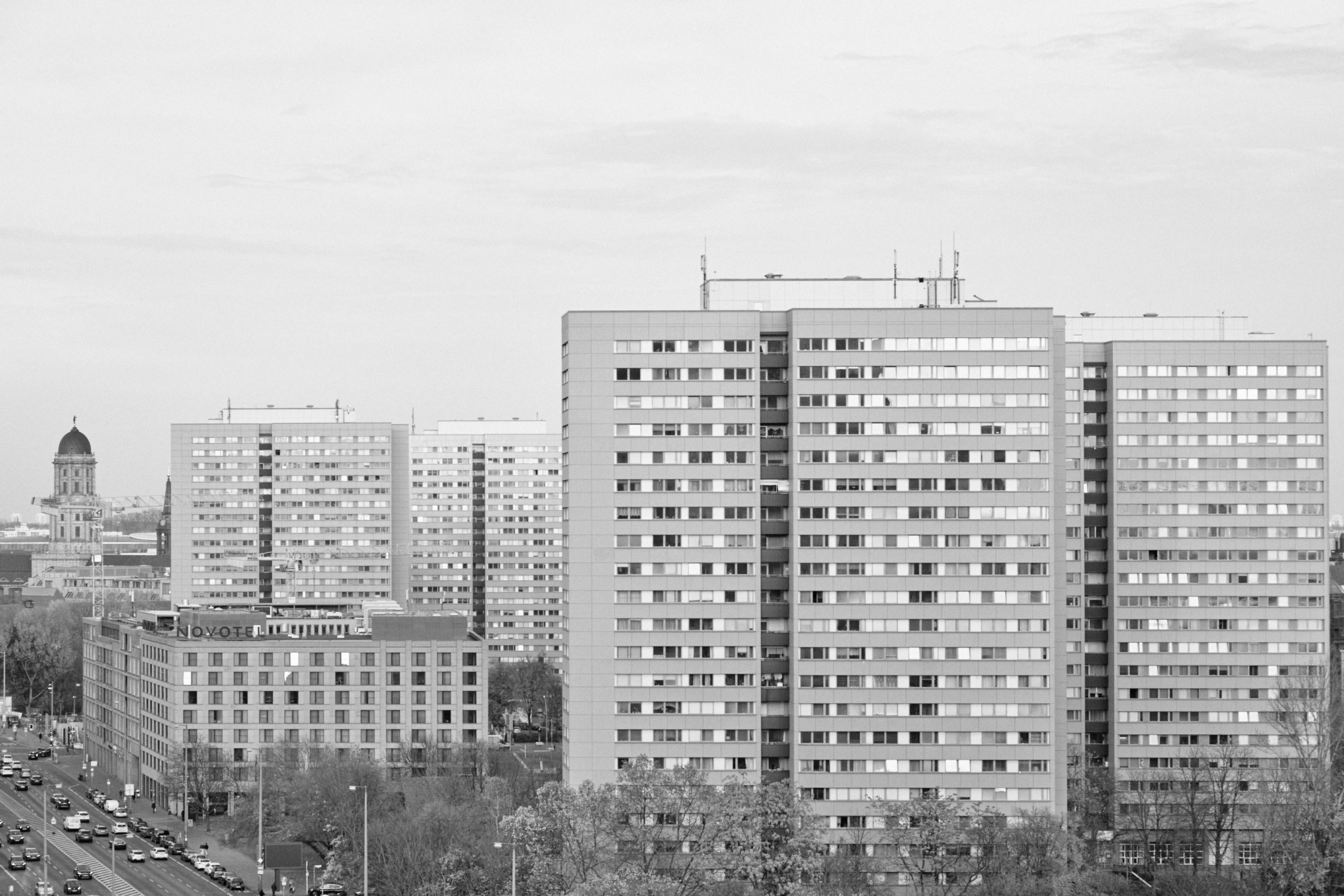
»Ich habe regelrecht dagegen gearbeitet, in meinen Liedern zu offenbaren, was ich wirklich fühle.«
Dass diese Platte so klingt, wie sie klingt, leitet sich direkt aus Julians persönlicher Gefühlswelt ab. „Für mich ist Musik ein Ventil, ein Mittel zur Selbstreflexion“, sagt er und fügt hinzu: „Wenn es mir nicht gut geht oder ich etwas zu verarbeiten habe, setze ich mich ans Klavier. Das ist mein Weg, um mit alldem umzugehen, was mir so im Leben widerfährt.“
Klar, welcher ernsthafte Musiker, der sich melancholischer Musik verschrieben hat, würde nicht so antworten. Doch für Julian ist das alles andere als selbstverständlich. Der zurückhaltende Mann hatte lange Zeit große Probleme, seine Gefühlslage zu beschreiben und damit an die Öffentlichkeit zu gehen. „Ich habe regelrecht dagegen gearbeitet, in meinen Liedern zu offenbaren, was ich wirklich fühle“, erklärt er. „Ich habe gedacht: Das, was ich da mache, ist viel zu kitschig, abgedroschen und alles andere als fresh.“ Immer wieder habe er sich in solchen Momenten mit anderen verglichen, habe sich gefragt, ob er gut genug sei, ob er ausreichend Talent habe, ob seine Musik besonders klinge. Und so dauerte es eine ganze Weile, bis Julian lernte, Musik aus der eigenen Intuition heraus zu machen und sich ohne Angst seinen eigenen Gefühlen zu nähern.
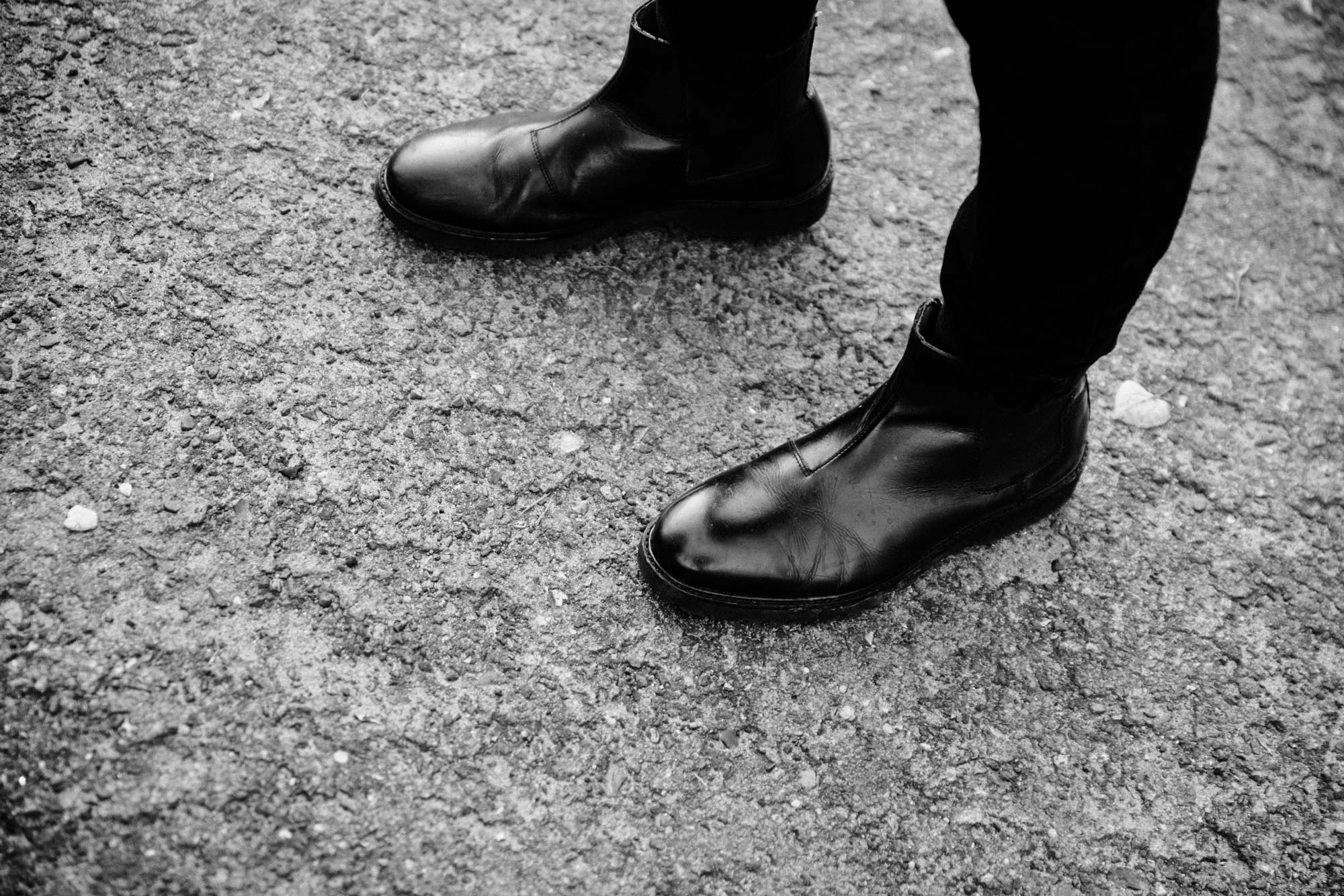
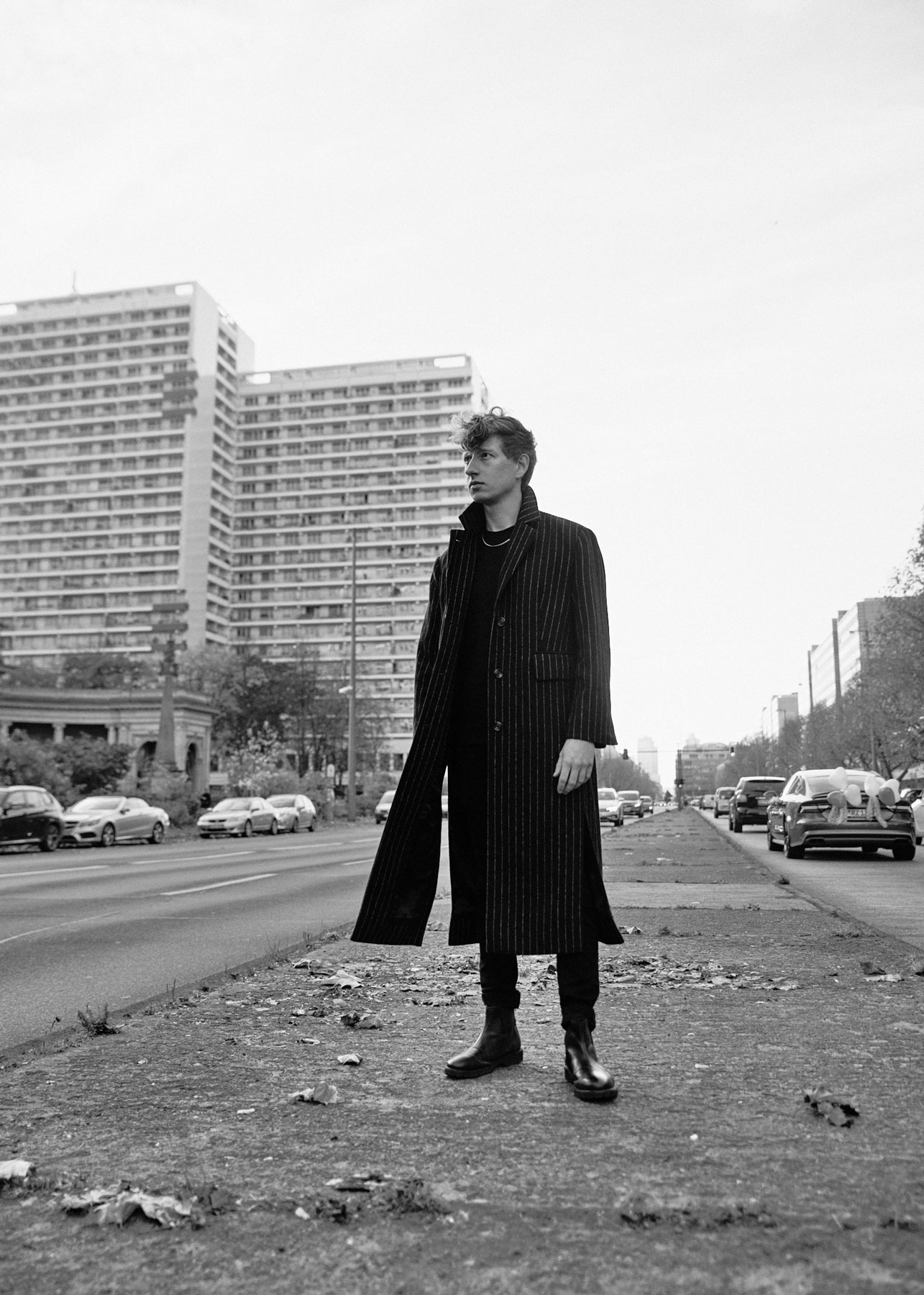
»Das Faszinierende an Bon Iver ist, dass seine Musik immer von der gleichen Emotionalität getragen wird.«
Sich dabei auch den ständigen Vergleichen zu entziehen, ist gar nicht so einfach, vor allem nicht, wenn sie von außen immer wieder an einen herangetragen werden. Julian Musik macht, suchen Fans wie Kritiker nach Parallelen zu erfolgreichen Musikern. Während seine damalige Band I Am Jerry etwa mit „die neuen Kraftklub“ oder „die nächsten Bilderbuch“ betitelt wurden, wird Byelian heute gerne mal als „der legitime Anwärter auf die Thronfolge von Künstlern wie Bon Iver, Sufjan Stevens und James Blake“ beschrieben.
„So etwas zu lesen“, sagt Julian, „ist natürlich schmeichelhaft. Aber wenn die Leute das zum Anlass nehmen, um sich nach einem Byelian-Konzert darüber zu beschweren, dass das ja gar nicht wie James Blake klingt, muss ich wirklich sagen: Dann geht halt zu einem James-Blake-Konzert!“ Davon abgesehen seien solche Vergleiche aber immer hilfreich, um eine grobe Stilrichtung zu beschreiben – vor allem, wenn es sich um Newcomer-Musik handele. Und bei seiner Debutsingle „C’est L’Hiver“, gibt Julian zu, finde er die musikalischen Parallelen zu den drei genannten Künstlern auch gar nicht so unpassend. Und es gibt tatsächlich Schlimmeres, als mit Bon Iver verglichen zu werden.
Dieser Musiker hat es Julian ohnehin angetan. „Bon Iver“, schwärmt er, „hat es geschafft, seinen ganz eigenen Sound zu erschaffen und sich trotzdem über die Jahre immer wieder zu verändern. Das Faszinierende daran ist, dass die Musik immer von der gleichen Emotionalität getragen wird – egal, ob es sich um einen Akustikgitarrensong oder eines dieser weird produzierten Stücke handelt. Das ist wirklich groß.“ Dabei gehöre „Blood Bank“ zu seinen absoluten Lieblingssongs, lässt uns Julian wissen. „Dieses Stück von ihm ist eines der emotionalsten überhaupt und ich verbinde es mit ganz bestimmten, wichtigen Momenten meines Lebens. Auf der einen Seite ist es der absolute Heulsong, weil er sich so tief in die Gefühlswelt gräbt, auf der anderen Seite wirkt das Lied im Vergleich zu den anderen Tracks von Bon Iver immer ein bisschen dahingerotzt. Diese Kombination liebe ich total.“
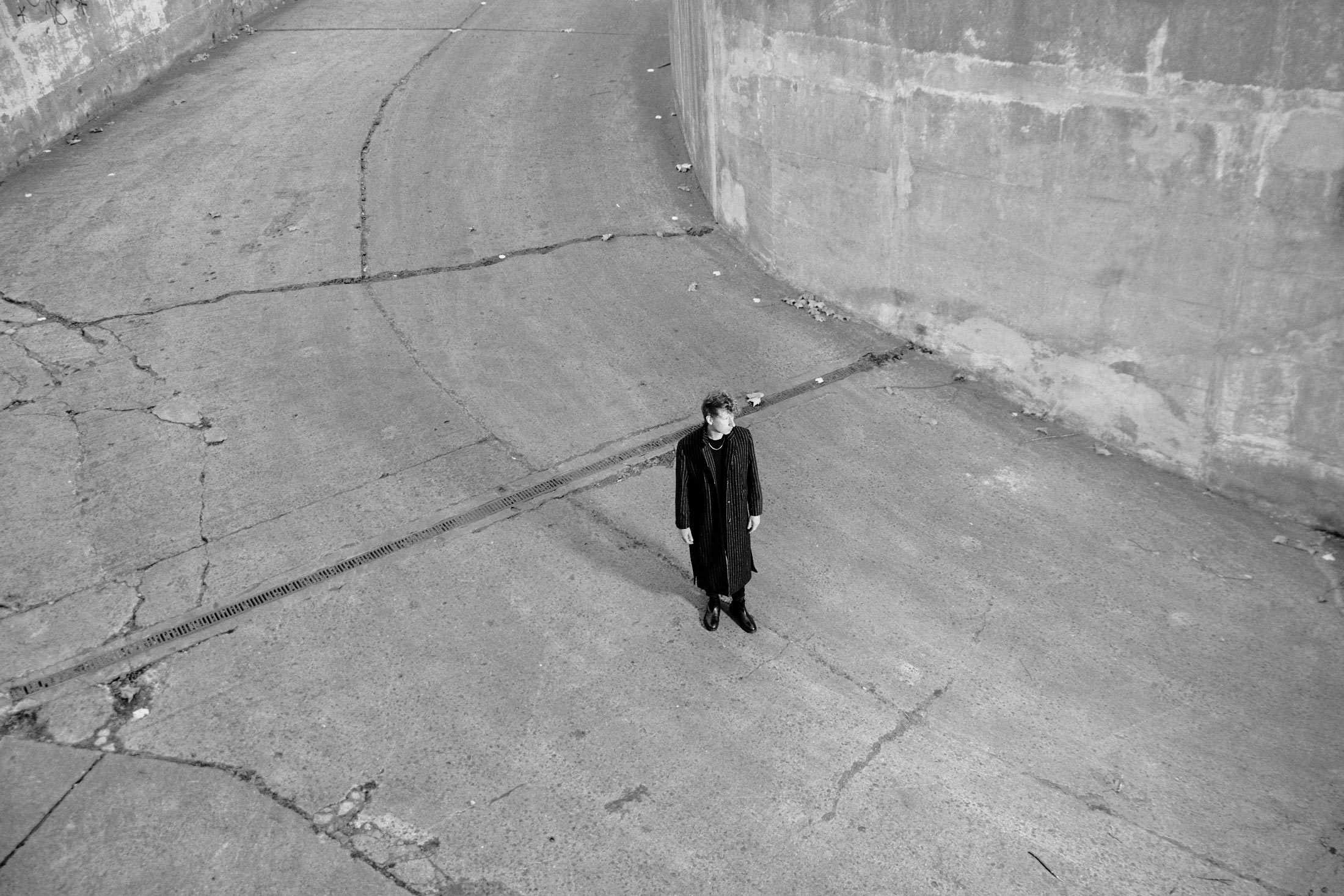
»Drei Wochen Island ist so ziemlich das Gegenteil von einem Strandurlaub auf Mallorca.«
Apropos Kombination: Seine Musik lässt Julian visuell in einer Landschaft stattfinden, auf die der Song „63° 56‘ N 21° 0‘ W“ hindeutet. Folgt man den Koordinaten, stößt man ziemlich genau auf ein kleines Haus in dem isländischen Städtchen Selfoss. In diesem Haus verbrachte Julian im Oktober 2020 insgesamt drei Wochen, um ein wenig Urlaub zu machen, Songs zu schreiben und in der näheren Umgebung einige Musikvideos zu drehen. „Von diesem Haus aus“, so berichtet Julian, „konnte man immer auf einen Berg blicken. Dieses Bild war so monumental, dass es mich jedes Mal tief berührt hat.“ Und so ziert heute ein Foto des Bergs das Cover der ersten Byelian-EP.
Sein Herz hatte der Musiker aus dem Ruhrgebiet bereits zwei Jahre vorher an Island verloren, als er die Singer-Songwriterin Lina Maly zu einem Videodreh auf die Insel begleitete. „Auf Island gibt es eine ganz andere Ruhe“, erzählt Julian sehnsüchtig, „das habe ich damals schon gespürt. Man ist der absoluten Natur ausgesetzt – und das erdet enorm.“ Er sei ohnehin ein großer Fan von skandinavischen Welten, da diese immer etwas Dunkles und Trauriges hätten, und das passe perfekt zu seinem Projekt Byelian. „Bei meiner Musik“, sagt er, „hatte ich von Anfang an Island-Assoziationen im Kopf.“ Die klavierbasierten, emotionsgeladenen und gleichzeitig reduzierten Songs seien vergleichbar mit dem Wesen der überwältigenden isländischen Natur. Drei Wochen auf Island abgekapselt in einer Hütte zu verbringen, witzelt Julian, sei so ziemlich das Gegenteil von einem Strandurlaub auf Mallorca.
Man könnte man es auch als antikitschig beschreiben. Oder, wenn man sich die Musikvideos zu „C’est L’Hiver“ oder „Thud“ anschaut, als hochdramatisch – denn beide Clips setzen sich dramaturgisch mit dem Thema Suizid auseinander. Während „C’est L’Hiver“ mit dem Bild eines Protagonisten startet, der sich eine Plastiktüte über den Kopf gezogen hat und kurz vorm Ersticken ist, erzählt „Thud“ die Geschichte eines jungen Paars, das mit einem Strick in der Hand um einen Baum tanzt und einen vermeintlich bevorstehenden Suizid zelebriert.
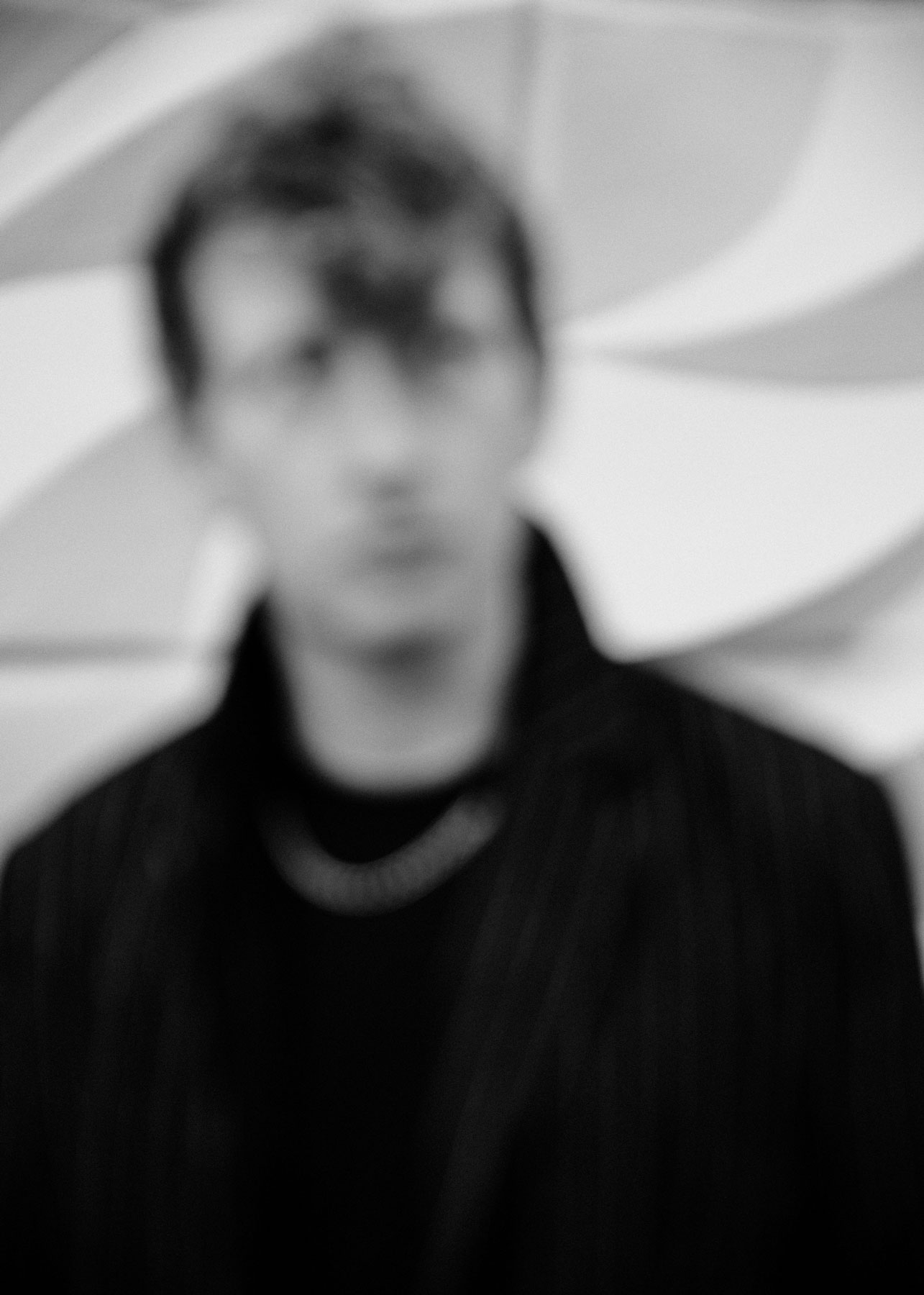
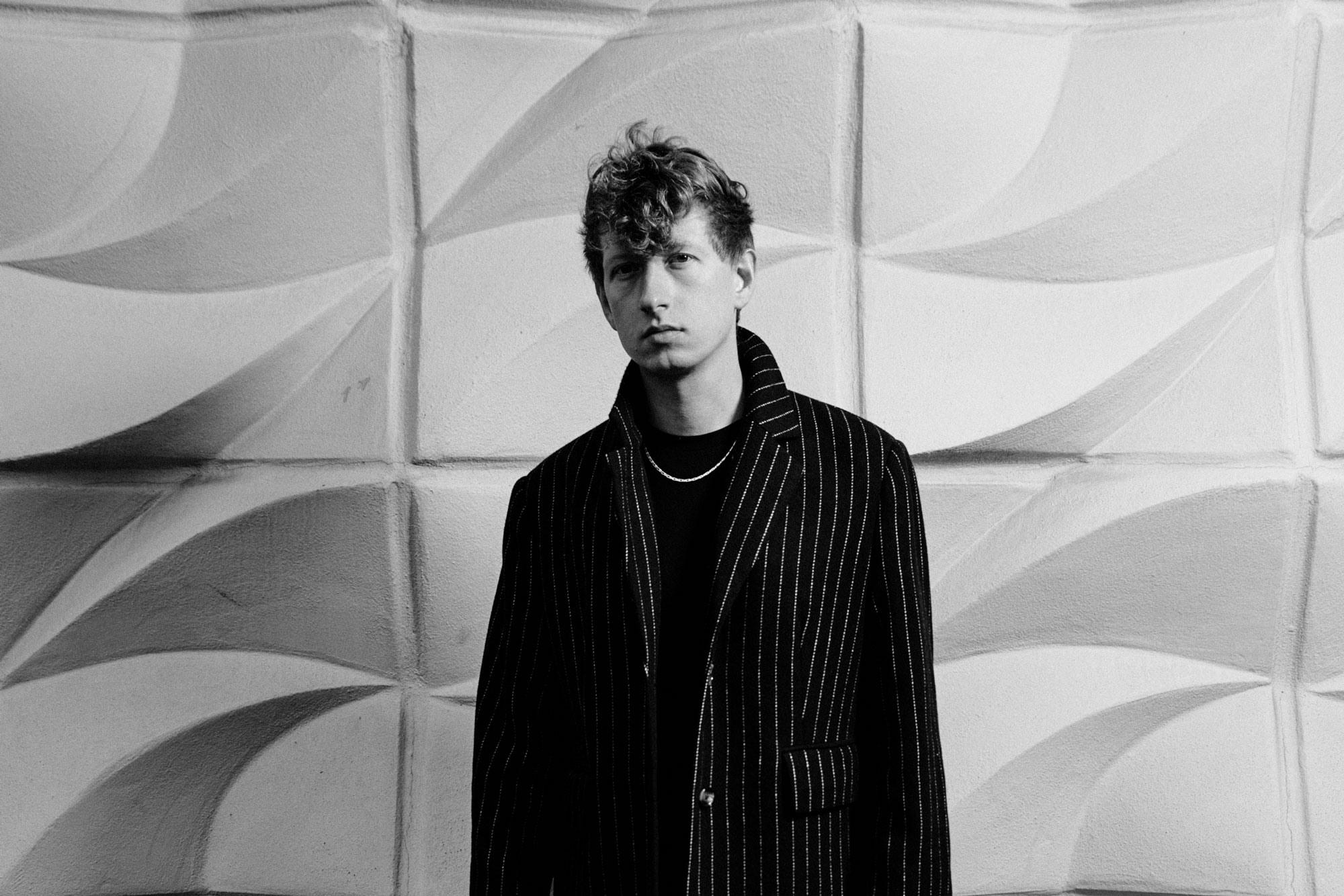
»Wenn man ihn rückwärts abspielt, wirkt der angedeutete Suizid wie eine Befreiung.«
Ihm sei die Sensibilität des Themas und die mögliche Wirkung der Bilder bewusst, versichert uns Julian. Was „C’est L’Hiver“ betrifft, das als Rückwärtsvideo angelegt sei, gehe es um den Akt der Befreiung statt um den des Selbstmords. Er erklärt: „Der Song geht verträumt los, der Protagonist ist anfangs noch sehr in sich gekehrt. Aber dann entsteht mehr und mehr dieses Momentum, mit dem er sich musikalisch freischwimmt. Ich fand es interessant, dass dieser angedeutete Suizid wie eine Befreiung wirkt, wenn man ihn rückwärts abspielt. Erst bekommt man keine Luft, ist vollkommen am Ende, aber dann läuft es aber Stück für Stück so, dass man es schafft, sich zu befreien. Das ist eine absolut absurde künstlerische Idee, aber ich fand, dass das irgendwie zu dem Song passt – vor allem in dieser Natur.“
Anders war es bei dem Video zu „Thud“ – das mit dem jungen Paar und dem Strick. Hier habe Julian etwas darstellen wollen, das das absolute Gegenteil des Songs verkörpere, der in seinem Wesen eher bekräftigend und lebensbejahend sei. „Ist das nicht ein geradezu absurdes Bild?“, fragt er und ergänzt: „Da sind zwei Menschen, die keine Angst vor dem Tod haben, sondern den todbringenden Strick regelrecht glorifizieren.“ Natürlich wisse er, dass er hier mit einem hochproblematischen Sujet hantiere. „Aber ich fand hier den Gedanken faszinierend“, sagt er, „mit diesem Video etwas abzubilden, das völlig untypisch ist. Ich mochte das Spiel mit den Extremen, dem Leben und dem Sterben. Und am Ende passiert ja auch nichts, sondern das Paar entscheidet sich gegen den Tod.“ Mit beiden Videos wolle er eine Geschichte erzählen, die inhaltlich und visuell tiefgreifend sei – etwas, das nicht sofort zu dechiffrieren sei und worüber man kurz nachdenken müsse.
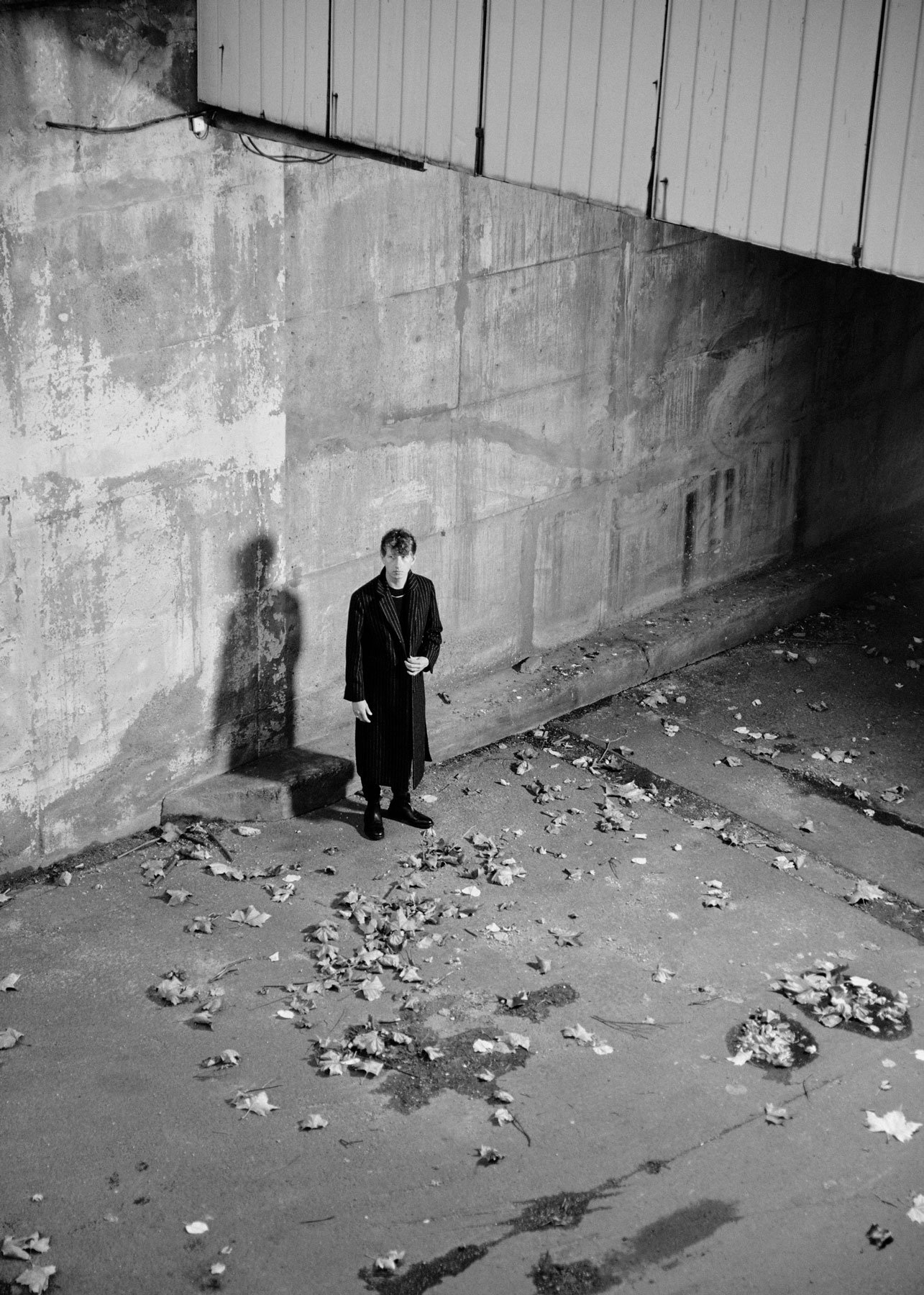
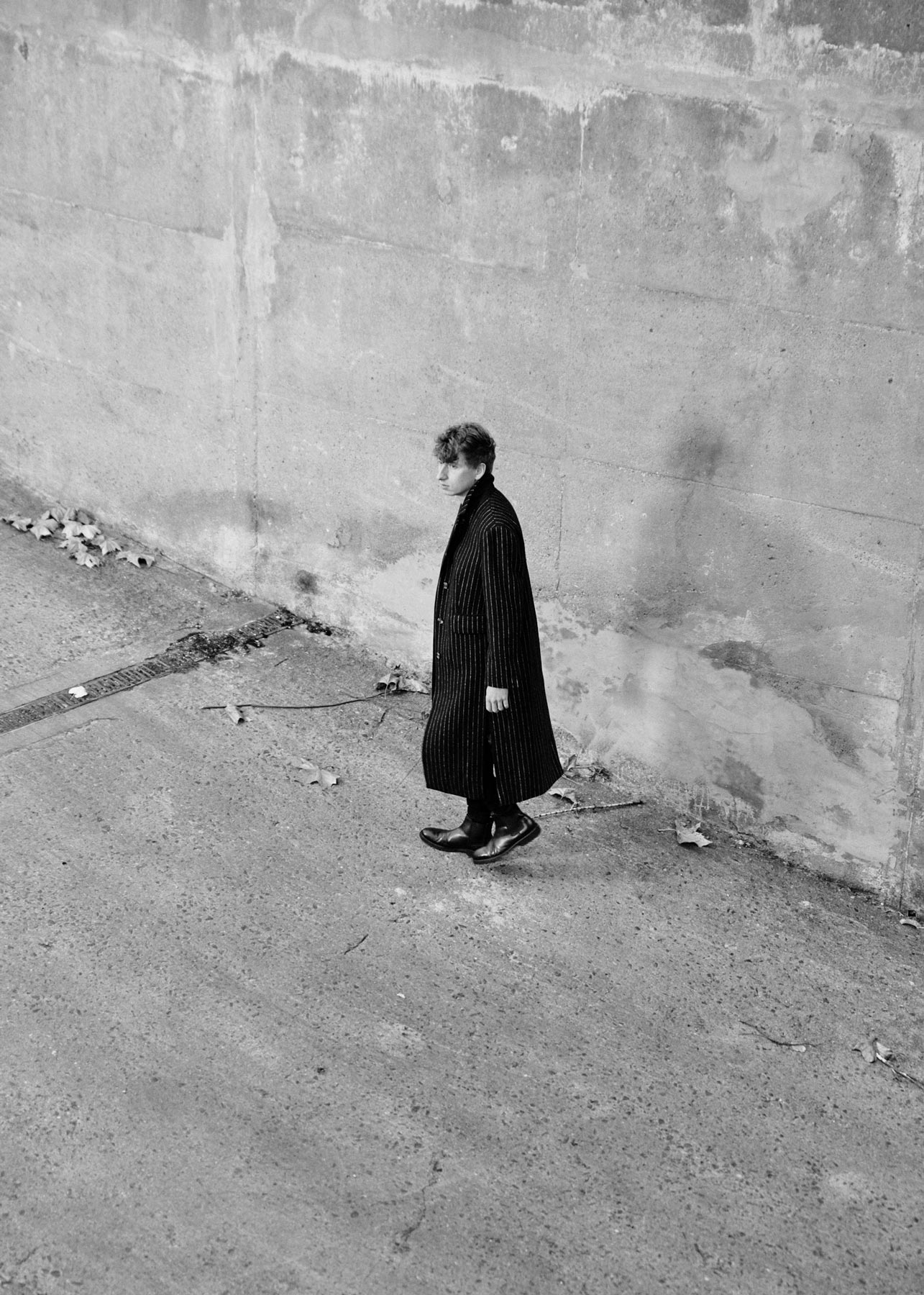
»Bei Abschieden frage ich mich immer, ob ich die Person wirklich nochmal wiedersehe.«
Nicht sofort zu entschlüsseln, das gilt auch für den Begriff Byelian selbst. Julian verrät uns, dass es sich dabei um eine Zusammensetzung aus dem Wort Bye und seinem Vornamen handelt. „Ich habe nach etwas gesucht, das für mich eine gewisse Traurigkeit impliziert“, erklärt er. „Abschied nehmen ist ja meistens etwas Trauriges – egal, ob man jemanden zum Flughafen bringt oder einen geliebten Menschen verliert.“ Er persönlich frage sich bei Abschieden immer leise, ob er die betreffende Person wirklich nochmal wiedersehe. „Das war schon immer so und hat sich irgendwie manifestiert“, erzählt Julian. Er habe es als überaus passend empfunden, diesen pessimistischen und melancholischen Gedanken in einem Namen festzuhalten, der die Melancholie seiner Musik beschreibe. „Byelian klingt zwar im ersten Moment weird. Aber damit konnte ich meiner Musik einen Begriff geben, der sie ausmacht. Melancholisch und von mir.“
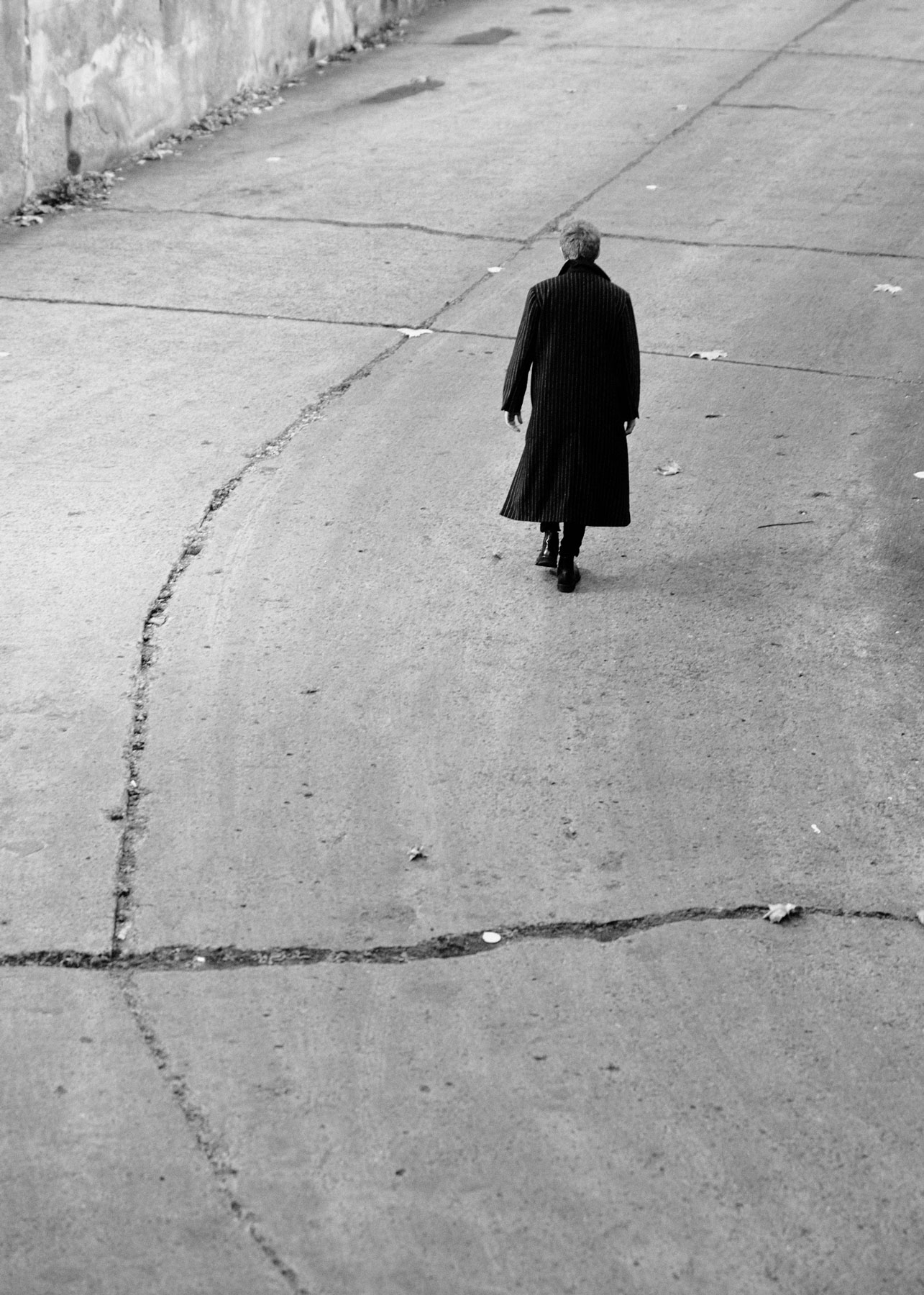
#byelian #crawlunderneathmyblanket #jonasmeyer #maximiliankoenig #mypmagazine
Hinweis: Das Gespräch und die Fotoproduktion mit Julian Kleinert fanden am 13. November 2021 in Berlin statt. Alle Personen wurden zuvor negativ auf das Coronavirus getestet.
Mehr von und über Byelian:
Fotografie: Maximilian König
Text: Jonas Meyer
Diana Ezerex
Portrait — Diana Ezerex
Von der Schwere der Vergangenheit
Die deutsche Singer-Songwriterin Diana Ezerex hat sich einer Sache verschrieben, die bereits Johnny Cash ein wichtiges Anliegen war: Sie spielt Benefizkonzerte vor Gefangenen. Die Lebensläufe dieser Menschen haben Diana zu ihrem Debütalbum »My Past’s Gravity« inspiriert, auf dem sie sich ausführlich mit dem Thema Vergangenheit auseinandersetzt – und dabei skizziert, wie schwer das, was mal war, noch heute wiegen kann.
2. Januar 2022 — Text: Jonas Meyer, Fotografie: Steven Lüdtke
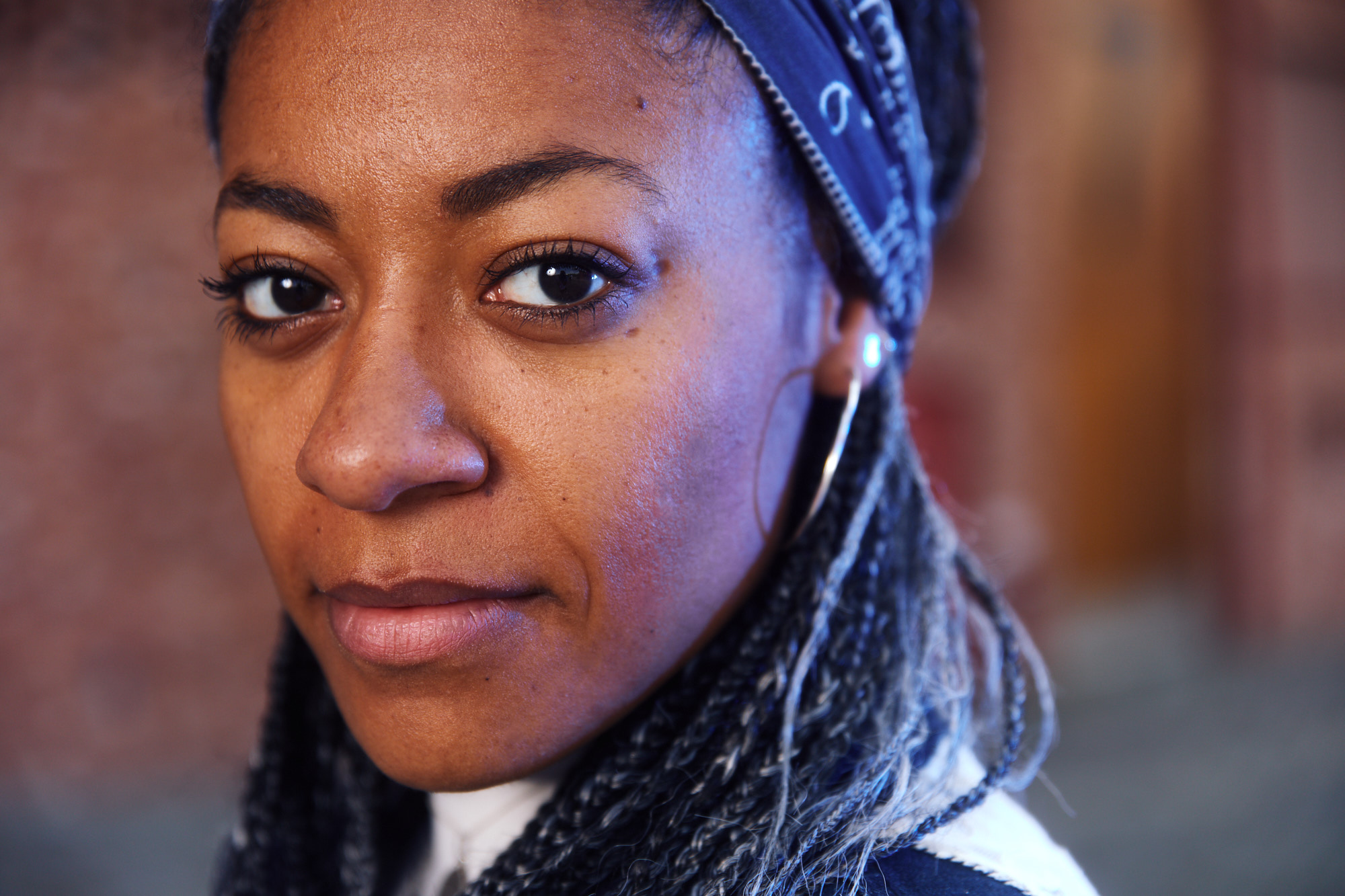
»Wenn wir bessere Menschen aus den Gefangenen machen, wird es weniger Verbrechen auf den Straßen geben.«
Als Johnny Cash am Morgen des 13. Januar 1968 den Speisesaal des Folsom State Prison betrat, um vor rund tausend Gefangenen ein Konzert zu spielen, bescherte er nicht nur den Inhaftierten eine Sternstunde. Der Country-Star schrieb mit diesem Auftritt Musikgeschichte, denn er war der Erste, der in einem Gefängnis ein Live-Album aufnahm. Bis heute verkaufte sich „Johnny Cash at Folsom Prison“ mehr als sechs Millionen Mal, die Platte gilt als eines der besten Live-Alben aller Zeiten.
Dabei hatte Cash bei seinem Label Columbia Records jahrelang darum gekämpft, so ein Album überhaupt machen zu dürfen. Zu groß war die Sorge der Plattenbosse, das Ganze würde ein Flop werden. Und dass Cash nach seinem Welthit „Ring of Fire“ im Jahr 1963 in die Drogen- und Medikamentensucht gestürzt und körperlich ein Wrack war, beförderte das Vertrauen auf Seiten der Plattenfirma nicht unbedingt. Doch der Musiker setzte sich am Ende durch, auch mit Hilfe seines neuen Produzenten Bob Johnsten, der an die ungewöhnliche Idee glaubte.
Das Konzert im Januar 1968 war nicht der erste Auftritt des Country-Stars in einer Strafanstalt. Bereits elf Jahre zuvor hatte er in einem Gefängnis ein Konzert gegeben. Johnny Cash hatte immer ein Herz für die Verstoßenen der Gesellschaft und war überzeugt: „Wenn wir bessere Menschen aus den Gefangenen machen, wird es weniger Verbrechen auf den Straßen geben. Dann werden unsere Familien sicherer sein, wenn diese Menschen aus den Gefängnissen entlassen werden.“
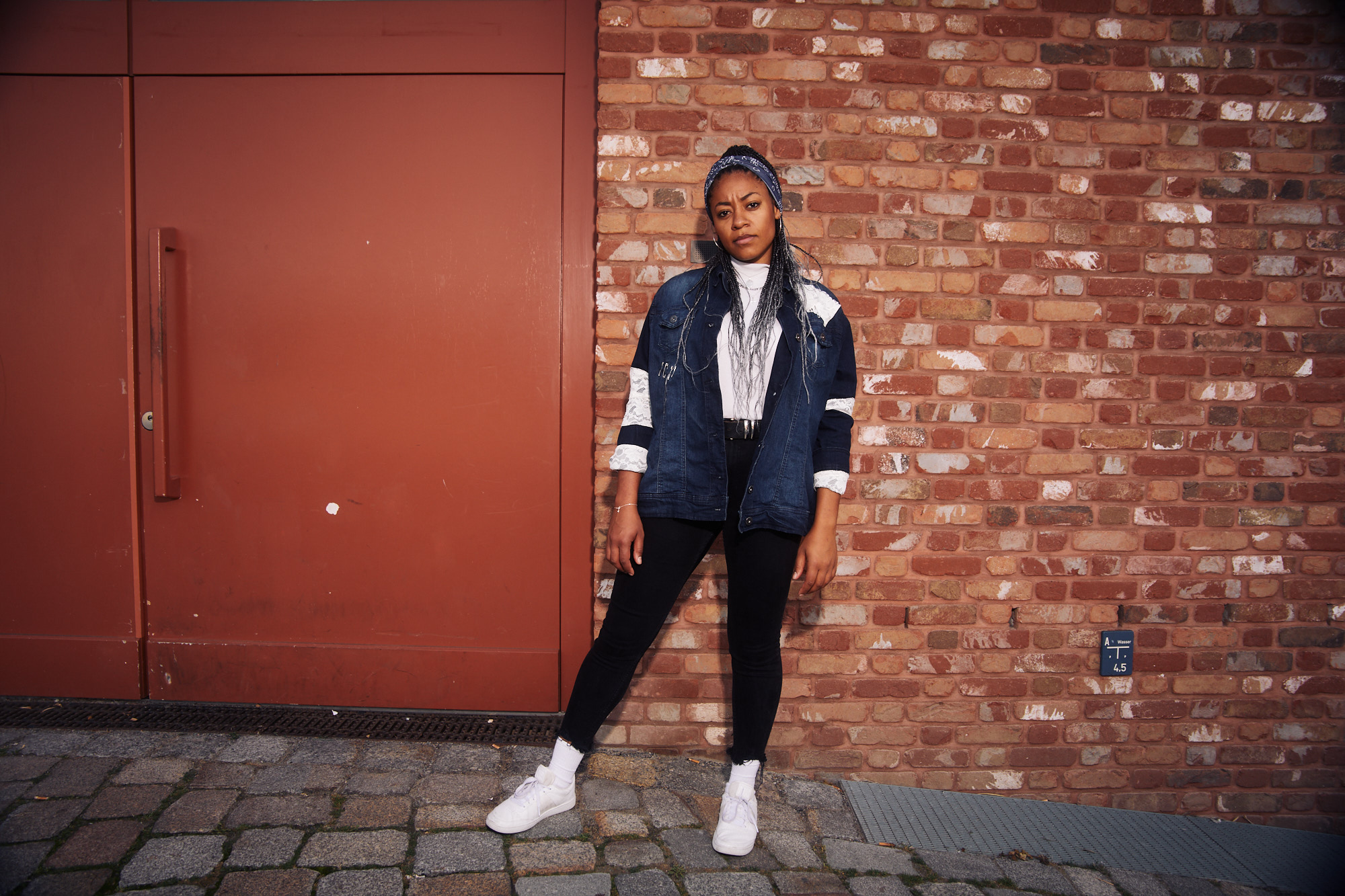
»Wir alle können etwas dazu beitragen, dass wir als Gesellschaft stärker werden.«
Gut fünf Jahrzehnte später verfolgt Diana Ezerex ein ganz ähnliches Ziel. Die Singer-Songwriterin aus dem schwäbischen Biberach hat bisher über 23 Konzerte in deutschen Haftanstalten gespielt. Seit ihrer Kindheit engagiert sich die heute 27-Jährige in diversen sozialen Projekten. „Wir alle können etwas dazu beitragen, dass wir als Gesellschaft stärker werden“, lässt sie uns während eines morgendlichen Interviews am Südzipfel des Berliner Gleisdreieck-Parks wissen. Dann fügt sie hinzu: „Es reicht nicht aus, wenn sich nur Sozialarbeiter:innen um andere Menschen kümmern. Wir alle stehen in der Verantwortung – und es gibt so viel zu tun.“
Seit 2019 ist Diana an der Pädagogischen Hochschule Karlsruhe im Masterstudiengang Kulturvermittlung eingeschrieben. „In diesem Studium geht es darum“, erklärt sie, „Kunst, Literatur oder Theater so aufzubereiten, dass dadurch Menschen erreicht werden, die damit sonst keine Berührungspunkte haben. Und das ist wichtig – denn Bildung muss für alle zugänglich sein und darf kein Privileg sein.“
»Wie konnte es passieren, dass diese supernett wirkenden Jugendlichen schon mal im Knast saßen?«
Auf die Idee, Konzerte in Gefängnissen zu spielen, wurde sie allerdings schon während ihres Freiwilligen Sozialen Jahrs in der Jugendhilfe gebracht. Dort begegnete sie Teenagern, die in ihren jungen Leben bereits eine oder mehrere Haftstrafen verbüßt hatten – und das machte sie neugierig: „Ich habe mich gefragt: Wie konnte es passieren, dass diese supernett wirkenden Jugendlichen schon mal im Knast saßen? Ich wollte mehr über ihre Schicksale herausfinden und erfahren, wie es ihnen in der Haft ergangen ist.“
Dieses Thema ließ Diana nicht mehr los und sie machte sich Gedanken darüber, wie sie mit ihrer Musik jene Menschen erreichen konnte, die im Gefängnis vom Rest der Welt mehr oder weniger abgeschnitten sind. „Anfangs war es pure Neugier“, erzählt die Musikerin. „Dass daraus am Ende ein Herzensprojekt wurde, liegt wohl daran, dass es bisher bei jedem Auftritt mindestens eine besondere Begegnung gab, bei der ich dachte: Es ist genau richtig, was ich hier tue.“
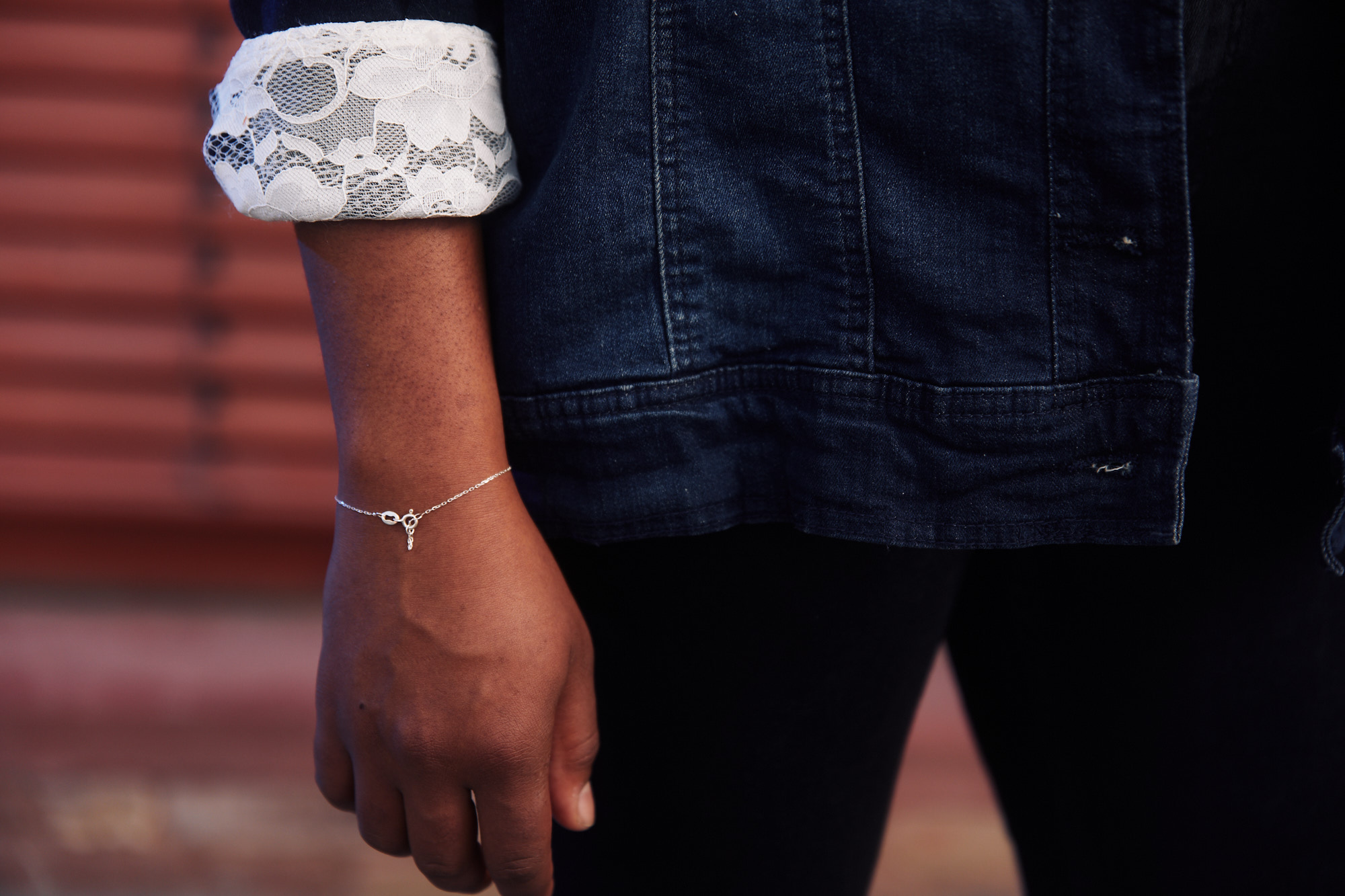
»Musik kann eine Verbindung zwischen Menschen schaffen, deren Lebensrealitäten sich oft fundamental unterscheiden.«
Auch wenn es heutzutage in Männer-, Frauen- und Jugendstrafanstalten diverse kulturelle Angebote gibt, ist Diana immer wieder fasziniert von den positiven Reaktionen der Insass:innen. Denn immerhin prallen da ganz unterschiedliche Lebenswelten aufeinander. „Es erstaunt mich jedes Mal aufs Neue, wie Musik plötzlich eine Verbindung zwischen Menschen schaffen kann, deren Lebensrealitäten sich oft fundamental unterscheiden.“ Sie selbst, so erzählt sie, habe im Gegensatz zu den meisten Inhaftierten das Privileg gehabt, in einem behüteten Elternhaus aufzuwachsen, das Abitur zu machen und zu studieren. Umso schöner sei es, dass dieser Unterschied bei ihren Auftritten keine Rolle spiele.
Und mehr noch: Zwischen ihr und dem Publikum, so sagt sie, entstehe bei den Auftritten immer eine ganz besondere Emotionalität. „Es passiert zum Beispiel nach dem Konzert oft, dass Menschen tief berührt oder sogar weinend auf mich zukommen – Frauen wie Männer. Genauso oft wird aber auch herzlich gelacht. Oder es entwickelt sich plötzlich so etwas wie eine kleine Party, etwa wenn die Sozialarbeiterin einige Percussions und Shaker ins Publikum gibt und wir gemeinsam Musik machen.“ Eine ähnlich euphorische Stimmung erlebte übrigens auch Johnny Cash bei seinem berühmten Konzert im Januar 1968, was sein Live-Album auch heute noch akustisch belegt.
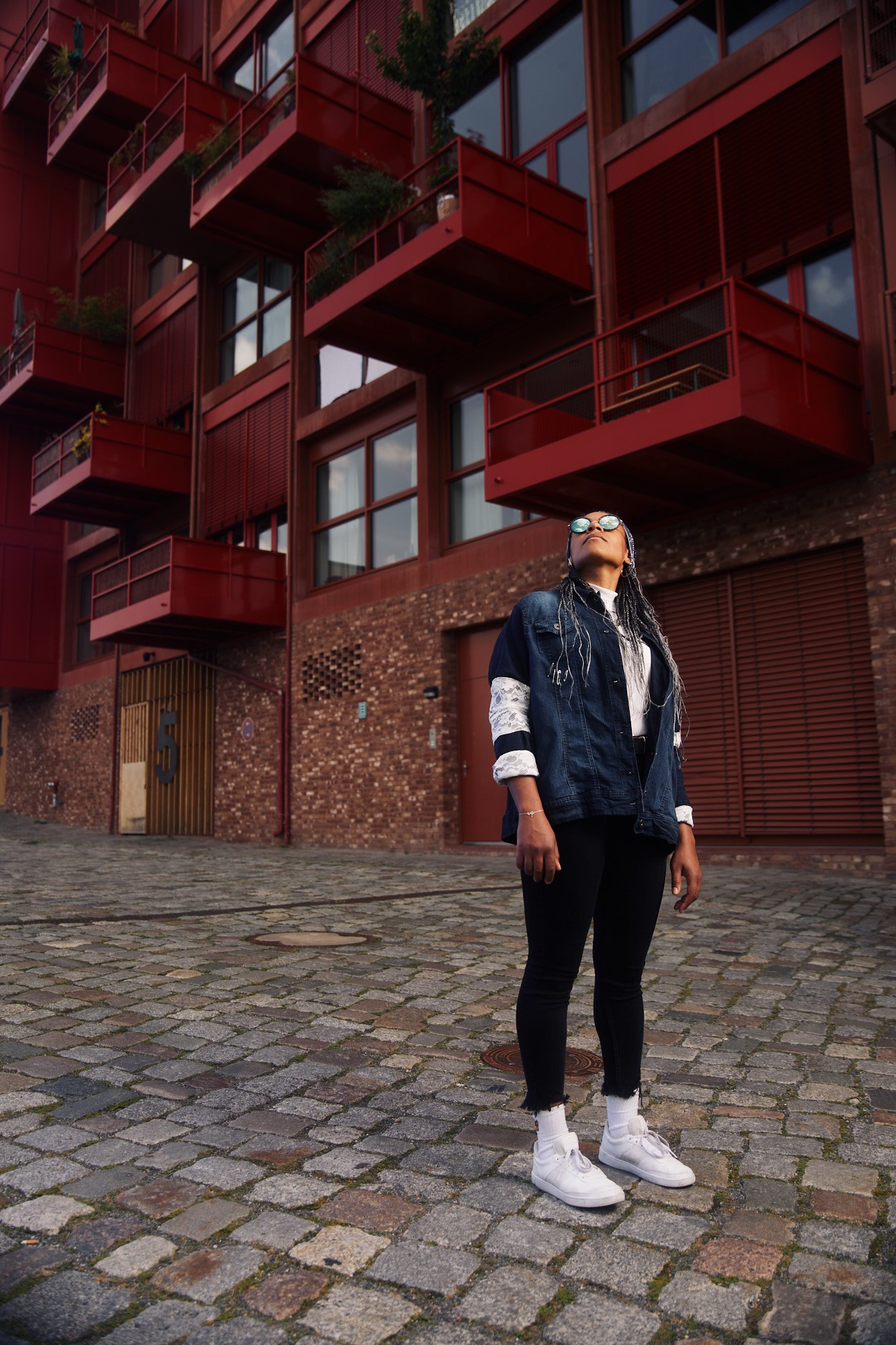
»Was gesellschaftliche Ungerechtigkeiten angeht, bin ich persönlich hochsensibel.«
Das Folsom State Prison in Kalifornien galt damals als härtester Knast der USA. Die Wächter verfolgten eine Null-Toleranz-Politik, viele der Inhaftierten waren aufgrund schwerer und schwerster Delikte zu lebenslangen Haftstrafen verurteilt. Wer vor so einem Publikum auftritt, wird sich irgendwann die Frage gefallen lassen müssen, warum er oder sie ausgerechnet für die Täter:innen spielt – und nicht für die Opfer.
Johnny Cash, der 2003 verstarb, kann darauf nicht mehr antworten. Aber Diana Ezerex. „Diese Kritik ist mir schon begegnet“, sagt sie und gibt zu: „Ich finde die Frage absolut berechtigt. Was gesellschaftliche Ungerechtigkeiten angeht, bin ich persönlich hochsensibel.“ Doch die Musikerin liefert gleich mehrere Gründe, warum sie sich vor fünf Jahren entschieden hat, ihre Musik in deutsche Gefängnisse zu tragen.
Erstens, so erklärt sie, seien viele dieser Menschen selbst auch Opfer, besonders die in den Frauengefängnissen. Im Laufe ihres Lebens hätten sie zum Teil schwere Traumata erlitten, etwa durch Missbrauch, Gewalt oder Verwahrlosung. „Ich erfahre immer wieder von schlimmen, prägenden Ereignissen, die bereits vor langer Zeit den Weg bereitet haben für eine spätere Kriminalisierung“, erzählt Diana.
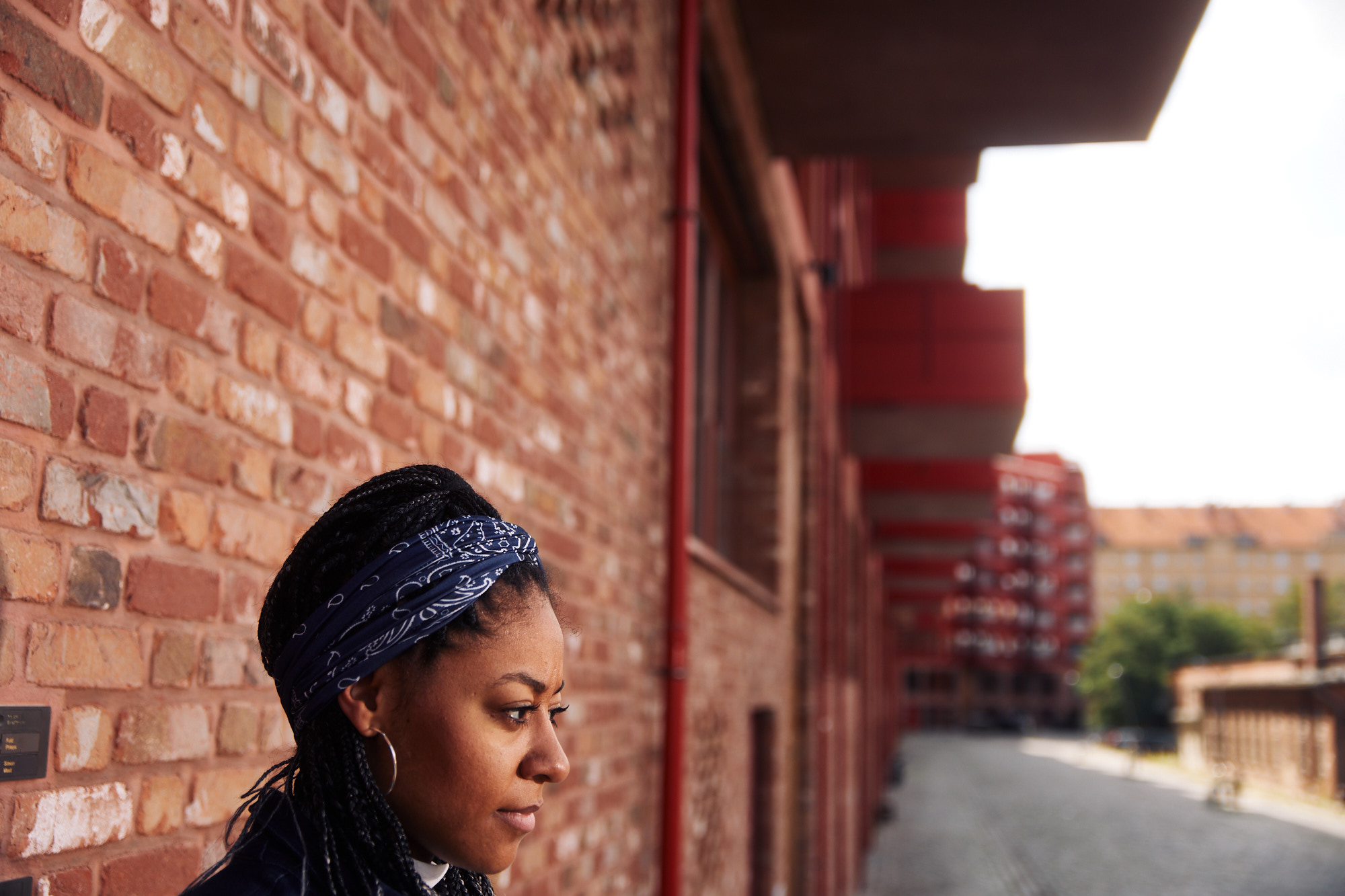
»Ich weiß nie, ob vor mir ein guter oder ein schlechter Mensch sitzt.«
Zweitens, und da hält sie es ganz mit Johnny Cash, fühle sie sich in der Verantwortung, mit ihrem künstlerischen Engagement etwas zur Resozialisierung dieser Menschen beizutragen – und damit zu verhindern, dass sie erneut zu Täter:innen würden. Da könne Musik gewaltige Brücken bauen.
Drittens habe sie selbst überhaupt kein Recht, über einzelne Personen im Publikum zu urteilen. Oder generell zu entscheiden, wer Zugriff auf Kunst haben dürfe und wer nicht. Denn ganz egal, ob sie in einem Gefängnis, in einem Club oder in einer Konzerthalle spiele, sie könne in niemanden hineinschauen. „Ich weiß nie, ob vor mir ein guter oder ein schlechter Mensch sitzt. Oder ob dieser Mensch etwas angestellt hat oder nicht. Die beste Lösung für mich ist daher, so offen und freundlich wie irgend möglich auf die Leute zuzugehen.“
Ihr viertes Argument zieht sie aus einer Begegnung, die sie 2017 bei einem Benefizkonzert hatte. Dort lernte sie eine junge Frau kennen, mit der sie sich über soziales Engagement unterhielt: „Man allein kann nie die ganze Welt retten“, sagte sie zu Diana, gefolgt von den Worten: „Du musst dir also eine einzelne Sache aussuchen, bei der du glaubst, einen Unterschied machen zu können. Fokussier dich auf diese eine Sache und steck deine ganze Energie rein. Das hilft vielmehr, als überall ein kleines bisschen zu tun.“ Dieses Credo imponierte Diana und sie entschied: „Ich bleibe erst mal beim Gefängnis.“
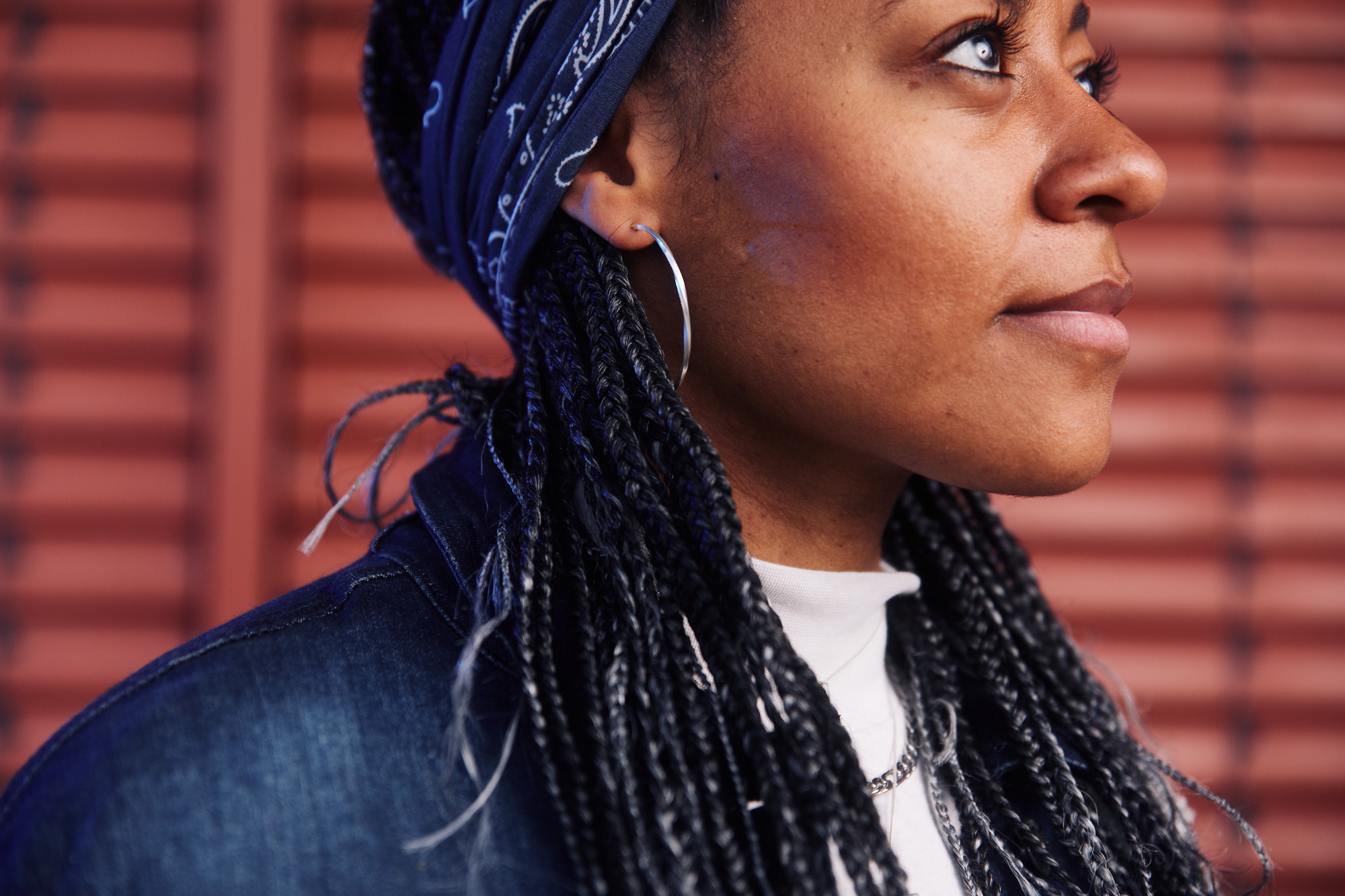
»Die Vergangenheit hat einen großen Einfluss darauf, wer wir heute sind. Sie beeinflusst unsere Sprache, unsere Handlungen, unsere Gefühle.«
Die eindrücklichen Erlebnisse, die sie während ihres Freiwilligen Sozialen Jahrs und später bei ihren Gefängniskonzerten sammelte, inspirierten die junge Musikerin zu ihrem ersten Studioalbum. Die Platte mit dem Titel „My Past’s Gravity“, die Mitte 2021 erschien, setzt sich ausführlich mit dem Thema Vergangenheit auseinander: „Ich will mit diesem Album zeigen“, erklärt Diana, „dass die Vergangenheit uns alle zurückhalten, sogar hemmen kann. Und dass sie einen großen Einfluss darauf hat, wer wir heute sind und wer wir irgendwann mal sein werden. Die Vergangenheit beeinflusst unsere Sprache, unsere Handlungen, unsere Gefühle.“
Auch wenn das Album kein autobiografisches ist, hat Diana der Blick auf das eigene Leben immens dabei geholfen, die insgesamt 14 Tracks zu konzipieren. „Ich habe reflektiert, wie ich aufgewachsen bin, welche Menschen mich über die Jahre begleitet haben und welchen Ereignissen und Lebensumständen ich ausgesetzt war“, beschreibt sie den Entstehungsprozess. „Dabei habe ich gemerkt“, fährt sie fort, „dass ich das Meiste gar nicht beeinflussen konnte. Ich wurde in mein Leben hineingeboren – wie auch Straftäter:innen irgendwann mal in ihr Leben hineingeboren wurden. Vieles davon konnte ich persönlich nicht steuern. Und wenn es mal eine Situation gab, die ich vielleicht zum Besseren hätte wenden können, habe ich oft impulsiv gehandelt und nicht an die Konsequenzen gedacht. So trifft jeder Mensch im Laufe seines Lebens eine Reihe von Entscheidungen, die er später bereut, ob im Großen – wie etwa bei einer Straftat – oder im ganz Kleinen.“
Aus diesem Grund beschreibt Diana Ezerex in „My Past’s Gravity“ die Vergangenheit als etwas, das es zu überwinden gilt und bei dem man gleichzeitig erkennen muss, wie es die eigene Persönlichkeit geprägt hat. In ihren Songtexten spannt sie daher immer wieder den Bogen zwischen gestern, heute und morgen, reflektiert, verzeiht, schließt ab und schließt auf. Ein Beispiel hierfür ist der Track „Where would I hide“. Während die Erzählerin in den einzelnen Strophen die Vergangenheit rekapituliert und daraus den aktuellen Ist-Zustand herleitet, wird dieser im Chorus aufgebrochen und ein idealer Soll-Zustand beschrieben, der den Weg in eine bessere Zukunft eröffnet.
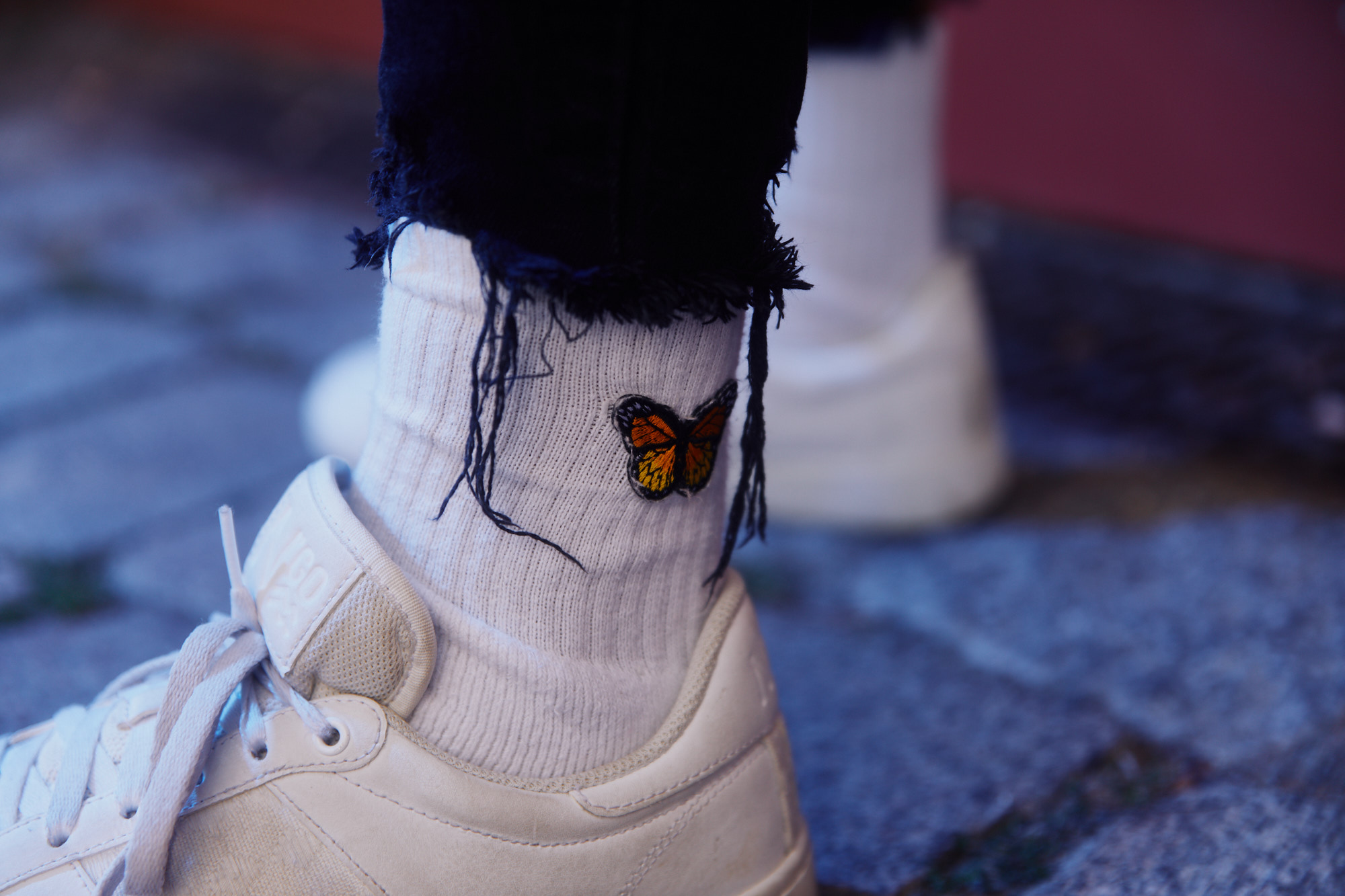
»Ich wollte, dass sich die einzelnen Songs aneinander reiben.«
Musikalisch bietet Dianas Debutalbum einen unverkrampft und erfrischend wirkenden Ritt durch die Genres. Fühlt man sich an der einen Stelle an frühe Boyband-Sounds erinnert, hat man anderswo das Gefühl, dass die Singer-Songwriterin von Mura Masa und A$AP Rocky inspiriert wurde.
Diese Gegensätze seien von Diana und ihrem Produzenten zwar nicht bewusst konstruiert worden, das Schreiben sei eher intuitiv gewesen. Trotzdem gesteht sie: „Ich mag solche Extreme und wollte, dass sich die einzelnen Songs aneinander reiben.“ Als das inhaltliche Konzept für ihr Album stand, erstellte sie eine Playlist aus unterschiedlichsten Lieblingstracks, die als Referenz für den Vibe der Platte dienen sollte.
»Ich würde gerne die Perspektiven anderer Menschen auf das Thema Vergangenheit kennenlernen.«
Dass es dafür nicht immer instrumentale Vorbilder brauchte, lassen das Intro („The Gravity Of My Past“) sowie das Outro („I’ll Run“) vermuten. Während das eine wie ein klassischer Shakespeare-Prolog klingt, der auf einem Soundteppich à la „Blade Runner 2049“ schwebt, erinnert das andere ein wenig an den Duktus der US-amerikanischen Schriftstellerin, Lyrikerin und Aktivistin Amanda Gorman.
„Ich liebe spoken words-Elemente“, lässt uns Diana wissen und erklärt: „Ich wollte auf meinem allerersten Album nicht einfach mit einem Song starten, sondern eine besondere Einleitung schaffen. Mit dem gesprochenen Intro konnte ich eine inhaltliche Rampe in die Thematik bauen – und damit ganz nebenbei erreichen, dass die Leute dem Text genau zuhören. Sonst werden Lyrics ja gerne mal überhört.“
Diese besondere Vermischung von Kunstformen forciert Diana nicht nur auf ihrem Album. Um „My Past’s Gravity“ herum entstehen zurzeit mehrere Musikvideos, dazu ein Theaterstück sowie ein Kurzfilm, dessen Drehbuch gerade fertiggestellt wurde. Das Album soll dazu lediglich als Inspiration dienen und andere Künstler:innen dazu einzuladen, sich kreativ mit dem Thema Vergangenheit auseinanderzusetzen. „Ich selbst habe das ja bereits getan“, erläutert Diana. „Jetzt würde ich gerne die Perspektiven anderer Menschen auf die Thematik kennenlernen und möchte ihnen dabei soviel Freiraum wie möglich lassen.“
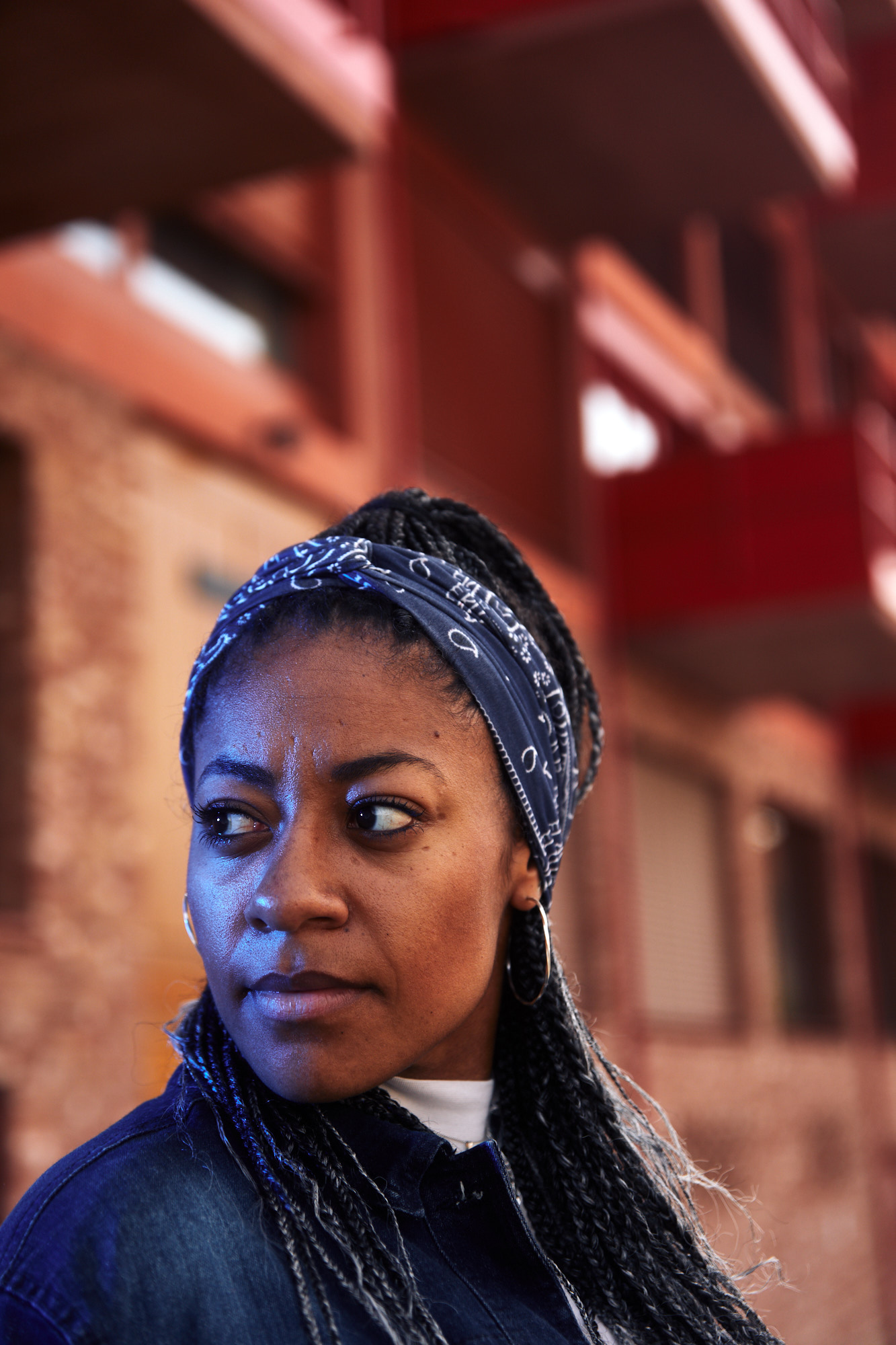
»Die Gesellschaft selbst hat in vielen Fällen eine Situation geschaffen, in der Menschen Kriminalität als einzig verbliebene Lösung für ein besseres Leben sehen.«
Apropos andere Kunstformen: In der Pressemitteilung zu ihrem Debutalbum zitierte Diana den berühmten Tolstoi-Satz „Um einen Staat zu beurteilen, muss man sich seine Gefängnisse von innen ansehen.“ Sie selbst kennt mittlerweile 23 Gefängnisse von innen, zumindest durch ihre Konzerte. Stimmt Tolstois Behauptung? Und wenn ja, wie beurteilt Diana unseren Staat?
„Diesen Satz habe ich vor allem deshalb in den Pressetext gepackt, weil ich auf einen größeren Gesamtzusammenhang aufmerksam machen wollte“, sagt die Künstlerin. „In den Gefängnissen kann man sehen, was in unserer Gesellschaft schiefläuft. Die Leute, die dort einsitzen, werden als Problem für die Gesellschaft wahrgenommen. Dabei hat die Gesellschaft selbst in vielen Fällen eine Situation geschaffen, in der Menschen Kriminalität als einzig verbliebene Lösung für ein besseres Leben sehen.“
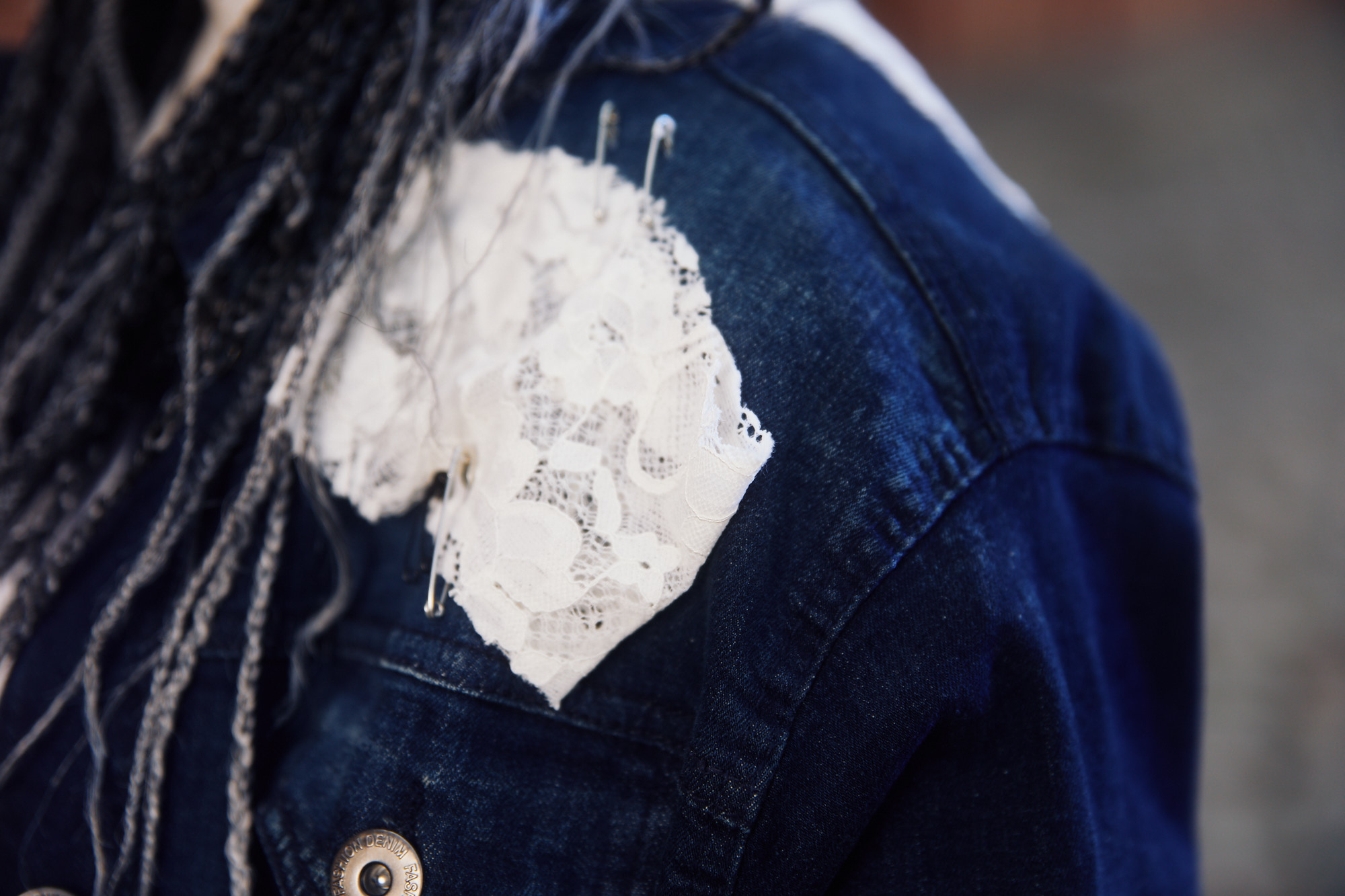
»Viele glauben, dass es ausreicht, einmal im Jahr auf Instagram eine schwarze Kachel zu posten.«
Diana unterstreicht, dass sie Straftaten weder relativieren noch rechtfertigen wolle. Sie wolle vielmehr den Appell an die Gesellschaft richten, nach den Ursachen der Kriminalisierung zu fragen und genauer hinzusehen. Manchmal, so sagt sie, könne es bereits helfen, sich mehr umeinander zu kümmern: „Wenn wir besser miteinander umgehen, mehr miteinander reden oder überhaupt offener aufeinander zugehen, kann das im Leben eines Einzelnen einen Unterschied machen. Leider sind wir alle mittlerweile so individualistisch eingestellt, dass wir uns viel zu oft aus der Verantwortung für die Gemeinschaft ziehen“, sagt Diana und schiebt hinterher: „Viele glauben, dass es ausreicht, einmal im Jahr ein paar Euros an UNICEF zu spenden oder auf Instagram eine schwarze Kachel zu posten. Aber das ist bei weitem nicht genug.“
»In unserer Gesellschaft ist es doch so: Wenn ein Mensch mit seinem eigenen Scheiß nicht klarkommt, ist er verloren.«
Dieses Anliegen thematisiert sie auch in ihren Songs. Die Beschäftigung mit der eigenen Umwelt müsse zu einem dauerhaften Zustand werden, nicht zu einem sporadischen. „Wir müssen ständig füreinander da sein“, fordert die junge Musikerin. „Denn in unserer Gesellschaft ist es doch so: Wenn ein Mensch mit seinem eigenen Scheiß nicht klarkommt, ist er verloren. Zumindest in unserem engeren persönlichen Umfeld können wir darauf achten, dass es in Zukunft nicht mehr dazu kommt.“
Darüber hinaus wünscht sie sich, dass ehemaligen Gefangenen, die ihre Strafe verbüßt haben, auch tatsächlich eine zweite Chance gegeben wird. „Rein theoretisch ist es in unserem Rechtssystem so, dass jemand rehabilitiert in die Gesellschaft zurückkehren darf, wenn er seine Strafe abgesessen hat“, erklärt sie. „Doch die Realität sieht anders aus. Wer aus dem Gefängnis kommt, wird oft mit Vorurteilen überschüttet und voller Argwohn betrachtet. Die Leute denken: Aus dem Knast, da kann nichts Gutes kommen.“
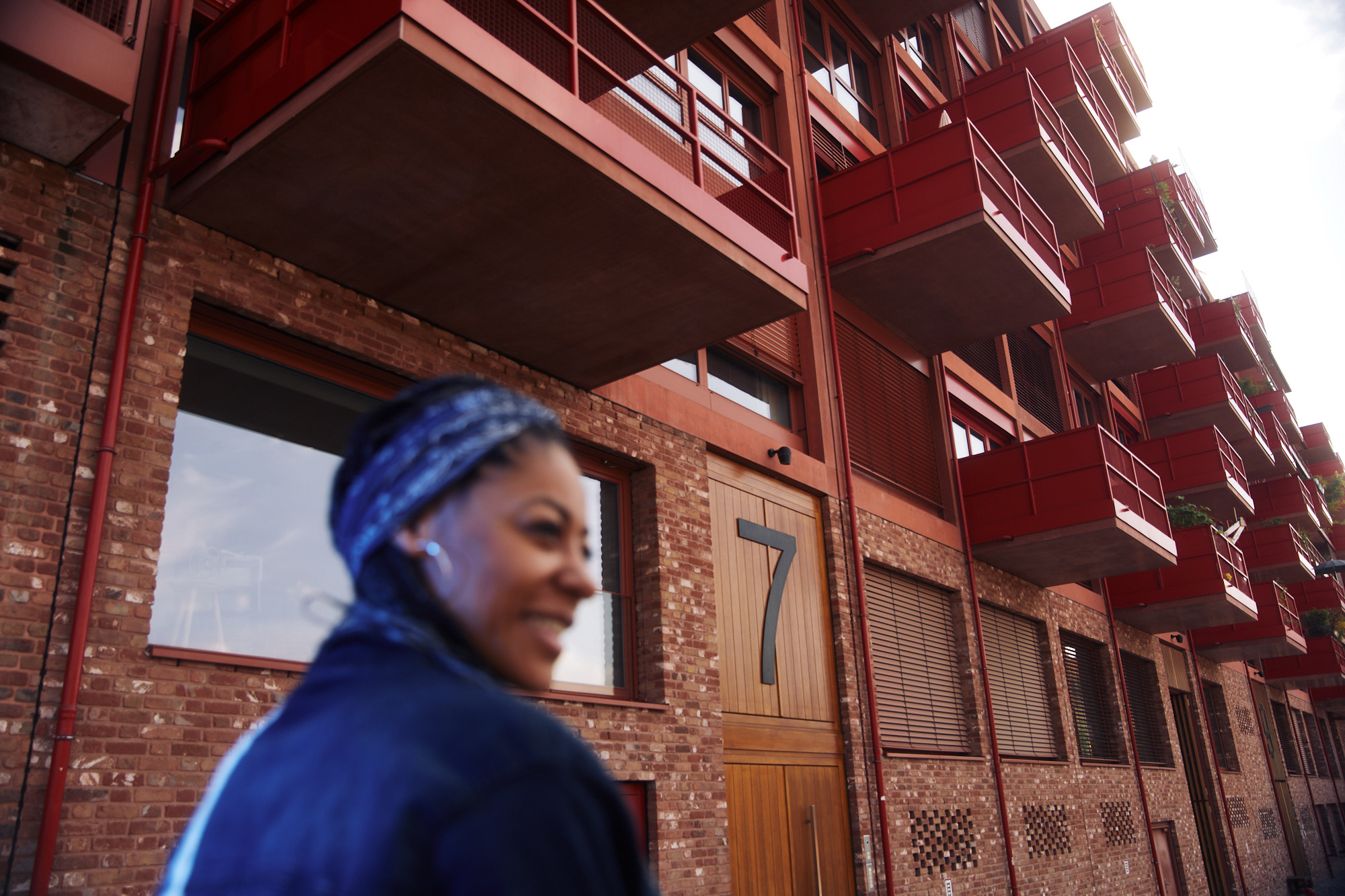
»Erst in der offenen Jugendarbeit wurde ich damit konfrontiert, dass Jugendliche auch auf eine ganz andere Art und Weise aufwachsen können.«
Gegen so einen Blick auf die Welt und die Menschen wehrt sich Diana mit aller Kraft. Dabei weiß sie aus eigener Erfahrung, wie schwer es ist, der eigenen Bubble zu entfliehen und einen Blick über den Tellerrand zu wagen: „Meine Eltern waren zwar nicht reich und ich kann auch nicht behaupten, dass mir nie Rassismus begegnet wäre. Aber mein Leben war immer sehr behütet – und mein Alltag geprägt von Volleyball, Debattierclub und Ehrenamt. Erst in der offenen Jugendarbeit wurde ich damit konfrontiert, dass Jugendliche auch auf eine ganz andere, mir völlig ferne Art und Weise aufwachsen können. Das war eine extrem wichtige Erfahrung.“
Und genau diese Erfahrung ist es auch, die Diana Ezerex all jenen Menschen wünscht, die es sich in ihrer Blase gemütlich gemacht haben, abgeschirmt von all den anderen Lebensrealitäten und Geschichten derer, die es in unserer Gesellschaft nicht ganz so weich, warm und sicher haben.
So könne die Welt am Ende tatsächlich zu einer besseren werden, prognostiziert sie verhalten optimistisch. Dafür müsse sich jeder Mensch nur auf eine einzelne Sache fokussieren, bei der er glaube, einen Unterschied machen zu können. Wie das geht, hat sie schon mal vorgemacht.
#dianaezerex #mypastsgravity #stevenluedtke #mypmagazine
Mehr von und über Diana Ezerex:
Fotografie: Steven Lüdtke
Interview & Text: Jonas Meyer
Daniel-Ryan Spaulding
Interview — Daniel–Ryan Spaulding
»I don’t think that comedy is a safe space«
With a sharp sense of humor, comedian Daniel-Ryan Spaulding likes to confront not only German quirks, but also attitudes—especially those of Berliners. The 36-year-old conveys this with his very own attitude as a gay man born and raised in Canada—and who fled to Europe for the lack of culture, as he says. What follows is an interview about German smugness, Canadian boredom, and European failure in terms of gay rights.
15. September 2021 — Interview & text: Jonas Meyer, Photography: Maximilian König
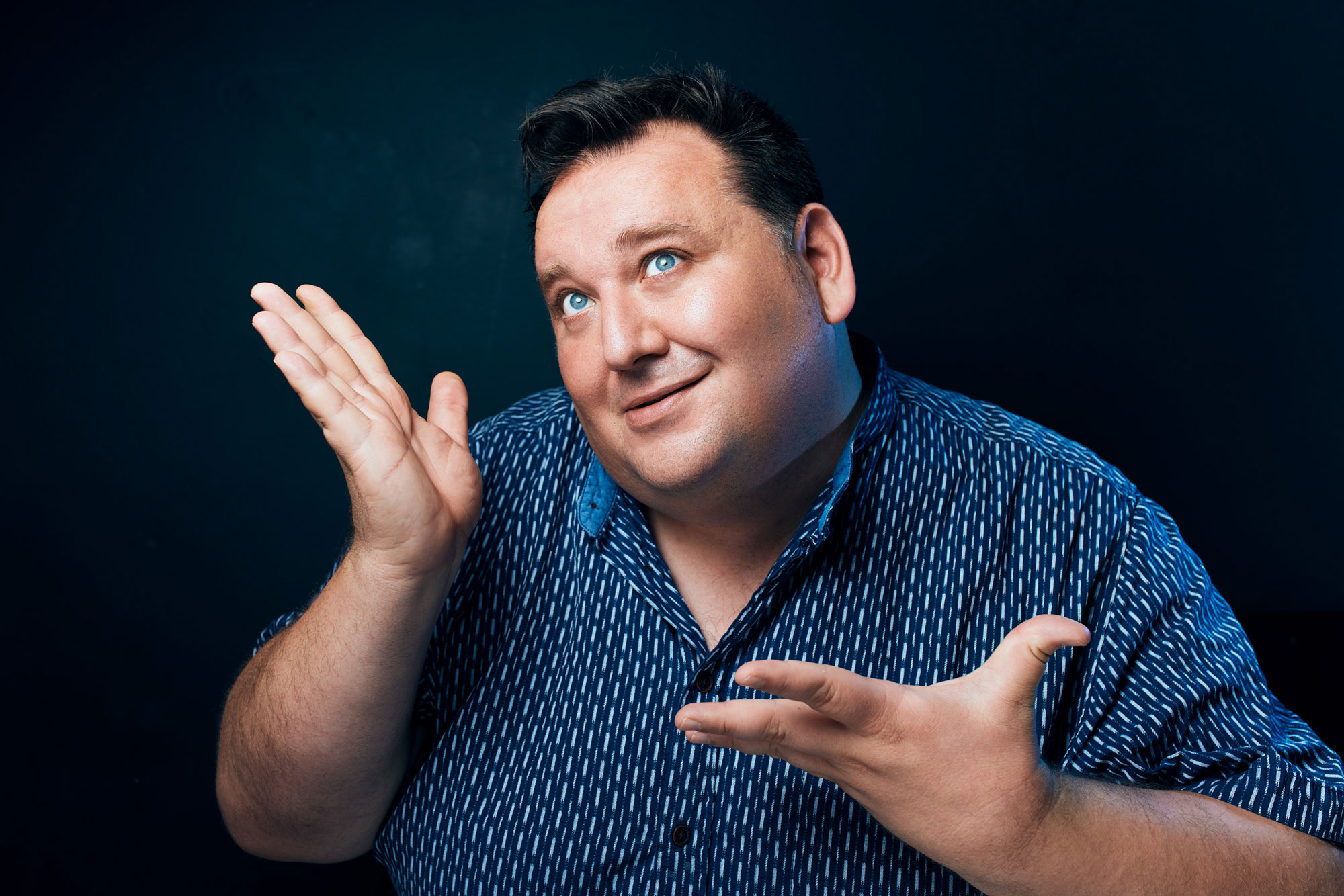
“The earliest representations I saw on screen of gay people were always people to be mocked,” says CNN’s world-famous anchor Anderson Cooper on Visible: Out on Television, a five-part docuseries on Apple TV+. The miniseries looks at the visibility of queer people on television over the last 70 years, starting with Episode 1, “The Dark Ages.”
Cooper, who was born in 1967 in New York City, came out as gay in 2012. That made him, according to The New York Times, “the most prominent openly gay journalist on American television” at the time. With this background, he has not only witnessed a lengthy process towards more representation of queer people in the media, but also played an important role in it, like many other individuals who have fought and continue to fight for more diversity, acceptance, and equality on screen.
But the fact that Apple created an exciting retrospective of the past seven decades with its series does not mean that everything is good today. In many countries around the world, the portrayal of queer people and topics in film and television is still banned. And even in a country like Germany, a lot still needs to be improved when it comes to more queer visibility on screen. And while we’re at it: A little more humor couldn’t hurt either.
What a blessing that there is Daniel-Ryan Spaulding, because he is an expert on both. The 36-year-old comedian—who was born and raised in Canada and lives in Berlin now—became famous in 2014 with a video he posted on YouTube, titled “If Gay Guys Said the Stuff Straight People Say…” Even though now it seems we’ve seen videos like it a hundred times, seven years ago it was more or less the first of its kind, and has hit more than 2 million views to date.
But Daniel’s comedy isn’t just about gay stereotypes and dull prejudices. With his web series It’s Berlin!, he makes fun of the very special attitude of many super-cool residents of the German capital, and with “Hilda und Helga,” he created an oddball lesbian couple that helps bring weird German quirks before our eyes. Besides that, he’s just started a new podcast that sheds light on the 1920s and 2020s.
So, it’s high time for an interview. We meet Daniel at the Bar Saint Jean—a cozy, stylish, and warmhearted place that is an integral part of the bar landscape in Berlin, not only for the gay scene, and that has become a kind of home for many individuals, especially of the queer community.
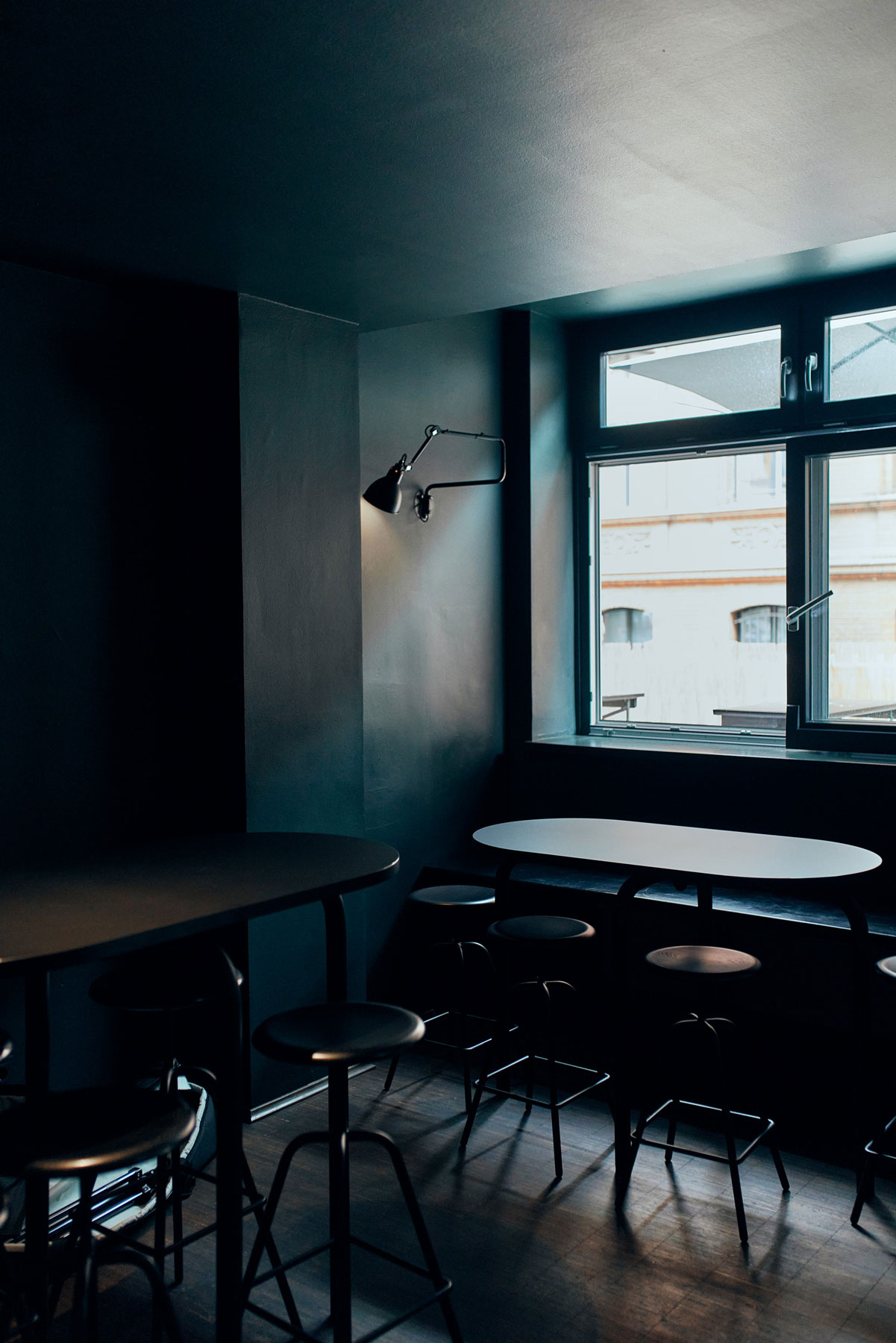
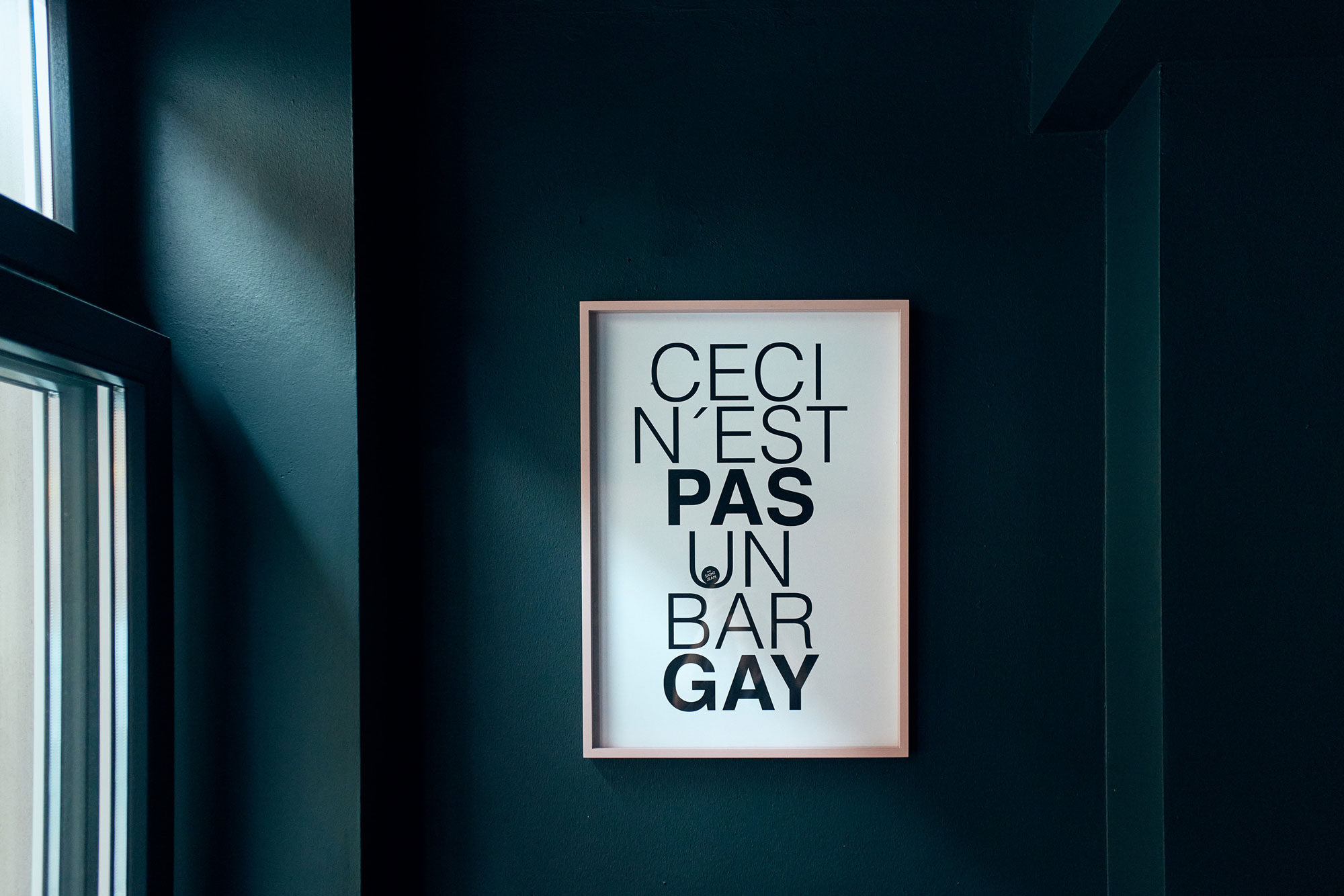
»People don’t have an attention span anymore.«
MYP Magazine:
A couple of weeks ago you released the very first episode of your new podcast, The Roaring 20s! On that show you not only reflect on the decade we’re living in—with all its societal, political and cultural developments—but you also look back at the 1920s. What is it exactly that fascinates you so much about these two eras?
Daniel (laughs):
I think the 1920s were an interesting time, especially in Germany. It was between the two World Wars and a lot was in motion. Artistic culture was unfolding, cinema evolved rapidly, and there was also a big gay rights movement that happened at that time. In my opinion the past is always relevant to how we’re living our lives now, how society has evolved, and how things change and grow. It seems that things are kind of cyclical, just with different patterns, trends and needs—not necessarily politically, but in terms of fashion, art, and culture. That’s one of the reasons why I thought that would be an interesting element to my podcast because we don’t really care that much about history anymore; everything is so instant, and people don’t have an attention span anymore.
MYP Magazine:
It seems that, on the podcast, you open up a much more serious part of you, talking about homophobia and the systematic suppression of gay people in Hungary, for example. Do you feel that your weapon of humor isn’t powerful enough to fight for a more open and tolerant society?
Daniel:
No, I think we can all only do what we really can do. I myself am playing my part which means that I’m trying to build a better world and live a good life. I just want to bring some happiness to the world. I’m not a paramedic, a doctor, or a teacher, but I think that what I do is still helpful, and when I talk about these issues in my work, I just make them a little easier to swallow with a bit of humor.
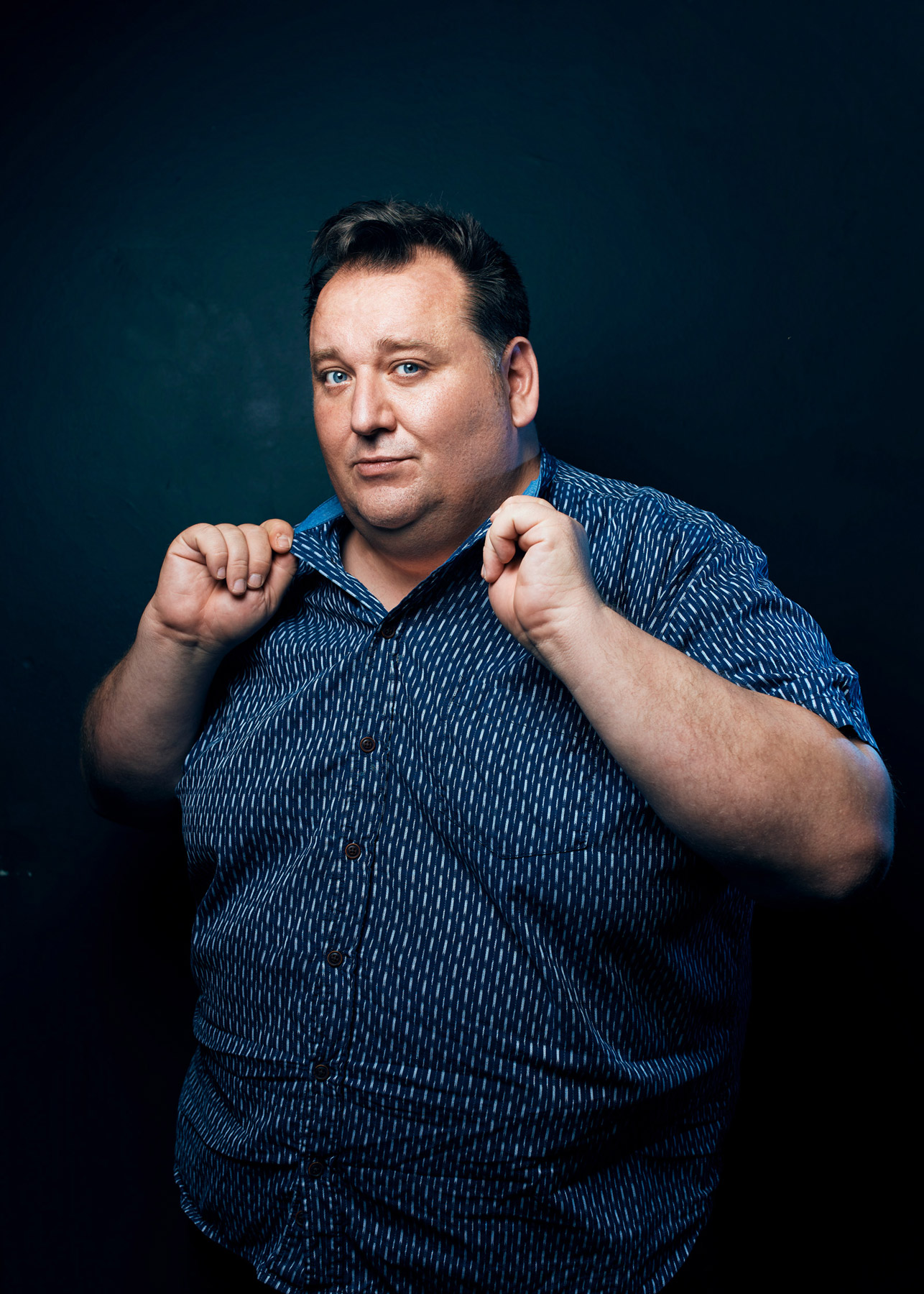
»When I get married to a man in Denmark and I move to Poland, am I suddenly not married to him anymore?«
MYP Magazine:
How do you as an expat assess the current socio-political situation for queer people in Europe, especially with regard to gay rights? Would you say that, especially in Eastern Europe, there’s a catastrophe brewing that most people don’t notice?
Daniel:
First of all, I don’t think of myself as an expat. That’s a really outdated term. I would say I’m an immigrant, but I’m European as well. I just belong here, you know! Everyone belongs where they are, that’s what I think.
Anyway, I don’t understand why there aren’t any minimum requirements of human rights to be in the European Union. That doesn’t make sense to me. It’s weird that marriage equality is in some countries and not in others. When I get married to a man in Denmark and I move to Poland, am I suddenly not married to him anymore? Do we suddenly not have the same rights that we’d normally have? It’s very bizarre to me. I think that there are definitely inconsistencies in terms of the idea of Europe and the actual practicality of it. And if we’re talking specifically about gay rights: One of the things that right-wing and sort of fascist governments do right off the bat is to take issues that aren’t really issues—like gay rights or trans rights—and use them to divide people.
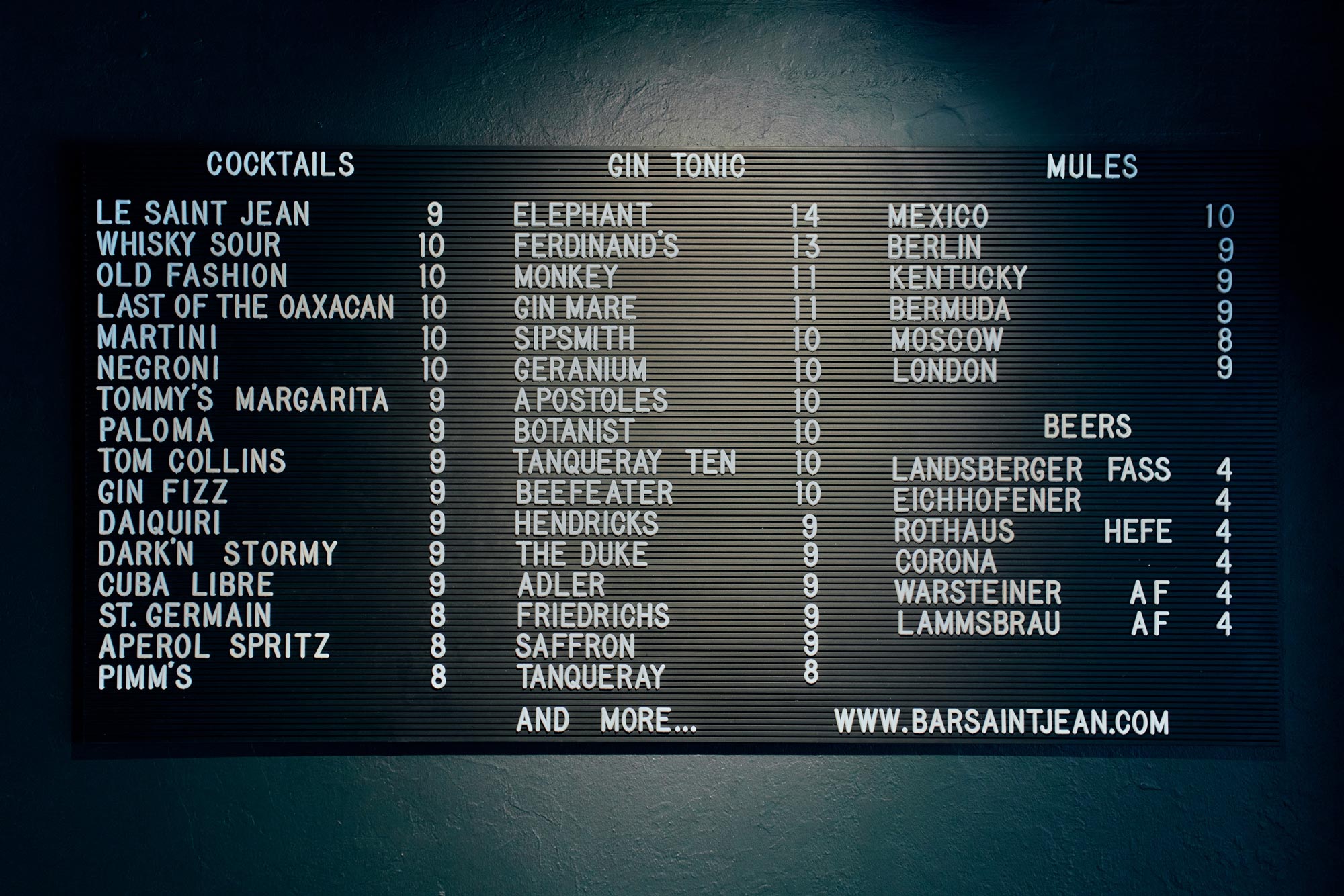
»I definitely had more homophobia and bad experiences with certain people in my family than with my community.«
MYP Magazine:
In the third episode of your podcast, you’re talking about your high school years, being educated in an environment that was completely heteronormative. What kind of place was the Vancouver of the 1990s?
Daniel:
Well, my community was very liberal, it was sort of a suburban working-class community. I went to really good public schools, had very great teachers, and the level of education was really high. And talking about the society in general, I would say that Canadians are characterized by a high degree of politeness and manners, they are very soft and sensitive. It’s really drilled into you to always say, “I beg your pardon,” “Thank you,” or “I apologize” instead of “What?!”. I remember that anti-bullying was a huge thing growing up in the 90s, especially in elementary school, at least in my community. My teacher for first and second grade was the foremost expert on bullying in the whole country. So, I guess my community protected me from some potential homophobia or bullying that I might have gotten as a child. I definitely had more homophobia and bad experiences with certain people in my family than with my community.
But to be honest, my personal story isn’t necessarily representative for the rest of Canada. There are lots of places in that country where my experience wouldn’t have been the same—where it still wouldn’t be the same.
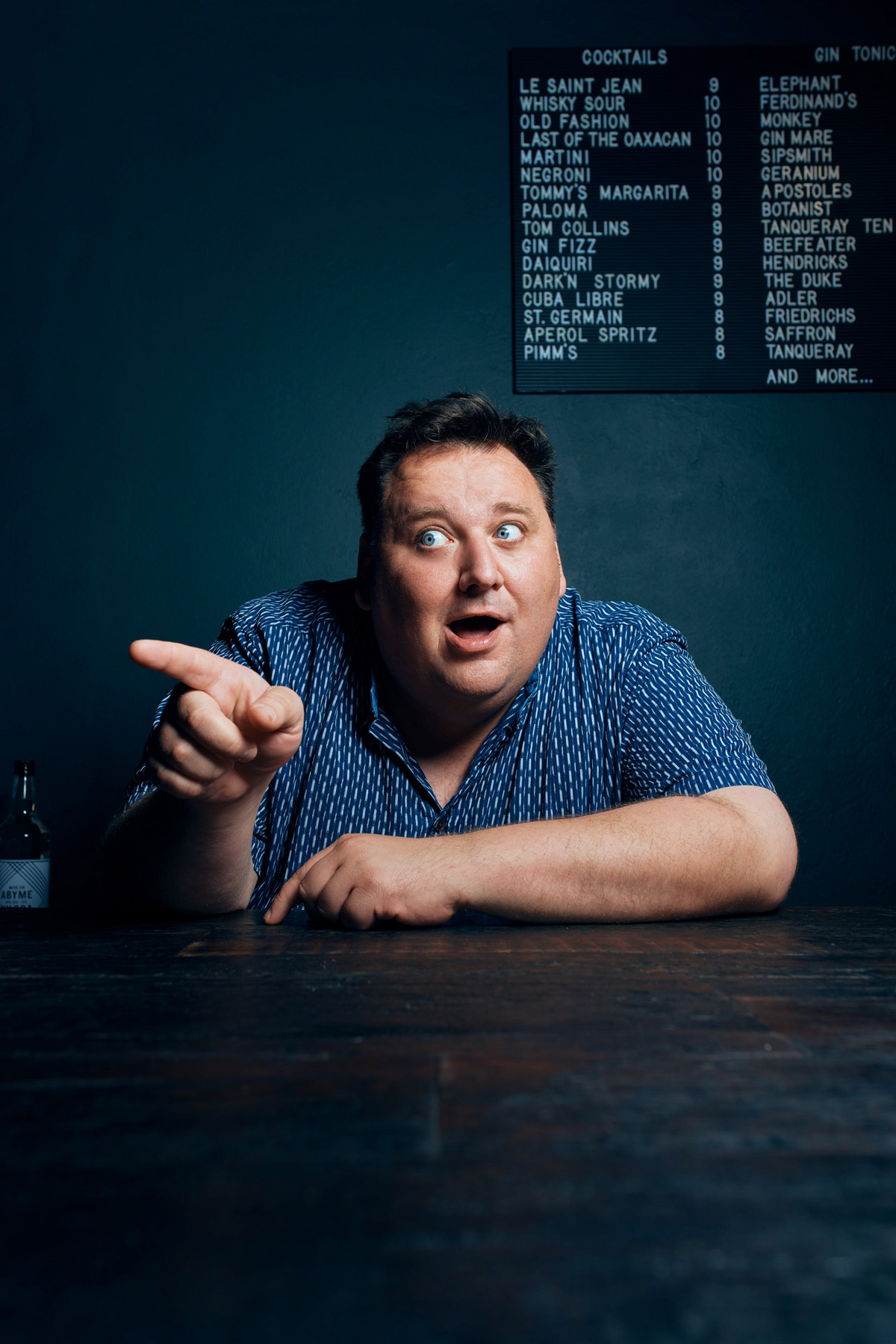
»I was never a kid who was like the goofy class clown.«
MYP Magazine:
What came first in your life? The awareness of being gay or being funny?
Daniel:
I don’t know. I think those are things that I always knew and always was on some level. I do distinctly remember a moment when I realized that I was gay or thought about sexuality for the first time. I was probably three and I was playing with Barbies (laughs loudly).
And in terms of being funny, I was never a kid who was like the goofy class clown. My humor is a little more reflective. I remember that when I was seven, I was writing a story and the teacher just loved it so much. She made me read it to one of the other teachers and recorded me on video because she thought it was so funny and creative. I guess I was always a good storyteller with a talent for processing interesting ways of seeing the world, even when I was a little boy.
MYP Magazine:
Was there a specific point in time when you decided to be a comedian?
Daniel:
No. I always knew that I wanted to be a performer. From the time I was a child, that was the only thing I really ever wanted to do in my life.

»I left Canada because I don’t like the lack of culture.«
MYP Magazine:
Do you remember the first time ever you were standing on a stage, performing in front of an audience?
Daniel:
If you’re talking about ever, it would be like in children’s plays at school, but then I obviously did theater in high school, and a couple of years later I majored in theater at the university; but when I first started doing stand-up comedy, I was about 23 and performed at a gay bar in Vancouver. It was a sleezy, colorful, glittery place called Numbers, and they’d let me do my show there. I had like a one-hour slot before they started their karaoke night (laughs).
MYP Magazine:
Why did you leave Canada at some point?
Daniel:
I left the country because I don’t like the lack of culture. I think that in Europe—because there are so many different countries that are so densely populated—there’s such a long history and a really great appreciation for the arts and performances. I feel a lot more at home here. Besides that, I like to travel a lot, which can mean, for example, going to Portugal for a week or so, whereas in Canada, especially when you’re living in the Vancouver area, there’s really nothing to do except enjoying nature. And I don’t really enjoy nature. I don’t like camping, I don’t like kayaking, I don’t like hiking. I just like to hang out with beautiful men in bars and talk about life.
MYP Magazine:
But don’t you have a handsome prime minister in Canada?
Daniel:
Oh, I don’t like Justin Trudeau. He’s cute, but he’s very bad for the environment.
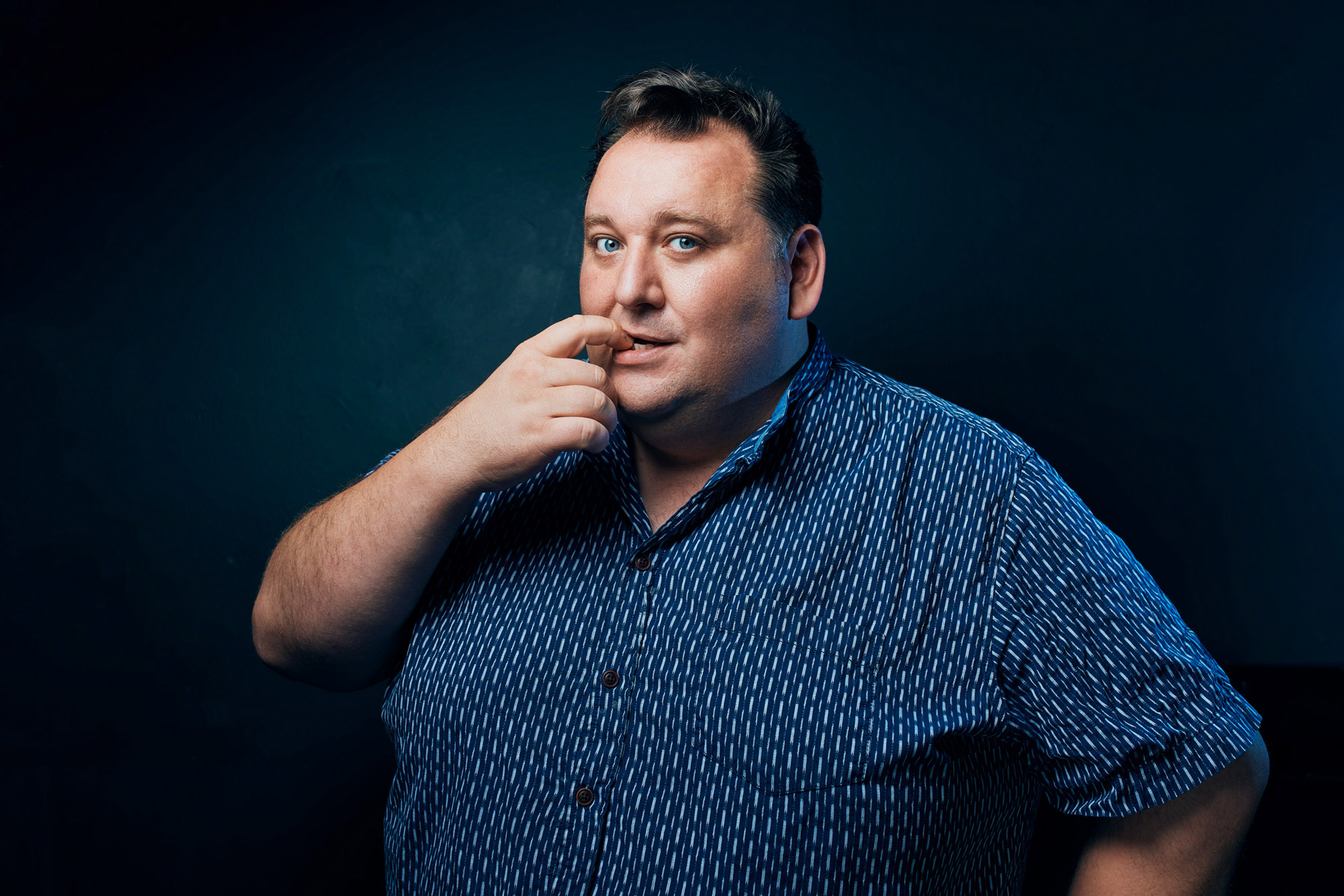
»In Berlin, it’s very hard to find a guy that wants to have a relationship with me.«
MYP Magazine:
Before you moved to Berlin, you lived in Amsterdam and Oslo. Is Berlin just another stopover in your life? Or could you imagine settling here?
Daniel:
No, I don’t really think that I could permanently settle in one place ever. I like to be open to where life and my career might take me. I also don’t think that I should stay in Berlin that much longer, at least on a full-time basis because it’s very hard to find a guy that wants to have a relationship with me. I guess I probably would get a boyfriend easier in other cities.
MYP Magazine:
Dating in Berlin is hard…
Daniel (laughs):
Well, does it even happen? Honestly, it’s definitely very difficult to date here. A lot of people come to Berlin because they don’t want to have a typical, normal life with a relationship. It’s a party city, people are wild.

»I like creating content where you can get the idea of what I’m saying without it being spelled out to you.«
MYP Magazine:
In 2014 you released a video on YouTube, titled “If Gay Guys Said the Stuff Straight People Say…” By now, this video has hit more than 2 million views. What meaning does this 7-year-old clip have for your career?
Daniel:
I think it was a nice thing to have under my belt because it was a way of exposing microaggressions and straight privilege in a way that was very funny. I like creating content where you can kind of get the idea of what I’m saying without it being spelled out to you. And so, I’m very proud of that video. It sparked a lot of other clips of the same format. For example, BuzzFeed did “If Black People Said the Stuff White People Say” as well as every other possible version of it.
MYP Magazine:
What were the most remarkable reactions you got about the video?
Daniel:
I don’t know. I haven’t really had people writing me messages like, “You changed my life!” But I think a lot of people appreciated me doing this (smiles).
»I’m a very observant person.«
MYP Magazine:
On September 11, 2017 you published another video on YouTube, called “It’s Berlin.” This video was the prelude to a successful series in which you focus on the peculiarities of the German capital and its residents. To date, over 100 clips have been created in this way. How did the idea come about?
Daniel:
I actually started “It’s Berlin” when I was living in Amsterdam. I got the idea after I had visited Berlin, I just thought of this character and made a video out of it. People really liked it, and so I started to do a couple more. It felt like a good project and I thought I could turn it into a TV show one day, that’s why I eventually moved to Berlin.
MYP Magazine:
How do you develop the content? Do you just sit in a café and watch the Berliners?
Daniel:
It just happens organically, I guess. I’m a very observant person, I listen very well, and have a really good memory. So, when I have conversations, I always remember them, including all the details that people say. And if there’s something ridiculous or funny in it, I catalogue it into my head and use it some other day for a video. That’s it.
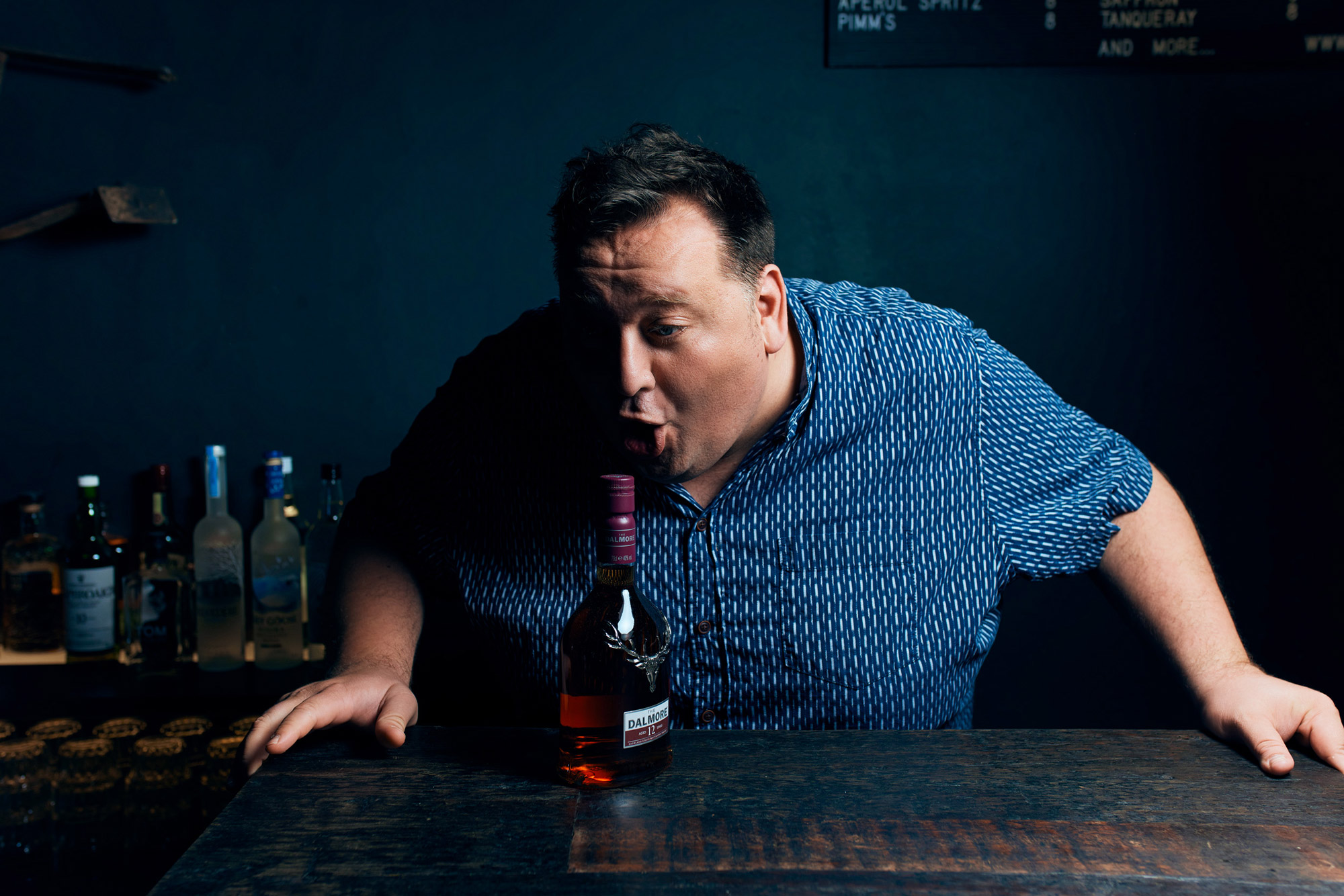
»I don’t like the German snitching culture at all.«
MYP Magazine:
By the way, I was wondering what bad thing might have happened to you here in Germany that you felt the need to create something like the characters Hilda and Helga, an old, grumpy, and xenophobic lesbian Stasi couple…
Daniel:
Well, I didn’t find them on the streets, they just grew in my imagination. I think these characters come from a general gleefulness and smugness to Germans I observed, especially to older Germans during the lockdown; this snitching culture of how many people are allowed to be in a house, you know? It’s always like “These are the rules, you must follow the rules!” I mean, something I learned here first is that Germans love to complain about noise, and—in some cases—I guess that goes back to any Stasi heritages.
And what’s even more confusing: When Germans see that people who didn’t follow the rules have to deal with the consequences, there is this certain gleefulness they feel. I don’t like this snitching culture at all, I hate it. That’s how I got the idea of “Hilda und Helga,” they’re just the embodiments of the trait that some Germans have—and they love to watch it!
»I like to go deeper, into the psychological side of cultures.«
MYP Magazine:
Do you think we should reflect on ourselves more?
Daniel:
I’m not sure if it would help. Some people are just fucked up. I’m 36 now and one thing that I know for sure is that when you’re an idiot, you’re going to be an idiot forever (laughs).
MYP Magazine:
Do you know “Be Deutsch,” a music video that was released by German comedian Jan Böhmermann five years ago, showing a big collection of German clichés?
Daniel:
Yes, but this kind of cliché is not what I work with. I like to go deeper, into the psychological side of cultures. That’s more my thing, not the surfaces and stereotypes. I like to dig deep (smiles).
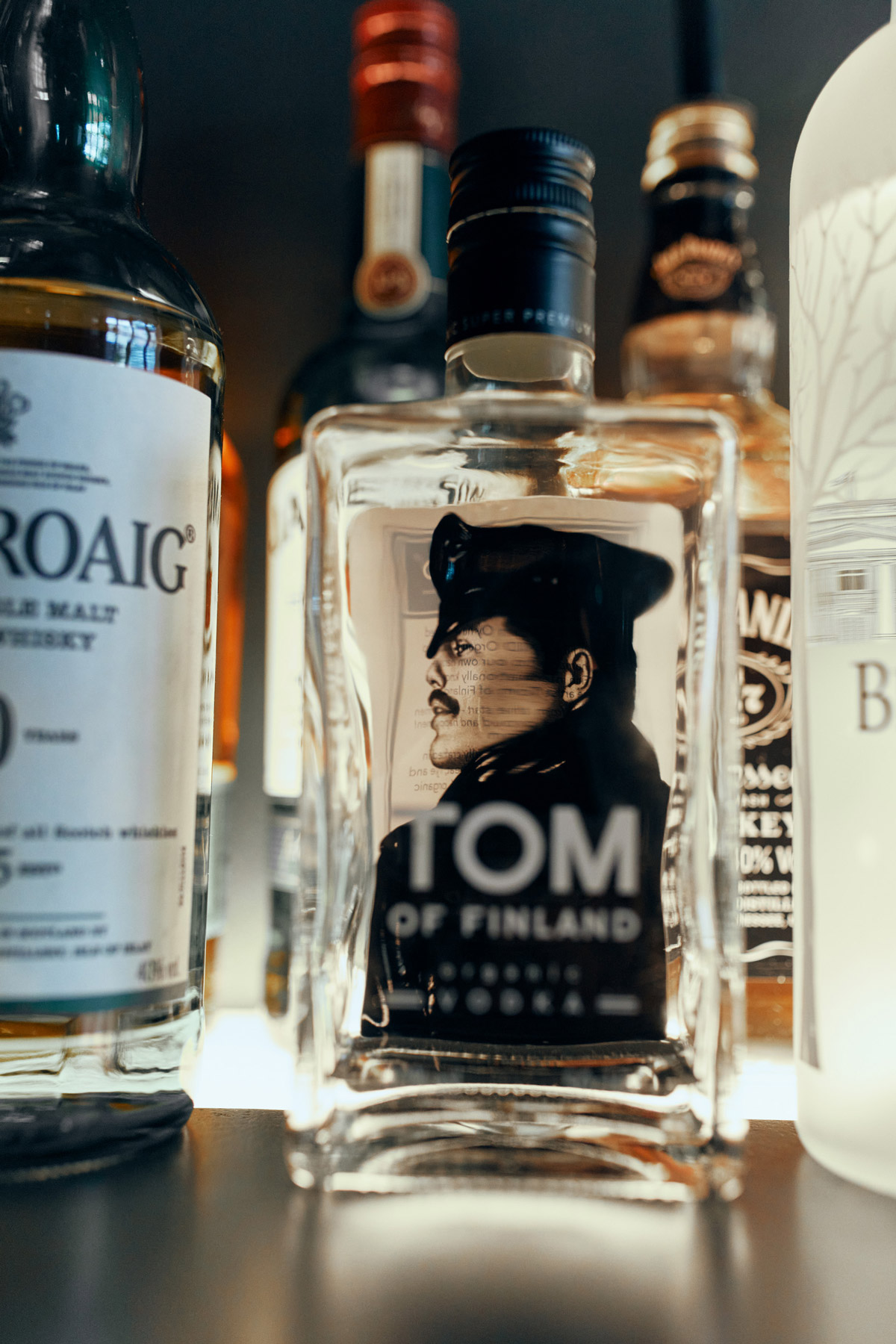
»I wouldn’t do comedy if I didn’t enjoy the attention.«
MYP Magazine:
Your videos are very successful and reach a larger and larger audience, and with it the number of your fans grows steadily. How do people react to you when they meet you in private? Do they expect you to be the funny gay comedian there as well?
Daniel:
I don’t know. I think it’s more challenging for me when the people I meet are expecting that I know them. Or when they are thinking that they have some sort of ownership over my time although they’re just a stranger. Don’t get me wrong: It’s really nice to have so many fans and I appreciate that. But when I’m in a private situation, having a coffee with a friend, for example, and some stranger suddenly interjects through my day, wanting a full conversation with me immediately, or maybe screaming like “Oh my God, it’s you!” when I’m just living my day, that’s something I still haven’t gotten used to. I just don’t see myself as a celebrity.
MYP Magazine:
But are you still able to enjoy that kind of fame from time to time?
Daniel:
Absolutely! I wouldn’t do comedy if I didn’t enjoy the attention. But for me, this is more about making people laugh and expressing my thoughts. It’s not so much about gaining recognition and popularity.
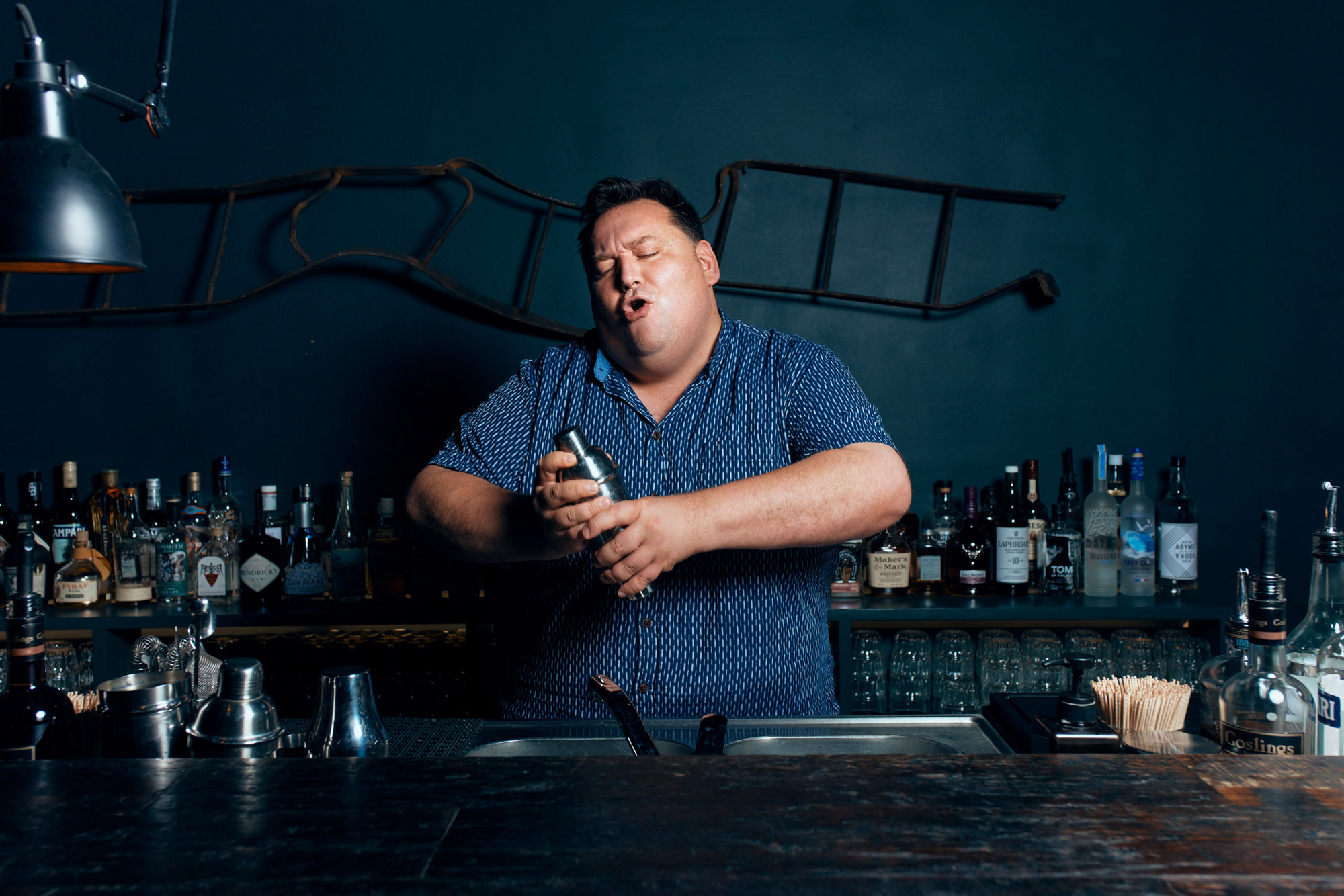
»I wanted to have something where my fans can connect with me directly.«
MYP Magazine:
Last year you created a Patreon account which means that there’s an additional platform now where you publish your content. What was the reason for that decision? Weren’t you happy with the growing success of your other social media channels?
Daniel:
Patreon is still very new to Europe, so I thought it could be a nice investment to be one of the first few people trying to do it in Berlin. But the main reason was that the amount of people who put comments on my posts on YouTube and Instagram is so high now that I just can’t read all of them. I would love to, but it’s just too much and absolutely overwhelming. That’s why I wanted to have something where my fans can connect with me directly and I would definitely reply to them after I read what they have to say. I wanted to build a little community because, especially during the lockdown, I wasn’t able to perform live obviously and I wanted to find a way to make money for my content. I was doing PayPal donations for a while, but I thought Patreon would be better because it keeps your fans engaged and going on a journey with you.
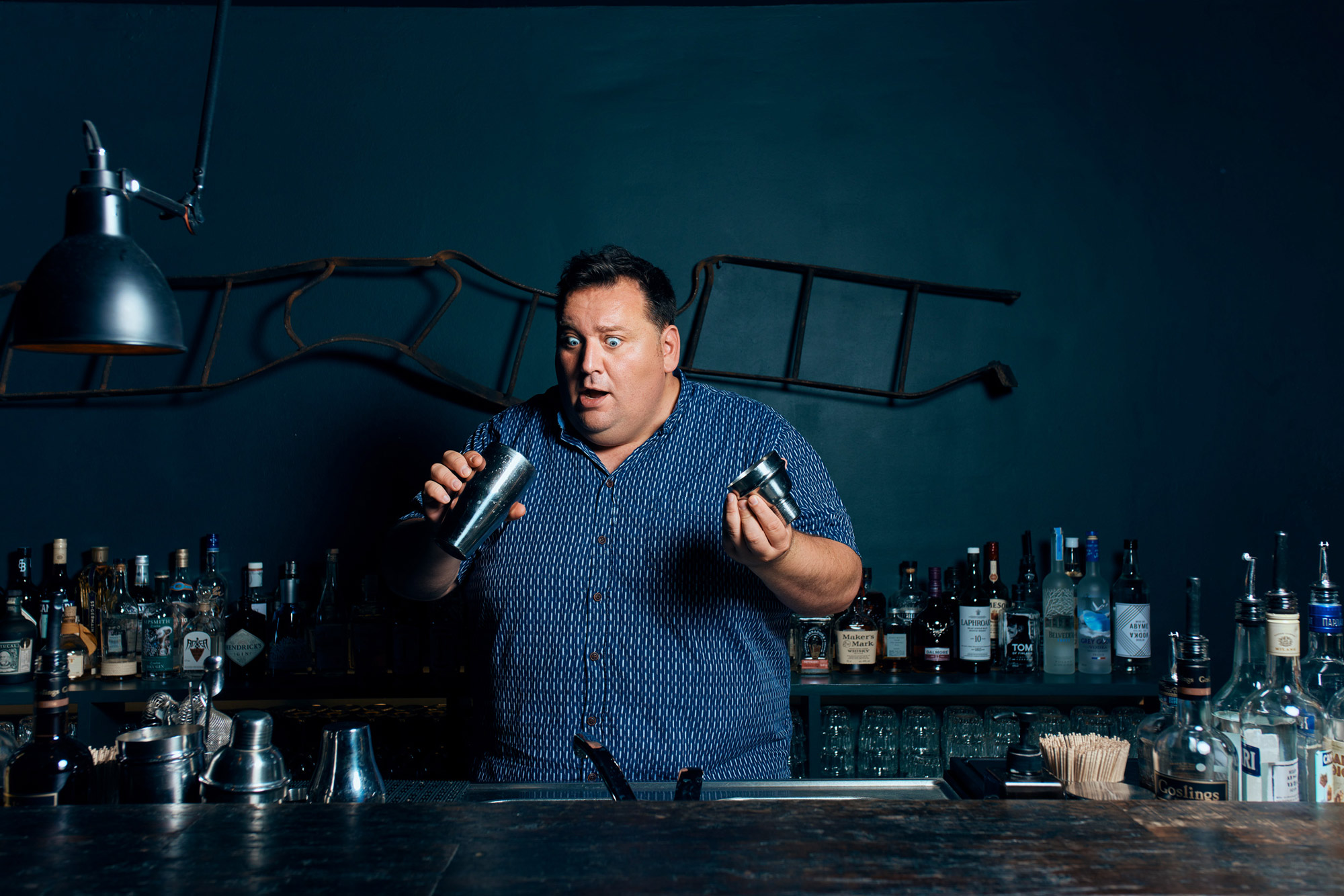
»If you want to have unrealistic expectations for yourself, that’s fine. But when you put that out on other people, that’s a problem.«
MYP Magazine:
In my opinion, one of the secrets of your success is that you’re addressing topics that a lot of people can fully relate to, for example when you’re making fun of the extreme body fetish that we’re all exposed to, especially in the gay scene. Do you think that the community has to heal and change itself first before it can heal and change others?
Daniel:
Hmm, I think that things already get better with that though, at least in some ways. Even if it’s just the surface, even if people are just pretending to be body positive (laughs out loud). The main thing is not to shame or judge other people. I mean, if you want to have unrealistic expectations for yourself, that’s fine. But when you put that out on other people, that’s a problem.
On the other hand, things are getting worse in some ways. I’m just thinking of Instagram. The number of photos that people take of themselves when they have abs and want to gain attention with that is very weird to me. I’ve never been someone who got attention or validation for the way I look. It was always because of my sense of humor, my mind, or my creativity. So, if that’s how they’re getting love, it’s ok. At least they’re feeling good about themselves.
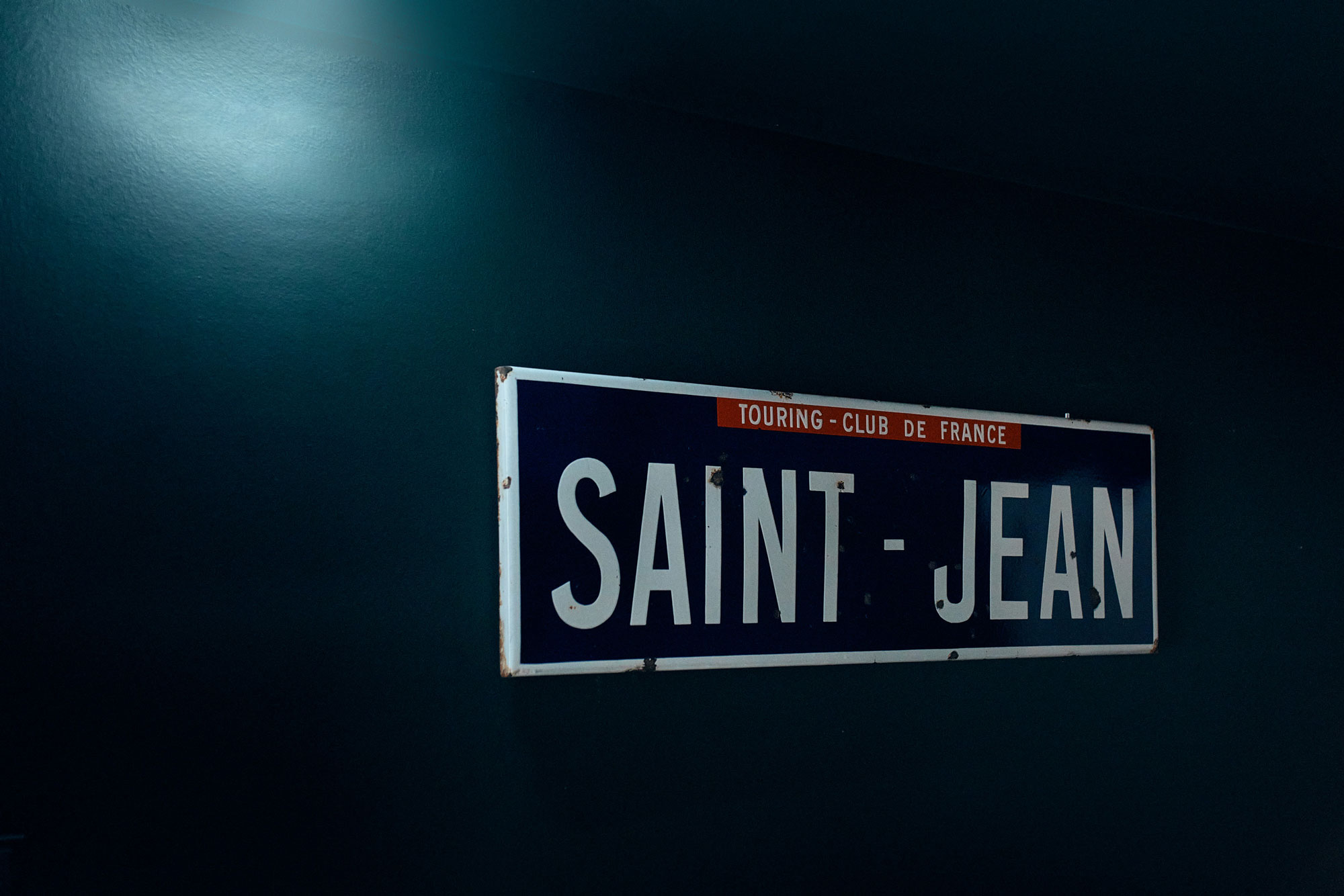
»We all demand more body positivity, and for me that means respecting other people.«
MYP Magazine:
As a part of the community, you know that there are still people that evaluate a person based on their visual appearance, sexual performance, or penis size…
Daniel:
Yes, but I think they only do that when it comes to their own sex life and their personal preferences. You would be a real asshole if you didn’t want to be friends with someone because of something like that. I definitely don’t know anyone like that.
We all demand more body positivity, and for me that means respecting other people. But at the same time, you can’t force people to be attracted to someone who they aren’t attracted to. Maybe that will change with more people showing their bodies and being less ashamed of the way they look.
MYP Magazine:
Would you consider yourself a role model?
Daniel:
Sure! Why not? (laughs out loud)
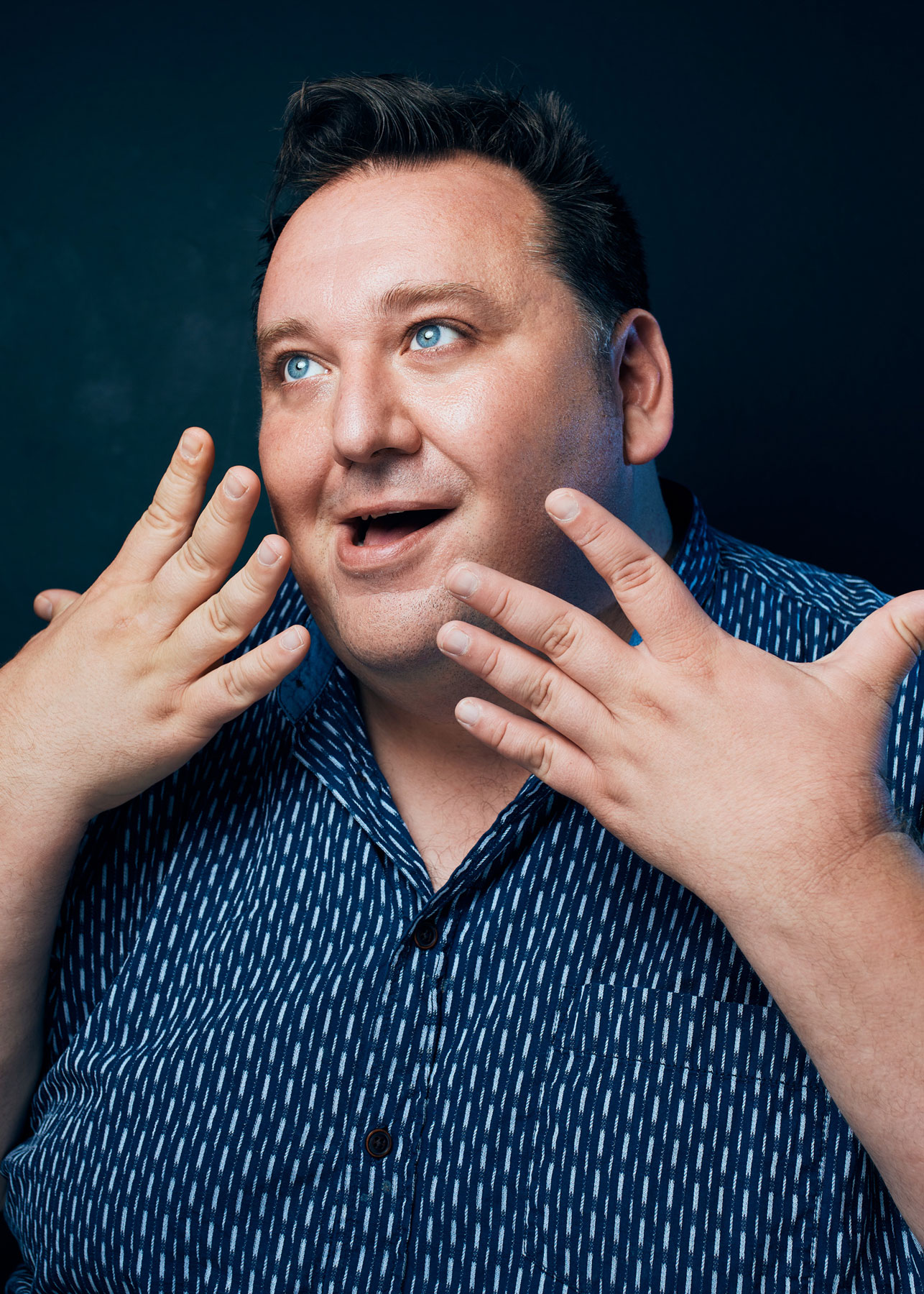
»I don’t think that comedy is a safe space.«
MYP Magazine:
We are in one place here that is very special. Since the very first day of its opening, the Bar Saint Jean has always been a safe space for people in Berlin, especially when they’re part of the queer community. Here you could always be who, what and how you wanted to be. Would you say that you—with all your content—have also created some kind of safe space for the community, just a virtual one?
Daniel:
No, I don’t think that comedy is a safe space. It’s a dangerous zone! (smiles) I can’t control how other people perceive me and what they might get offended by. But I definitely have good intentions. Even if I’m snarky or bitchy, that’s just a style of my comedy. I think that people don’t need to be constantly offended by everything. I definitely felt that towards the end of the second lockdown, people were very negative and nitpicky then. But apart from that, I don’t really believe in safe spaces, it’s a lame concept. Life is hard. You’re going to encounter difficult people in the world, deal with it! (laughs) Sorry, I think that was a little harsh, wasn’t it?
#danielryanspaulding #itsberlin #barsaintjean #mypmagazine
Many thanks to Johann and his Bar Saint Jean:
barsaintjean.com
instagram.com/barsaintjean
Opening Hours:
Mon: Closed
Tue: 7:00 pm – 2:00 am
Wed: 7:00 pm – 2:00 am
Thu: 7:00 pm – 2:00 am
Fri: 7:00 pm – 3:00 am
Sat: 7:00 pm – 3:00 am
Sun: 7:00 pm – 2:00 am
More about Daniel-Ryan Spaulding:
danielryanspaulding.com
instagram.com/danielryanspaulding
patreon.com/danielryanspaulding
Photography: Maximilian König
Interview & text: Jonas Meyer
Editing: Benjamin Overton
Doguhan Kabadayi, Mohammad Eliraqui & Derya Dilber
Interview — Doguhan Kabadayi, Mohammad Eliraqui & Derya Dilber
Ein nasser Hund
Der Kinofilm »Ein nasser Hund« erzählt die Geschichte des 16-jährigen Soheil, der mit seiner Familie in den Berliner Wedding zieht und sich dort mit muslimischen Teenagern anfreundet. Was er dabei verschweigt: Er selbst ist kein Muslim, sondern Jude. Ein Interview mit den drei Hauptdarstellenden Doguhan Kabadayi, Mohammad Eliraqui und Derya Dilber über Freundschaft, Judenfeindlichkeit und die ewige Frage, wann man endlich deutsch genug ist, um keinen Rassismus mehr zu erleben.
8. September 2021 — Interview & Text: Jonas Meyer, Fotografie: Manuel Puhl
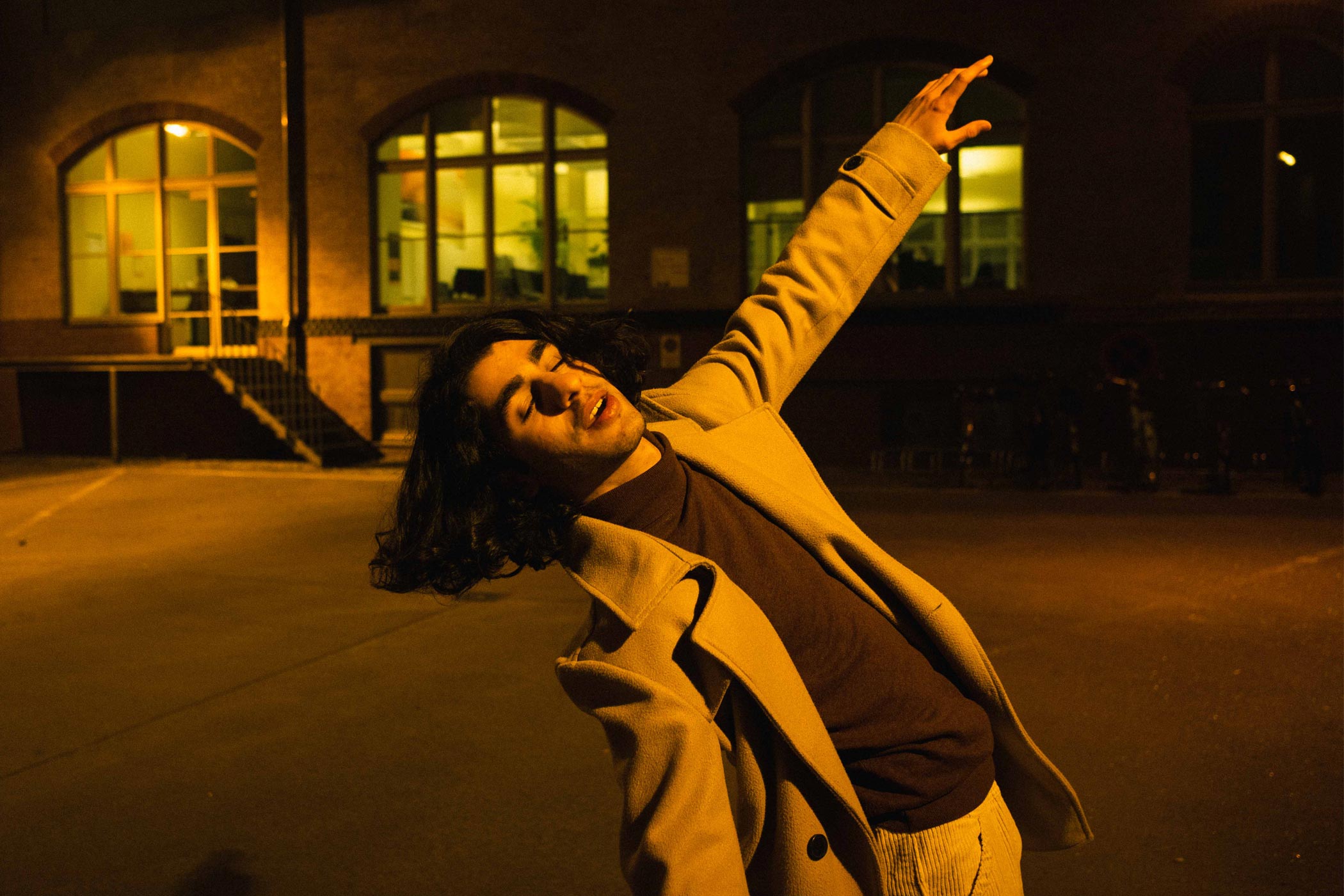
„Ein nasser Hund ist besser als ein trockener Jude“ – als Arye Sharuz Shalicar im Jahr 2010 seine aufrüttelnde Autobiografie veröffentlichte, zitierte er mit dem Titel nicht ohne Grund ein antisemitisches Sprichwort aus dem Iran. Arye, der selbst Jude ist und heute in Israel lebt, verbrachte seine Jugend unter Muslimen im Berliner Stadtteil Wedding. Dort erlebte er von Freundschaft bis Antisemitismus, von verliebt sein bis enttäuscht werden, von Zusammenhalt bis Straßengewalt so ziemlich alles, was einem jüdischen Jugendlichen in einem bunten Berliner Kiez widerfahren kann.
Und dass es für ihn in dieser Gemengelage fast unmöglich war, einen festen Platz in der Gesellschaft zu finden, beschreibt der Autor so: „Für die Deutschen war ich ein Kanake, für die Moslems ein Jude, für die Juden ein krimineller Jugendlicher aus dem Wedding.“
Was für eine Geschichte – dachte sich auch Regisseur Damir Lukačević. Der stellte sich Arye im Jahr 2010 nach einer Lesung vor und erklärte, dass er die Geschichte gerne verfilmen würde. „Viel Glück!“, antworte dieser und stimmte zu. Im Laufe der folgenden Monate und Jahre trafen sich die beiden immer wieder in Berlin sowie in Israel. Arye führte Damir durch seinen Weddinger Kiez, zeigte ihm seine ehemalige Schule und stellte ihn seinen Eltern und besten Freunden vor. Am Ende wurde daraus ein 102-minütiger Spielfilm, der nun ab dem 9. September in den deutschen Kinos zu sehen ist.
„Ein nasser Hund“ erzählt die Geschichte des 16-jährigen Iraners Soheil, gespielt von Doguhan Kabadayi, der mit seinen Eltern von Göttingen nach Berlin-Wedding zieht. Schnell freundet er sich mit einigen türkischen und arabischen Jugendlichen aus der Gang von Husseyn (Mohammad Eliraqui) an und verliebt sich in das türkische Mädchen Selma (Derya Dilber) aus der Parallelklasse. Was Soheil seinen Freunden verschweigt: Er ist kein Muslim, sondern Jude. Als er sich outet, stößt er auf Ablehnung, die Situation droht zu eskalieren.
Auf einer spannenden Reise durch die Berliner Nacht haben wir Doguhan, Mohammad und Derya zum Interview und Photoshoot getroffen.
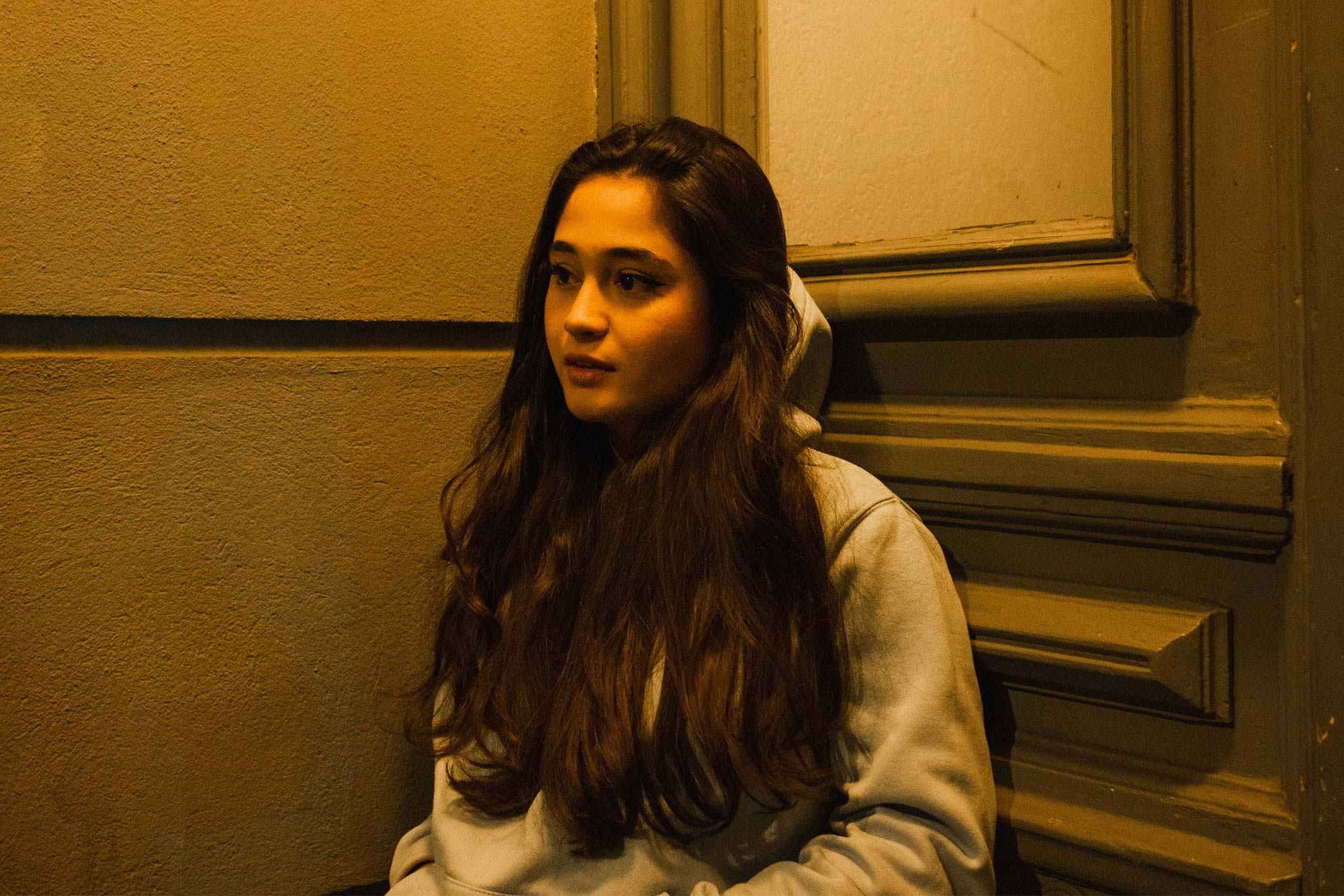
»Der Wedding nimmt in unserem Film eine heimliche Hauptrolle ein.«
MYP Magazine:
Als Soheil an seinem ersten Tag in der neuen Schule Selma begegnet, sagt sie zu ihm: „Willkommen im Wedding – der Ort, an dem Du dich von Deinen irdischen Fesseln befreien kannst!“ Wie blickt Ihr, die Ihr in Charlottenburg, Neukölln und Spandau lebt, auf diesen Stadtteil?
Derya:
Bevor wir angefangen haben, an dem Film zu arbeiten, war ich nie so richtig im Wedding unterwegs – leider. Ich habe mich bis dahin immer nur in meinen Lieblingskiezen in Charlottenburg, Wilmersdorf und Kreuzberg bewegt, aber mit dem Wedding hatte ich mich nie auseinandergesetzt. Erst durch den Film habe ich gemerkt, wie vielseitig der Stadtteil ist: Multikulti ist dort Programm. Daher nimmt der Wedding in unserem Film auch eine heimliche Hauptrolle ein.
Mohammad:
Ich persönlich kannte den Wedding bereits und finde, dass er Neukölln und Kreuzberg sehr ähnlich ist. Und in diesen drei Stadtteilen fühle ich mich ziemlich wohl. Das liegt vor allem daran, dass man dort so viele interessante Menschen aus unterschiedlichsten Kulturen sieht. Es gibt die verschiedensten Restaurants, man kann immer was erleben und auf den Straßen ist es nie wirklich ruhig. Durch den Film habe aber auch ich eine neue Seite am Wedding kennengelernt: Ich wusste vorher nicht, wie viele schöne Ecken es dort gibt.
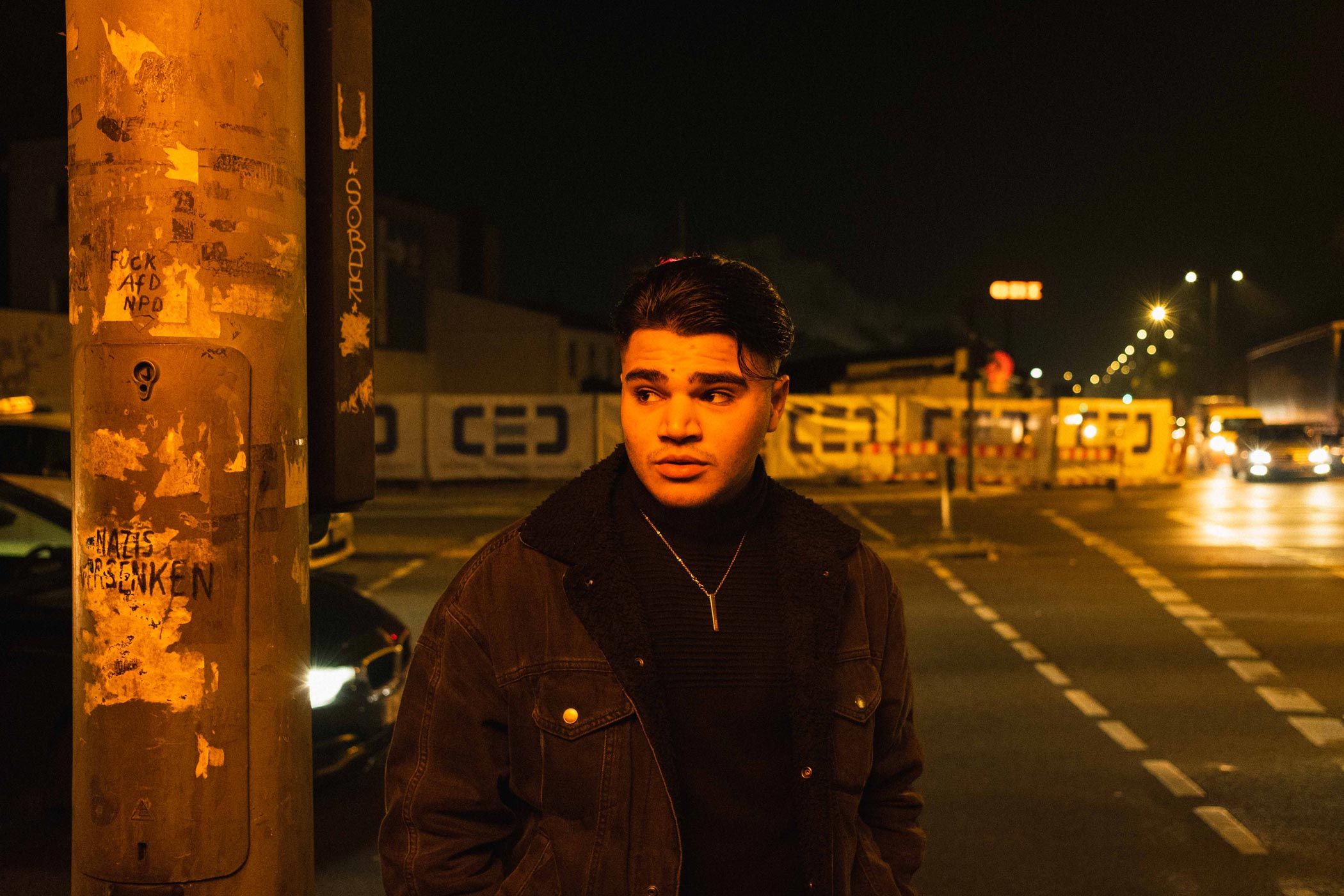
»Wie die meisten Berliner fühle ich mich in meinem Bezirk so wohl, dass ich ihn ungern verlasse.«
MYP Magazine:
Und wie siehst Du den Wedding, Doguhan?
Doguhan (lächelt):
Ich habe eine kleine Ausrede, warum ich bisher nie im Wedding war. Dadurch, dass ich so weit draußen in Spandau wohne, war es für mich immer schon eine größere Reise, ins Zentrum von Berlin zu fahren. Wie die meisten Berliner fühle auch ich mich in meinem Bezirk einfach so wohl, dass ich ihn ungern verlasse – es sei denn, ich muss mal zu einem Casting nach Mitte oder so.
Gefühlt war ich von allen Berliner Bezirken am wenigsten im Wedding. Ich hatte zu diesem Teil der Stadt einfach keinen Bezug. Mit der Arbeit an „Ein nasser Hund“ hat sich das aber um 180 Grad gedreht. Seitdem besteht da eine enge emotionale Verbundenheit. Ich würde sogar noch weiter gehen und sagen, dass ich mich in den Wedding verliebt habe – einfach wegen der besonderen Menschen, die es dort gibt. Seitdem bin ich immer wieder gerne dort.
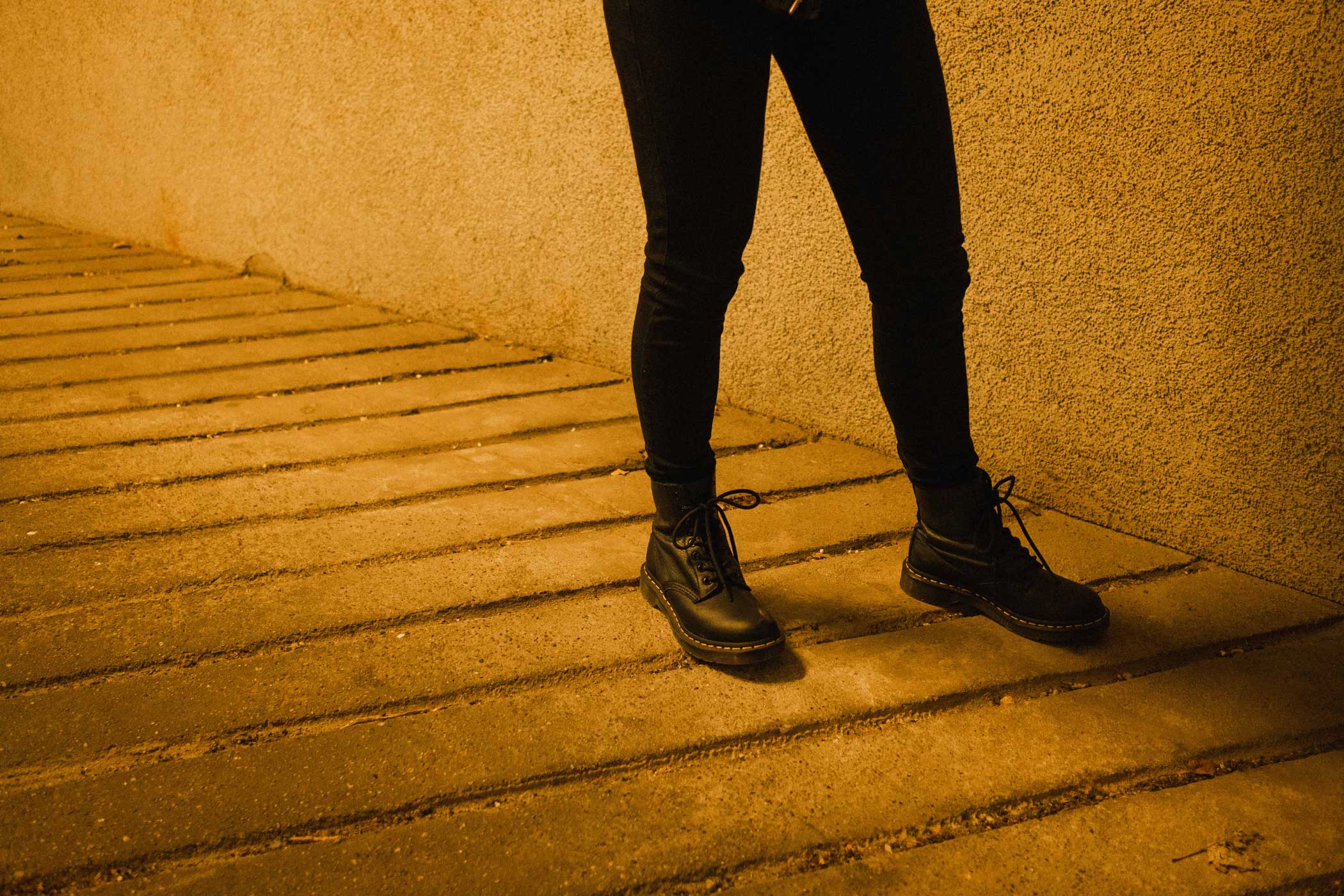
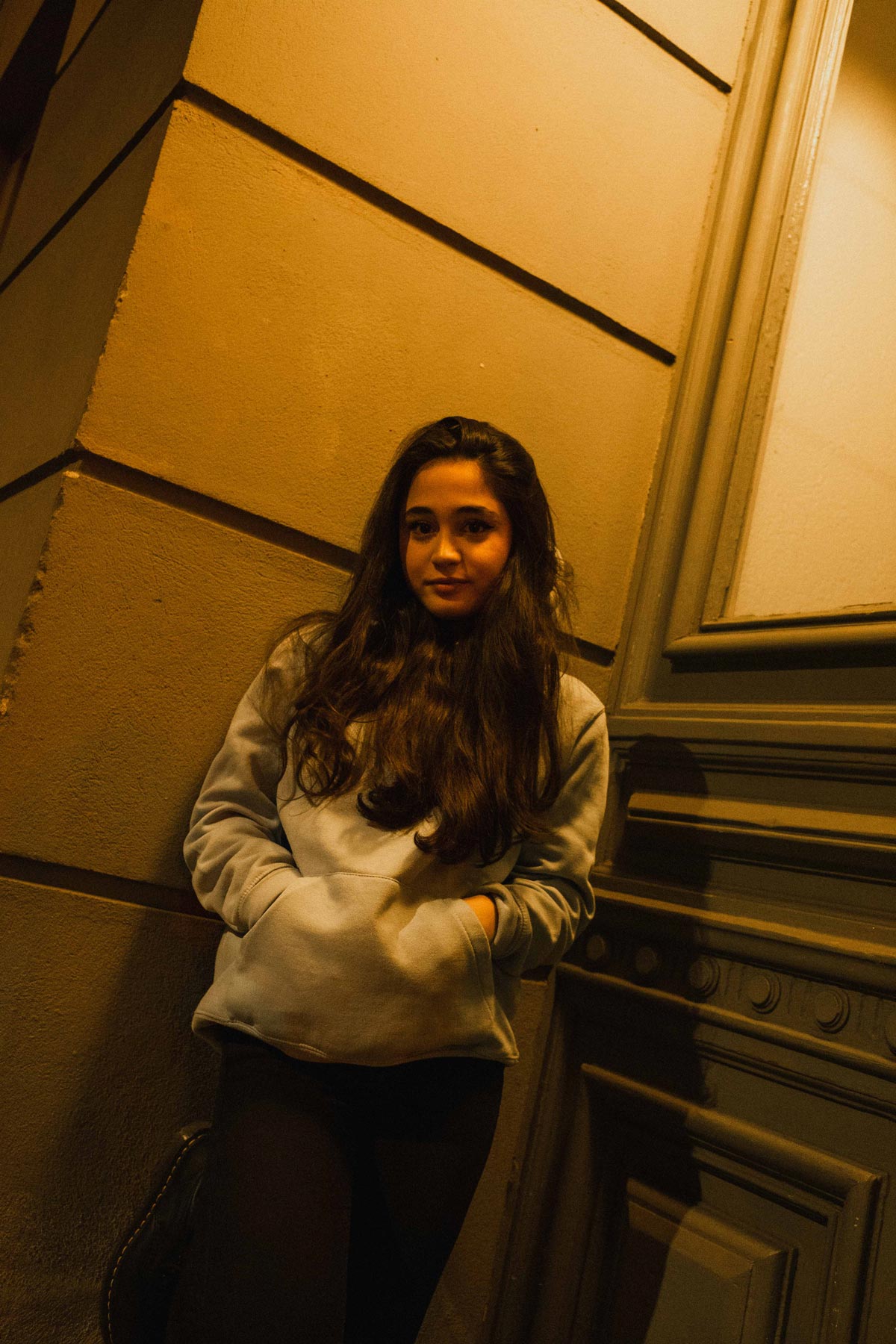
»Judenhass gehört in Selmas Leben mehr oder weniger zum Alltag.«
MYP Magazine:
Der Wedding ist nicht der einzige starke Charakter in „Ein nasser Hund“. Es gibt da auch noch die von Euch gespielten Figuren Soheil, Husseyn und Selma, auf die Ihr euch sehr lange vorbereitet habt. Konntet Ihr in diesen Rollen jeweils Parallelen zu Euren eigenen Persönlichkeiten entdecken?
Mohammad:
Diese Parallelen gibt es auf jeden Fall – aber gleichzeitig gibt es auch deutliche Unterschiede. Im Gegensatz zu meinem Charakter Husseyn hätte ich als Mohammad wahrscheinlich viel mehr darum gekämpft, dass mein bester Freund am Ende in Berlin bleibt, statt das Land zu verlassen. Ich hätte einfach mehr in dieses Ziel investiert und nicht lockergelassen. Allerdings glaube ich, dass Husseyn dazu einfach keine Kraft mehr hat. Erst wird er von seiner eigenen Gang verraten, dann verlässt ihn sein bester Freund – dass man da nicht mehr kämpfen kann, ist nachvollziehbar.
Gleichzeitig mag ich aber an Husseyn, dass er von allen Figuren die größte Entwicklung durchmacht, weil er am Ende beweist, wie menschlich er ist und was für ein großes Herz in ihm steckt. Er kommt an einen Punkt, an dem es ihm egal ist, welcher Religion sein bester Freund angehört. Selmas Satz „Liebe kennt keine Religion“ hat er für sich voll und ganz verinnerlicht, er glaubt an die Liebe und an die Freundschaft.
Derya:
Was meine Rolle angeht, hatte ich immer das Gefühl, dass Selma viele Charakterzüge in sich trägt, die auch ich in mir trage. Dabei lebt sie nicht nur in einem anderen Stadtteil als ich, sondern wächst auch in völlig anderen Verhältnissen auf. Aber es gibt auch einen fundamentalen Unterschied zwischen uns: In meinem Leben gab es nie irgendwelche Berührungen mit Antisemitismus. Während es beispielsweise in meiner Schule völlig normal ist, dass es Jungs gibt, die eine Kippa tragen, gehört Judenhass in Selmas Leben mehr oder weniger zum Alltag. Insofern war es für mich eine gewisse Herausforderung, mich in eine Figur hineinzuversetzen, für die es eine immense Rolle spielt, welcher Religion ein Mensch angehört.
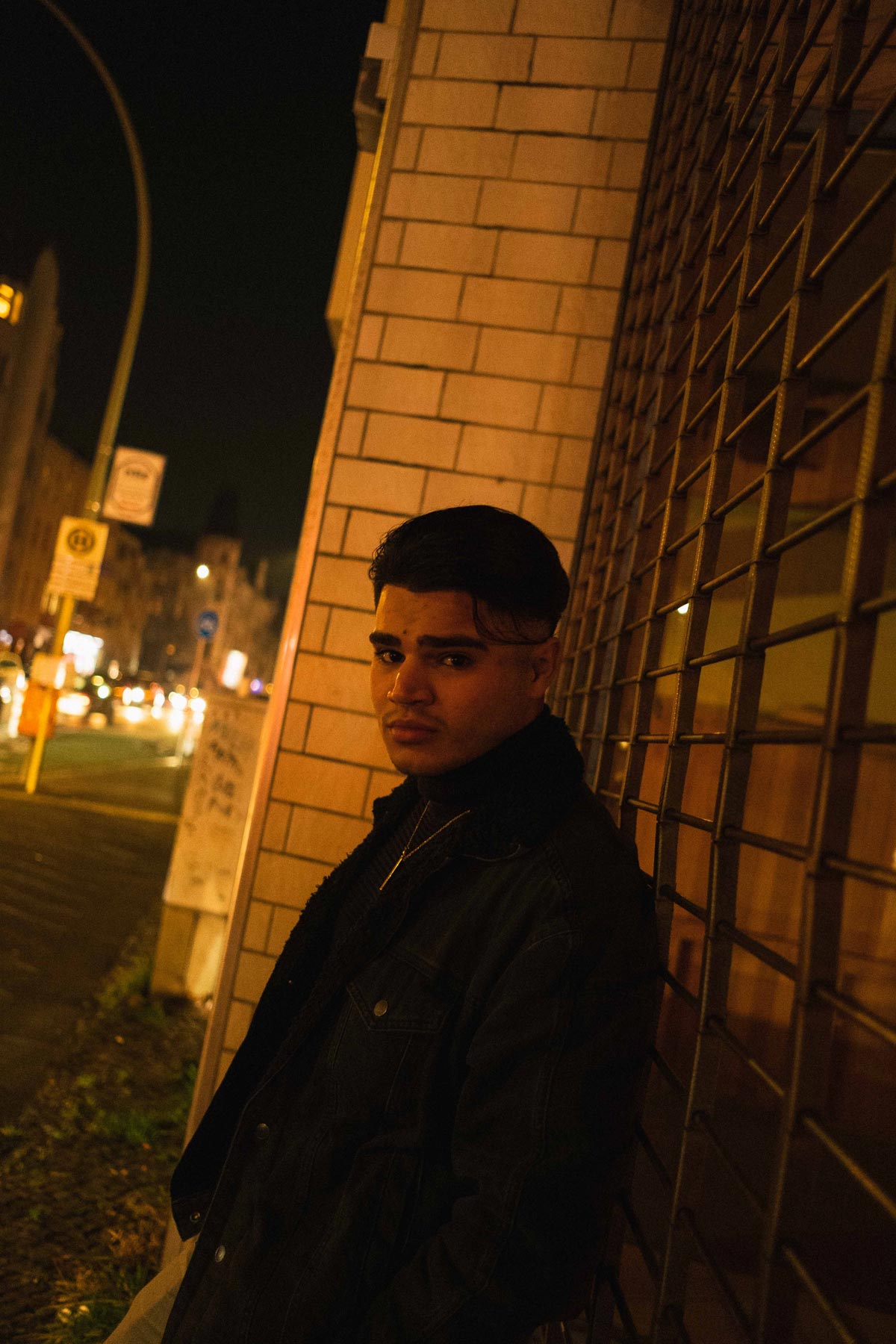
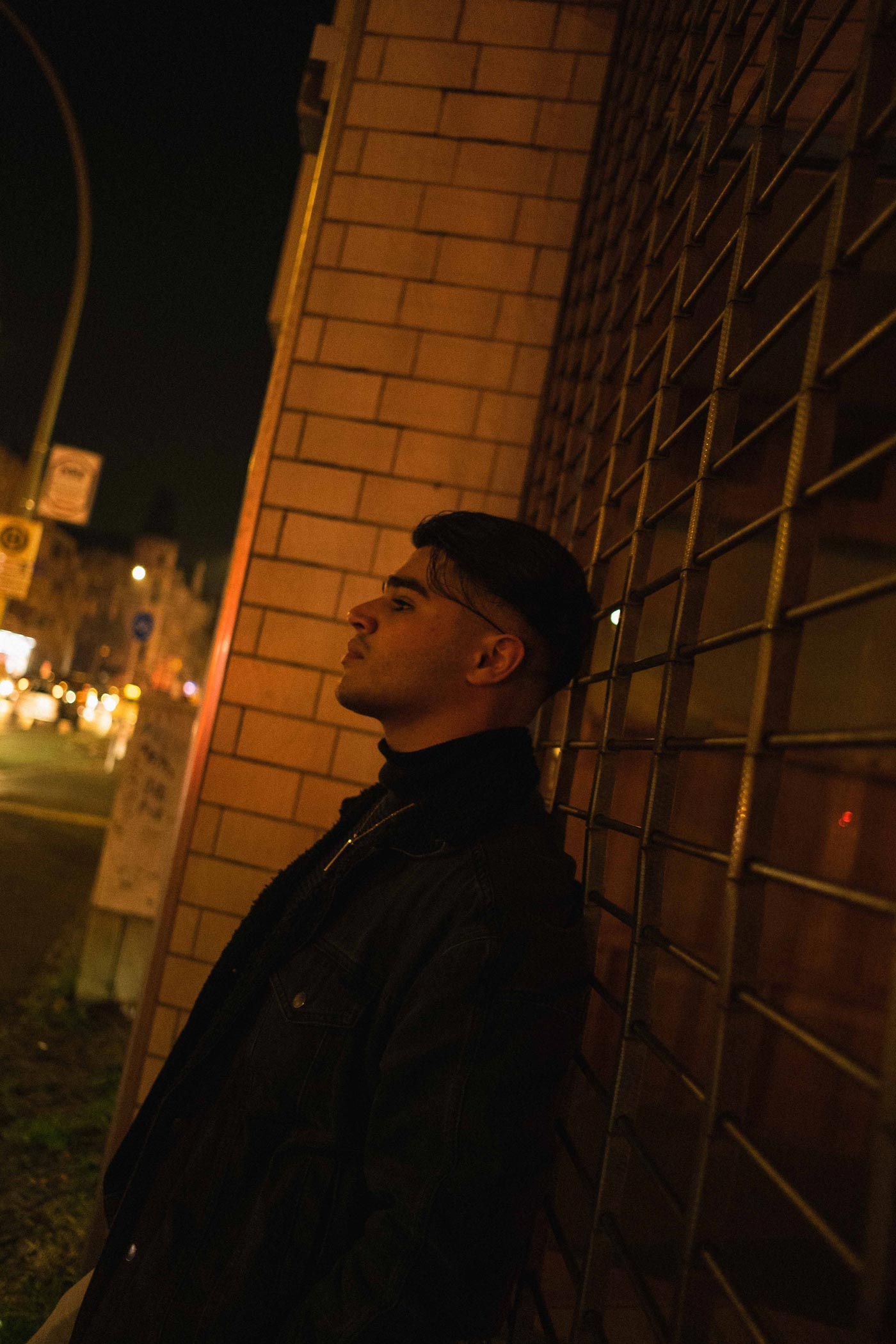
»Irgendwann muss man mal zu sich selbst stehen, um seinen Platz im Leben zu finden.«
MYP Magazine:
Soheil versucht relativ früh im Film, seine wahre Identität zu verstecken und sich an sein Umfeld anzupassen. Dabei verändert sich auch seine anfangs noch feine, gewählte Ausdrucksweise, die er relativ schnell an die rohe Sprache der Straßengang anpasst. Doguhan, in welchem Soheil hast Du dich persönlich eher wiedererkannt? In dem sehr ruhigen Charakter am Anfang des Films oder in dem aufbrausenden, impulsiven Soheil, zu dem er sich entwickelt?
Doguhan:
Wie schön, dass Dir diese Veränderung aufgefallen ist! Ich vermute, dass der Soheil, den man ganz am Anfang des Films erlebt, mir persönlich vielmehr entspricht als der Charakter, zu dem er sich über die Zeit entwickelt. Dennoch war es mein Anspruch, der Figur über den gesamten Film etwas von mir mitzugeben – in der Hoffnung, dass sie mir vielleicht auch etwas von sich mitgibt.
MYP Magazine:
Hat sie das?
Doguhan:
Ja. Soheil hat mir beigebracht, dass man für die Dinge kämpfen muss, die einem wichtig sind. Wir sind in der Zeit, die wir gemeinsam miteinander verbracht haben, beide zu der Erkenntnis gekommen, dass man irgendwann mal zu sich selbst stehen muss, um seinen Platz im Leben zu finden. Daher ist mir Soheil auch so nah.
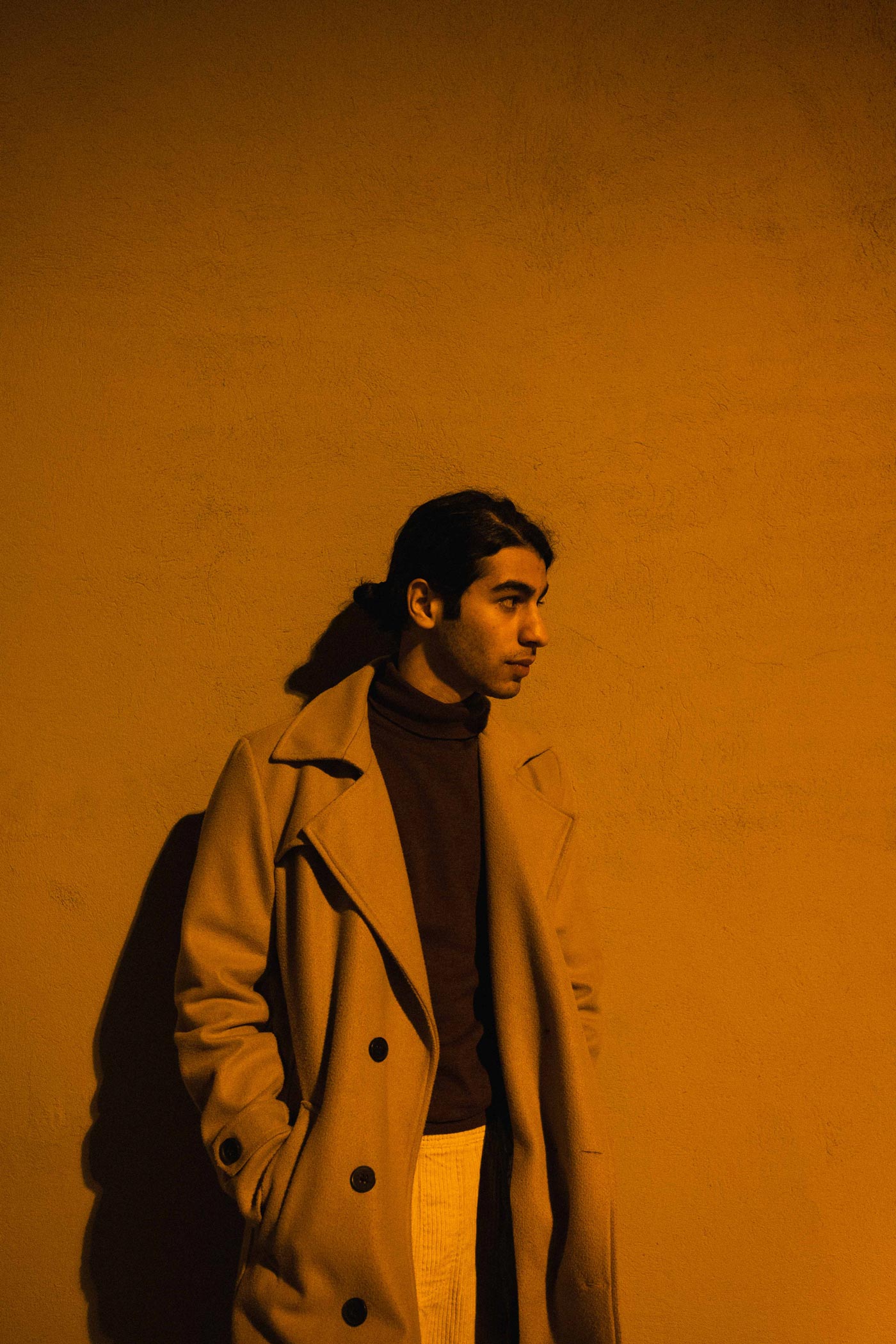
»Es ist grundsätzlich immer das Richtige, sich anderen Menschen so zu präsentieren, wie man wirklich ist.«
MYP Magazine:
Soheils Vater, der von Kida Ramadan gespielt wird, gibt seinem Sohn an einer Stelle eine Lebensweisheit mit und sagt: „Du sollst Dich nicht verleugnen.“ Gab es in Deinem eigenen Leben ähnliche Situationen, in denen Du verstecken wolltest, wer Du bist, wofür Du stehst oder woran Du glaubst? Hast Du jemals vorgegeben, jemand anderes zu sein?
Doguhan:
Nein, daran kann ich mich nicht erinnern. Ich habe gelernt, mich selbst zu lieben und so zu akzeptieren, wie ich bin. Daher bleibt mir gar nichts anderes übrig, als zu mir selbst zu stehen. Davon abgesehen glaube ich, dass es grundsätzlich immer das Richtige ist, sich anderen Menschen so zu präsentieren, wie man wirklich ist. Wenn sie einen dann nicht akzeptieren, ist das deren Problem und liegt nicht an einem selbst.
Aber ich bin ganz ehrlich: Hättest Du mir diese Frage vor drei, vier Jahren gestellt, wäre meine Antwort vielleicht eine andere gewesen. Ich hätte weniger Selbstbewusstsein gehabt und wäre wahrscheinlich auch weniger reflektiert gewesen. Mir persönlich hat vor allem die Schauspielerei dabei geholfen, zu mir selbst zu finden, wacher zu sein, an meine Grenzen zu gehen und an mir selbst zu wachsen. Das habe ich wirklich gebraucht.
Derya:
Das geht mir ganz genauso! Das Gute an der Schauspielerei ist auch, dass man plötzlich mit Themen konfrontiert wird, mit denen man vorher nie zu tun hatte. Zum Beispiel gibt es in „Ein nasser Hund“ eine Szene, in der Selma im Hallenbad von einem Typen belästigt wird. Mir selbst ist so etwas Gott sei Dank noch nie passiert – was aber auch dazu geführt hat, dass ich mir erst einmal Gedanken darüber machen musste, wie ich mich in der realen Welt in so einem Fall verhalten würde.
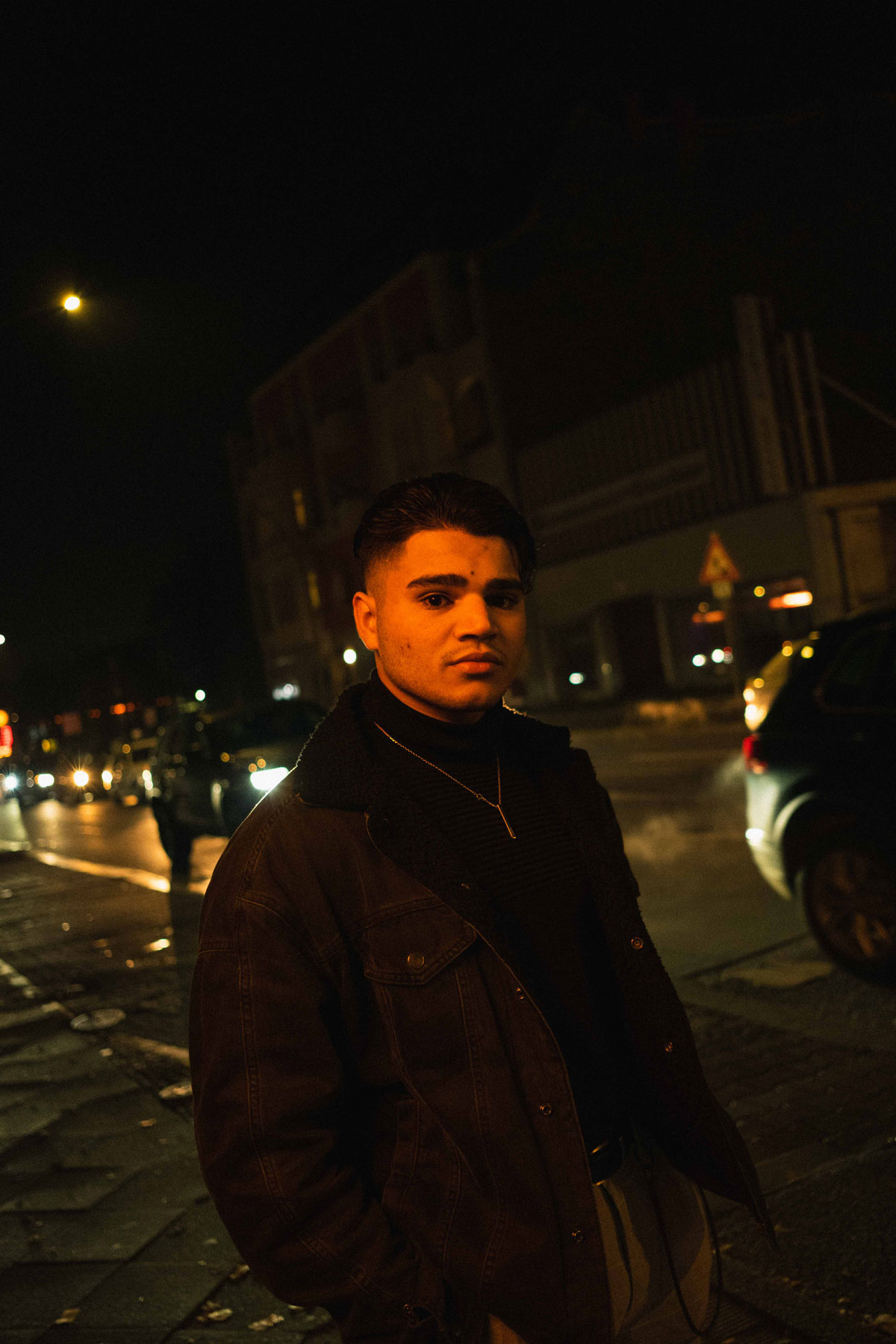
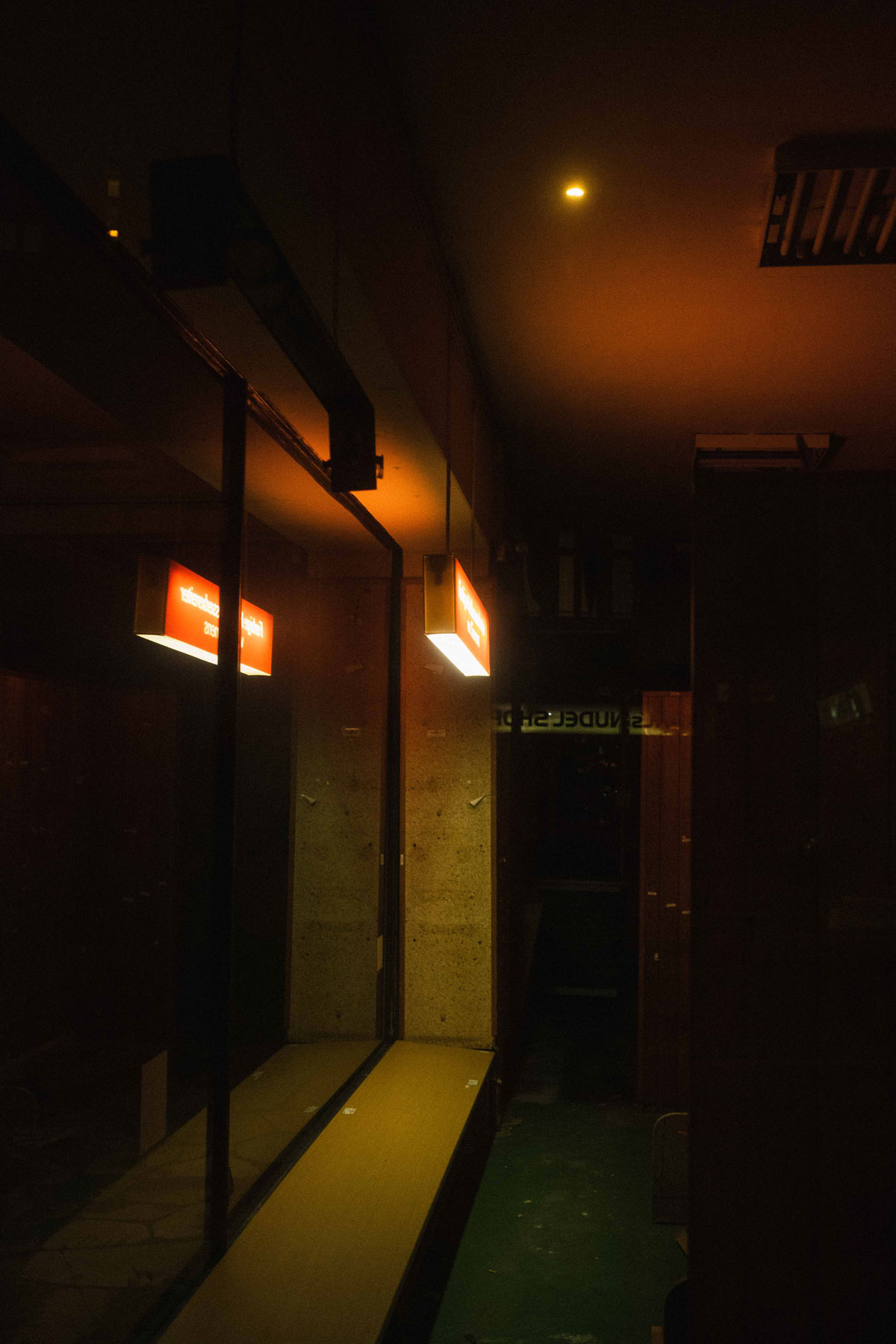
»Ich musste erleben, wie ein Brandanschlag auf unser Haus verübt wurde.«
MYP Magazine:
Euer Film hat mir als Zuschauer an vielen Stellen ziemlich zugesetzt. Zum einen wegen des verrohten und immer wieder gewalttätigen Umgangs der Jugendlichen miteinander, bei denen man den Eindruck hat, auf eine verlorene Generation junger Menschen zu blicken. Zum anderen ist da dieser fast permanent stattfindende Antisemitismus, der auch deshalb so unerträglich ist, weil man als Zuschauer das Gefühl hat, selbst in der Haut von Soheil zu stecken. Das wirkt stellenweise so realistisch, dass man glaubt, eher eine Doku als einen fiktiven Kinofilm zu schauen. Aus meiner persönlichen Bubble heraus gefragt: Wie nah ist das, was Euer Film zeigt, an der Realität von Jugendlichen im Wedding – heute, im Jahr 2021?
Mohammad:
Für mich hat der Film in erster Linie die Message, Frieden unter den Menschen zu schaffen. Er soll zeigen, was man tun muss, um menschlich zu bleiben. Und dass Freundschaft vor allem kommt und man sich sogar dann noch für die Liebe entscheiden kann, wenn man kurz davor ist, sich zu vergiften.
Ich würde daher eher bezweifeln, dass hier die Realität eins zu eins wiedergegeben wird. Ich war schon vor dem Film mit vielen Jugendlichen aus dem Wedding unterwegs und habe selbst das eine oder andere Mal Scheiße gebaut. Aber ich habe dort niemals etwas erlebt, das nur annähernd diesen Grad von Verrohung, Gewalt und Antisemitismus gehabt hätte.
Das heißt aber nicht, dass ich das persönlich noch nicht erlebt hätte – ganz im Gegenteil: Nachdem meine Familie aus dem Libanon geflohen war, war unsere erste Station in Deutschland eine Unterkunft in Neubrandenburg. Dort kam es zum Beispiel zu dem Vorfall, dass unser Nachbar, ein Neonazi, seinen Hund auf mich losgelassen hat. Da war ich etwa zehn Jahre alt. Und kurz nachdem wir von Neubrandenburg nach Berlin umgezogen waren, musste ich erleben, wie ein Brandanschlag auf unser Haus verübt wurde. So wurde meine Familie von heute auf morgen obdachlos. So etwas nenne ich Hass – nicht die halbstarken Sprüche von Jugendlichen auf Berliner Straßen.
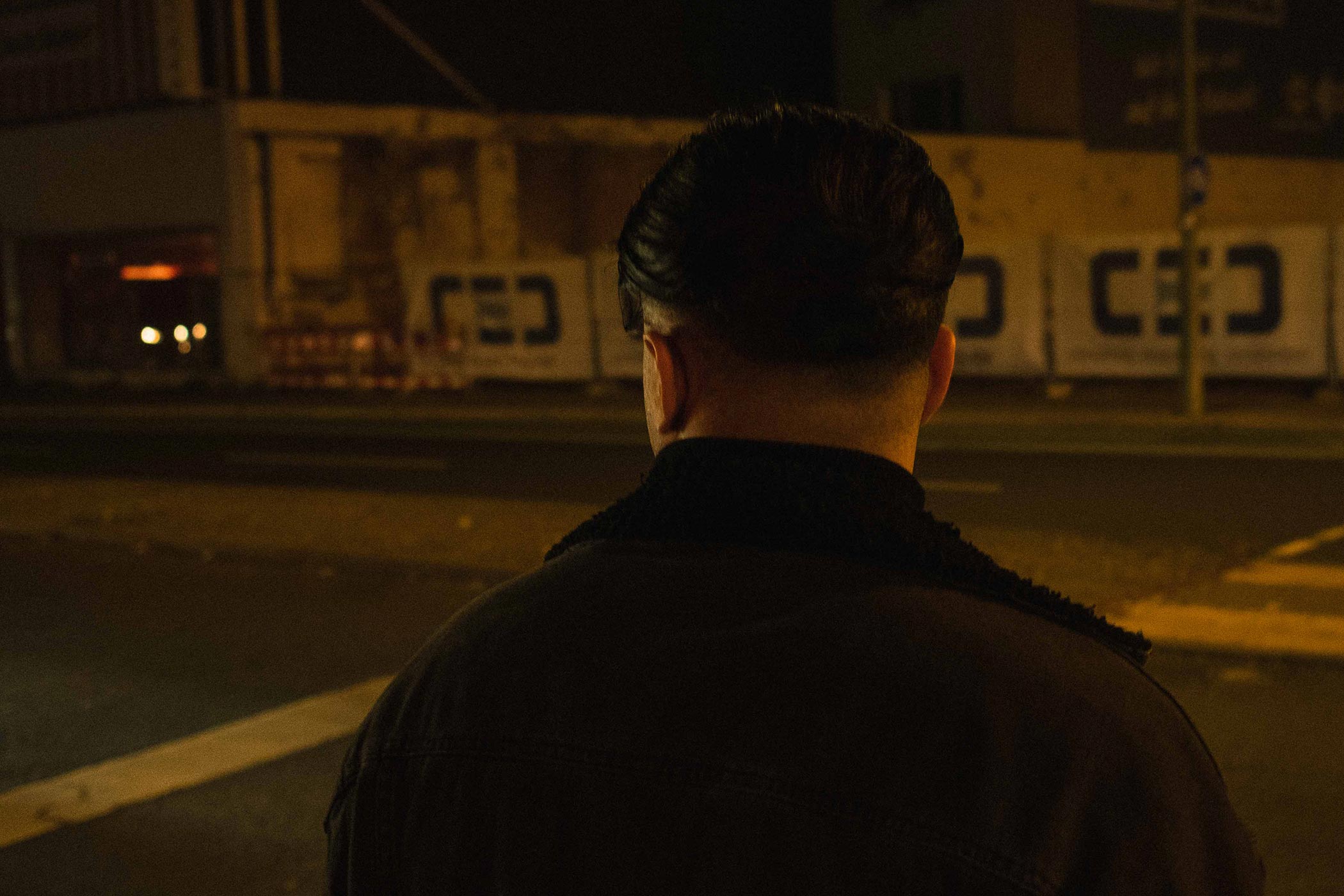
Doguhan:
Trotzdem darf man auch hier in Berlin das Problem von Rassismus und Antisemitismus nicht verharmlosen. Beides war immer da und ist es auch heute noch, auch bei Jugendlichen, egal aus welchem Stadtteil. Auch wenn wir vielleicht in unserem persönlichen Umfeld niemanden kennen, der so denkt, heißt das nicht, dass es das nicht gibt. Ich selbst würde daher nie behaupten, dass die Handlung unseres Films nicht nah an der Realität ist. Rassismus und Antisemitismus finden in unserer Geselschafft täglich statt. Ich wünschte, es wäre anders – aber ich befürchte, das wird nie aufhören. Es wird immer Menschen geben, die nur glauben, was sie glauben wollen, egal, was man ihnen erzählt.

»Ich habe mich mit einem jüdischen Freund getroffen, der selbst leider ähnliche Erfahrungen machen musste.«
MYP Magazine:
Euer Film basiert auf Arye Sharuz Shalicars Autobiografie „Ein nasser Hund ist besser als ein trockener Jude“, einer wahren Geschichte. Doguhan, wie hast Du dich auf die Rolle des jüdischen Jugendlichen Soheil vorbereitet? Hast Du mit Menschen sprechen können, die solche oder ähnliche Situationen am eigenen Leib erlebt haben und ihre Religion vor anderen verstecken mussten, um sich zu schützen?
Doguhan:
Ich habe mich vor Drehbeginn mit einem jüdischen Freund getroffen, der selbst leider ähnliche Erfahrungen machen musste. Wir haben viel über seine Zeit in der Schule geredet – darüber, wie er sich fühlte und mit der ganzen Situation umgegangen ist. Wir haben uns gegenseitig besser kennengelernt und waren beispielsweise auch gemeinsam in der Synagoge. Durch ihn habe ich viel über jüdische Traditionen gelernt, wofür ich ihm sehr dankbar bin.
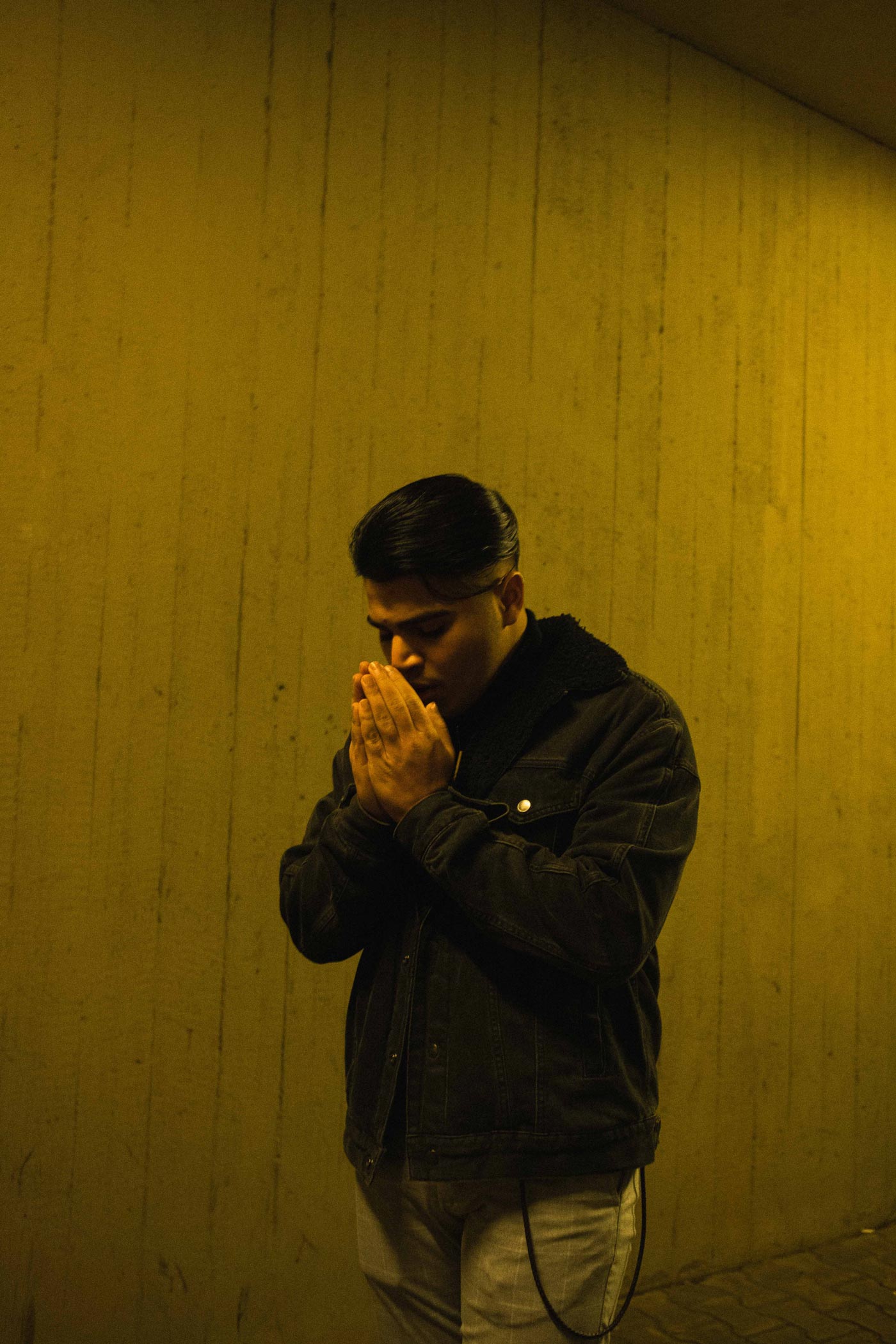
»Wenn ich in meinem Alltag Rassismus erlebe, ist der so gut wie immer unterschwellig.«
MYP Magazine:
Im Film wird nicht nur die offene und augenscheinliche Form der Diskriminierung gezeigt, sondern auch die unterschwellige. Ich denke da etwa and die Szene, in der Soheils Lehrer herausfindet, dass dieser Jude ist und schlagartig sein Verhalten ändert. Soheil entgegnet ihm: „Jetzt sind Sie nett. Als Sie dachten, dass ich Moslem bin, war ich das Arschloch für Sie. Das ist Rassismus.“ Wie bewertet Ihr persönlich diese Szene? Ist der im Alltag stattfindende Rassismus eher ein offensichtlicher oder ein unterschwelliger?
Doguhan:
Wenn ich in meinem Alltag Rassismus erlebe, ist der so gut wie immer unterschwellig…
Mohammad:
Absolut! Der Hass kommt fast immer schleichend und passiert ganz nebenbei – wie ein Gift, das Dir langsam eingeträufelt wird. Viele verpacken diskriminierende Worte auch in doofe Witze, weil sie glauben, das würde es abschwächen. „War ironisch gemeint“, heißt es dann oft. Aber das tut nicht weniger weh.
Doguhan:
Was auch total nervt, ist die Frage: „Woher kommst Du?“
Derya (unterbricht lachend):
Ja, Klassiker!
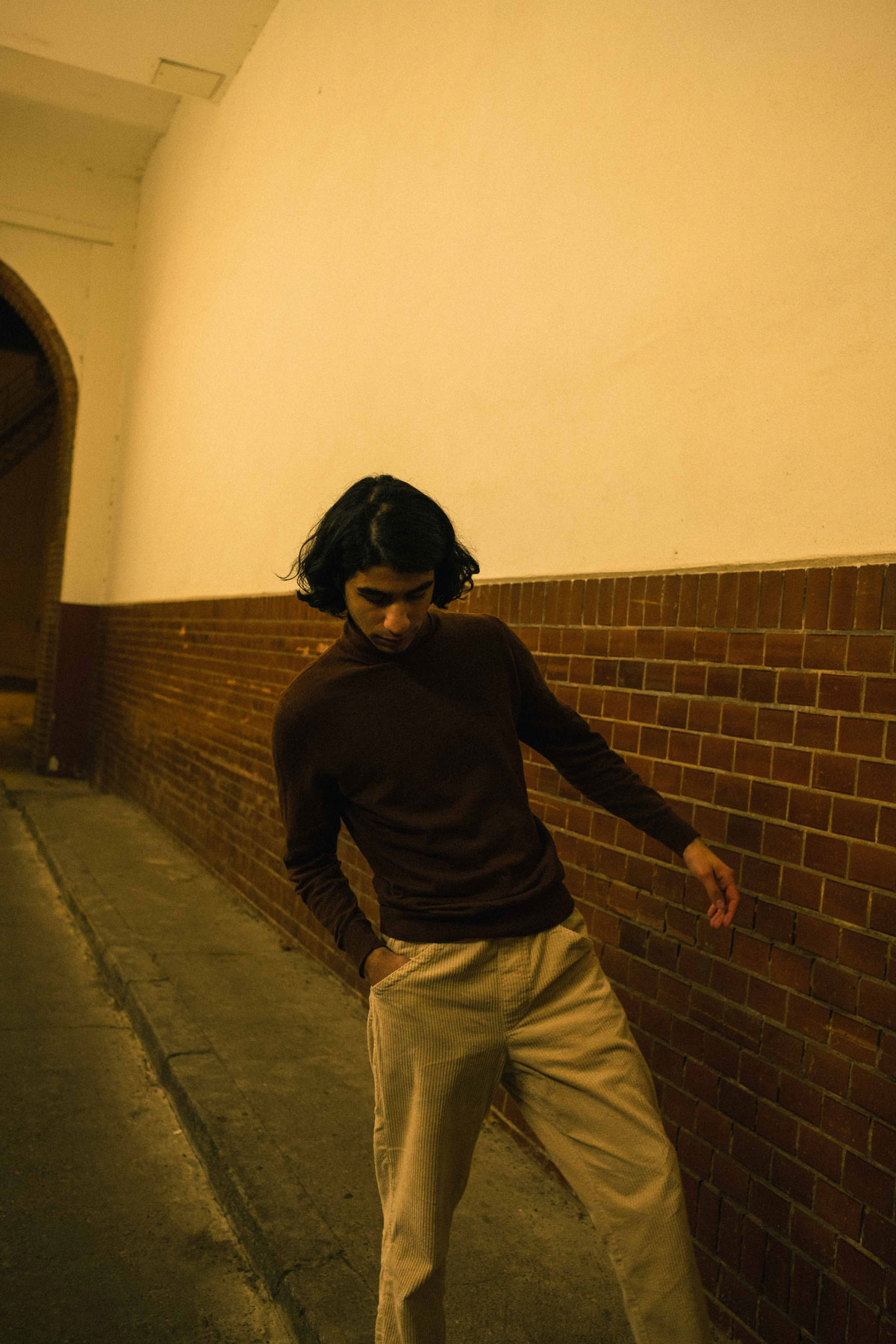
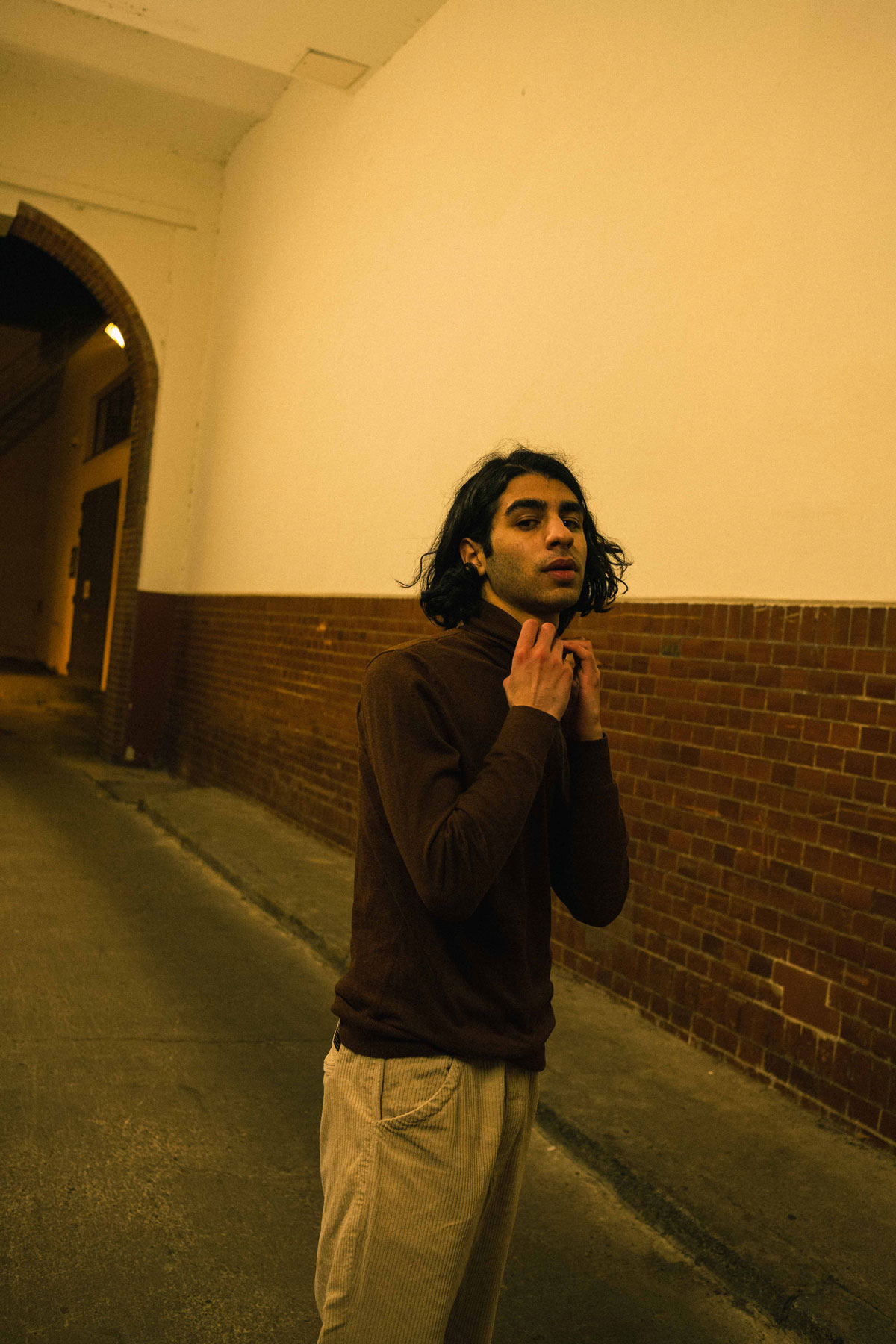
Doguhan:
Ich kann da gar nichts anderes antworten als: „Ich bin Deutscher.“ Aber das reicht scheinbar nicht. Die Fragerei geht weiter: „Nein, woher kommst Du wirklich?“ „Aus Spandau.“ „Nein, woher Deine Eltern kommen.“ … Diese Frage-Antwort-Spirale kennt man ja mittlerweile. Ich kann nur leider nichts anderes sagen. Ich bin nun mal hier geboren, ich bin hier aufgewachsen, ich habe hier meine Familie, ich habe hier meine Freunde, ich arbeite hier. Ich meine, wann ist man denn deutsch genug? Wann bin ich für Dich deutsch genug? Das kann sich doch nicht immer noch über blonde Haare und blaue Augen definieren! Deutschland ist meine Heimat. War es immer, wird es immer sein. Aber solange es Menschen gibt, die mir diese blöden Fragen stellen, werde ich mich in meiner Heimat nie wirklich wohlfühlen. Und das ist für mich ein Widerspruch in sich, denn genau das sollte Heimat leisten.
Mohammad:
Mich nervt die Frage auch. Ich bin zwar nicht hier geboren, sondern im Libanon, von wo meine Familie im Jahr 2007 vor dem Krieg geflohen ist. Aber damals war ich ein kleines Kind. Die meiste Zeit meines Lebens habe ich in Deutschland verbracht und fühle mich dementsprechend auch wie ein Deutscher. Ich kann nichts dafür, dass es Leute gibt, die immer noch nicht gecheckt haben, dass das Deutschland von heute ein multikulturelles ist und hier Menschen mit allen Hautfarben zuhause sind. Das gehört für mich zum Deutschsein dazu. Was unterscheidet uns denn?
Doguhan:
Diversität heißt für mich zu akzeptieren, dass Vielfalt die Grundlage allen Lebens ist. Niemand hat sich seine Nationalität, sein Aussehen, seinen Geburtsort oder seinen Namen ausgesucht. Wir leben hier einfach nur zusammen. Und wenn ich irgendwann mal gefragt werden sollte, wo ich begraben werden will, sage ich: in Spandau. Wo sonst?
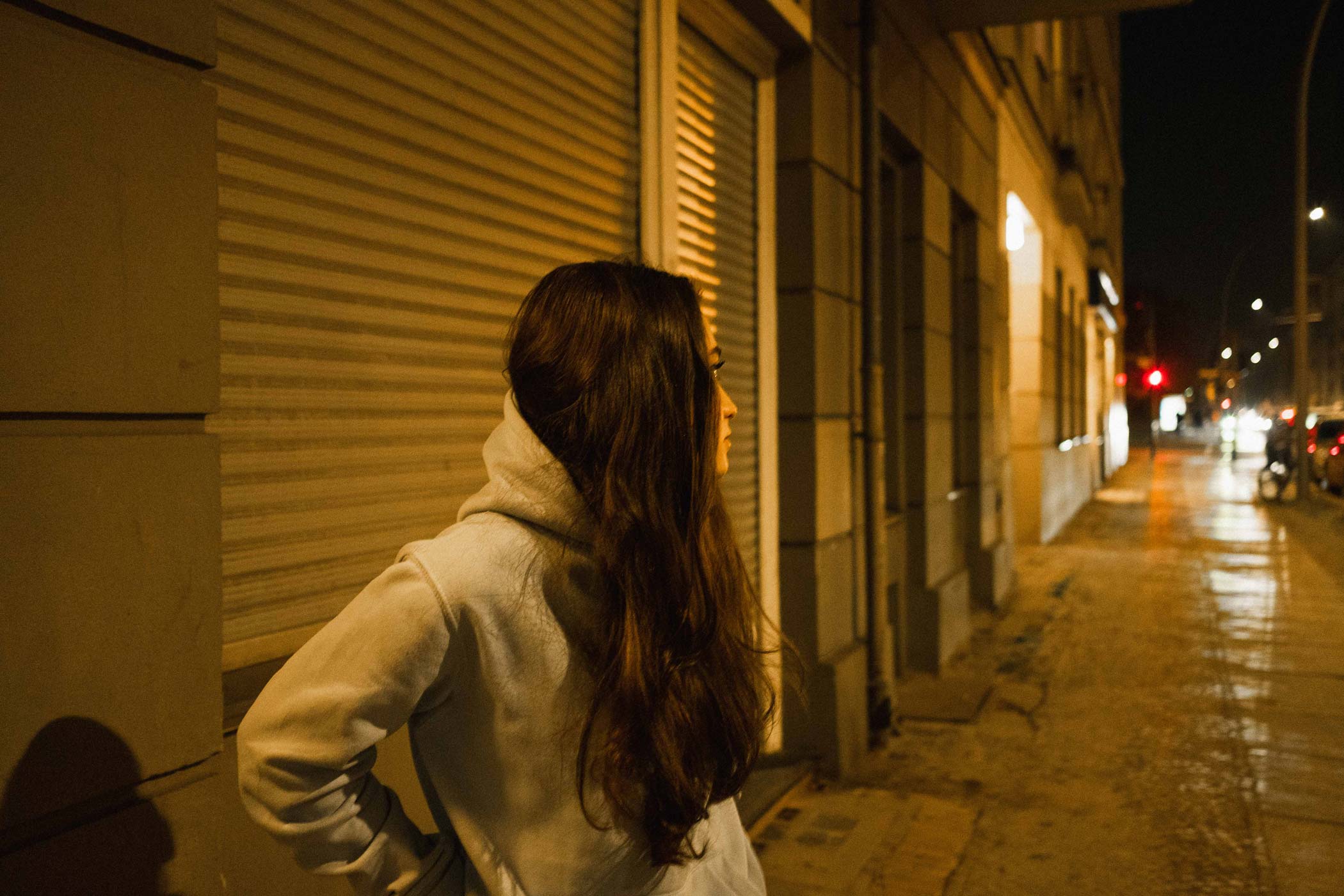
Hinweis: Alle an der Produktion beteiligten Personen wurden unmittelbar vor dem Shooting negativ auf SARS-CoV-19 getestet.
#einnasserhund #doguhankabadayi #mohammadeliraqui #deryadilber #jonasmeyer #manuelpuhl #mypmagazine
Mehr von und über Doguhan Kabadayi:
Mehr von und über Mohammad Eliraqui:
ankebalzer.de/mohammad-eliraqui
instagram.com/mohammad.eliraqui
Mehr von und über Derya Dilber:
Interview & Text:
Fotografie: Manuel Puhl
Jade Bird
Interview — Jade Bird
Heart On Her Sleeves
With »Different Kinds of Light,« singer-songwriter Jade Bird has just released her second studio album. The record that was produced in Nashville, Tennessee, turns out to be truly charming, deep, and very energetic—as is Jade herself. We talked with the 23-year-old about powerful women, disappearing parental figures, and keeping chaos in her life.
3. September 2021 — Interview & text: Katharina Weiß, Photography: Manuel Puhl, Editing: Ben Overton
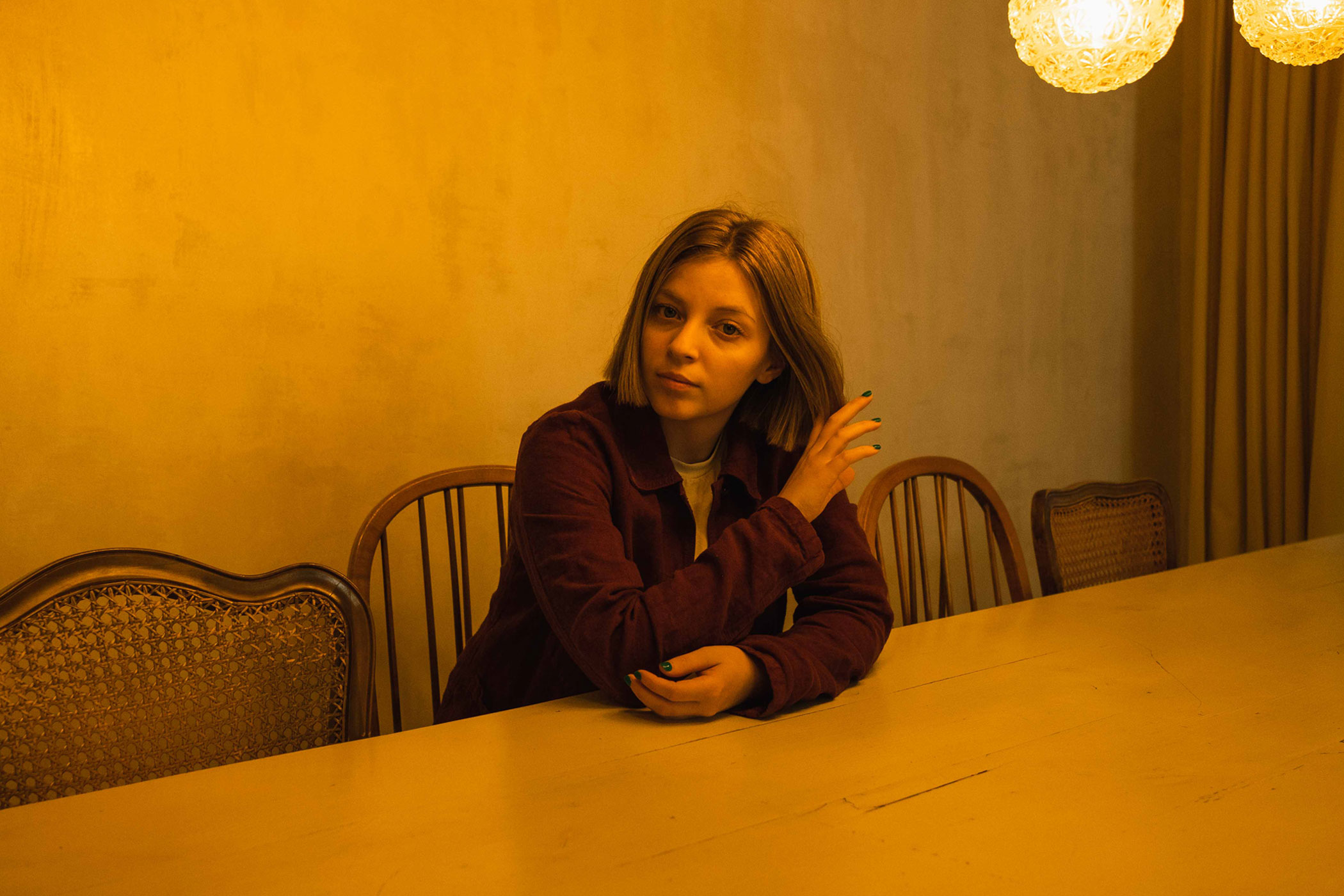
Jade Bird might have the name of a rather delicate animal, but she has the roar of a lion when it comes to the storytelling that defines her folksy Americana sound. Similar contradictions apply to her age: Jade Bird was born in 1997 in the north of England, but her vibe offers a kinship to vintage legends like Janis Joplin, Gillian Welch, Sheryl Crow, or even Dolly Parton, with whom she already performed.
There is a certain fearlessness about the way she walks and talks on stage, a place that she hopes to return to again soon. While being unable to tour, she produced her second album in Nashville, which sounds as cool as the record turns out to be. “Different Kinds of Light” is truly charming and deep in a wholesome way, embraced by an energetic musical vibe.
When we met her in Berlin—one of her first trips after the outbreak of the pandemic—her personality reflects the same feelings: She feels as warm and witty as one’s favorite episode of Gilmore Girls, just with a good portion of 2021’s edginess thrown into it.
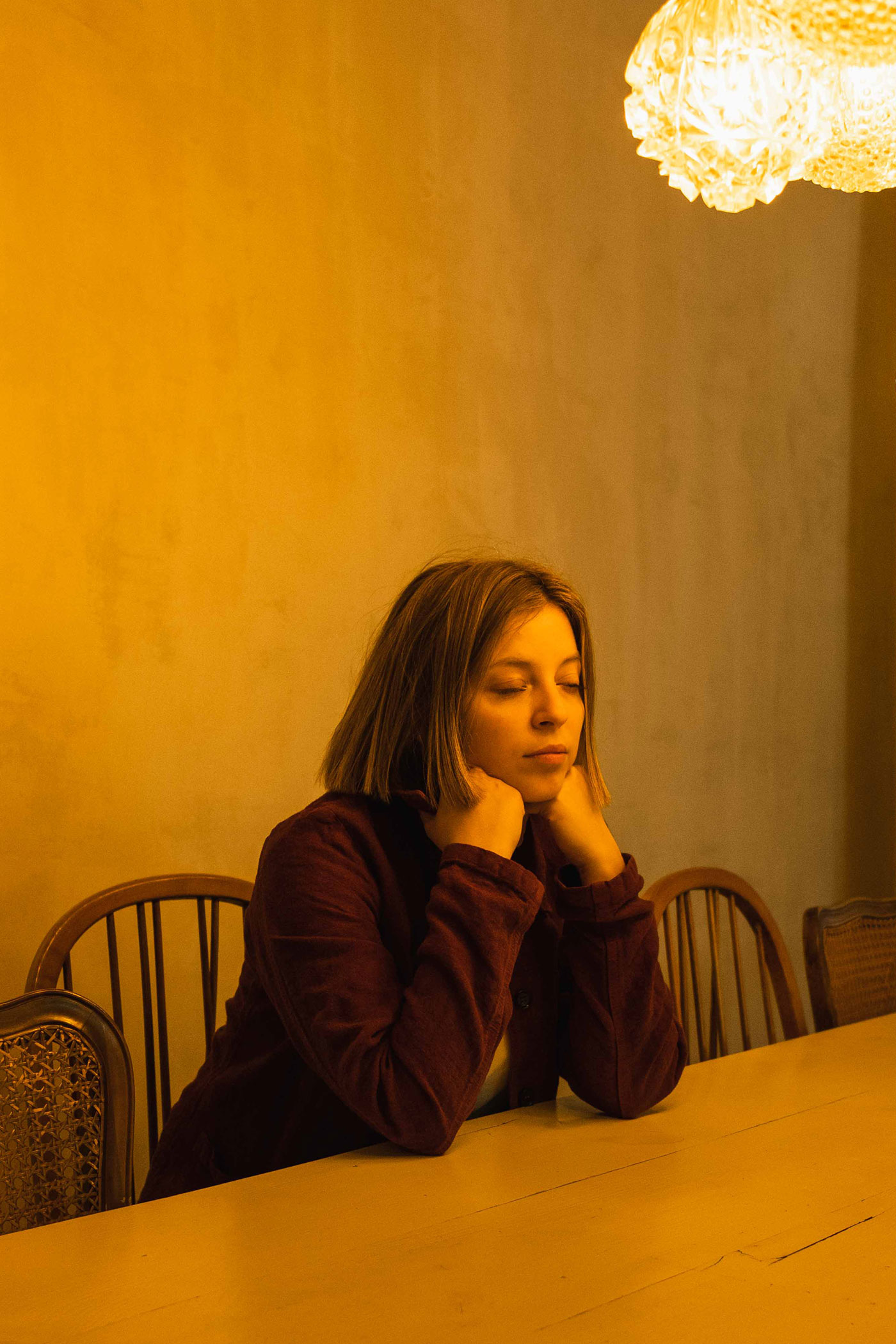
»I wanted to keep the chaos that I got used to when I was a child to stay with me.«
MYP Magazine:
You come from a military family and your music style has a lot of counter-culture influences. How are the two perspectives—the discipline and the uniformed lifestyle versus the free-spirited chaos—combined in your character?
Jade:
Bloody hell, quite a start with that question! I think the discipline shows in my craft and the love for my art. I have been working on songwriting since I was very young and there was a lot of patience involved. On the other hand, the chaos was genuinely my personal life. It was just absolutely mad, up until the age of 19 when I met my partner. I think I wanted to keep the chaos that I got used to when I was a child to stay with me. To some extent, it had become a strange cornerstone of my identity. That inspired my writing on the first songs a lot.
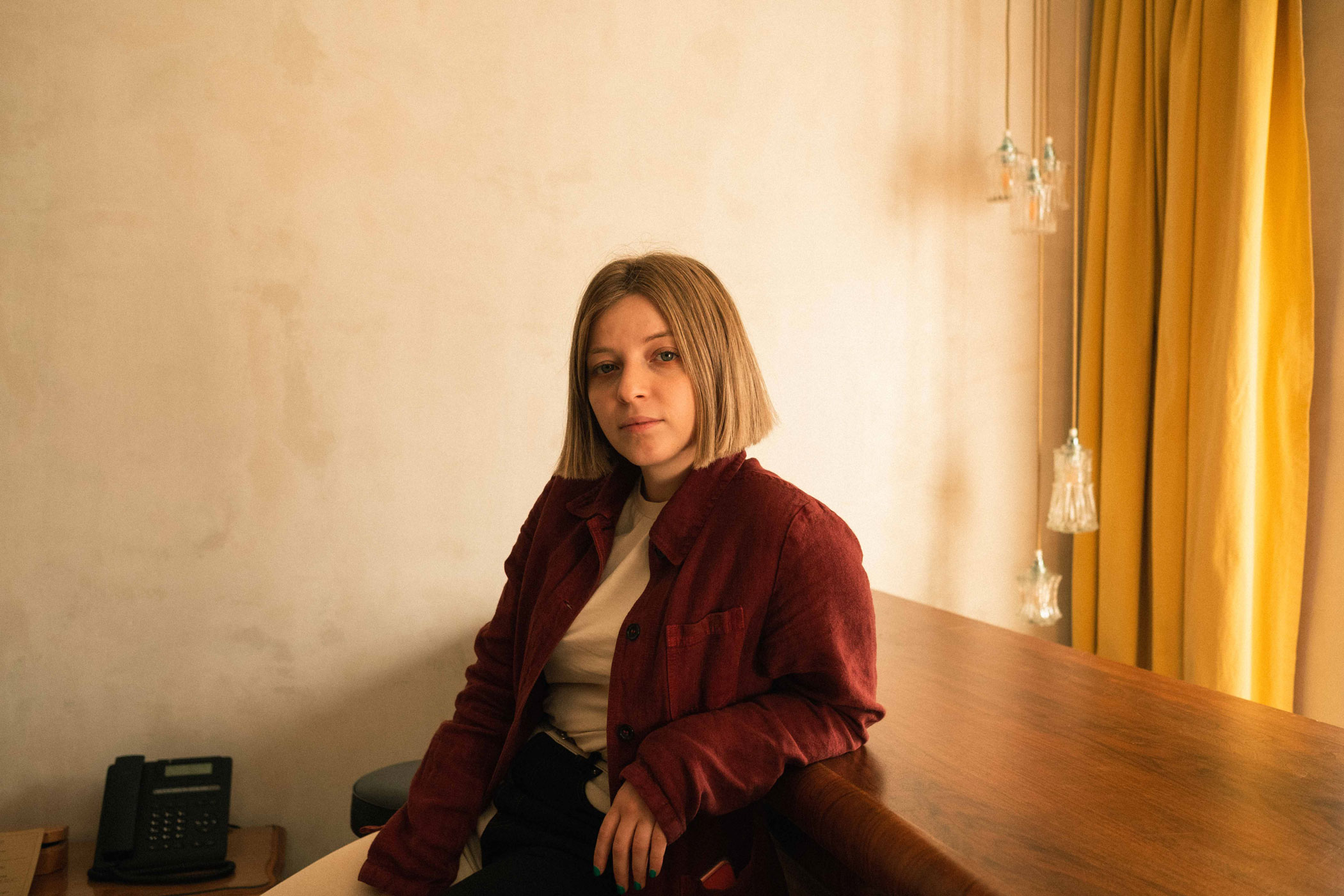
»I feel so at home with all these powerful women changing the structures of the music industry.«
MYP Magazine:
You’ve lived many years in London, a city perceived to be top-notch cool. Yet you have decided to settle in Austin, which is considered to be the most hipster of all of Texas cities—but it is still in Texas. Please take some of our German prejudices about the oil state away and tell us: What thrills you about the southern state?
Jade:
I think I have been very welcomed in a community of songwriters there. Especially by people who were breaking boxes. You think about Brandi Carlile being a gay woman and leading the country scene in the moment—you cannot break more boxes. Also, Sheryl Crow was one of a kind at the time. I feel so at home with all these powerful women changing the structures of the music industry. And I want to tell stories. I feel like songwriting is not at the top of everyone’s mind at the moment. There is a lot of soundscape stuff, but I am rather traditional in the aspect that I really like lyrics.
MYP Magazine:
You were quoted with the following statement about your inspiration: “I’ve written about fictional characters, about myself and people who don’t exist or at least only exist in my mind, memory and imagination.” Are there imaginary characters that follow you around like imaginary childhood friends?
Jade:
No, I think that would make me mental. But there are lingering concepts. For example: The new song “1994” is based on a Bonnie and Clyde theme. It’s this really crazy scenario where I am Bonnie and another person is Clyde, trying to make me rob a bank with him. But the subtext, the punchline is about a middle-aged couple and the guy is going through a midlife crisis, while the woman is trying to carry this relationship.
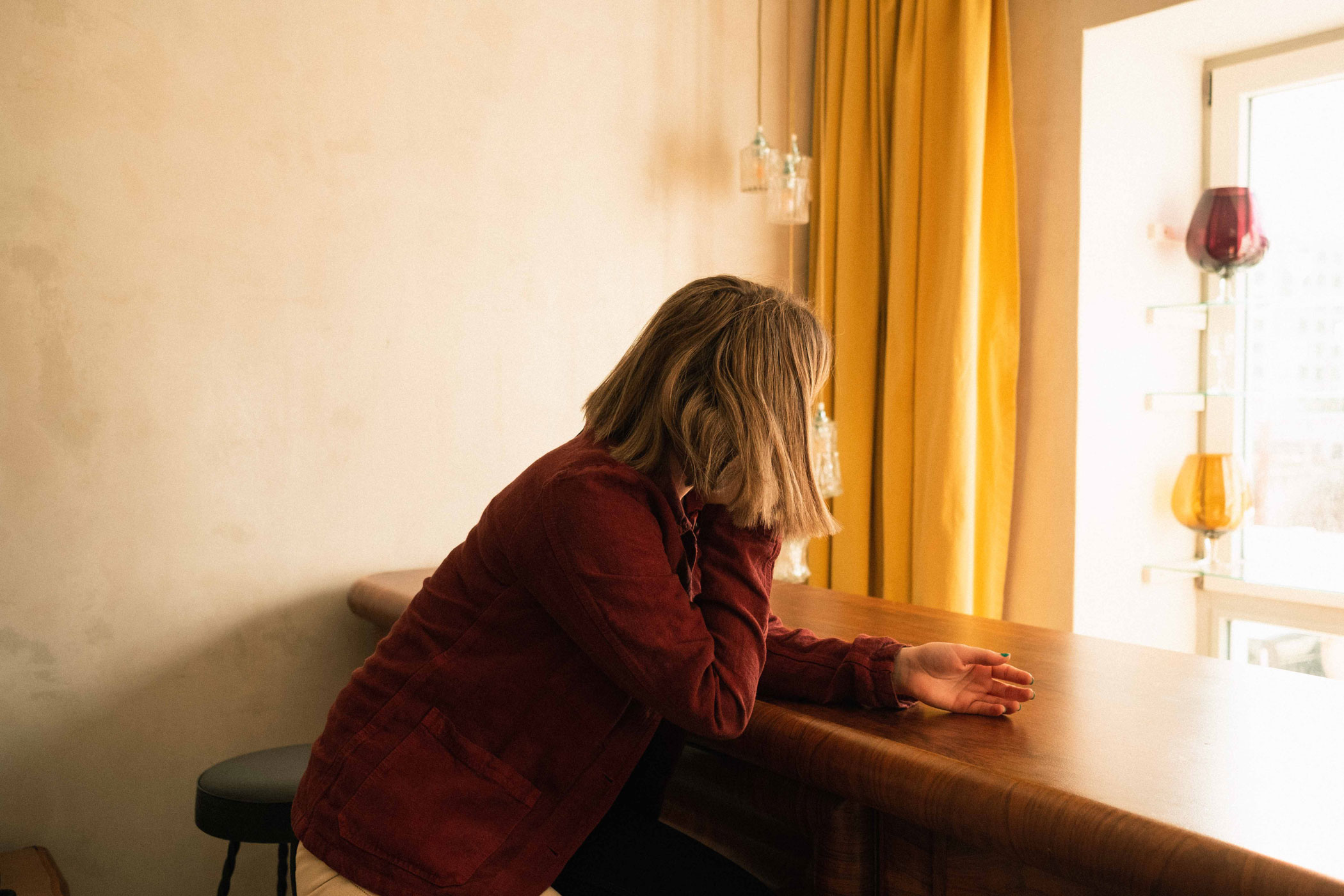
»I did not witness any relationship in my life evolving well, ever.«
MYP Magazine:
An often-quoted fun fact about your art is that, in your debut album, you released a song called “Love Has All Been Done Before.” In this song you look at your mum’s and your grandma’s divorces and confidently conclude that any relationship of yours would also end up doomed. Yet you seem to be pretty happy with your guitarist who you’ve been with over three years now. How did it feel to write songs about allowing yourself to be loved instead of heartbroken?
Jade:
Quite nice. I am slowly coming out of a pretty bad mindset, which I don’t think is blamable. I did not witness any relationship in my life evolving well, ever. And that’s a heavy weight you put on a new relationship with someone you’re really in love with. It has taken a lot of change on my and his behalf to make it matchable. But I feel like a better person for it and I think you hear the joy in my songs. A lot of the new songs feel like beaming or smiling. That was very refreshing because I used to write very cynical stuff. Maybe I can motivate someone else out of that darkness and make them see this little beam of light and life.
MYP Magazine:
What’s the story behind the song “Honeymoon?” It sounds happy, but there seems to be a twist in the subtext of the lyrics.
Jade:
It is a vignette of my mother’s and my grandmother’s relationships where I observed them always trying hard to please this person who just was a bit of a waste of time. There is no polite way of saying this. I was living with them for so long in a very tiny house, while watching them bend over backwards to make every day brilliant and amazing while this guy was giving nothing. It’s a feisty track.
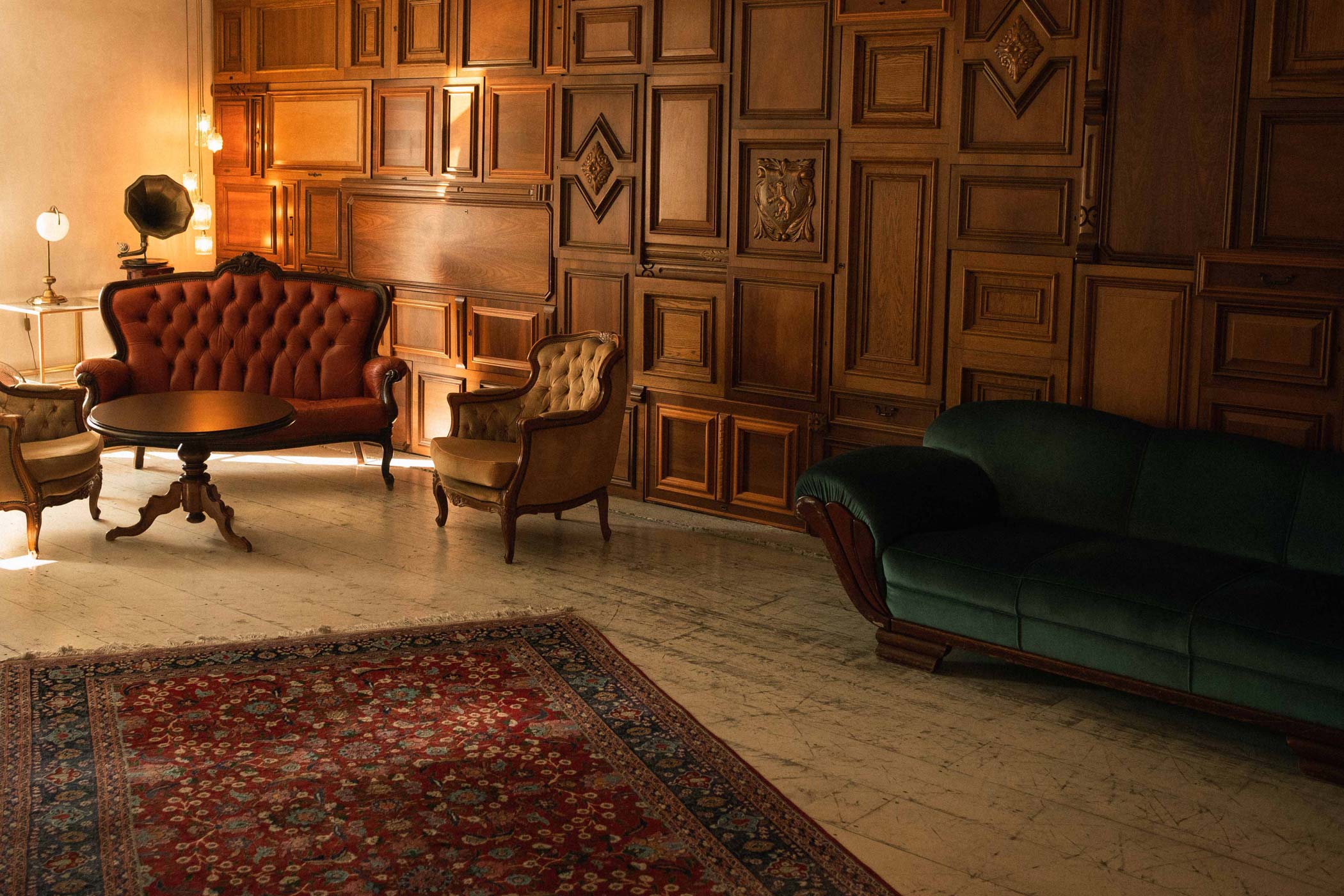
»I was singing myself out of a very dark situation.«
MYP Magazine:
It seems that you’re a person that’s generally interested in other humans. In what kind of situations do you start a conversation with strangers? And what kind of questions are the most intriguing to you?
Jade:
“Do you have brothers and sisters?” sounds boring, but you can so easily start a conversation. And indulging in the topic of being the oldest child—or a middle child like my partner, or an only child like me—you can find out so much about a person by starting off with that question.
MYP Magazine:
Due to its kindness, the title song “Different Kinds of Light” reminds me of a lullaby. Were you singing someone’s sorrow to sleep in that song?
Jade:
I think I was singing myself out of a very dark situation, where I felt I could not thrive anymore. It was a moment when I was a bit overstimulated with touring and so I wrote that really dark love letter to touring, when I sat around in the backstage.

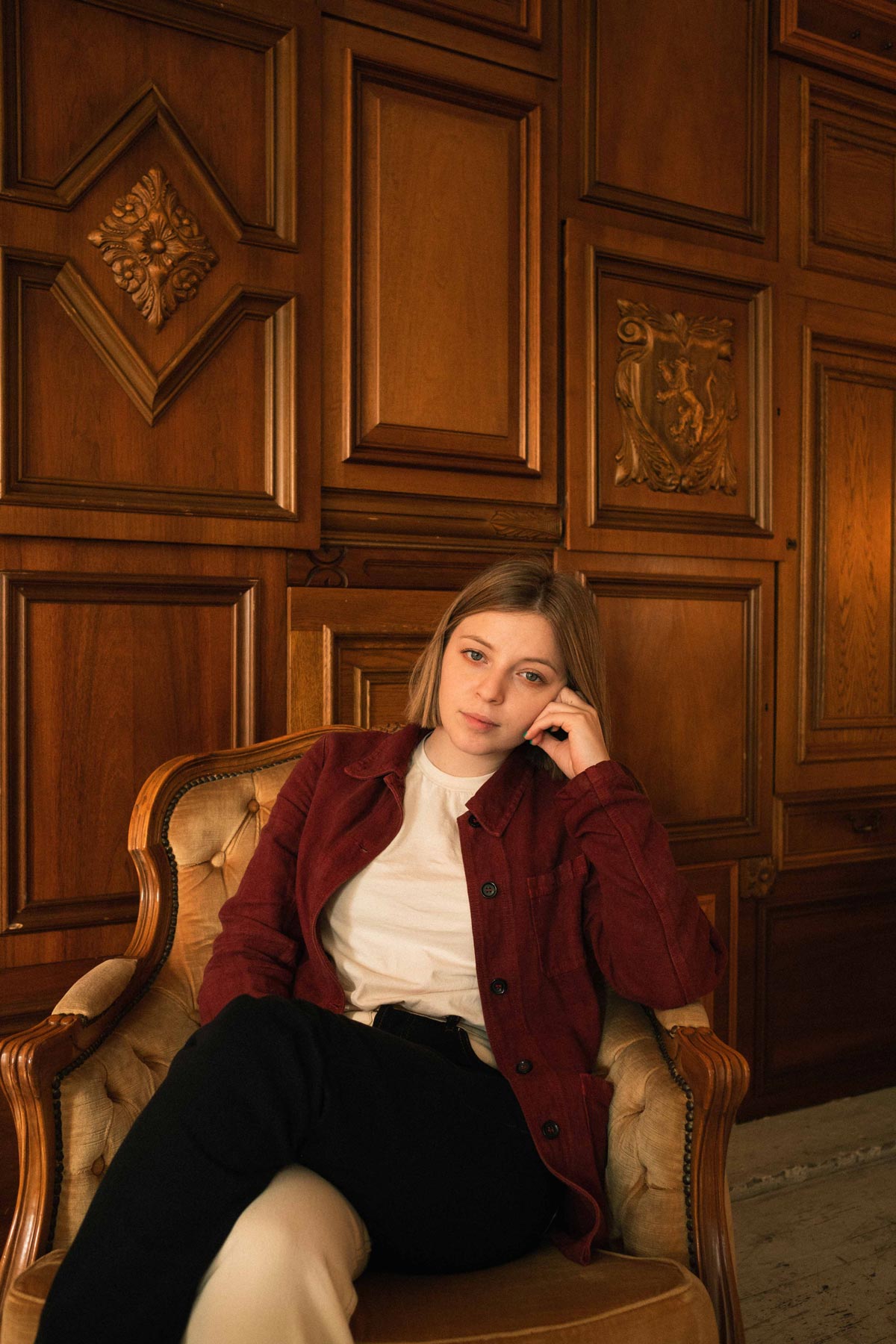
»I would never forgive myself if I had to cancel a show because of a hangover.«
MYP Magazine:
Was the work too much or the lifestyle?
Jade:
I don’t party, this kind of says it all. I just can’t, because my work schedule is too much. I would never forgive myself if I had to cancel a show because of a hangover. But I go to New Orleans very occasionally and there I allow myself a night full of drinks and madness.
MYP Magazine:
One striking thing about you is the warm humor of your lyrics, one great example is the song “Houdini.” Am I right to think it is about dealing with people disappearing from your life? How long did it take to write about these things with this subtle humor?
Jade:
I have been writing about that topic since I am 14 years old: parental figures just disappearing whenever the fuck they want, without my control. But I could never write about it in such a concise metaphor. But when “Houdini” came to my mind, I was so cathartically thrilled by that song. I thought: Finally, I fucking got it! That’s exactly how these emotions should be expressed, that is the perfect picture!
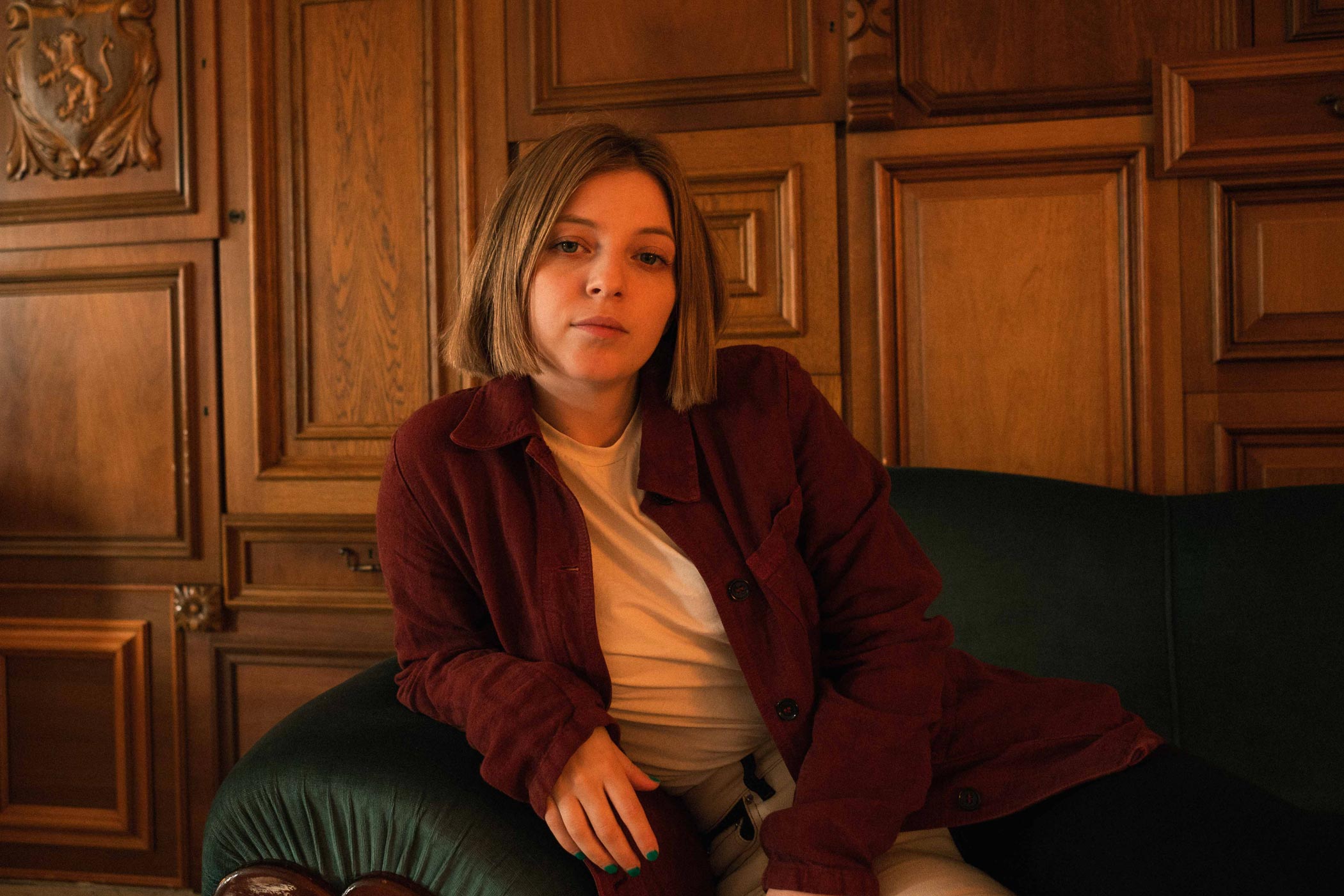
Note: All participants in the production were immediately previously tested for SARS-CoV-19.
#jadebird #differentkindsoflight #katharinaweiss #manuelpuhl #mypmagazine
More about Jade Bird:
Interview & text by Katharina Weiß:
Photography by Manuel Puhl:
Editing by Benjamin Overton:
